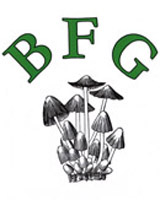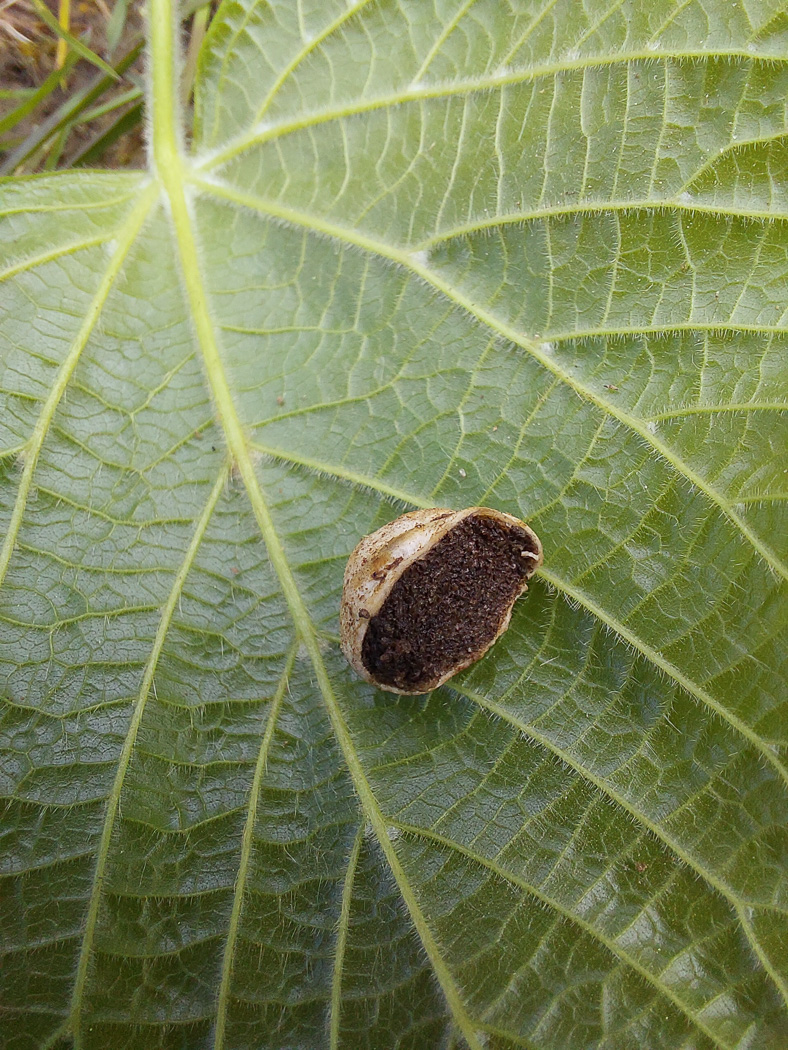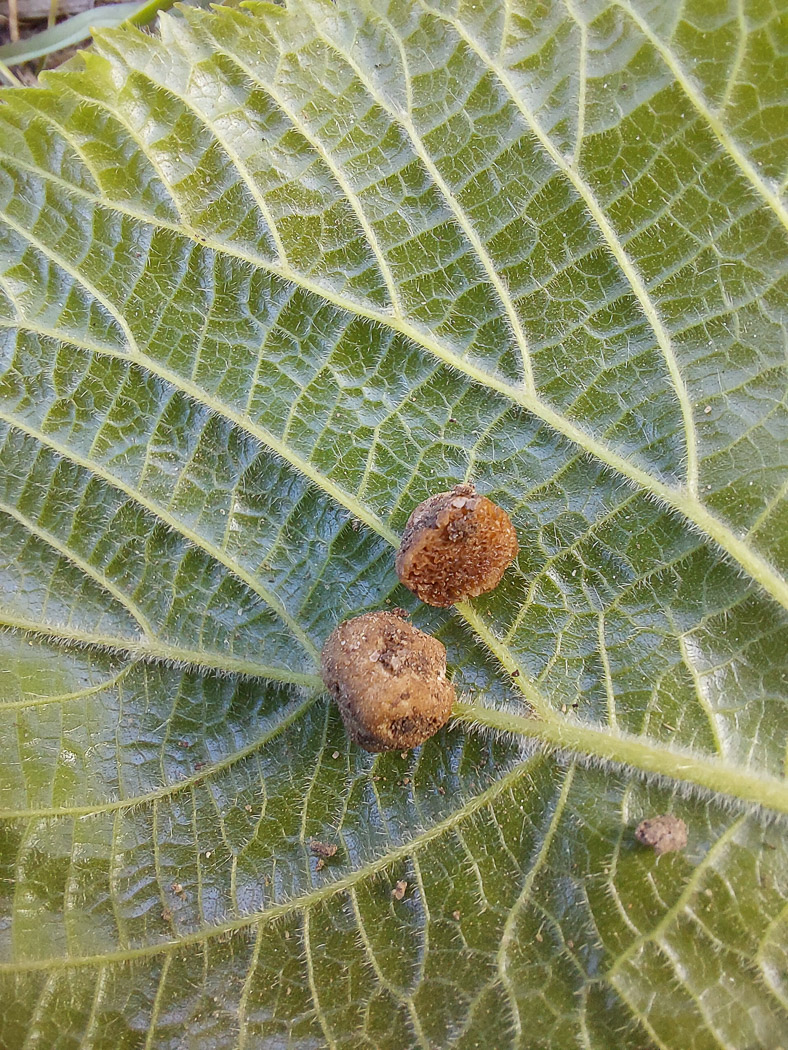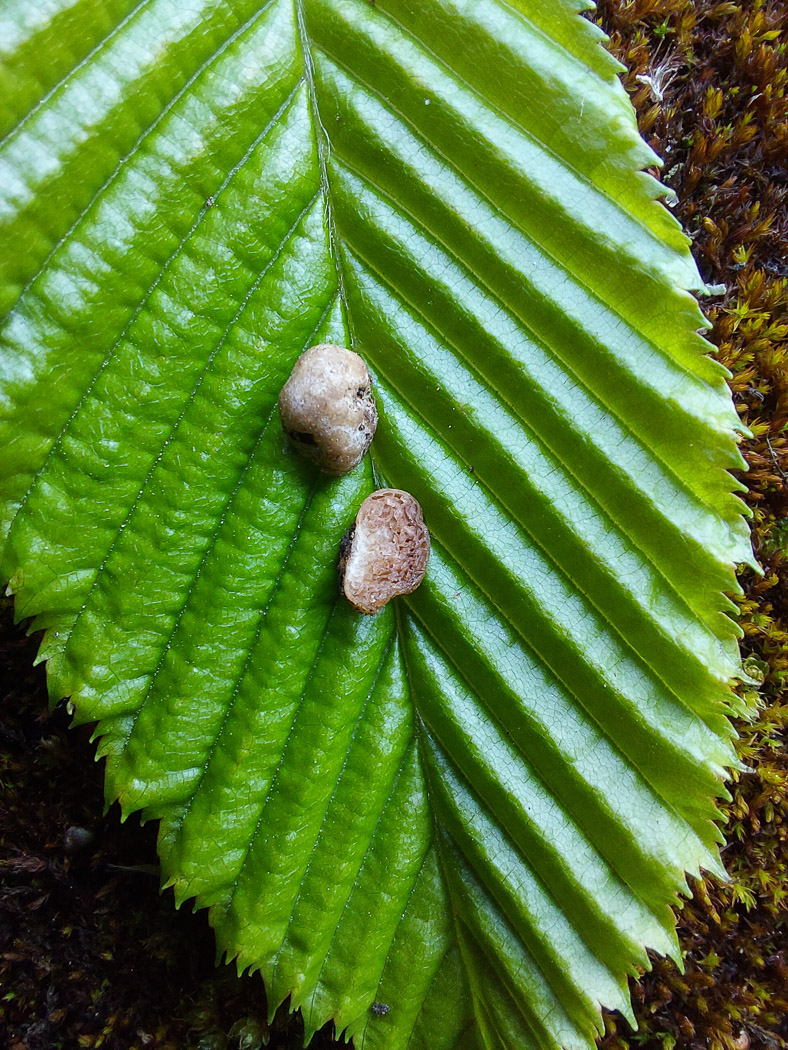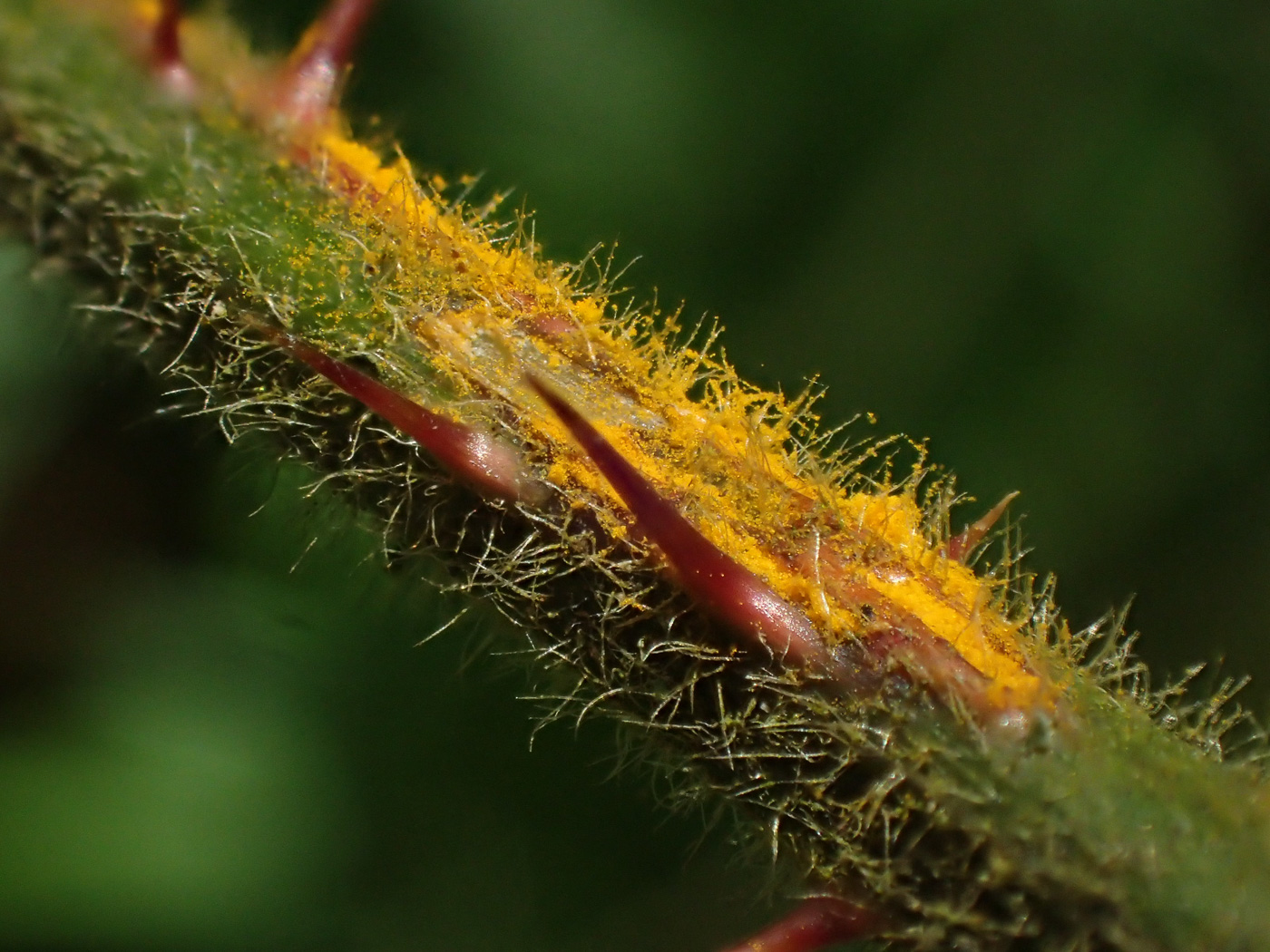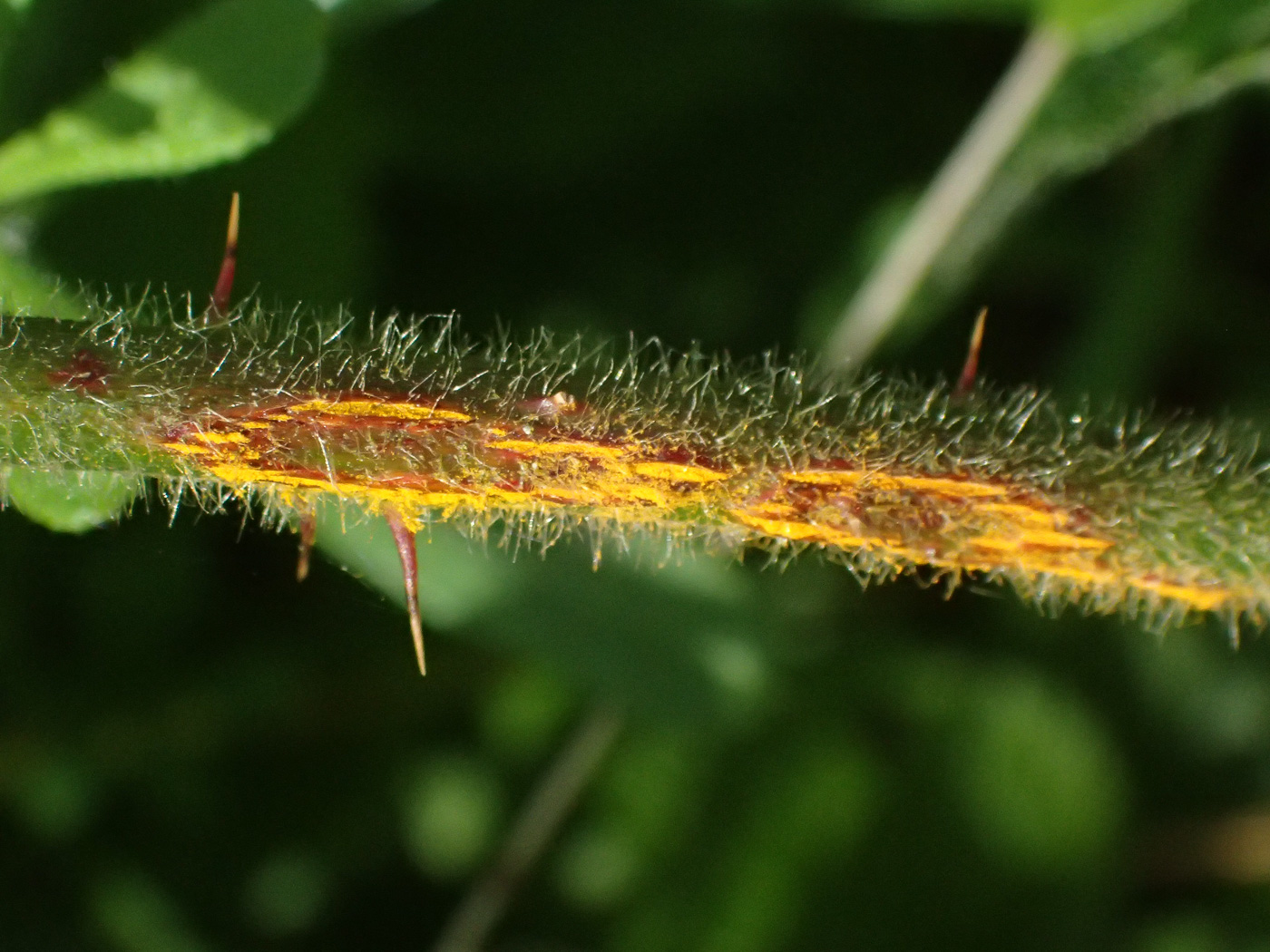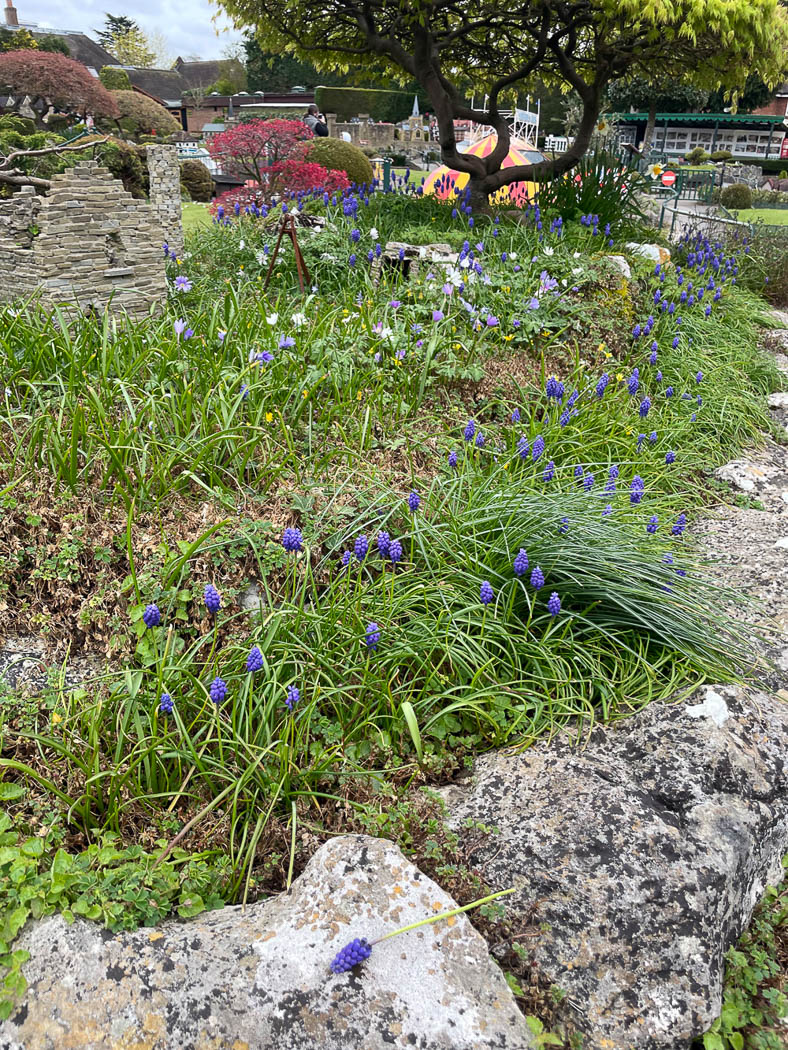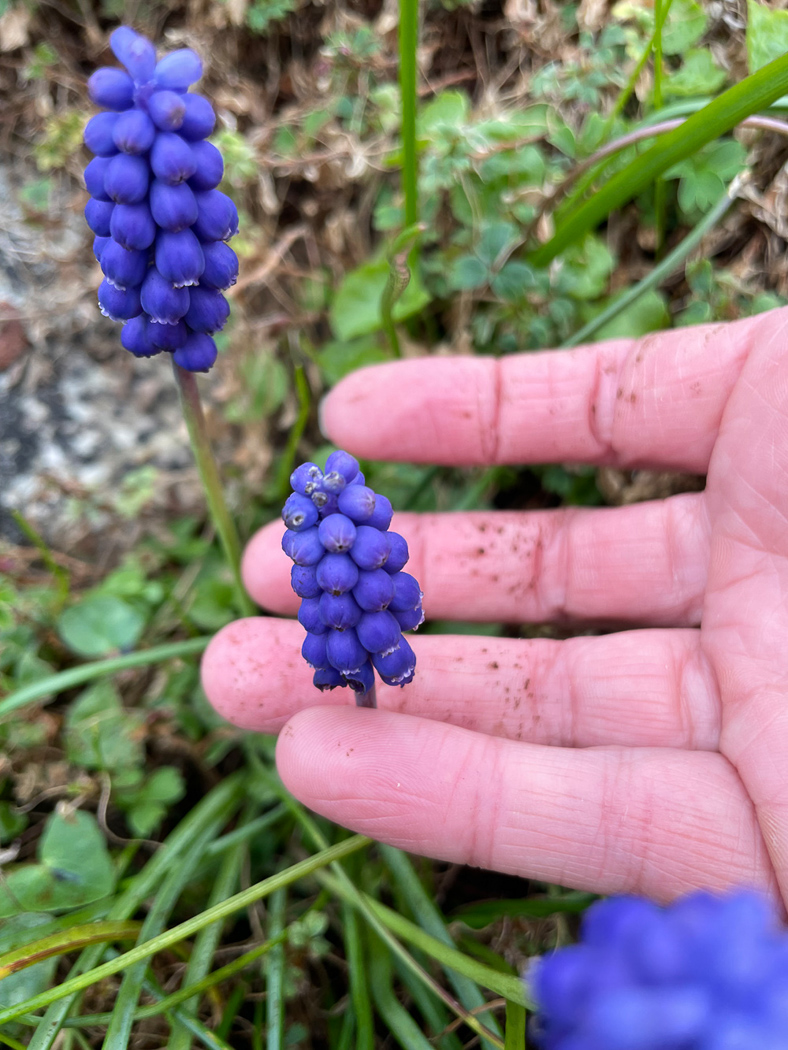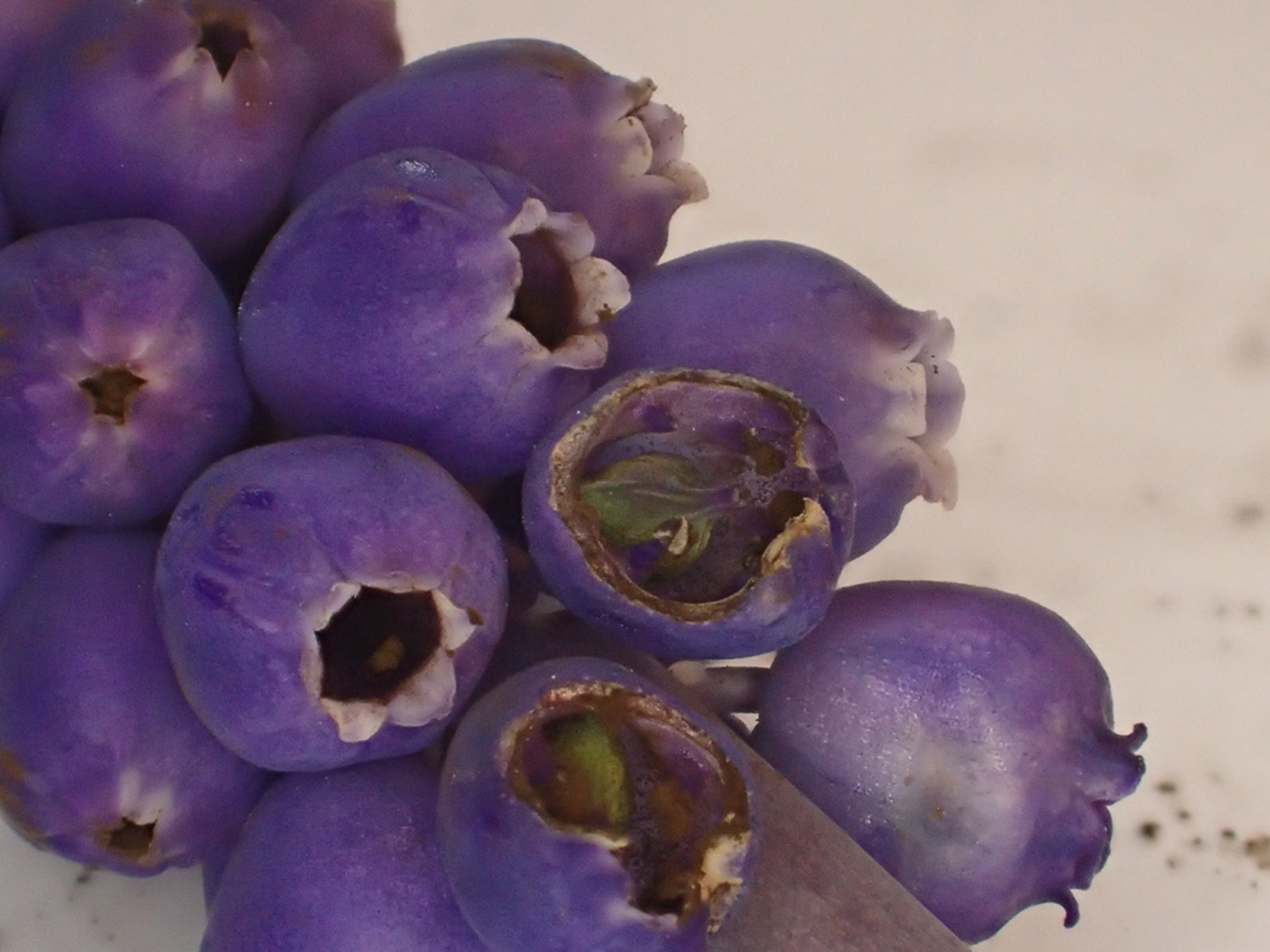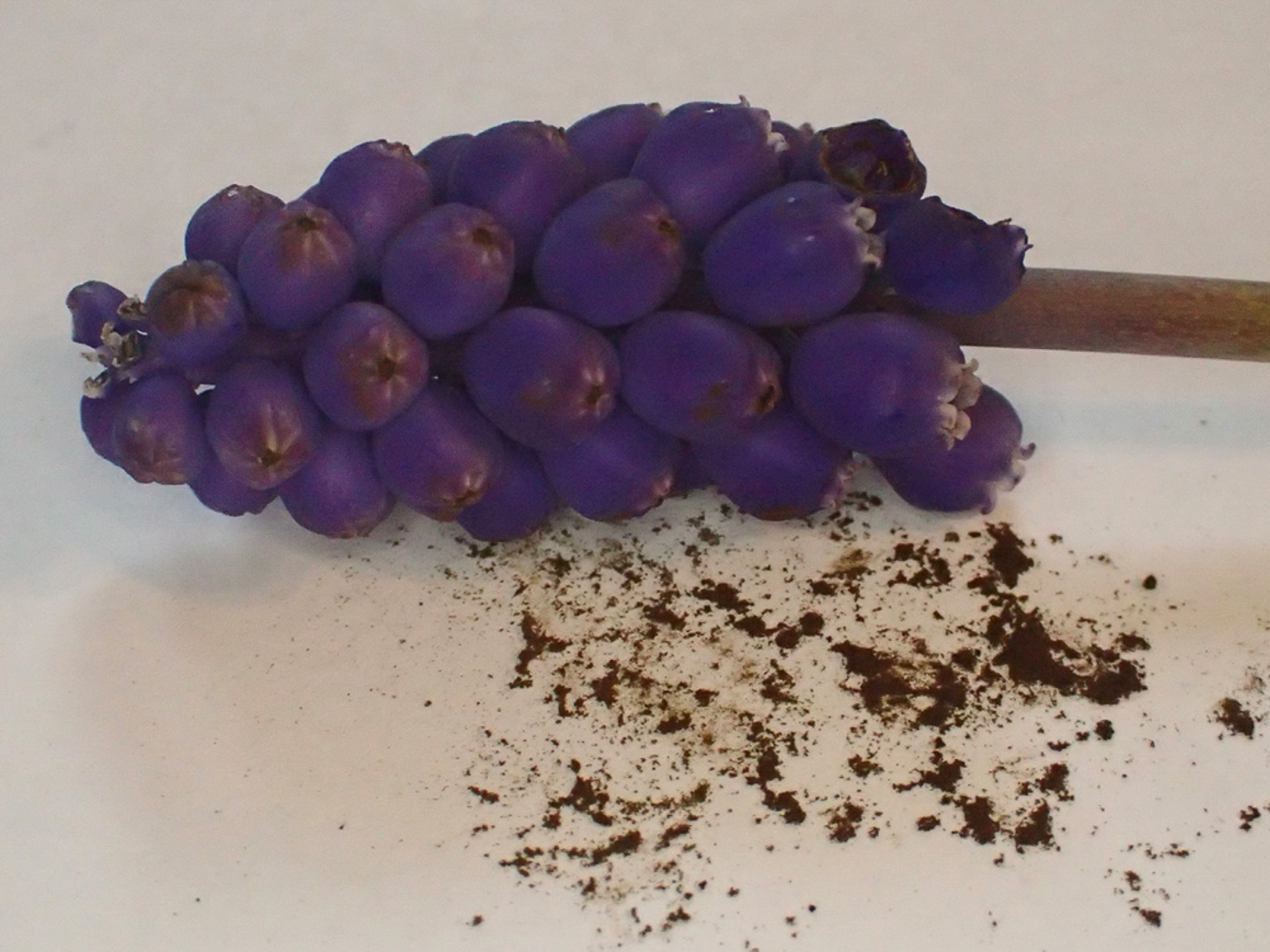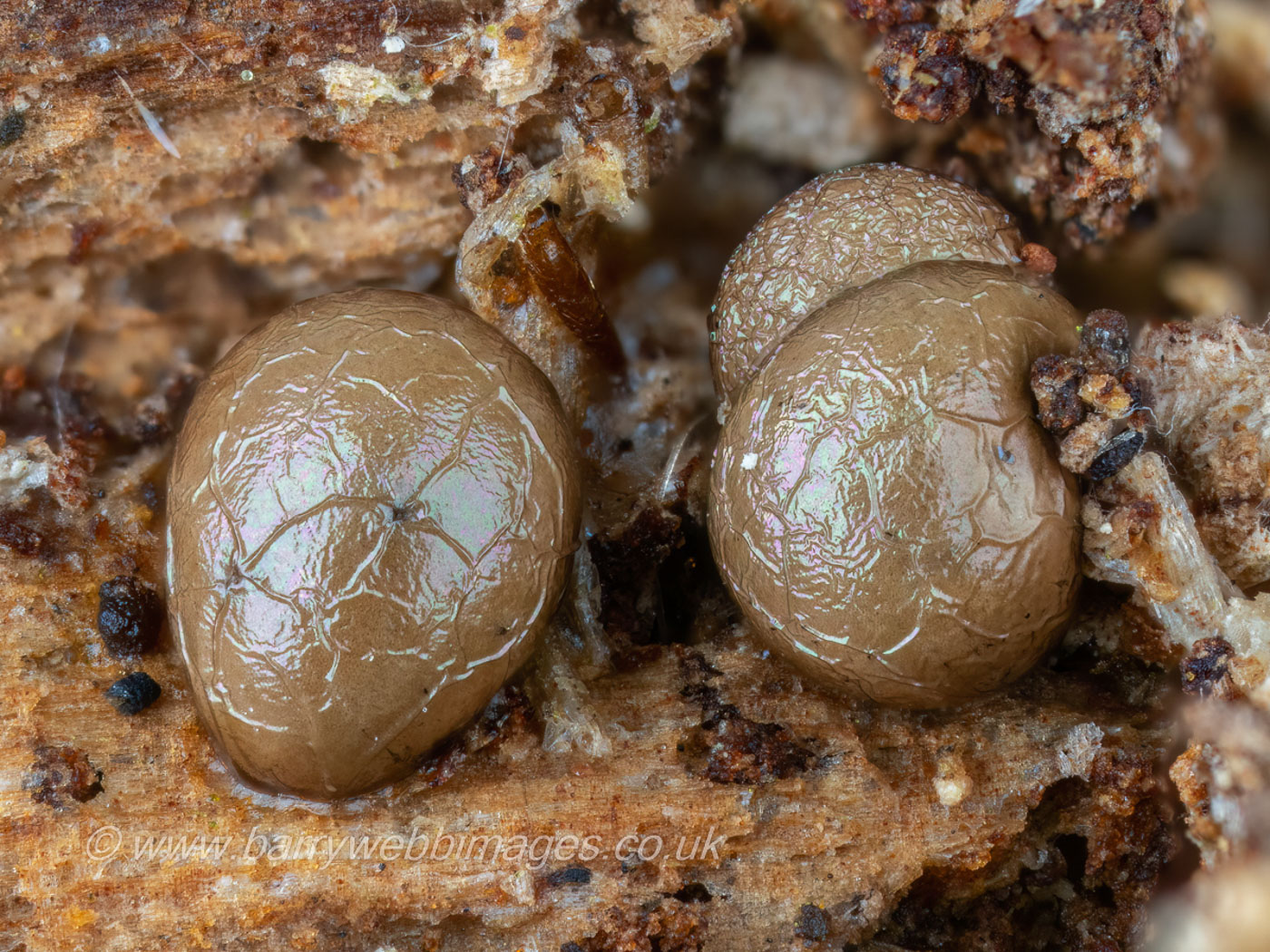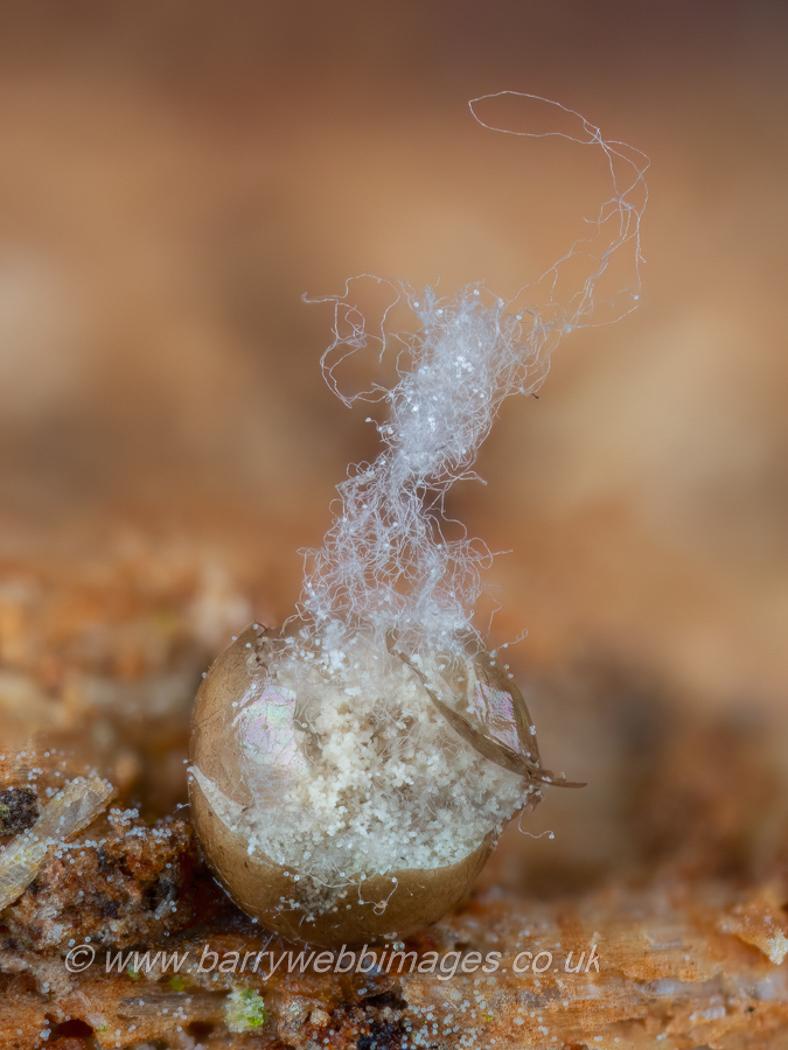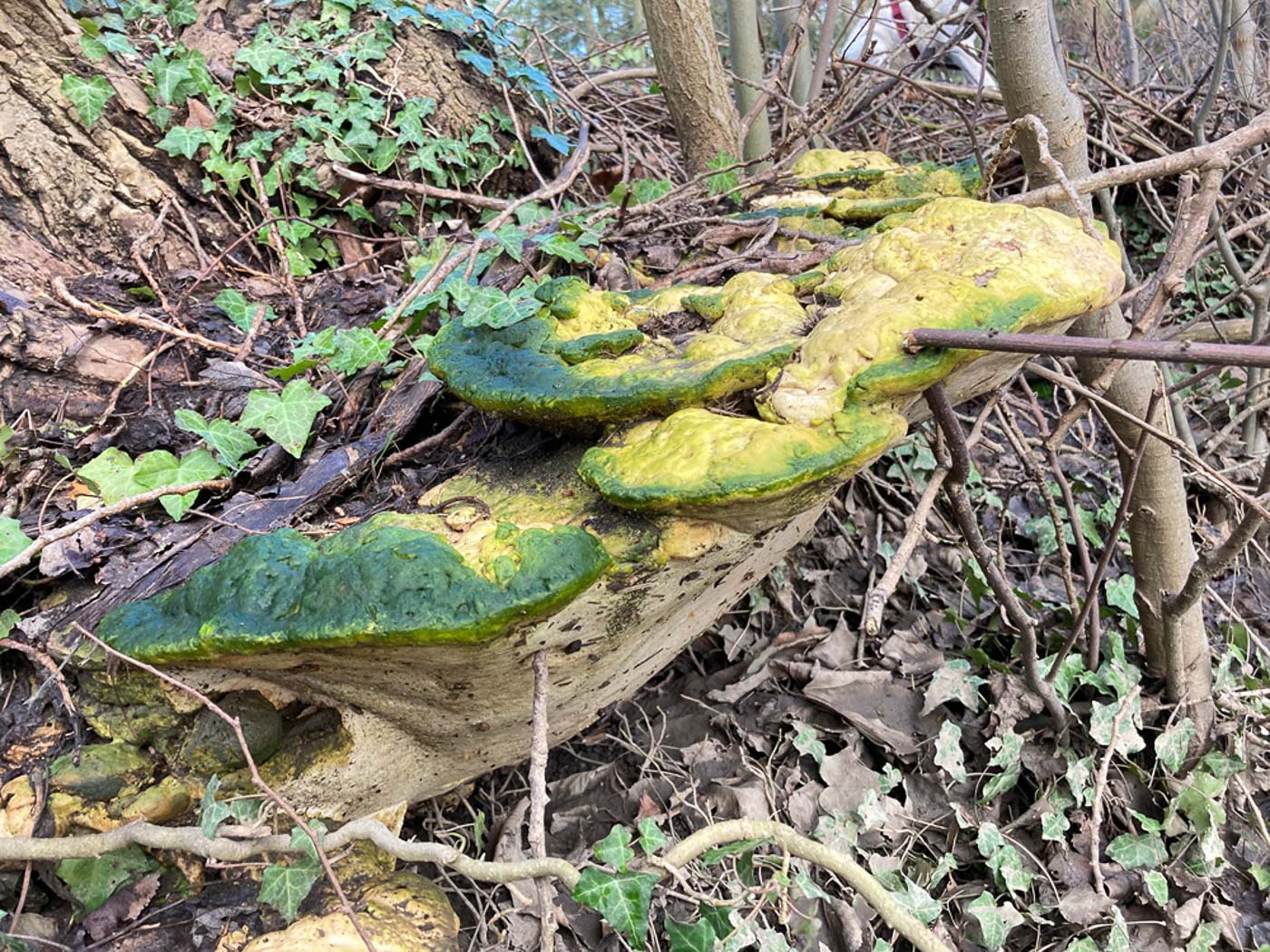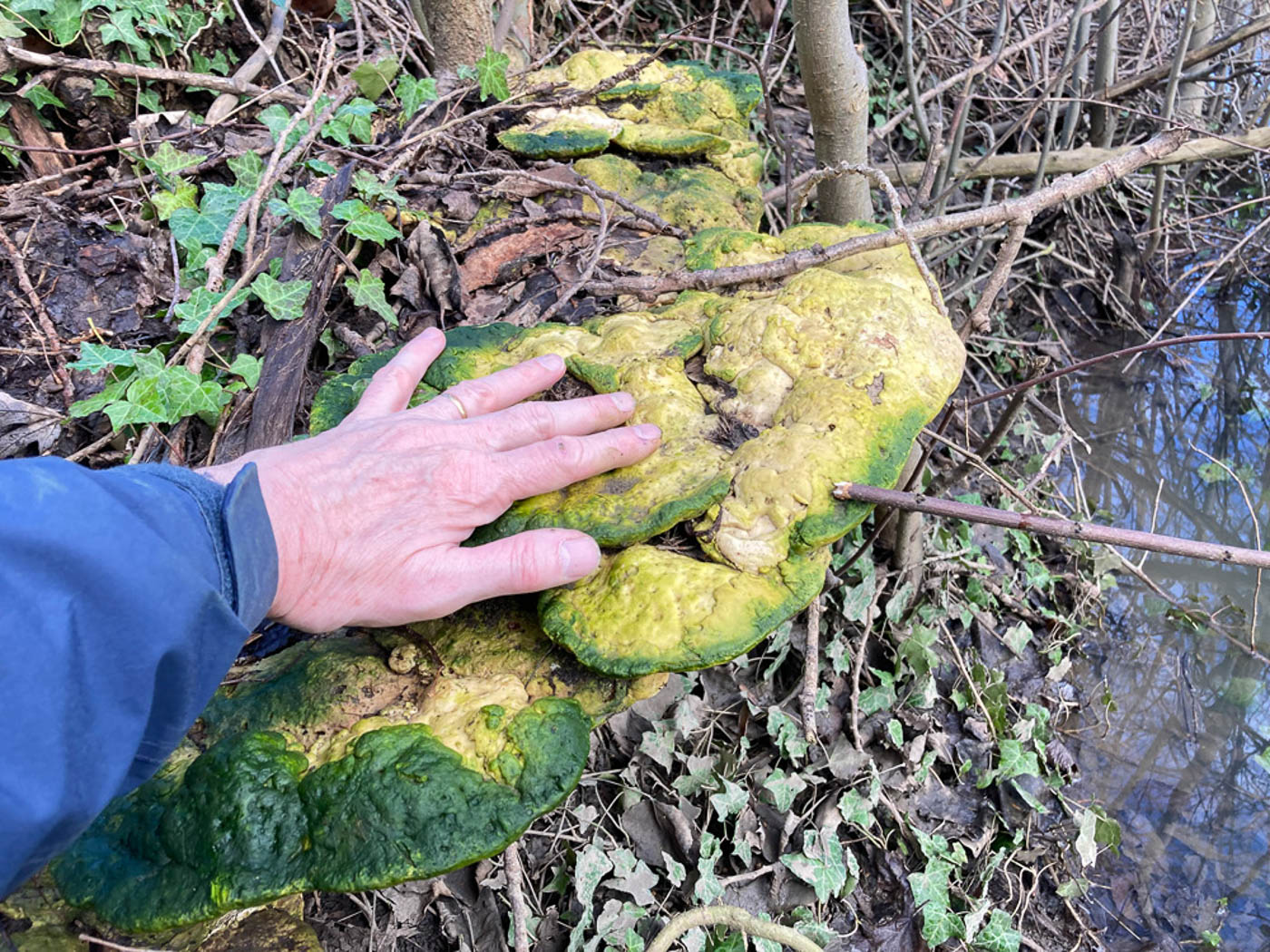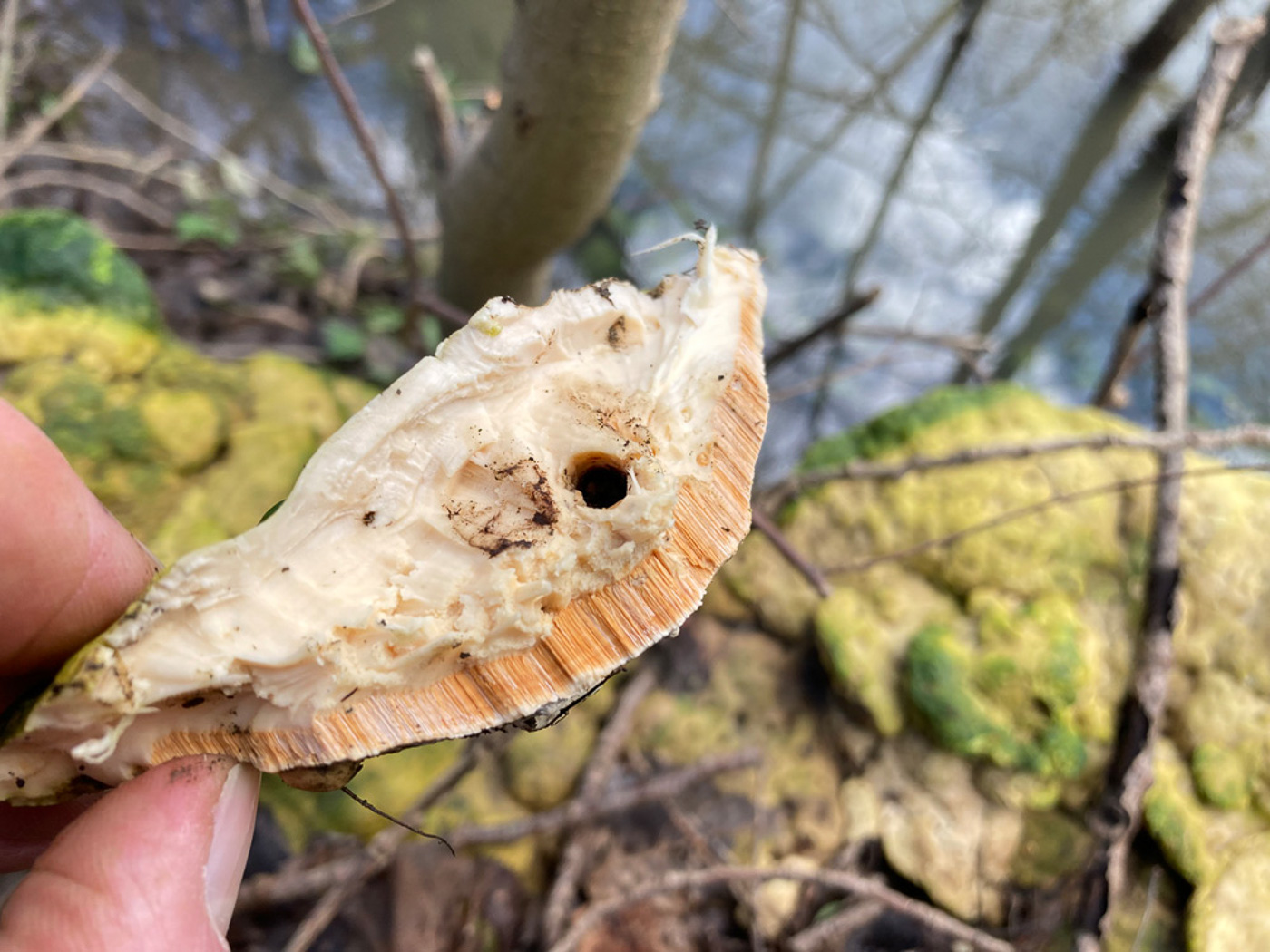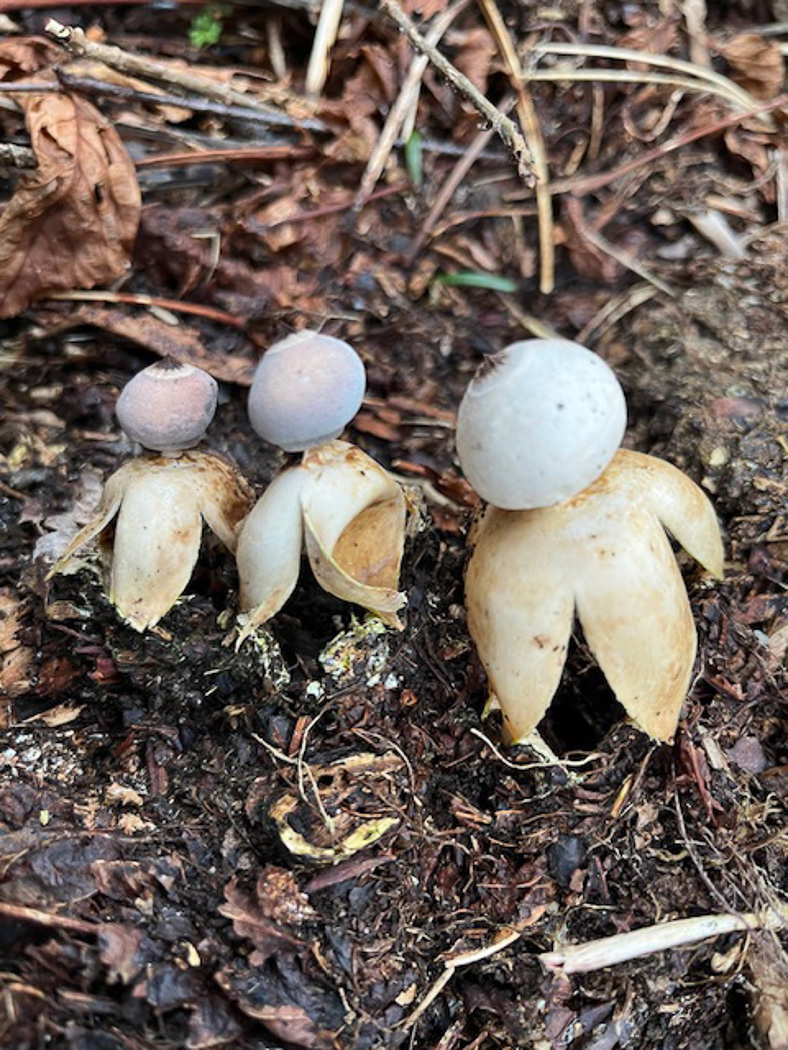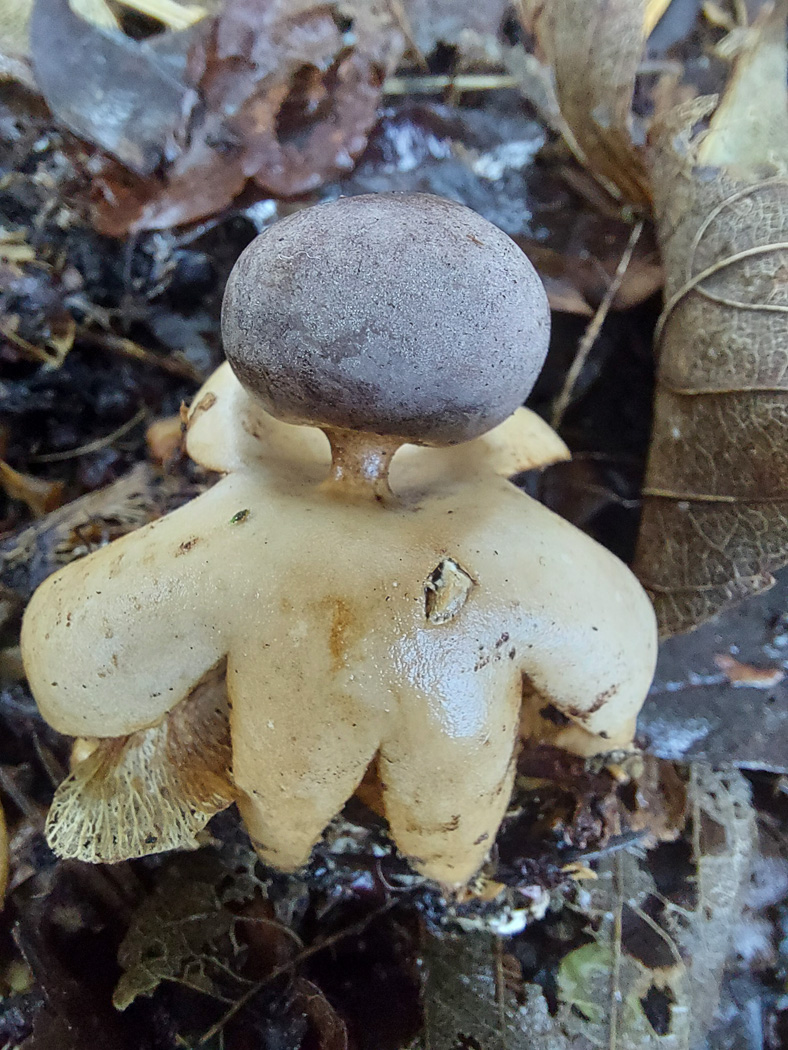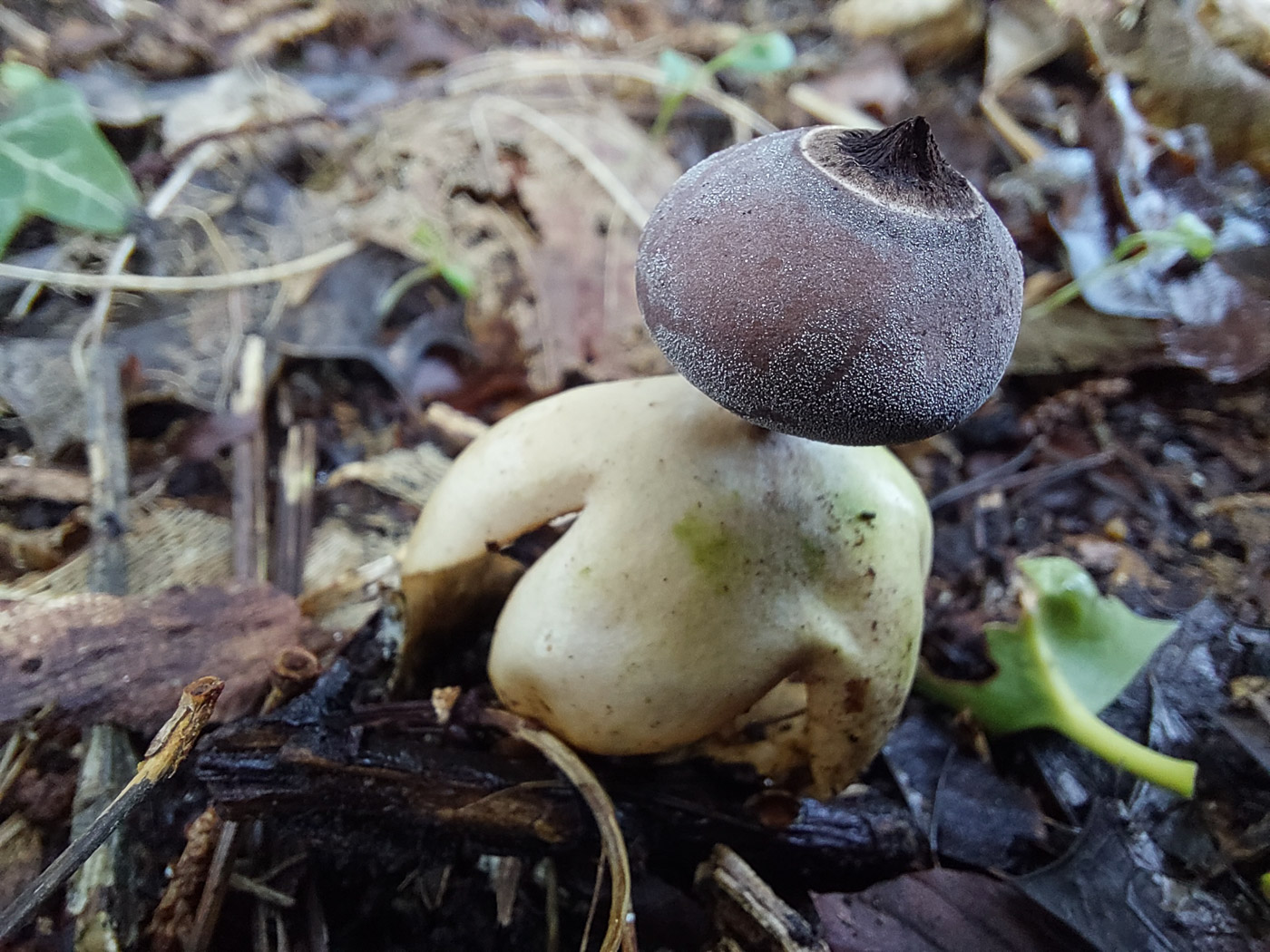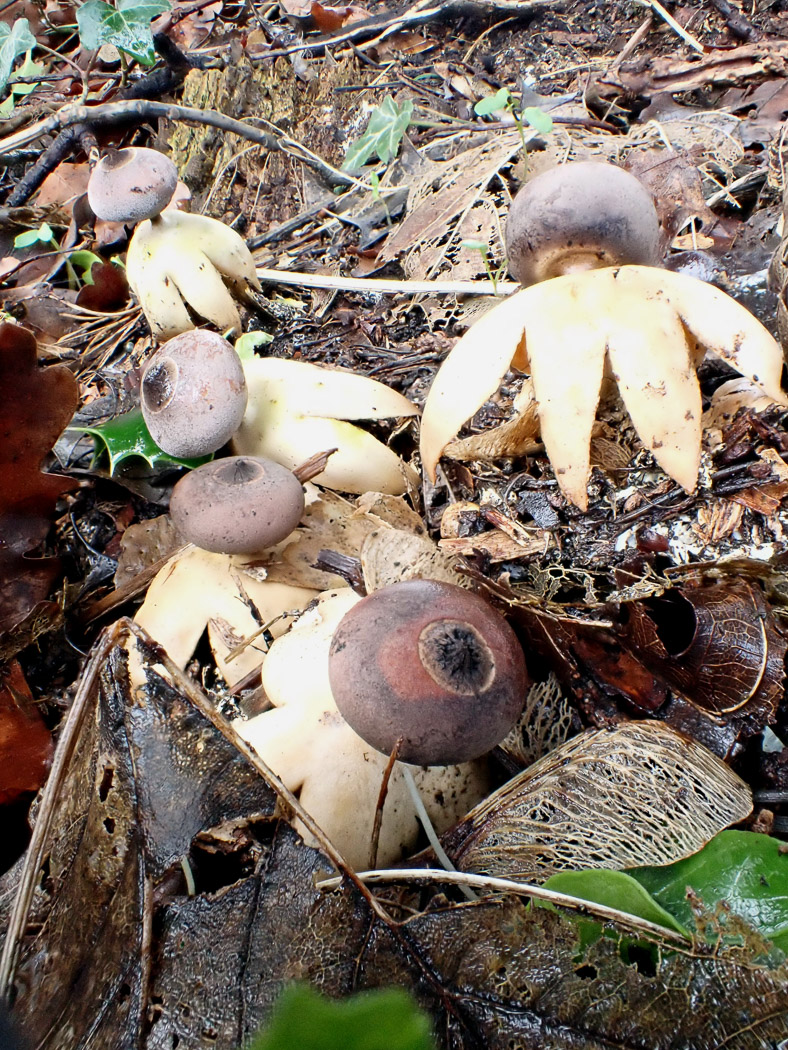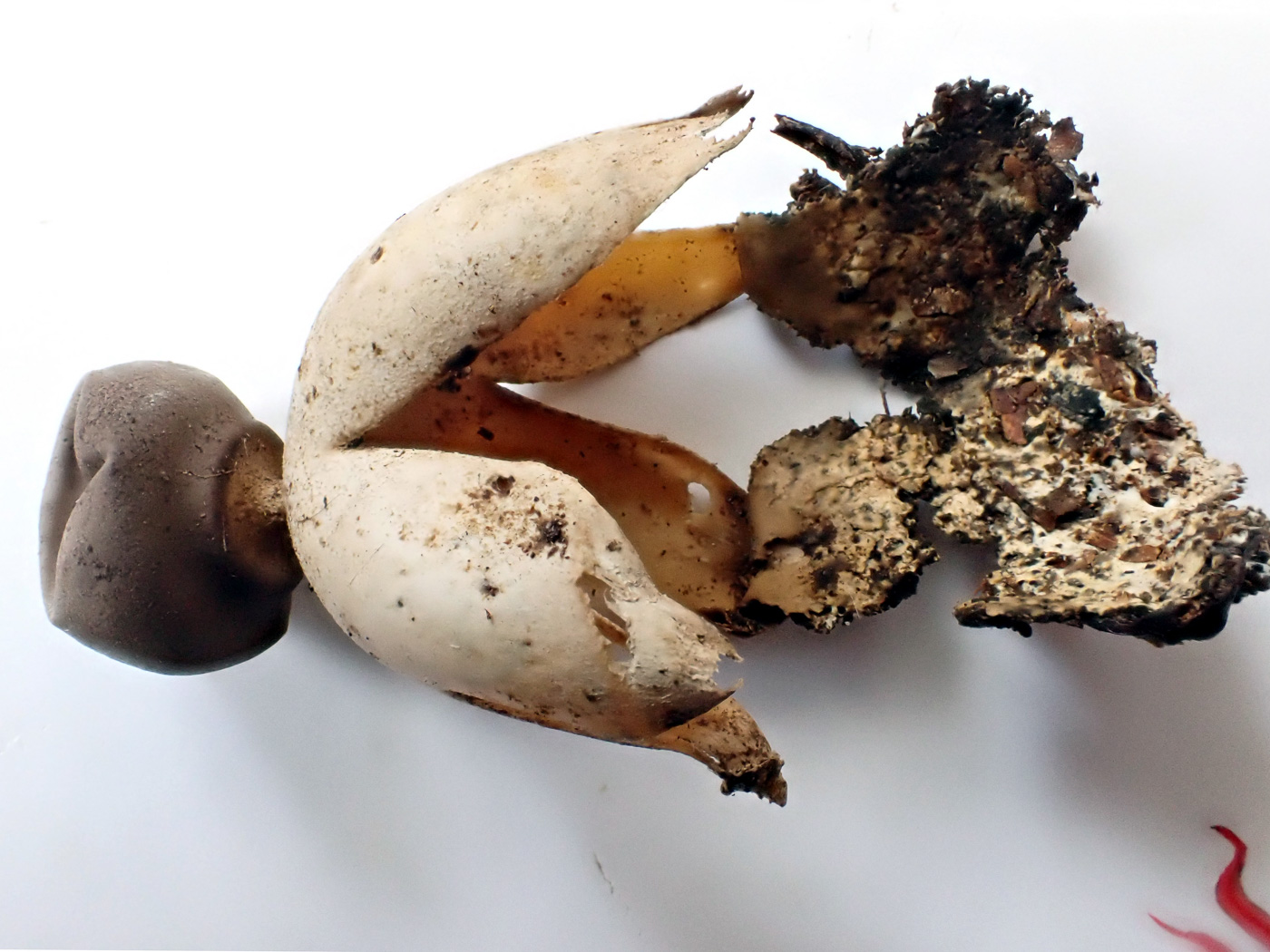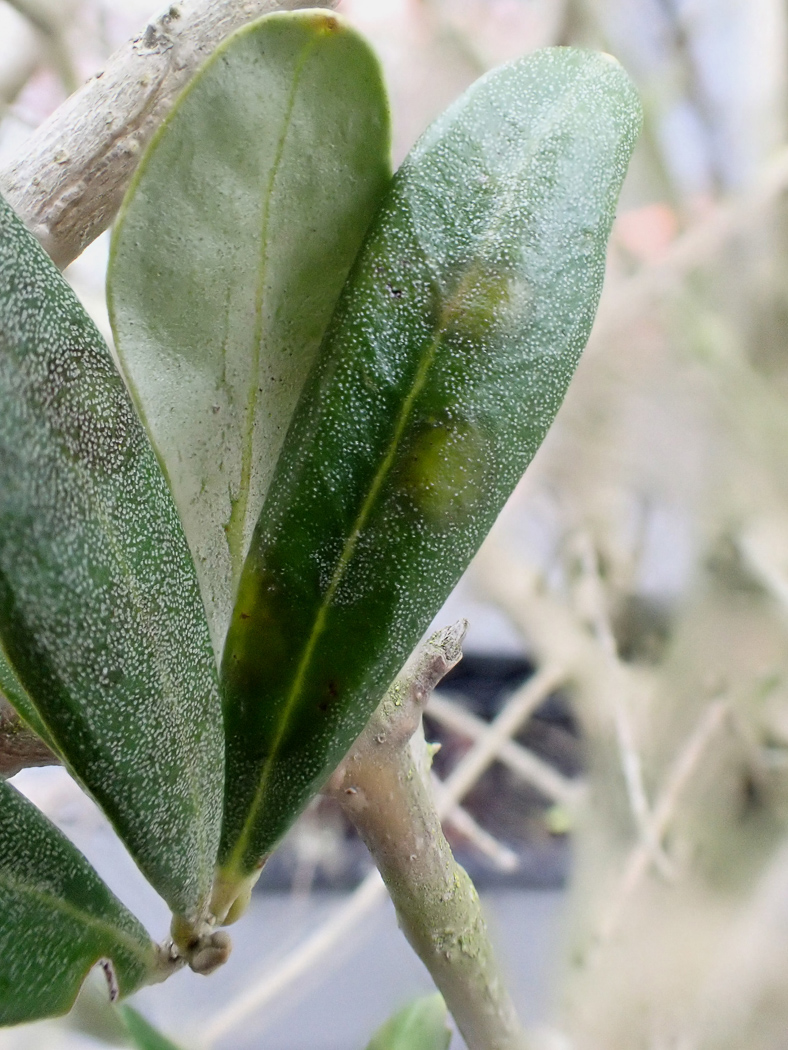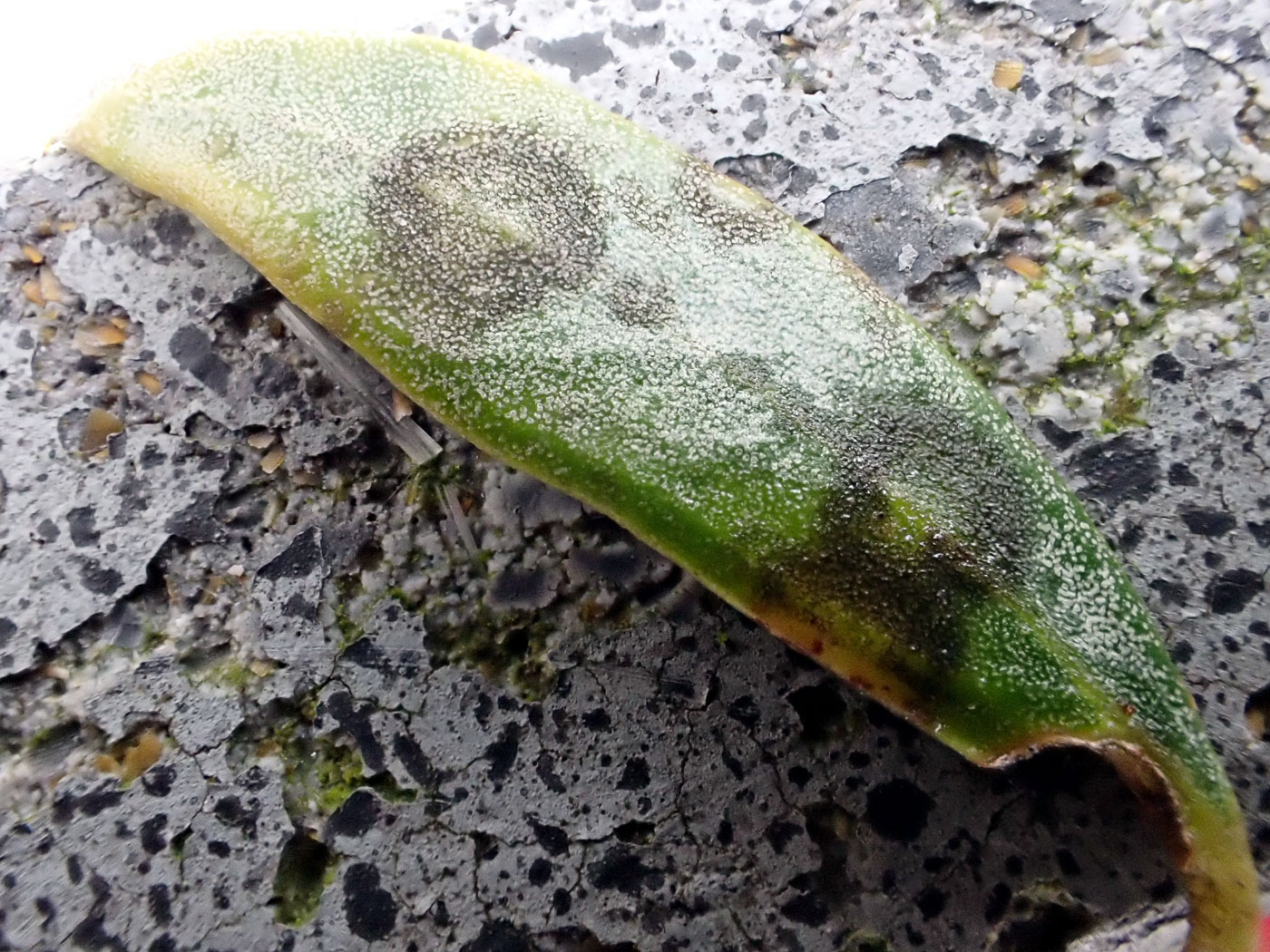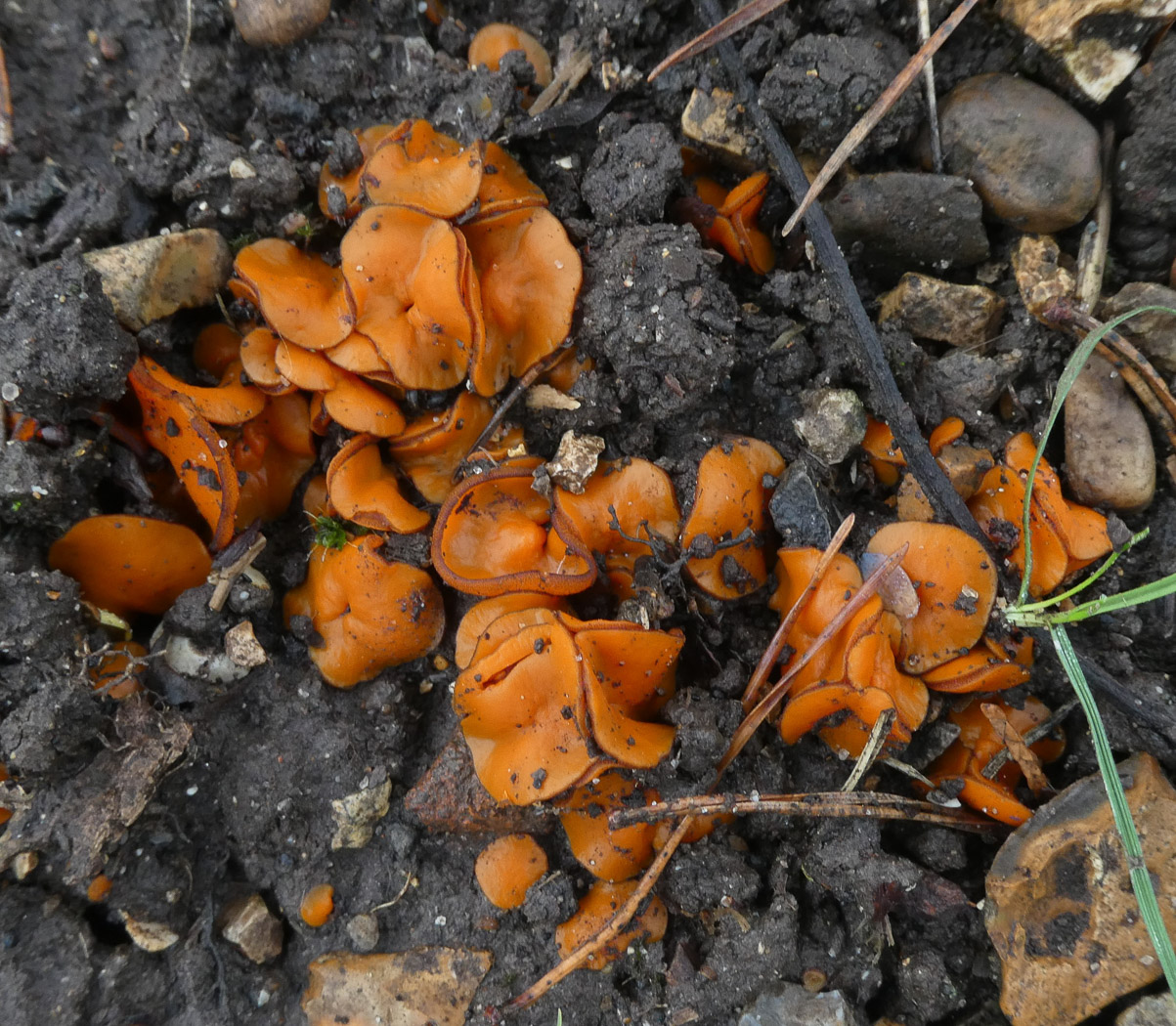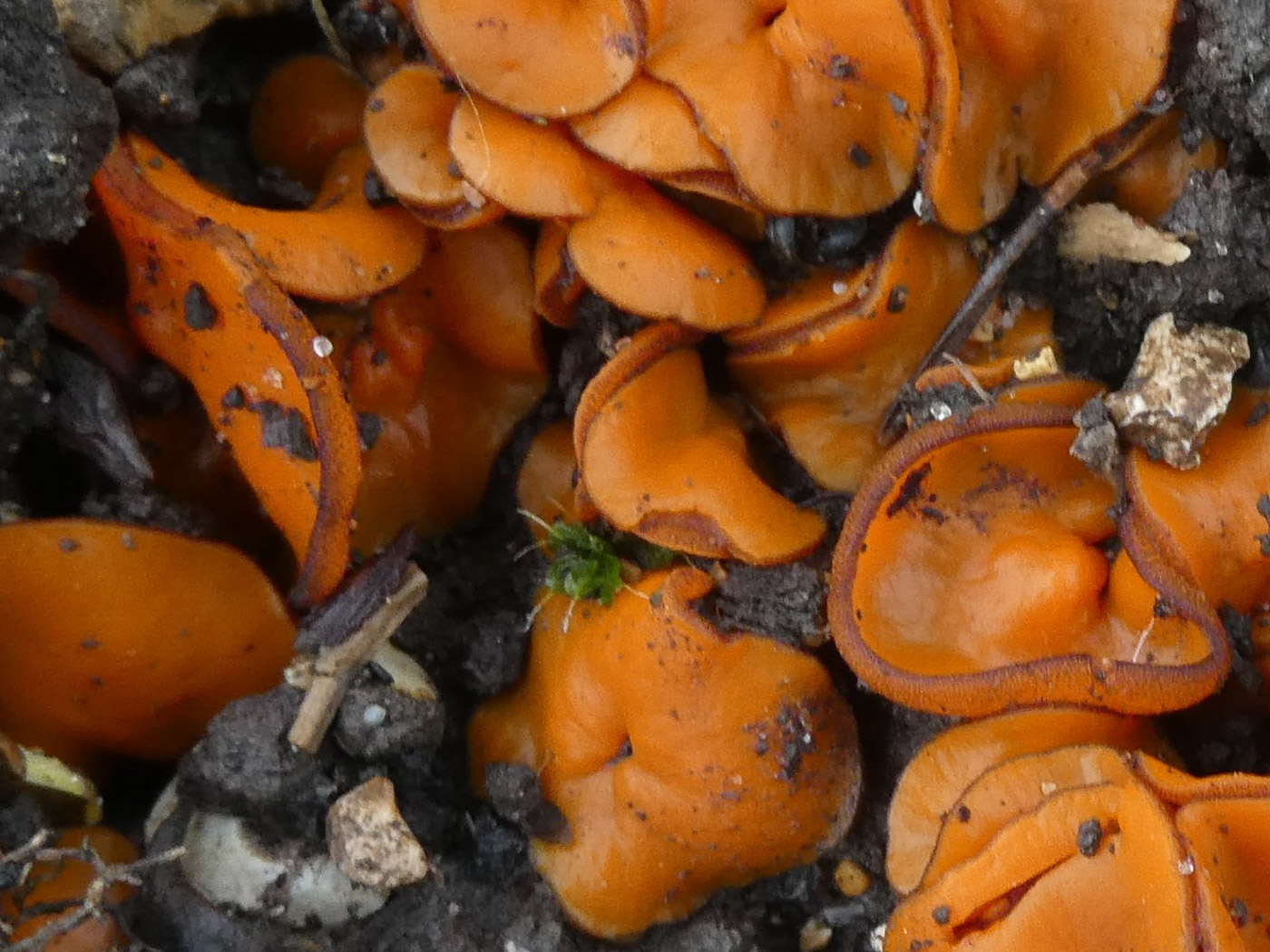Members’ Finds, January to June 2024
Following the success of our Members' Finds project introduced in 2020, here is our new page for January to July 2024 to which members are again invited to contribute. Please email Penny photos of anything you find - even of species already on previous lists. Common or rare: all are welcome! Thanks to all our many contributors, we now have well over 1000 species illustrated here, all from Buckinghamshire!
• Aim to show all aspects of the fruitbody even if this necessitates several photos.
• Please send images as an attachment and not embedded into the email text.
• All photos should be captioned with fungus name if known, site, date, your initials. EG Amanita muscaria Penn Wood 01.10.2024 PC1.
• Please include in your email as much detail as possible (eg size, smell, substrate, habitat, microscopic details if available). All clues are vital when identifying solely from photos.
• If possible collect and retain at least one specimen until you've heard back from Penny in case further investigation is required - records of rarities are invalid without voucher material which may well need to be dried for molecular sequencing to confirm.
• NEW FOR 2024! Click on Previous finds at the end of any entry to view all other Members' Finds entries for that species.
• NEW FOR 2024! We now have a SEARCH FACILITY for the LATIN MASTERLIST INDEX, speeding up access and automatically grouping all entries for any one species together for convenient comparison etc.
• The regularly updated list of entries remains in place as previously, in a choice of either Latin binomial or English common names.
• ![]() Only entries marked with this symbol have been microscopically examined. There is no guarantee on identifications made of entries lacking this symbol though all photos are checked and selected by Penny to the best of her ability. Basic accompanying notes are also Penny's.
Only entries marked with this symbol have been microscopically examined. There is no guarantee on identifications made of entries lacking this symbol though all photos are checked and selected by Penny to the best of her ability. Basic accompanying notes are also Penny's.
HAPPY HUNTING!
Click on thumbnail to see full size
For the complete and regularly updated list of entries click Latin or English
To search the LATIN MASTERLIST INDEX since its inception click here
Contributors / Photographers: Barry Webb FRPS; Bob Simpson; Claudi Soler; Derek Bourne; Jesper Launder; John Catterson; Linda Seward; Matt Vaughan; Penny Cullington; Russell Ness; Sarah Ebdon; Stephen Plummer.
Rare sightings 17 |
New to Buckinghamshire 15 |
New to UK 0 |
January February March April May June
| Image | Details |
|---|
April 26th 2024
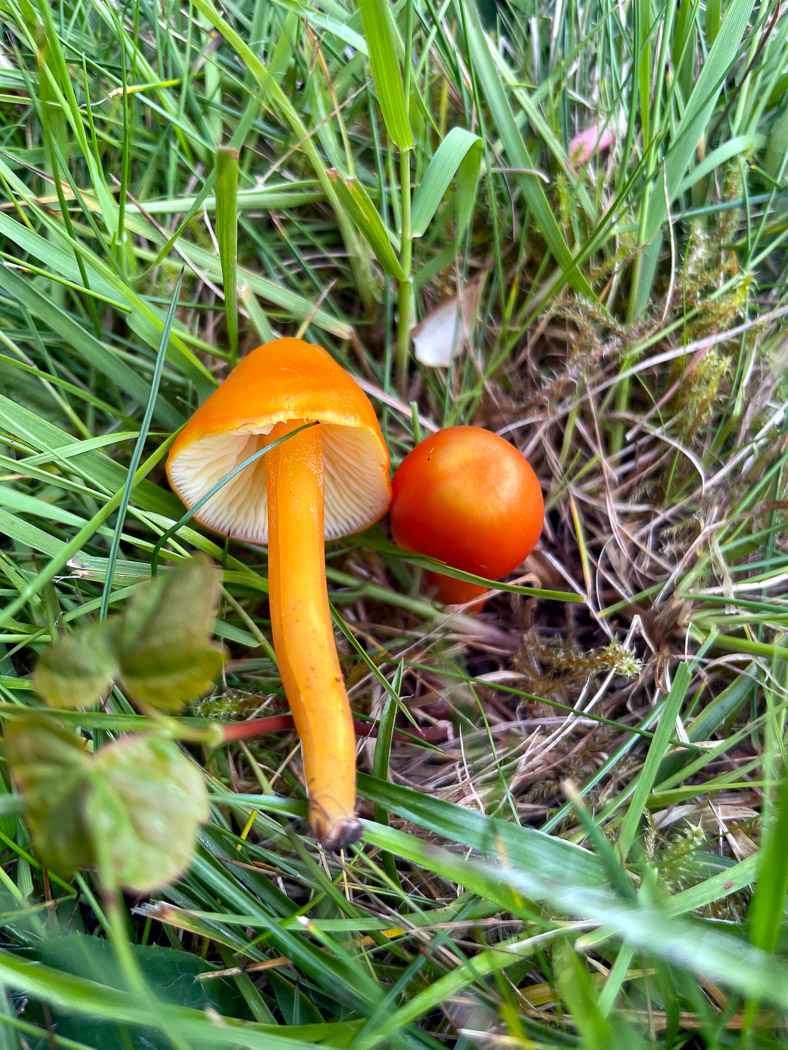 |
April 26th Hygrocybe chlorophana (Golden Waxcap) In the lawns at Stoke Poges Memorial Gardens Jesper launder found first one, then several more, of these stunning beauties. Penny, he and Sarah were not at all sure which of the yellow / orange species it might be; the depth of colour here made us wonder about H. quieta but it entirely lacked any typical oily smell, so we were left with the possibilities of H. chlorophana or ceracea though the general 'jizz' didn't seem quite right for either. However, at home Penny found the amazingly long gill trama (strands of hyphae) which typifies H. chlorophana and the spores size and shape matched also. This is the second spring appearance of the species within a month - amazing! (The photo is Sarah's.) Previous finds |
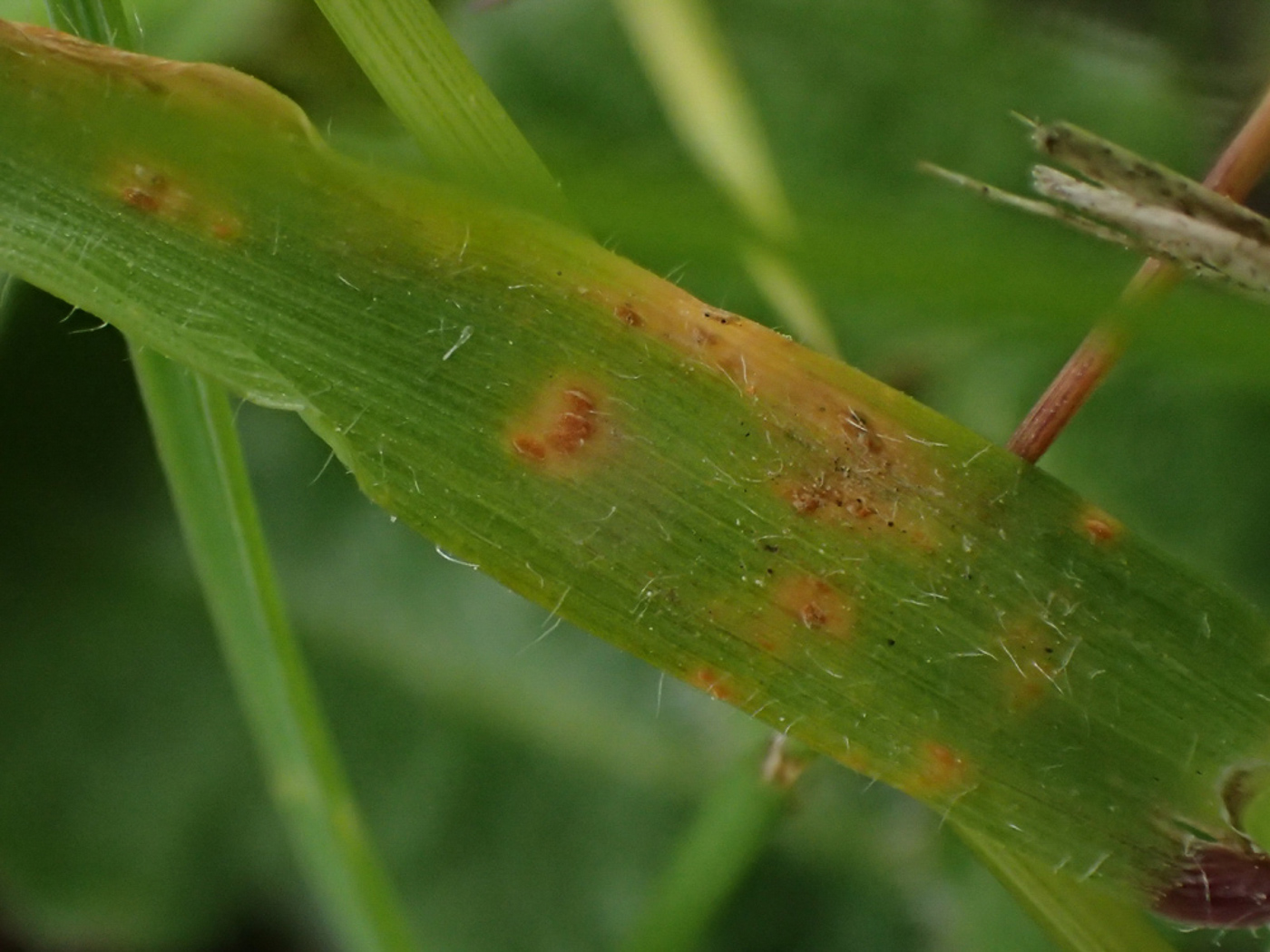 |
April 26th Puccinia anthoxanthina (a Rust with no English name) At Stoke Poges Memorial Gardens Jesper Launder found this rust on the leaf of Sweet Vernal Grass which Sarah Ebdon – now armed with a copy of Dutch Rust Fungi - was later able to identify. (The photo is Sarah's.) There is debate as to the correct name for this species which has previously been included as a variety of P. brachypodii, but a note written by expert Paul Cannon on his website favours following its acceptance by another author as an independent species with the name given here. Though not yet officially accepted in the UK we go with that name. There are plenty of UK records under its previous name which however includes collections made on several different plant hosts; once the name P. anthoxanthina is accepted universally it will be applicable only to collections made on Sweet Vernal Grass. Under whichever name, the species is new to the county and to Finds. |
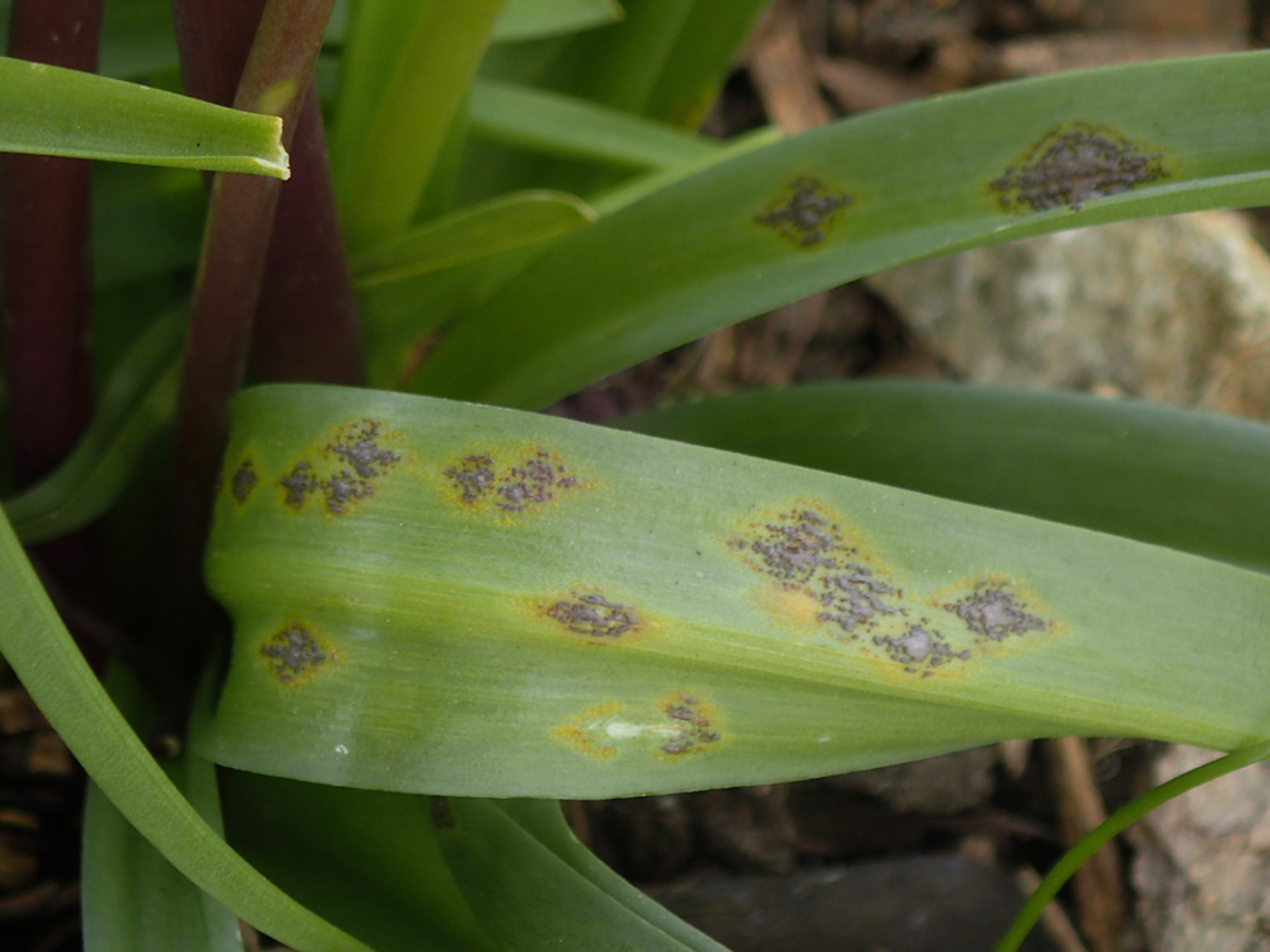
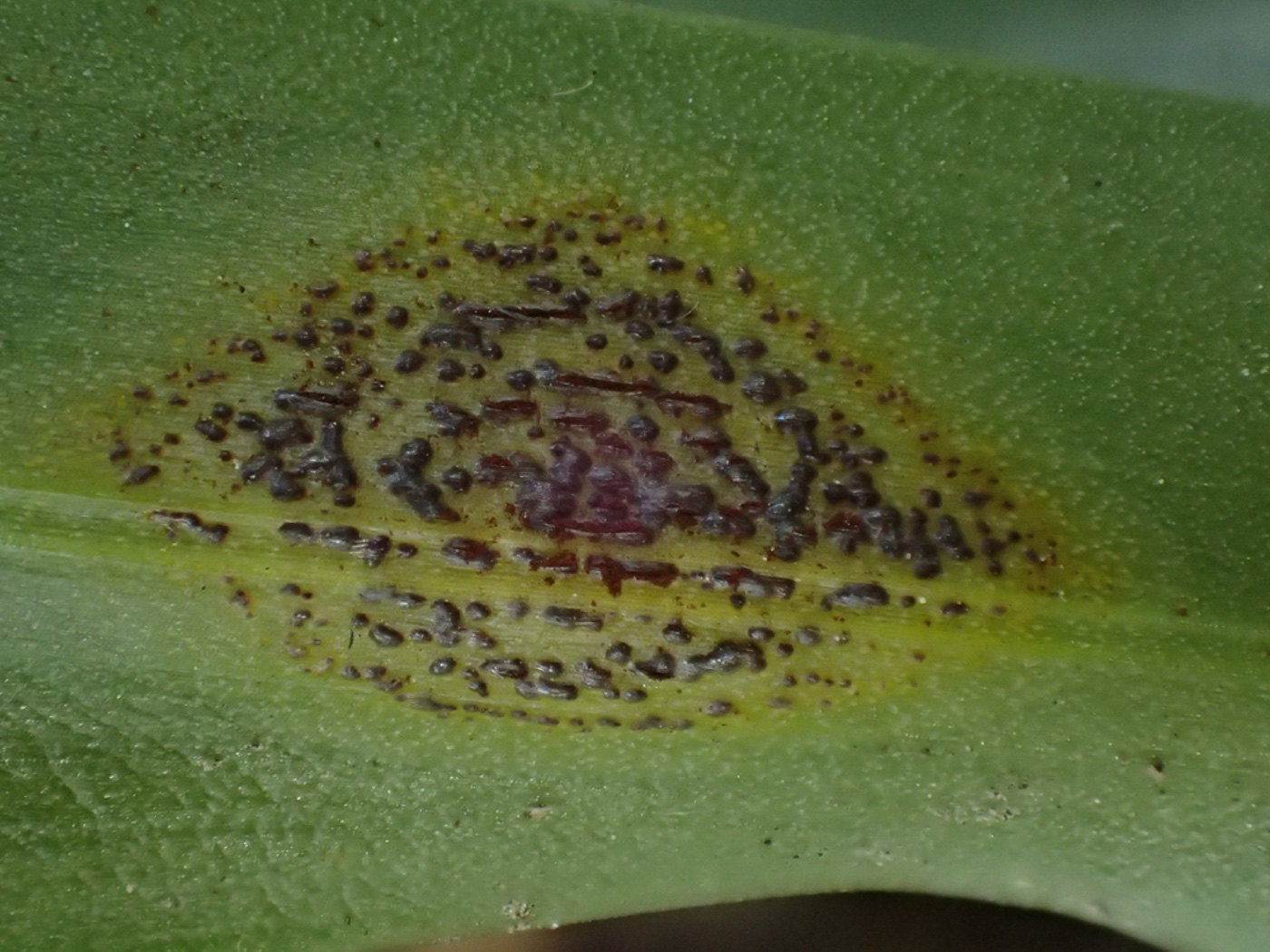 |
April 26th Uromyces muscari (Bluebell Rust) At Stoke Poges Memorial Gardens Sarah Ebdon was on the lookout for rusts on plant leaves and quickly spotted this one showing nicely on several Bluebell leaves. Knowing your plants helps a great deal with naming rust fungi because they are very often host specific though the species name here implies a different host which is somewhat confusing! It is very possible that this particular species when found on Bluebell - probably its commonest host - will be given a different name at at some stage. Our very few county records reflect how little recording of such fairly common species in spring goes on here. This is a new entry for Finds. |
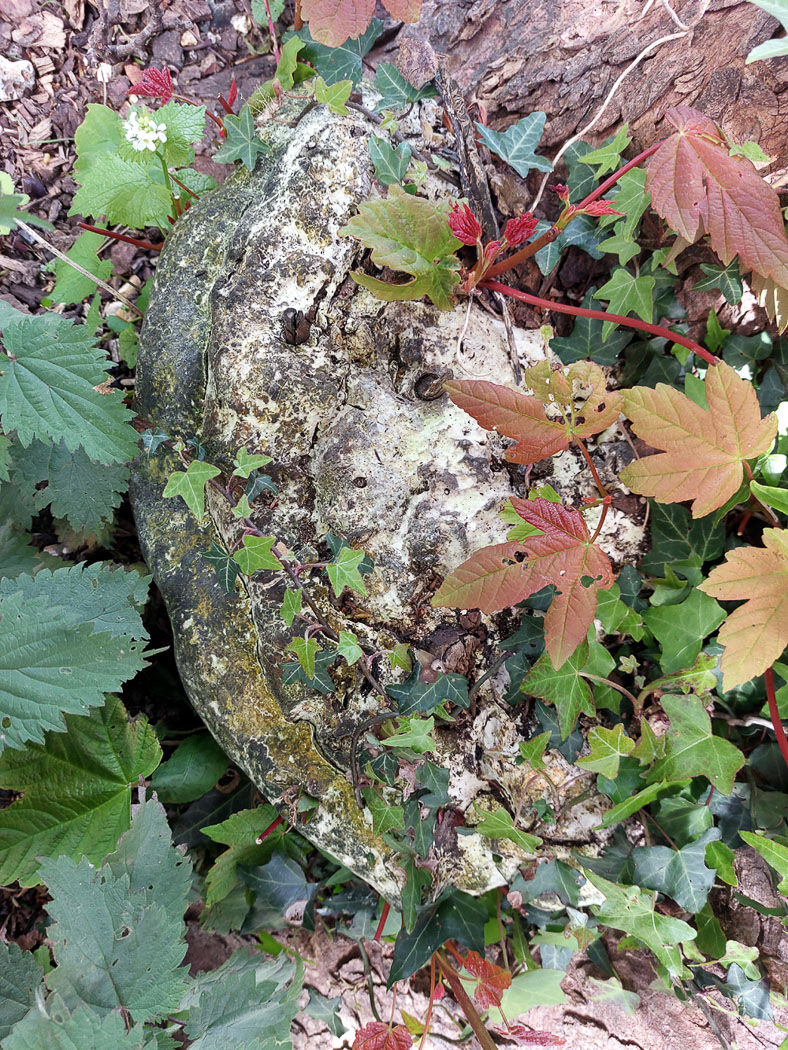 |
April 26th Perenniporia fraxinea (an unusual bracket with no English name) At the base of a mature Sycamore at Stoke Poges Memorial Gardens Penny together with Sarah Ebdon and Jesper Launder spotted this huge bracket hiding behind some nettles - hence Jesper's photo from above! It was at least 40 cm across and also quite thick, absolutely hard and with a green glint in the outer section. Jesper took a small sample to check for spores which later proved his ID suggestion at the time to be correct. Though not rare, we have just 7 previous county records on a variety of different deciduous tree hosts though this is the first on Sycamore. It is commonest on Ash as its species name suggests. This is a new entry for Finds. |
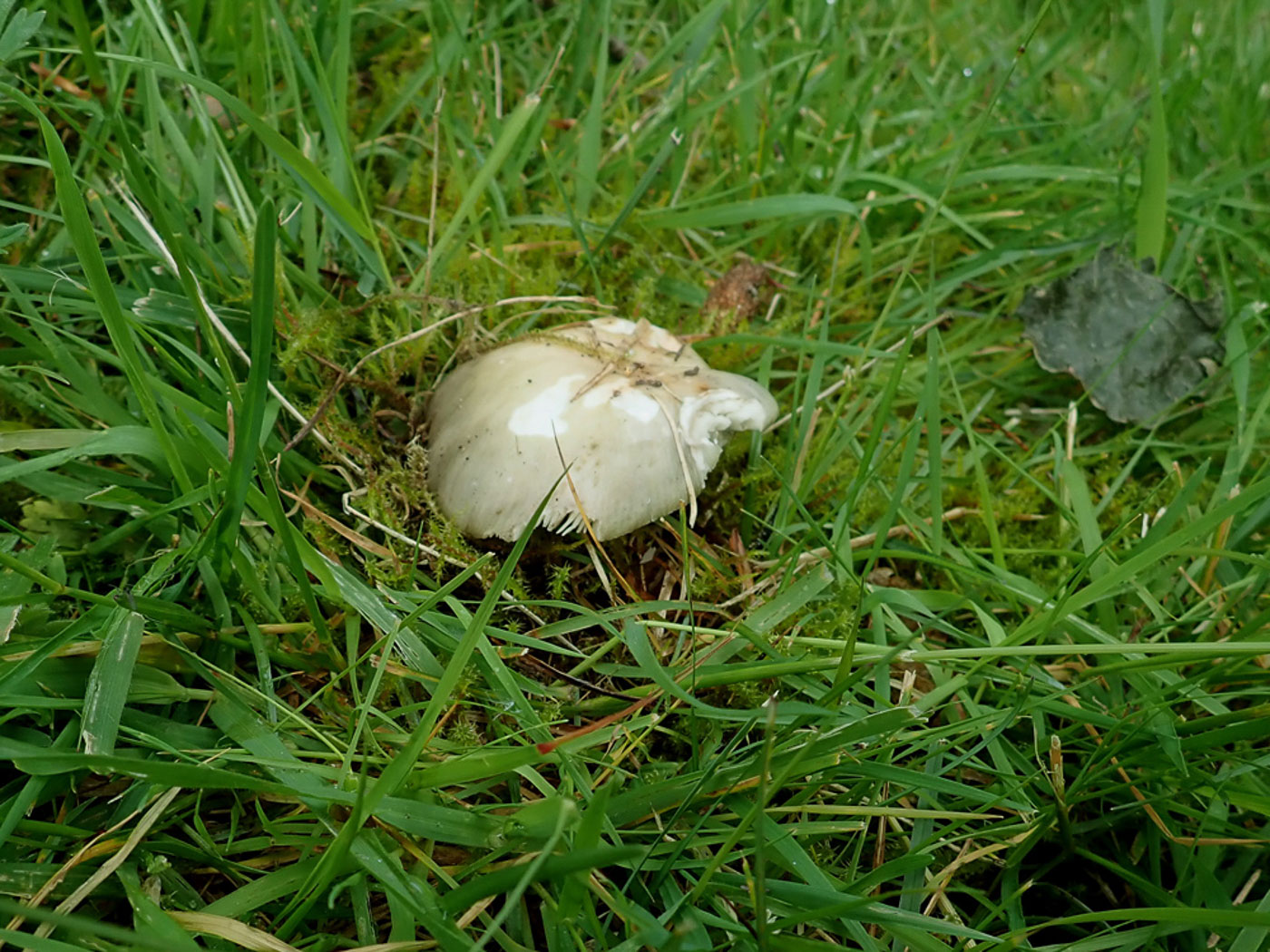
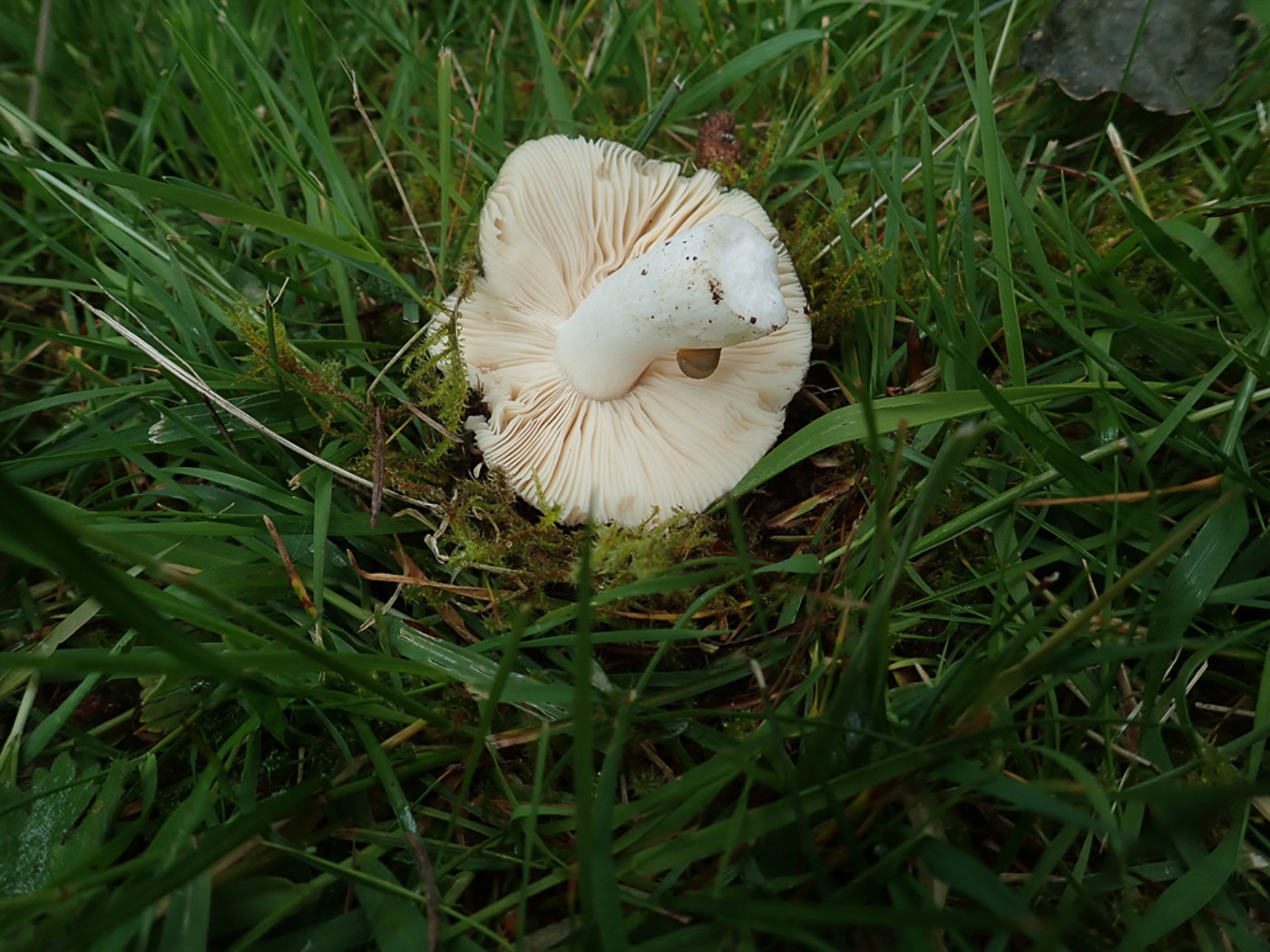
 |
April 26th Russula grisea (False Charcoal Burner) In Stoke Poges Memorial Gardens Penny was astounded to find two separate specimens of a Russula (Brittlegill) under Oak - in April?! She's been leading an autumn walk here for the last 15 years or so when a bothersome atypical Russula has often been present - usually recorded as R. parazurea though with some doubts. She never imagined it would show up here in April, however. Sporeprint colour amongst various other features eventually led her to this species though not quite all features were convincing, so for this reason - although it's not a rarity - this collection will be sequenced. Photo 3 shows the strong salmon pink reaction when the stem is rubbed with a crystal of Iron salts. |
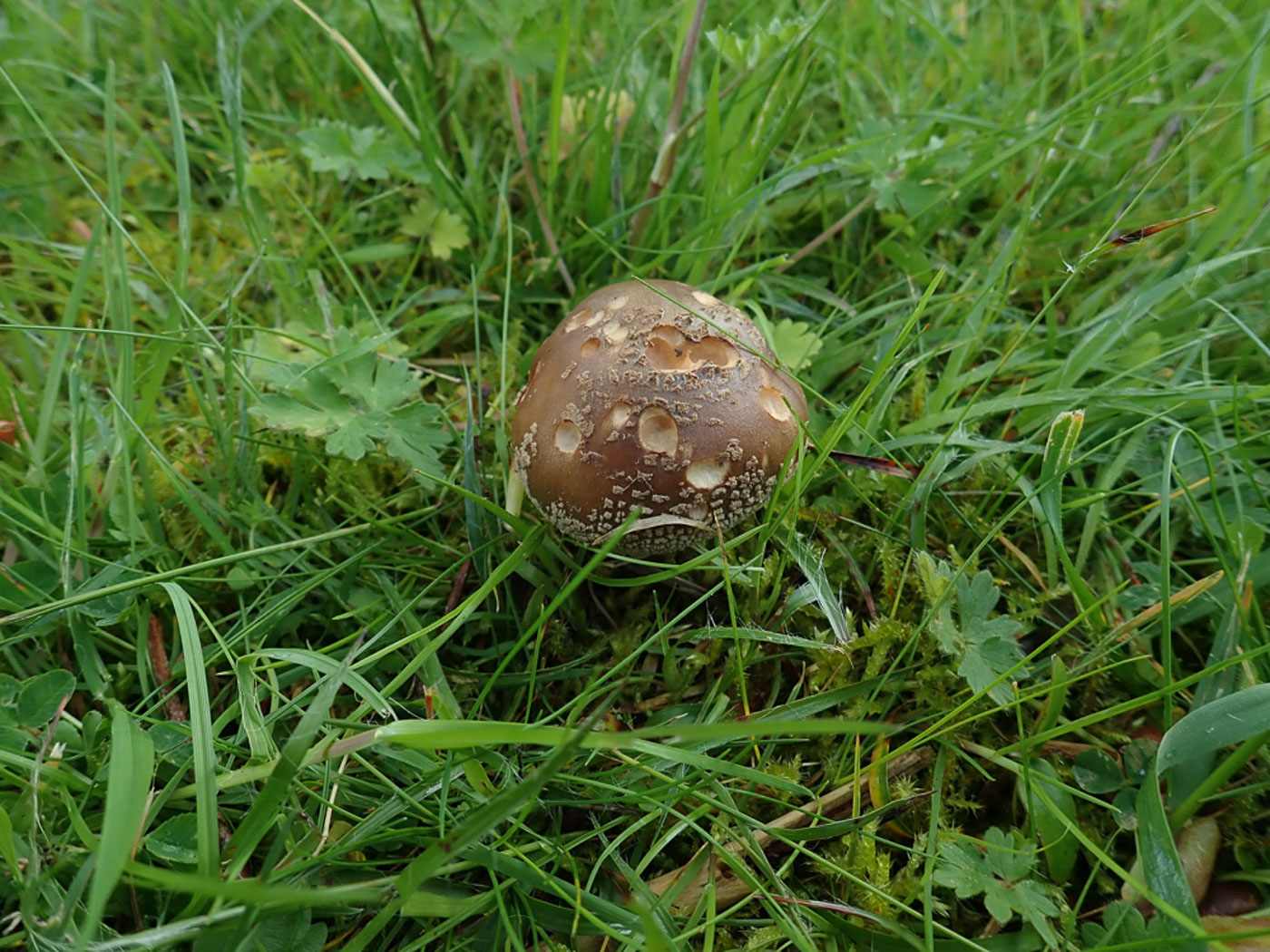
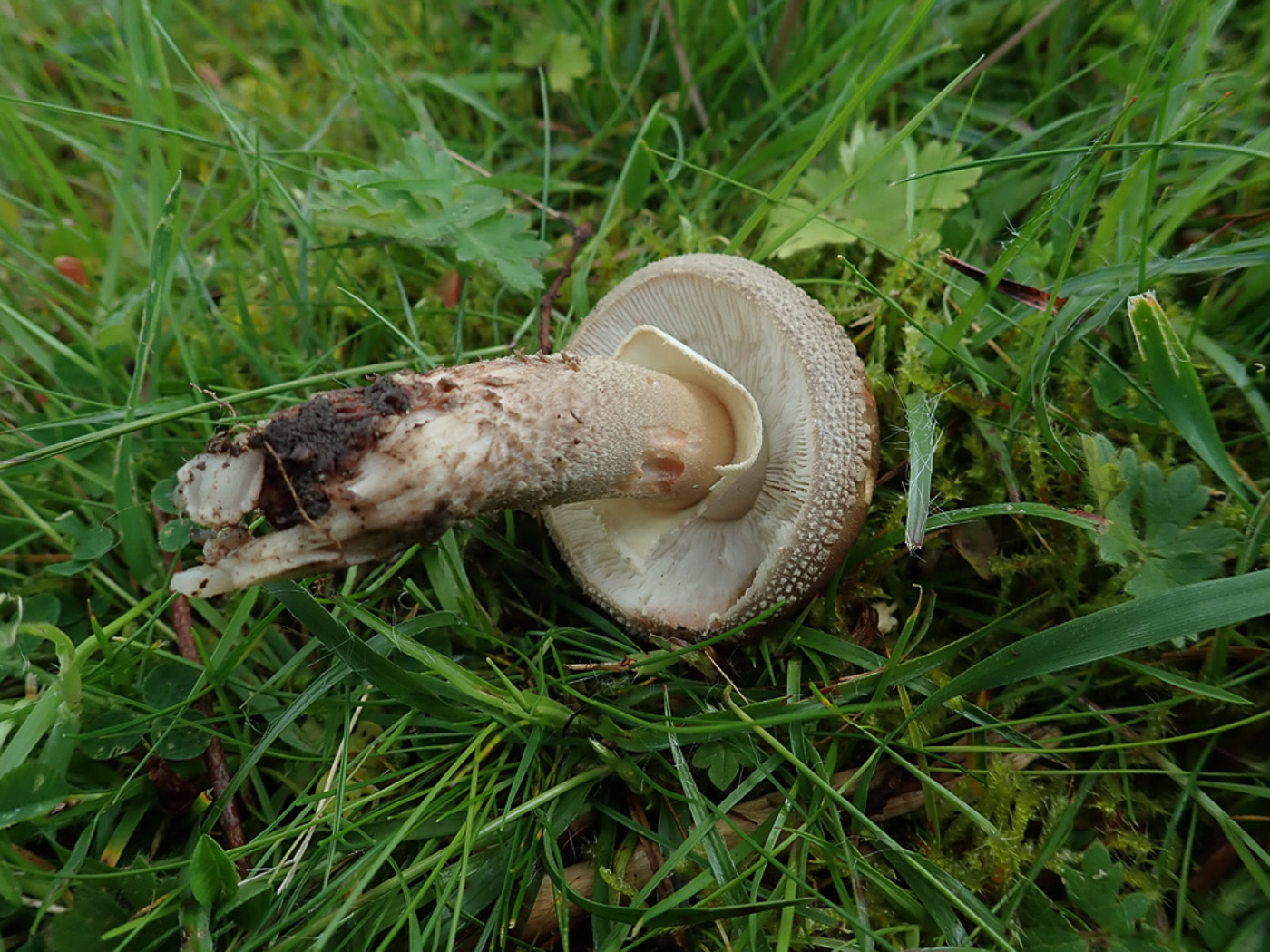
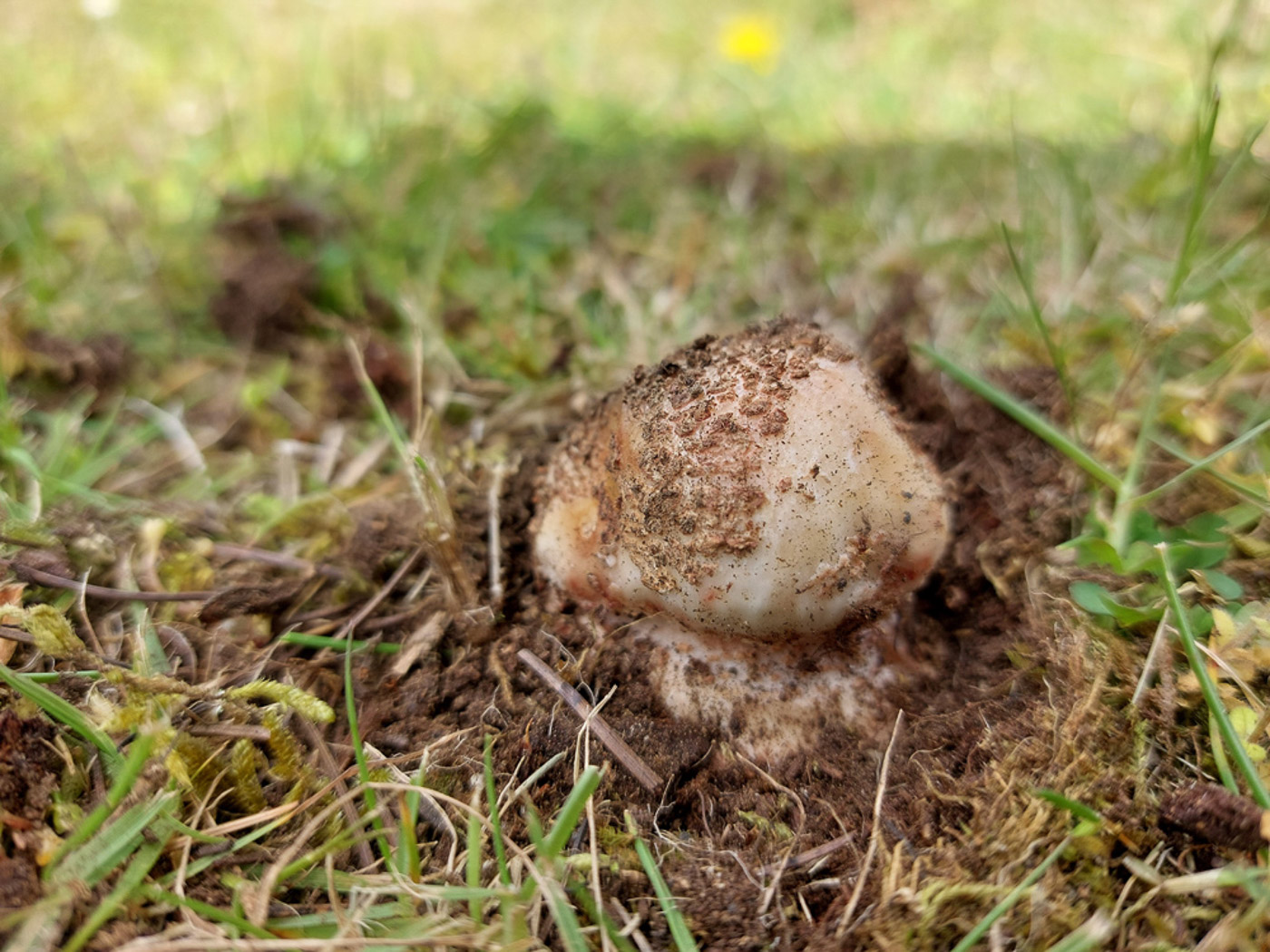 |
April 26th Amanita rubescens var. annulosulphurea (Blusher) In Stoke Poges Memorial Gardens Penny was surprised when she spotted this very early fruiting Amanita in grass under Lime. Thinking it was possibly A. excelsa from the brown cap colour and lack of pink in the nibbled parts, she was further surprised when turning it over revealed not only the telltale signs of pink staining thus separating it from A. excelsa but also a clearly yellowish rather than white ring - hence the varietal name here. (Sadly the yellow does not show up well in photos but her companions agreed with the ID at the time!). We have hundreds of records of the Blusher (both varieties) and glancing though them it is noticeable how the very few June records start to increase in the last 15 years when just three May records also occur (none before this). However this is a first for April! What's more, photo 3 is of the same species found by Jesper Launder in nearby Sefton Park just two days earlier. Previous finds |
April 24th 2024
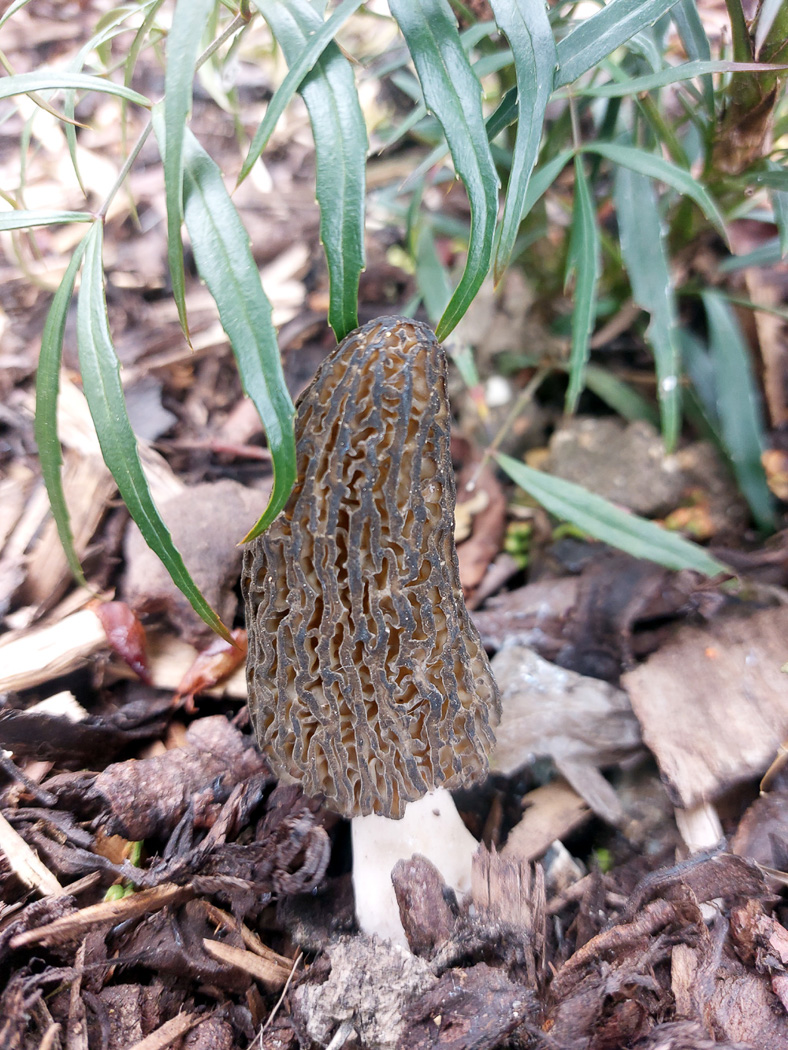
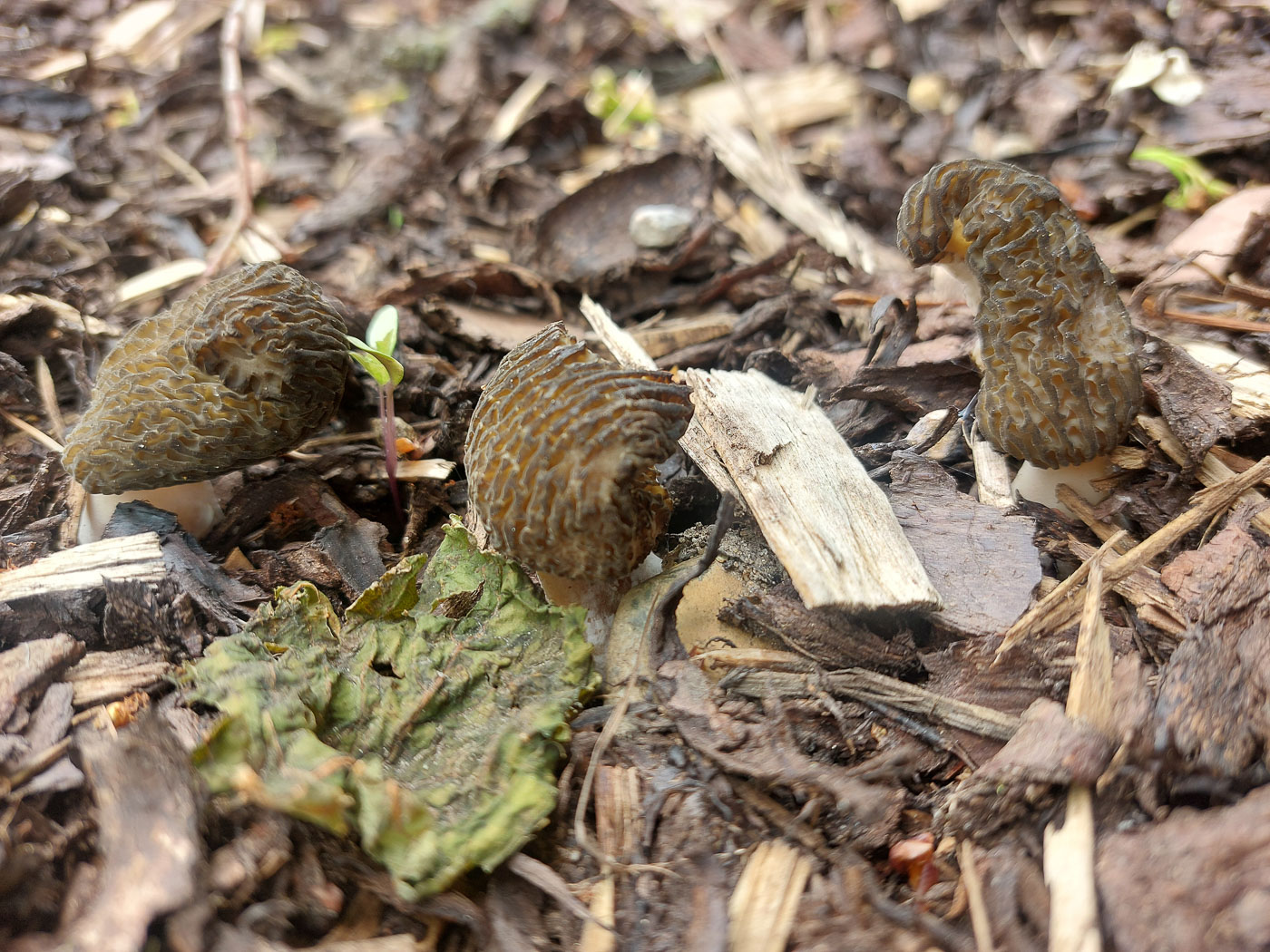 |
April 24th Morchella elata (Black Morel) At Stoke Poges Memorial Gardens Jesper Launder found a good fruiting of this elusive springtime genus growing in the quantites of wood chip at this site. This species probably the commonest - has a preference for conifer wood chip, often fruiting in gardens where this substrate has been imported. So do keep an eye out for it if you've used this garden product at home. Previous finds |
April 23rd 2024
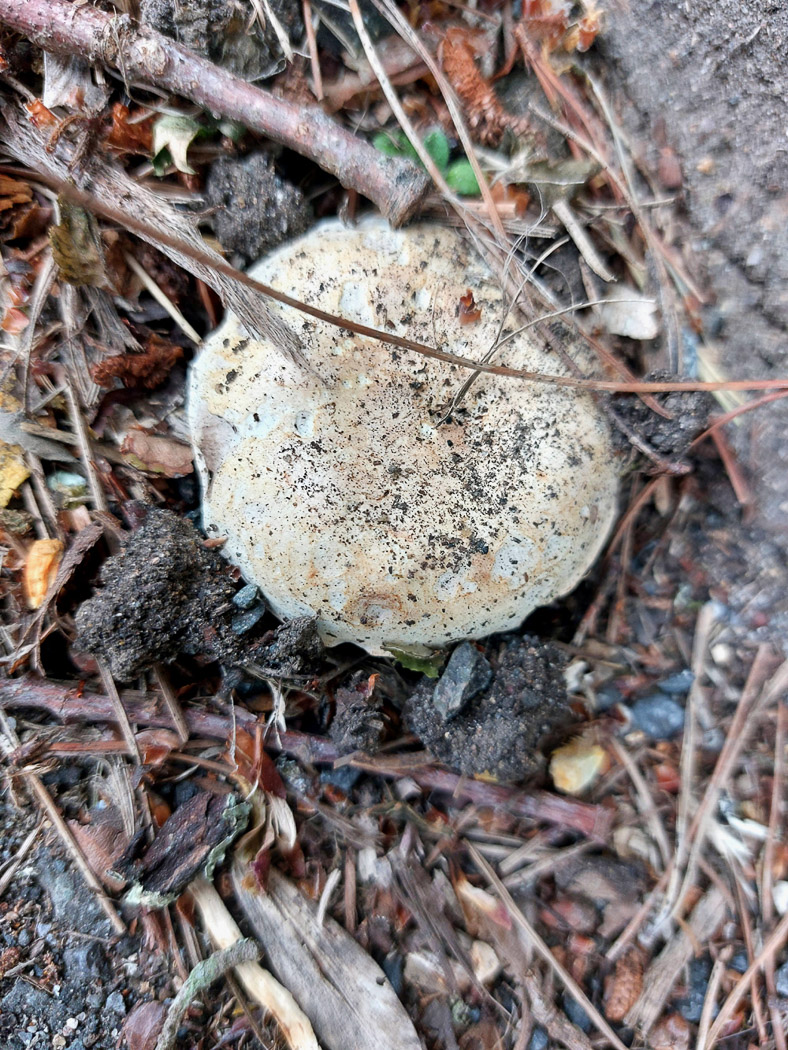
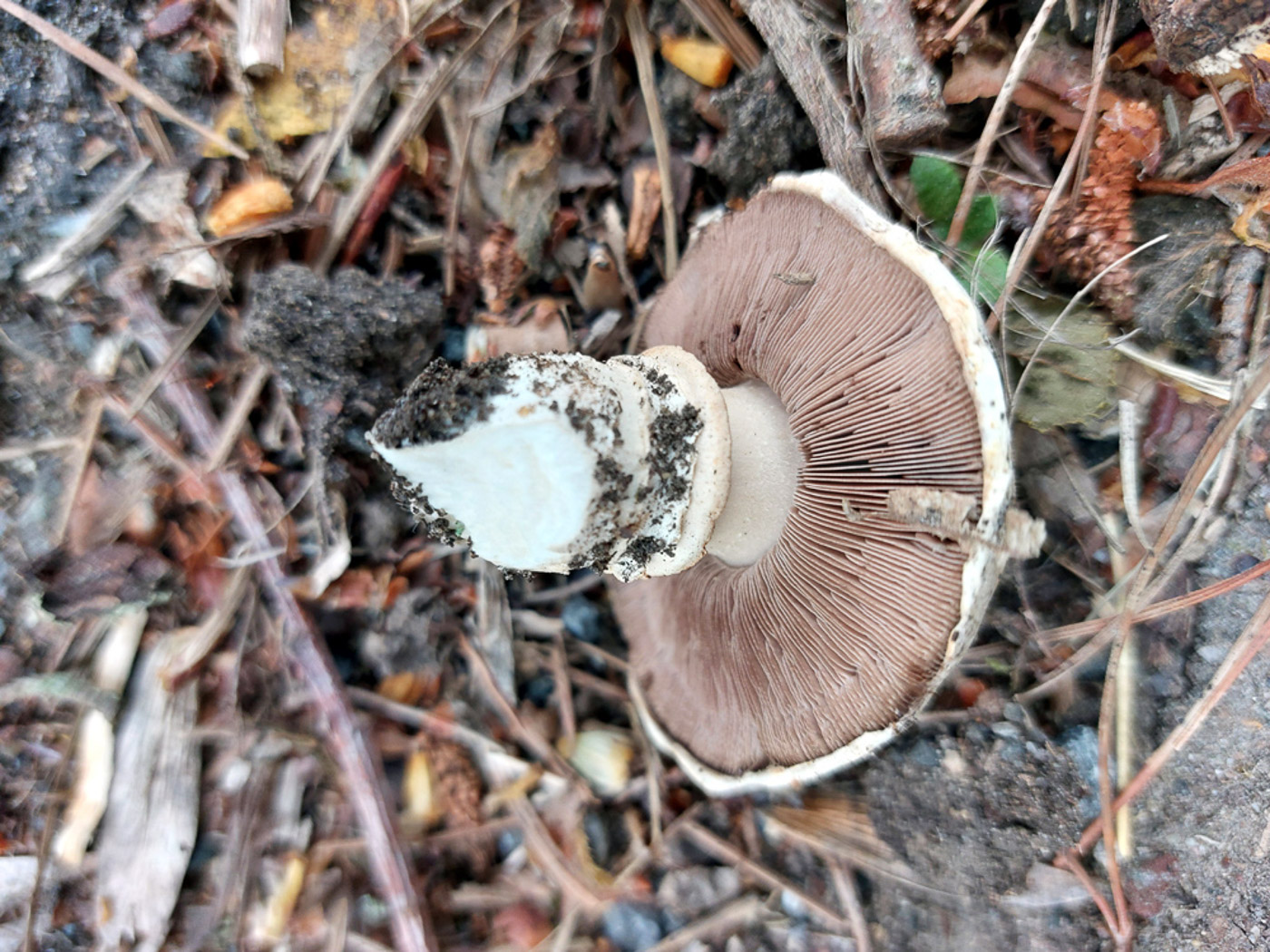
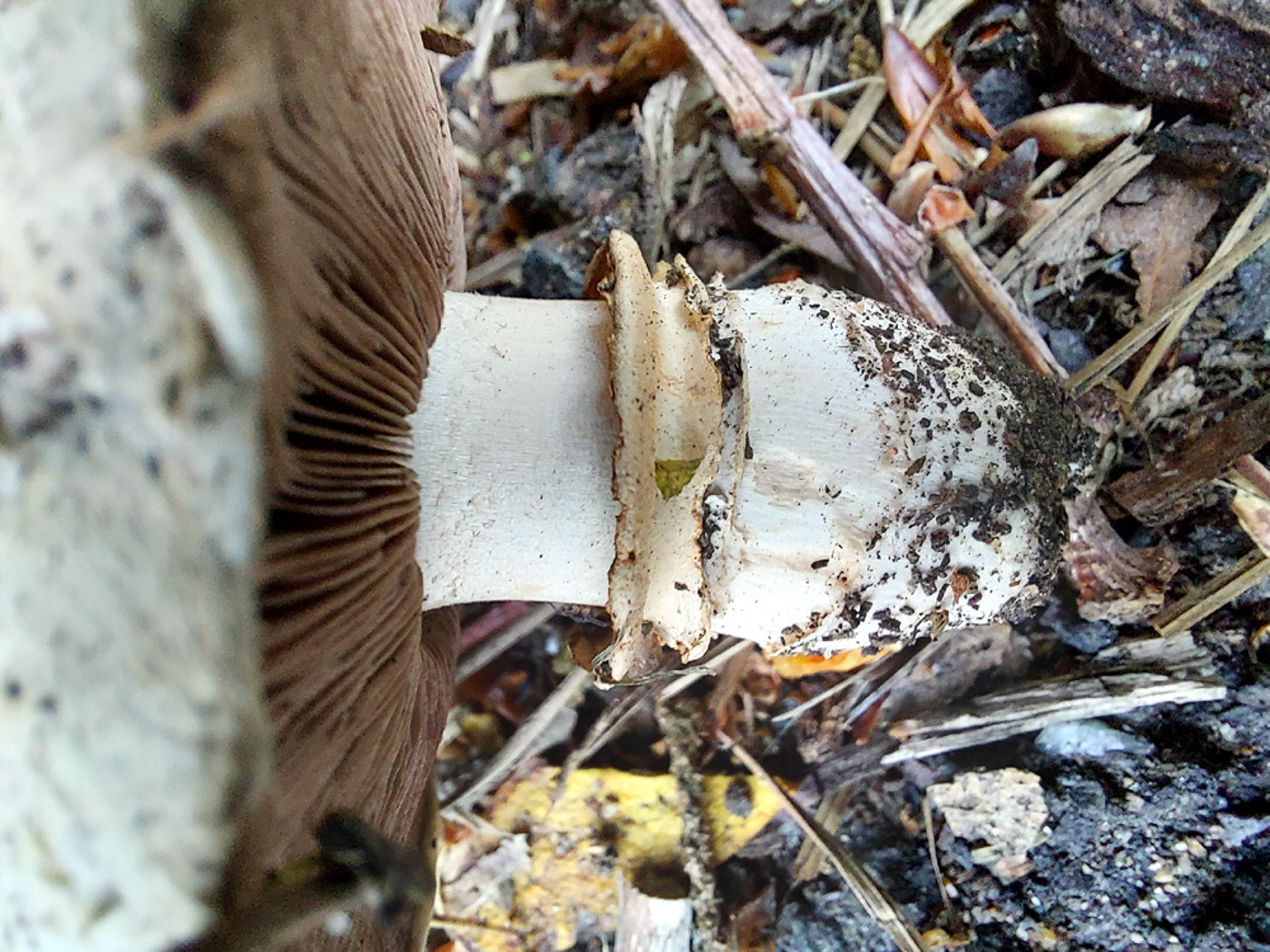 |
April 23rd Agaricus bitorquis (Pavement Mushroom) In Gerrards Cross Jesper Launder came across this singleton mushroom in a roadside verge and on turning it over was able to name the species Besides the fact that it favours urban habitats it has a very distinctive and persistent 'double' ring with a raised upper and lower edge - clearly visible in photo 3. The cap has clearly pushed its way through the soil with debris still attached and the gills are still quite pink and showing their 'free' attachment. Though not considered rare, we have just three previous county records and this is a new entry for Finds. |
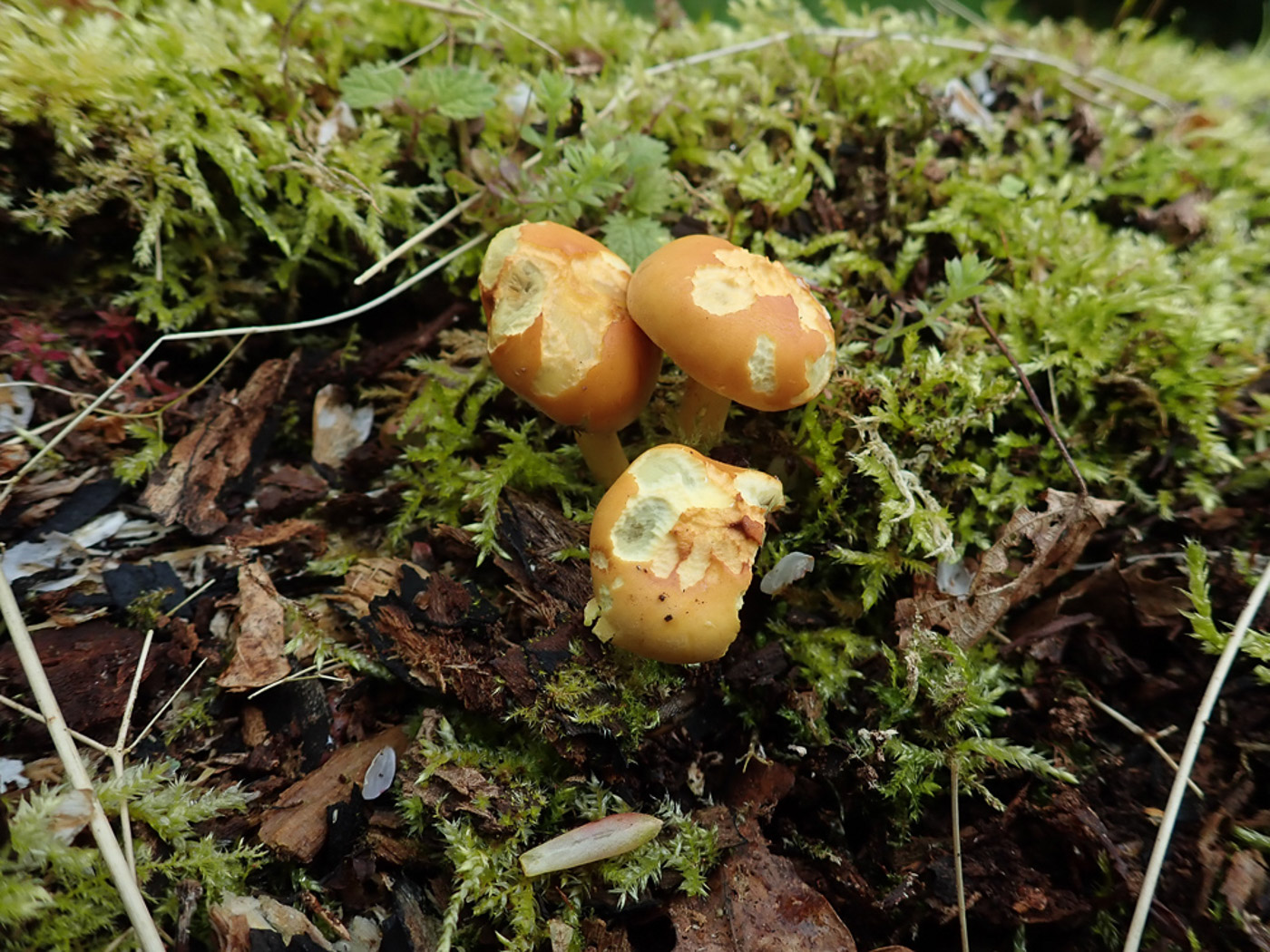
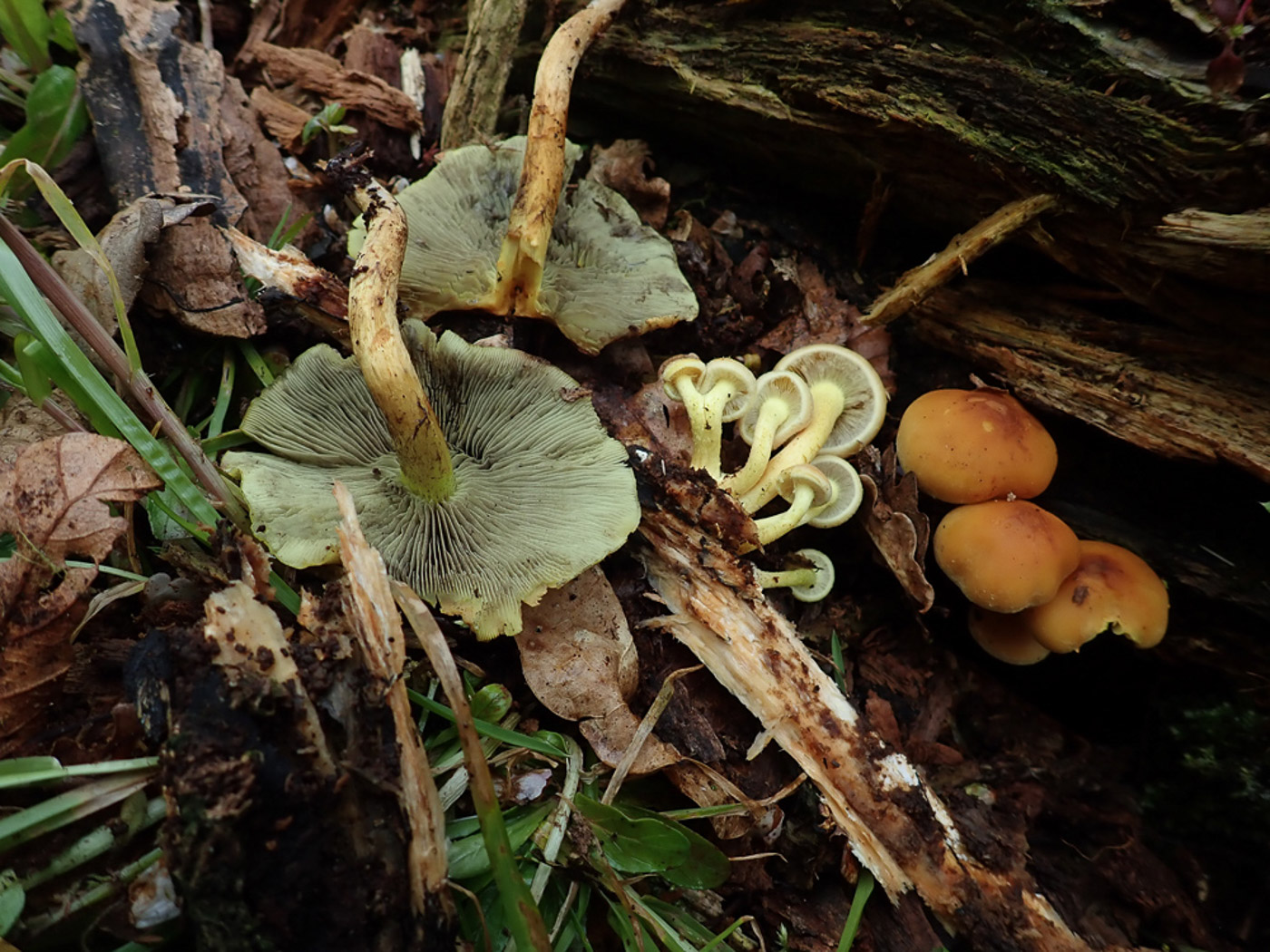
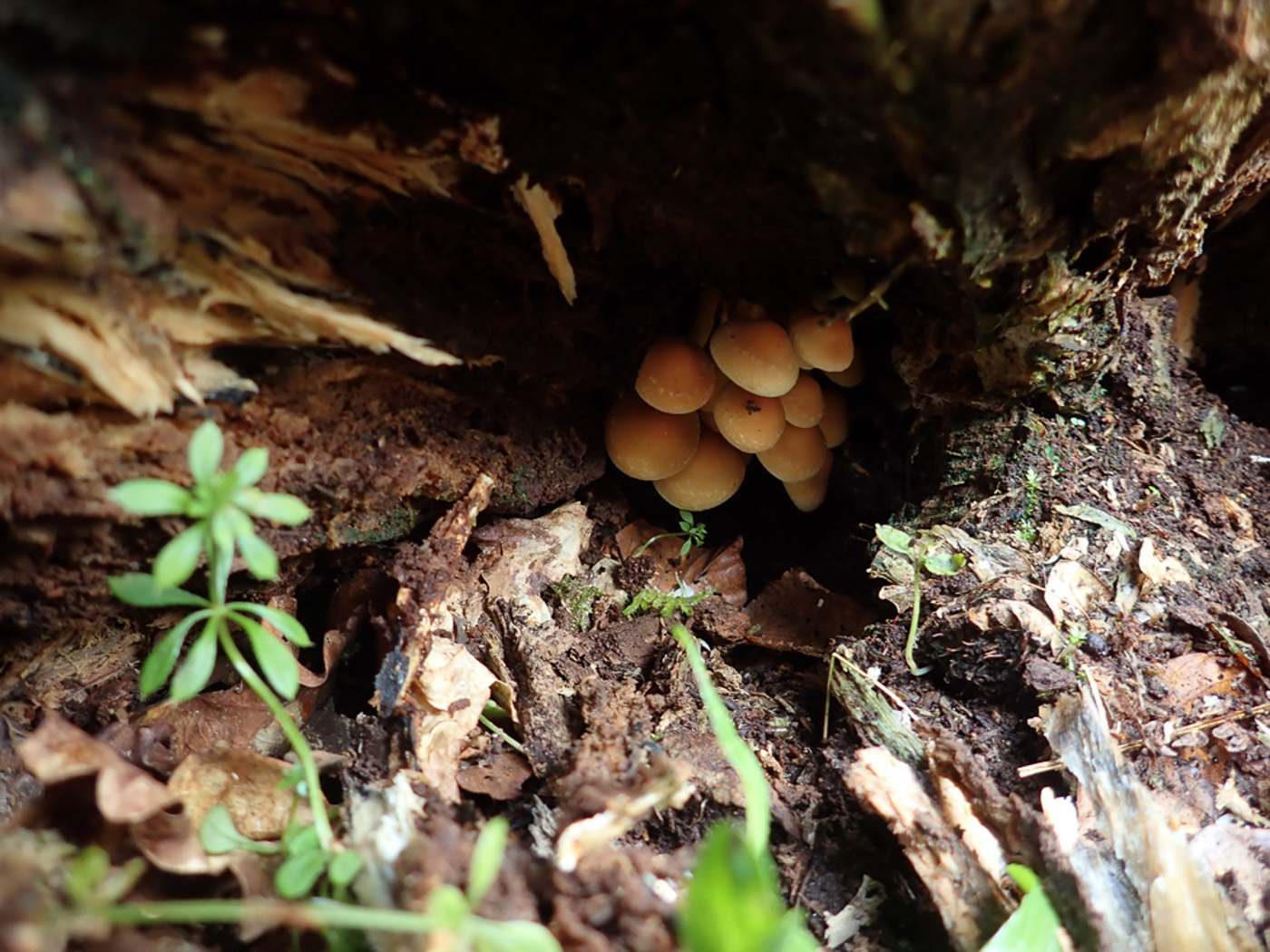 |
April 23rd Hypholoma fasciculare (Sulphur Tuft) On a fallen very rotten Lime trunk at Turville Heath Penny spotted three yellow rather nibbled caps. On closer inspection she recognised the species, then spotted more fruitbodies lurking inside a hollow in the trunk. Photo 2 shows how the sulphur yellow young gills soon darken to almost black as the spores mature and colour them accordingly. This is one of our commonest mushrooms growing on wood and is not that unusual to find at this time of year. Previous finds |
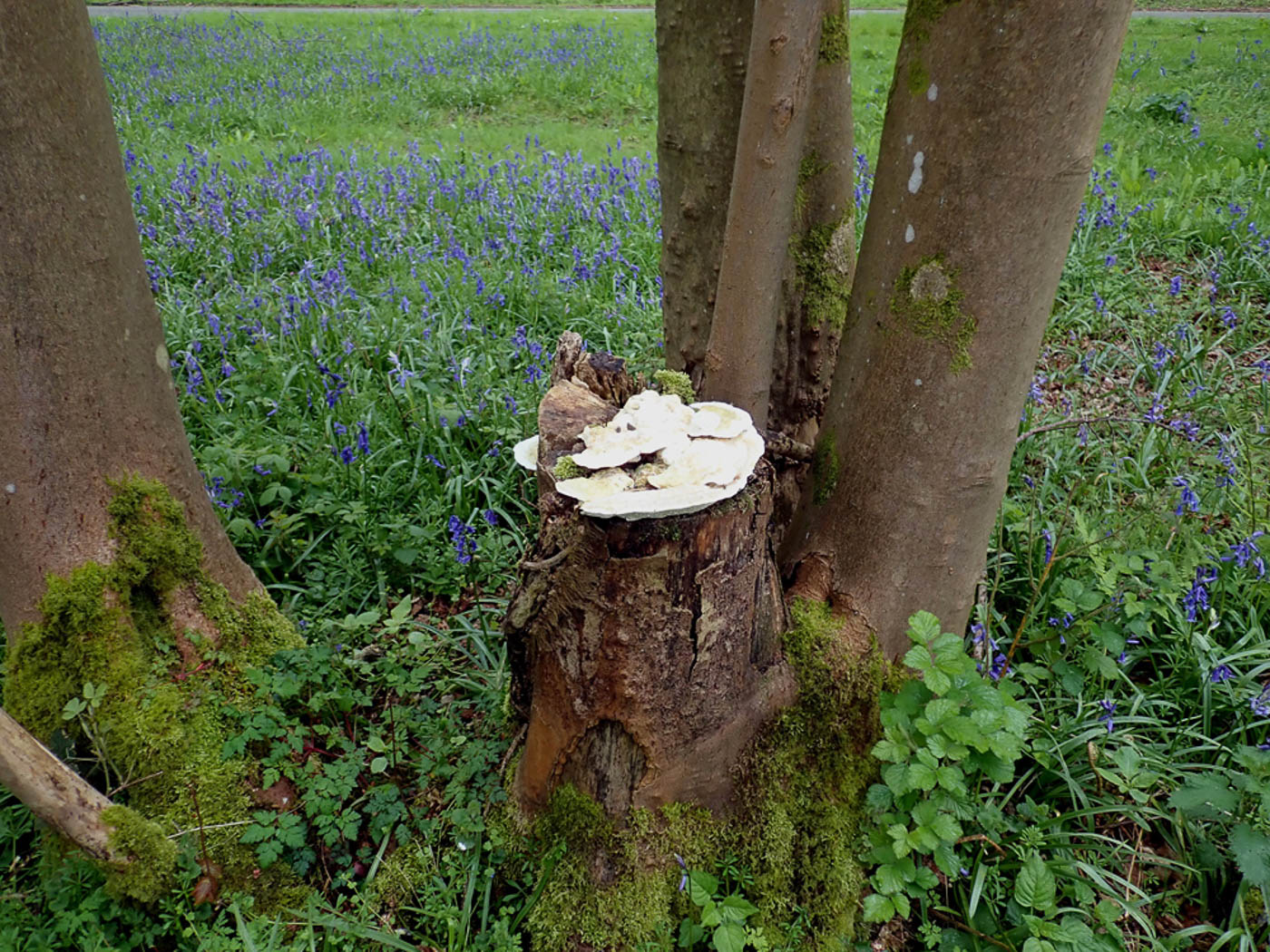
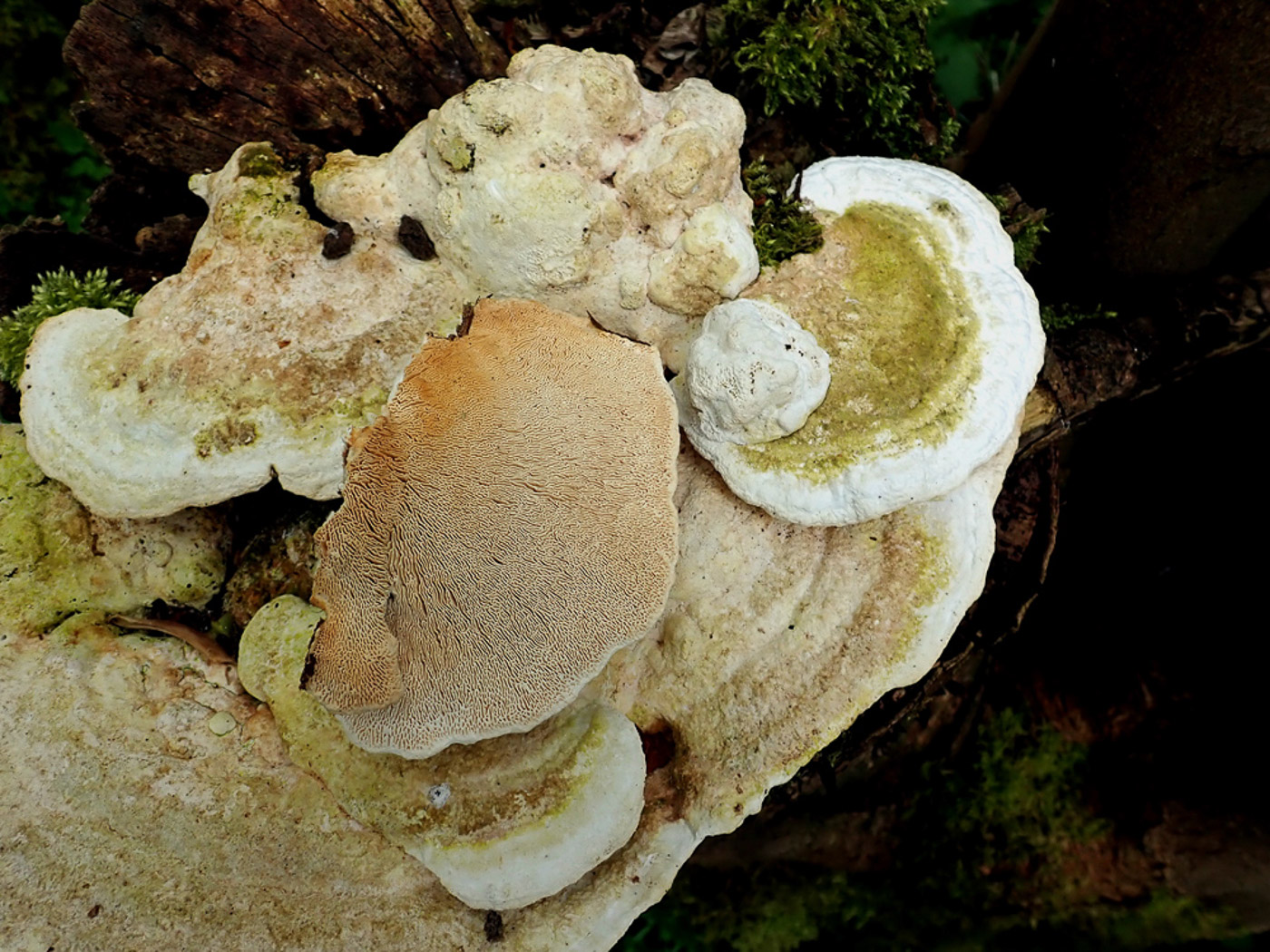 |
April 23rd Trametes gibbosa (Lumpy Bracket) Inspired by Sarah and Jesper's recent Truffle hunting success, Penny went searching in the Lime avenue at Turville Heath but found nothing! The only fungi of interest were this cluster of brackets on an Ash stump together with the entry above. Typical of the species is the green algal coating which often forms on its bumpy upper-surface, also the mazelike under-surface - all features showing nicely in photo 2. This is a very common bracket on fallen deciduous wood. Previous finds |
April 22nd 2024
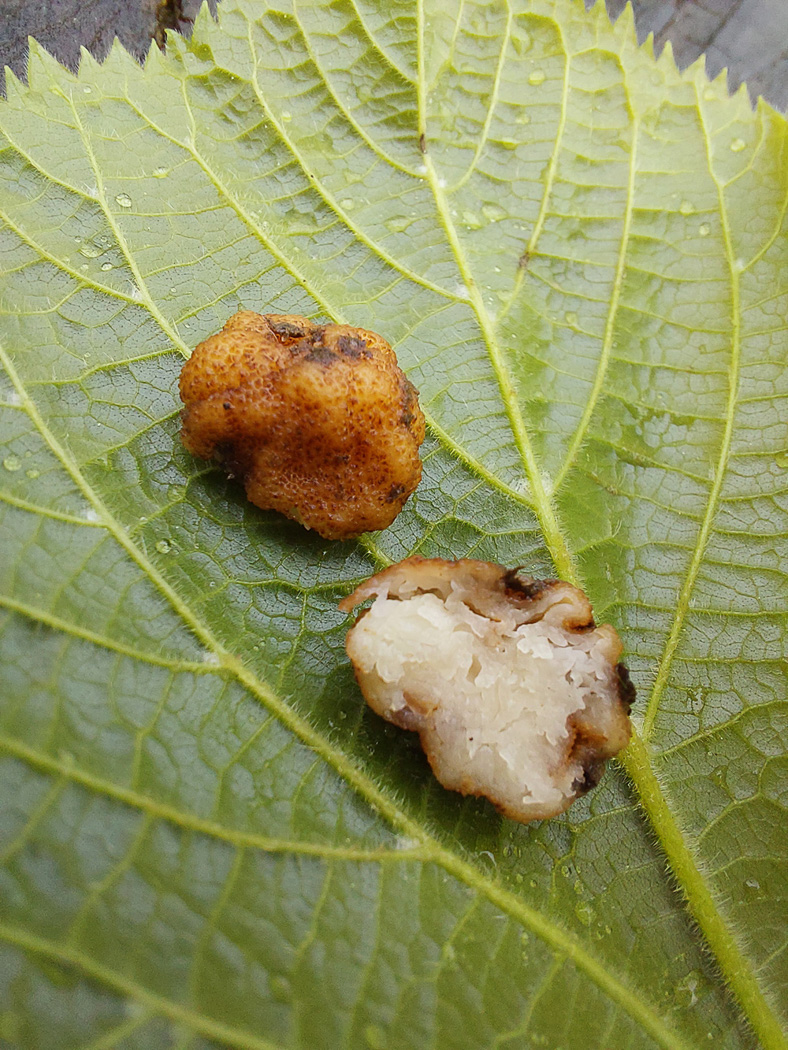 |
April 22nd Balsamia platyspora (a Truffle with no common name) This species, in Jesper Launder's garden, was his fourth species of Truffle to be found under his Lime tree in the space of two days! Amazing! This is the third year running that he's found it here though this is by far the earliest date as can be seen from our previous entries. See the notes with those records for more. Previous finds |
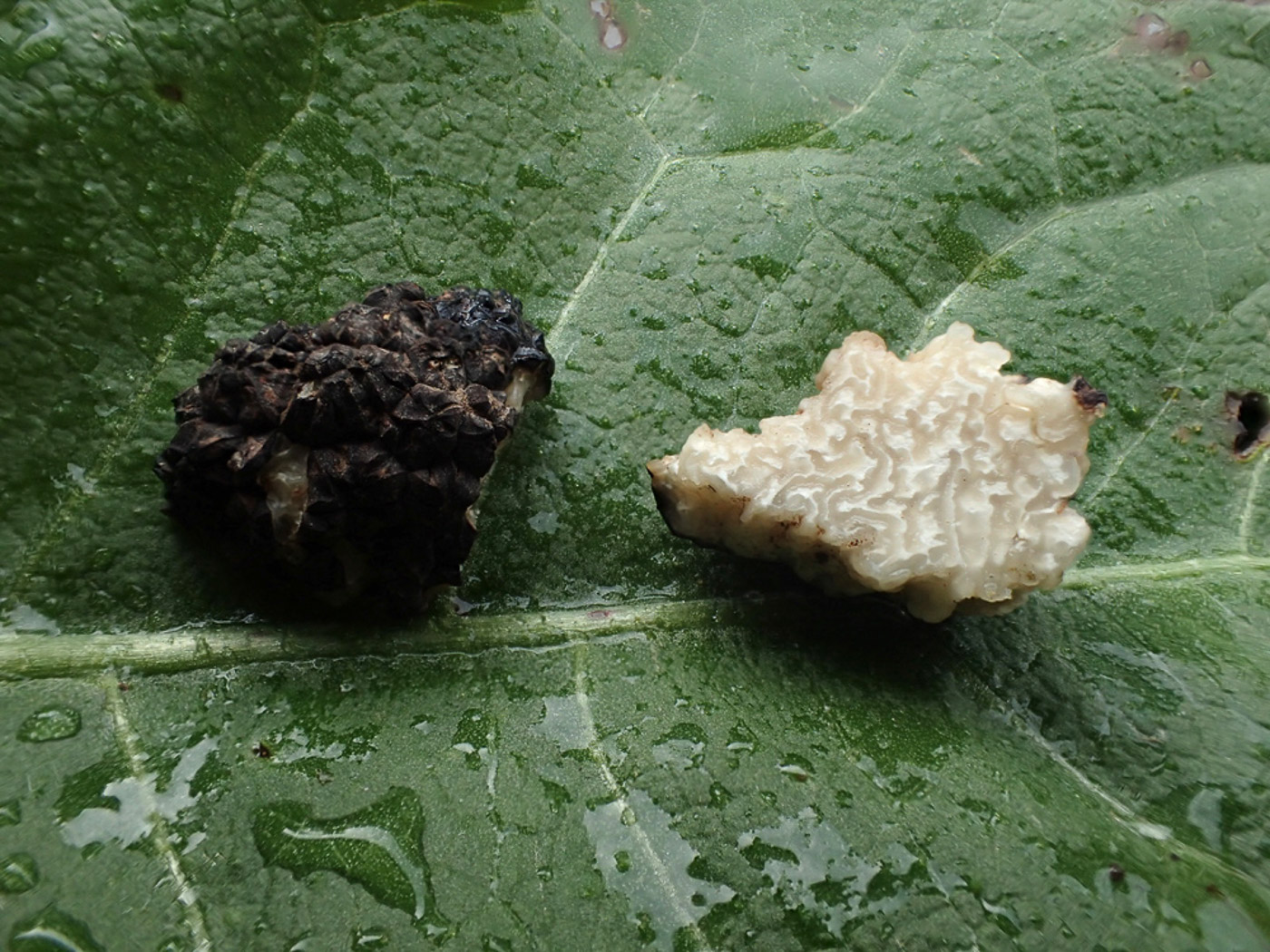 |
April 22nd Tuber aestivum (Summer Truffle) Under Lime in Hughenden Woods Sarah Ebdon discovered this somewhat early fruiting of a distinctive and quite common truffle species (genus Tuber is a member of the hypogeous ascomycetes - ie related to cup fungi but growing underground). It is certainly the truffle we have the most county records for but these still can be counted on two hands! Its black knobbly surface and marbled interior are easy to recognise and it can get to 8-9 cm across though today's was pretty tiny judging from the leaf in Sarah's photo! What a good find! Previous finds |
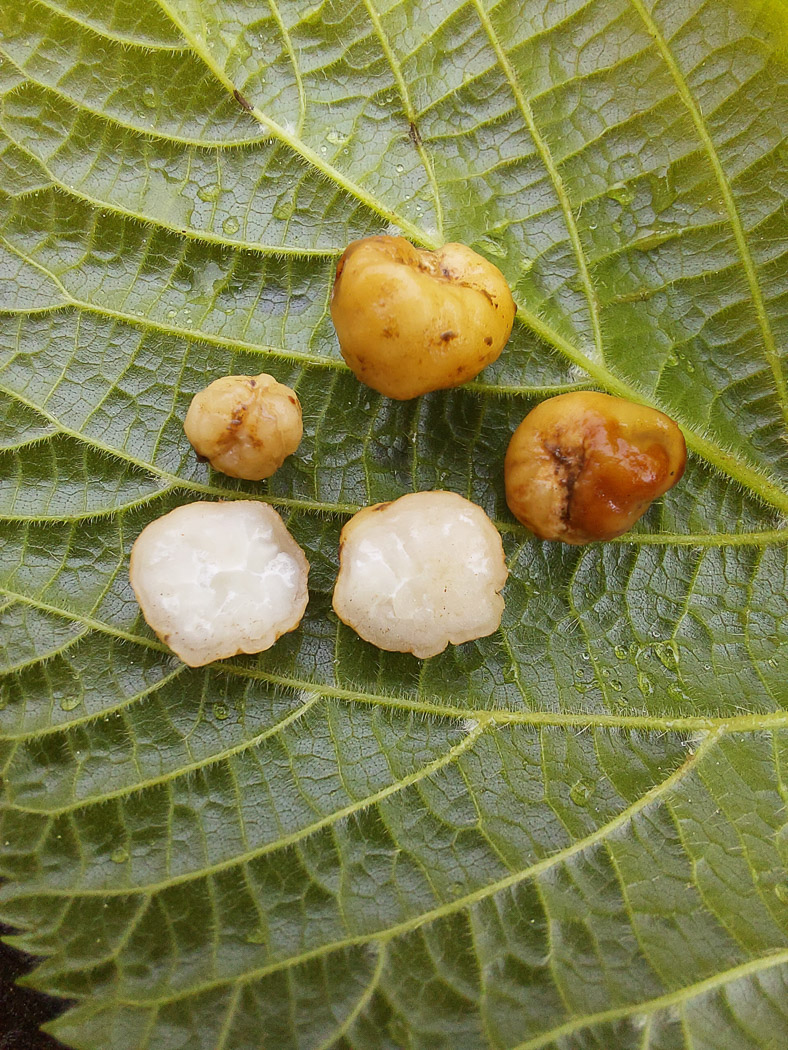 |
April 22nd Tuber rufum (a Tuber with no English name) This was the third tuber species Jesper uncovered under the Lime in his garden in Jordans Village in the space of two days! This is one of the ascomycete hypogeous species (those related to cup fungi which grow just under the surface of the soil). Though he checked for spores to confirm his ID the specimen was still too immature to produce any, but he knows the species well and the uniform round shape together with pale colour already developing rufous tones were enough for him to make his ID. It never gets bigger than 2 cm across or so and the size here can be assessed by the leaf he's placed it on. We have just two previous county records though the likelihood is that this is a common species. Previous finds |
April 21st 2024
April 20th 2024
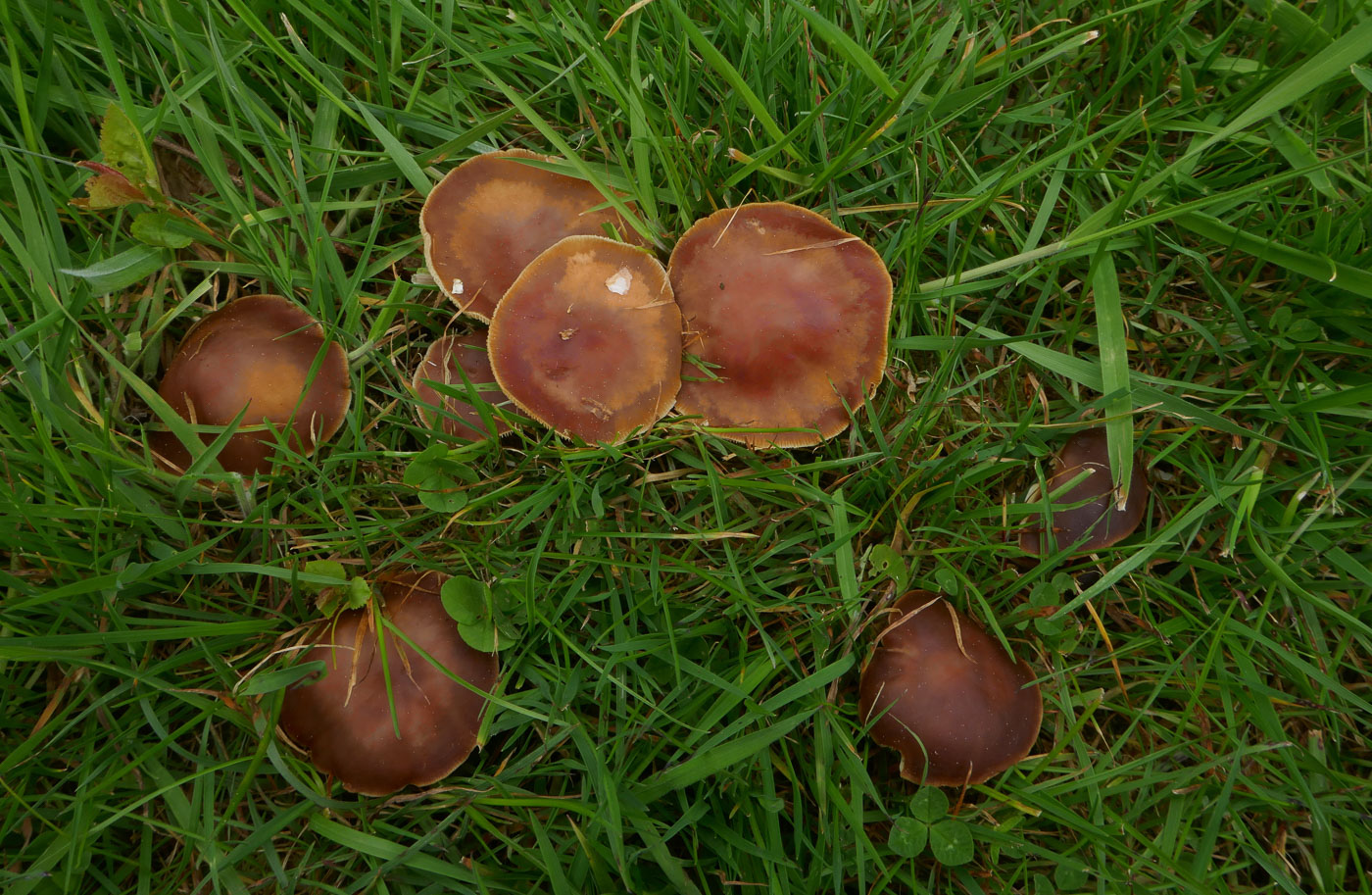
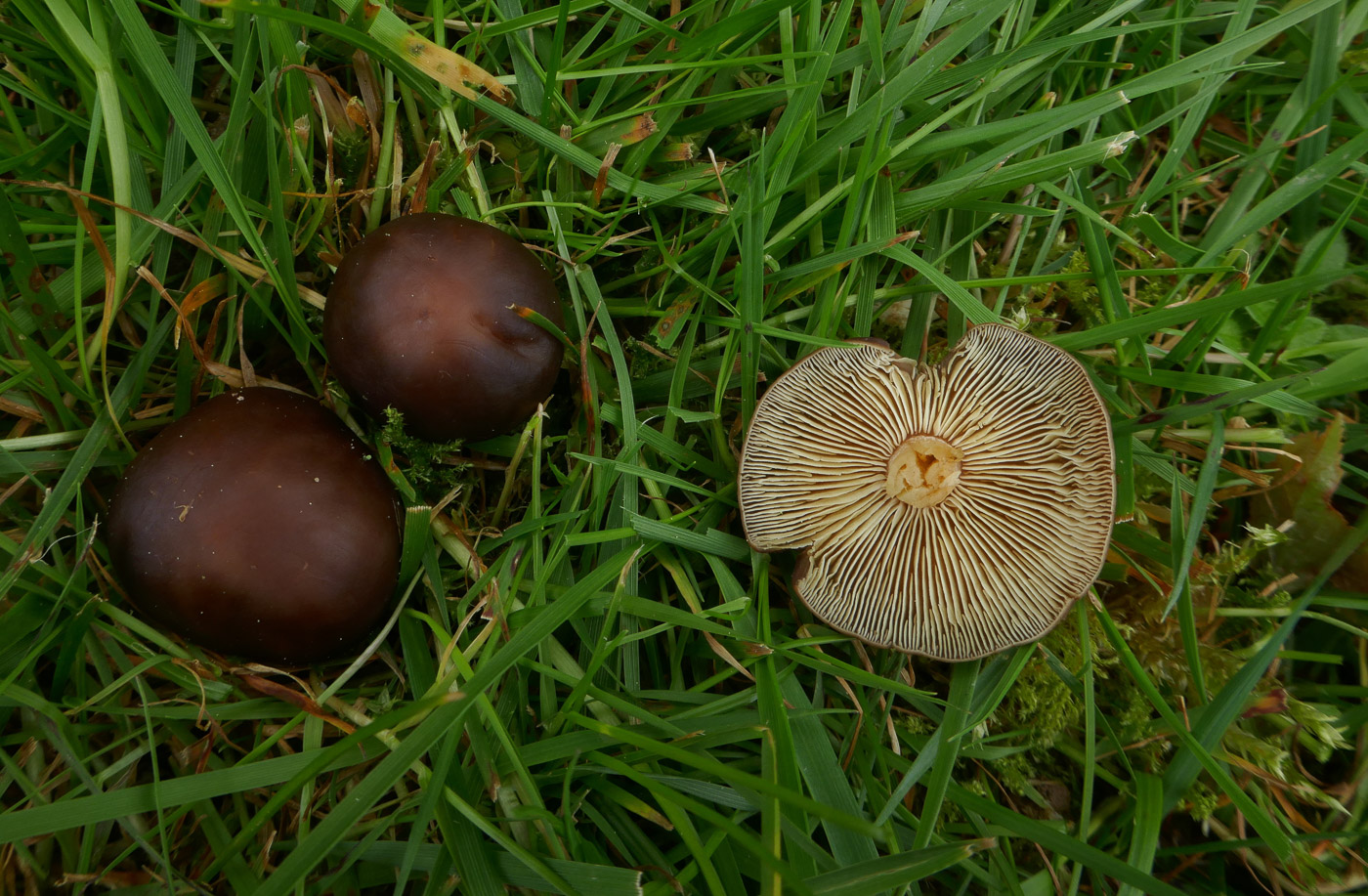 |
April 20th Gymnopus ocior (Spring Toughshank) At Stampwell Farm this unusual Toughshank has appeared several times in the last few years and is often an early fruiter. Similar to the much more common G. dryophilus (Russet Toughshank) it has a more intensely coloured cap as can be seen here, also the gills tend to be yellow though this colour always seems reluctant to show well in photos! Jackie assures me the gills looked decidedly yellow here. We found a possible third lookalike species in the Burnham Beeches Mire on our midweek walk there a few days ago. See my report for a photo and further comment on the issues involved here. Previous finds |
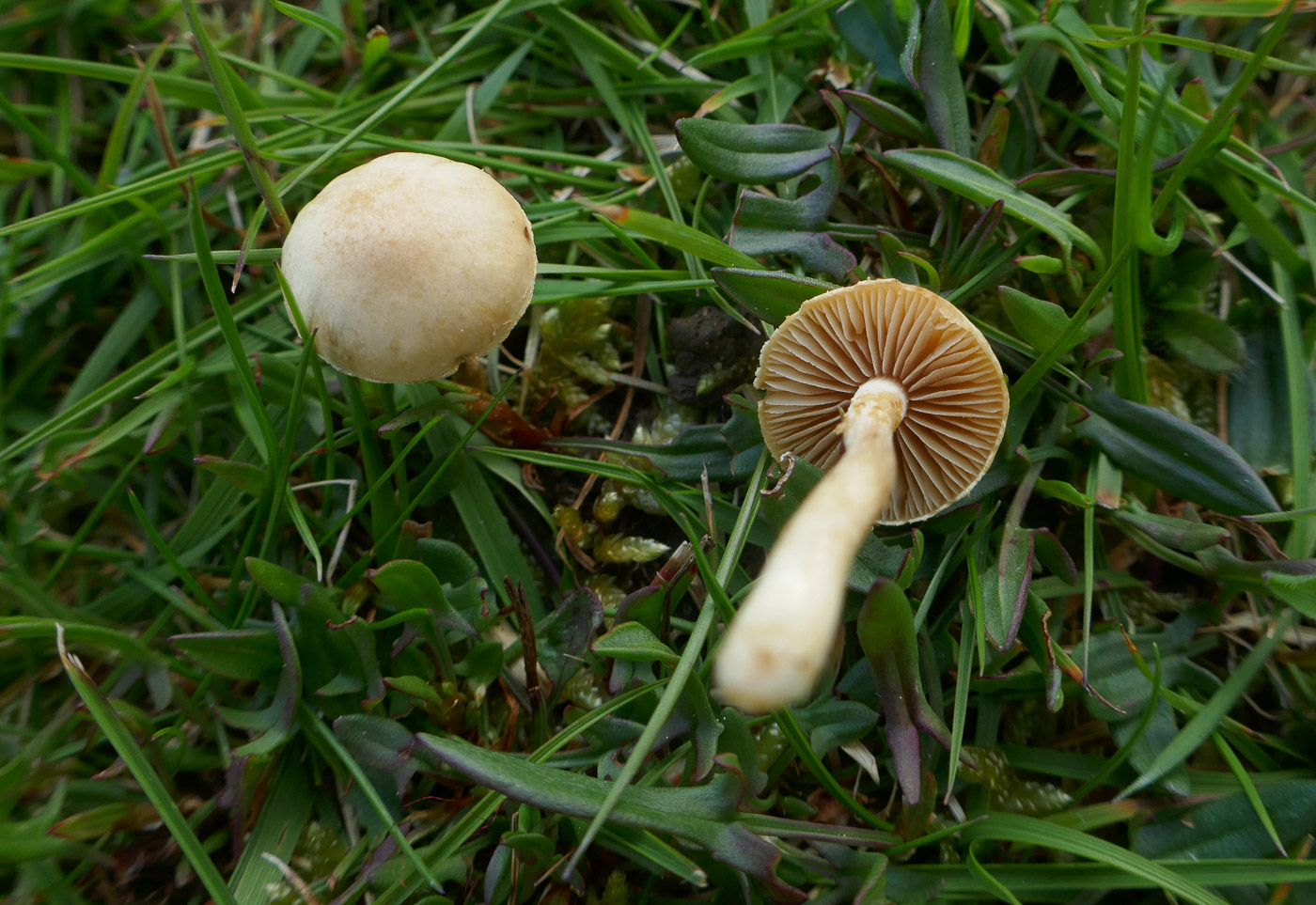
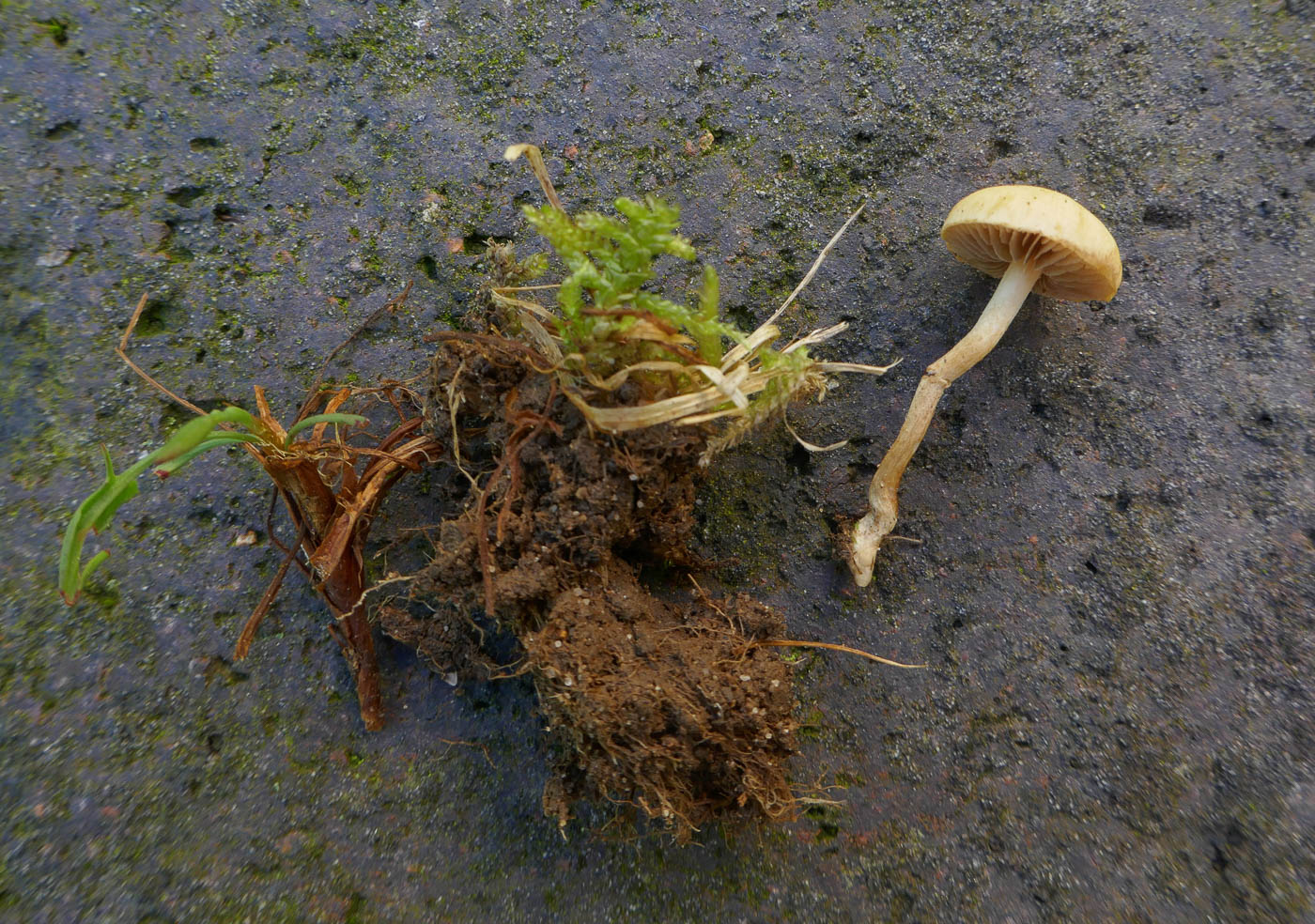 |
April 20th Agrocybe pediades (Common Fieldcap) At Stampwell Farm this species is a regular at this time of year, and Jackie Ewan reports that it is just starting to appear in the grassy areas. She often notes that the stem tends to have a kink, clearly visible here. The genus has spores (also gills given time) which are brown, fruits in spring and several members, like this one, tend to lose the ring on the stem quite quickly. Previous finds |
April 18th 2024
April 16th 2024
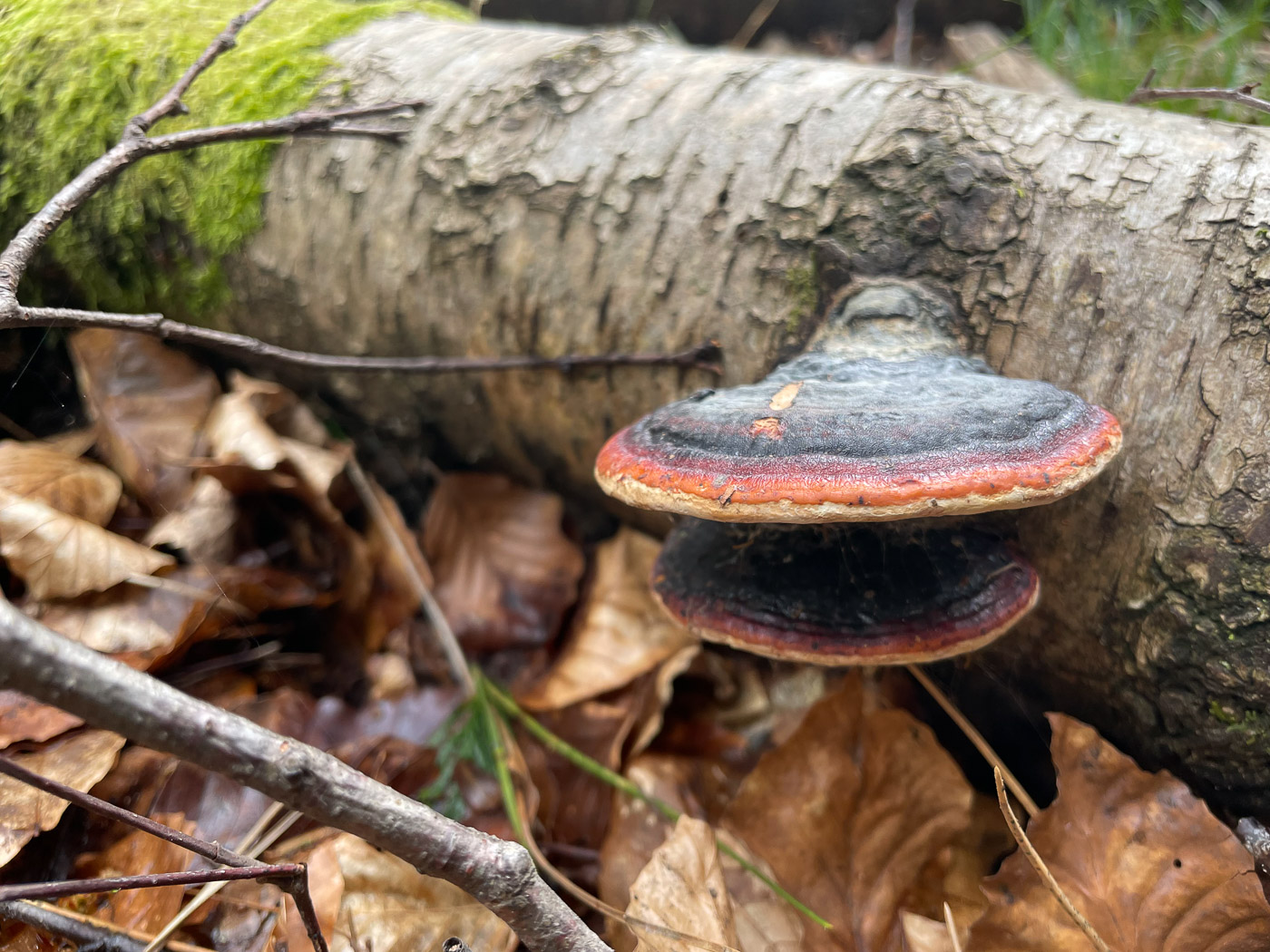 |
April 16th Fomitopsis pinicola (Red-belted Bracket) In Gt. Beard's Wood nr Beaconsfield Sarah Ebdon came across this example of a bracket which is becoming increasingly common locally, this time found on Birch and really showing off its red outer belts to perfection. When looking as it is here it is an easy one to name, but glancing through our many other entries will show how very different in appearance it can be depending on its stage of maturity. It seems to be common on both Beech and Birch though is less frequent around here on Pine despite its Latin species name. Previous finds |
April 12th 2024
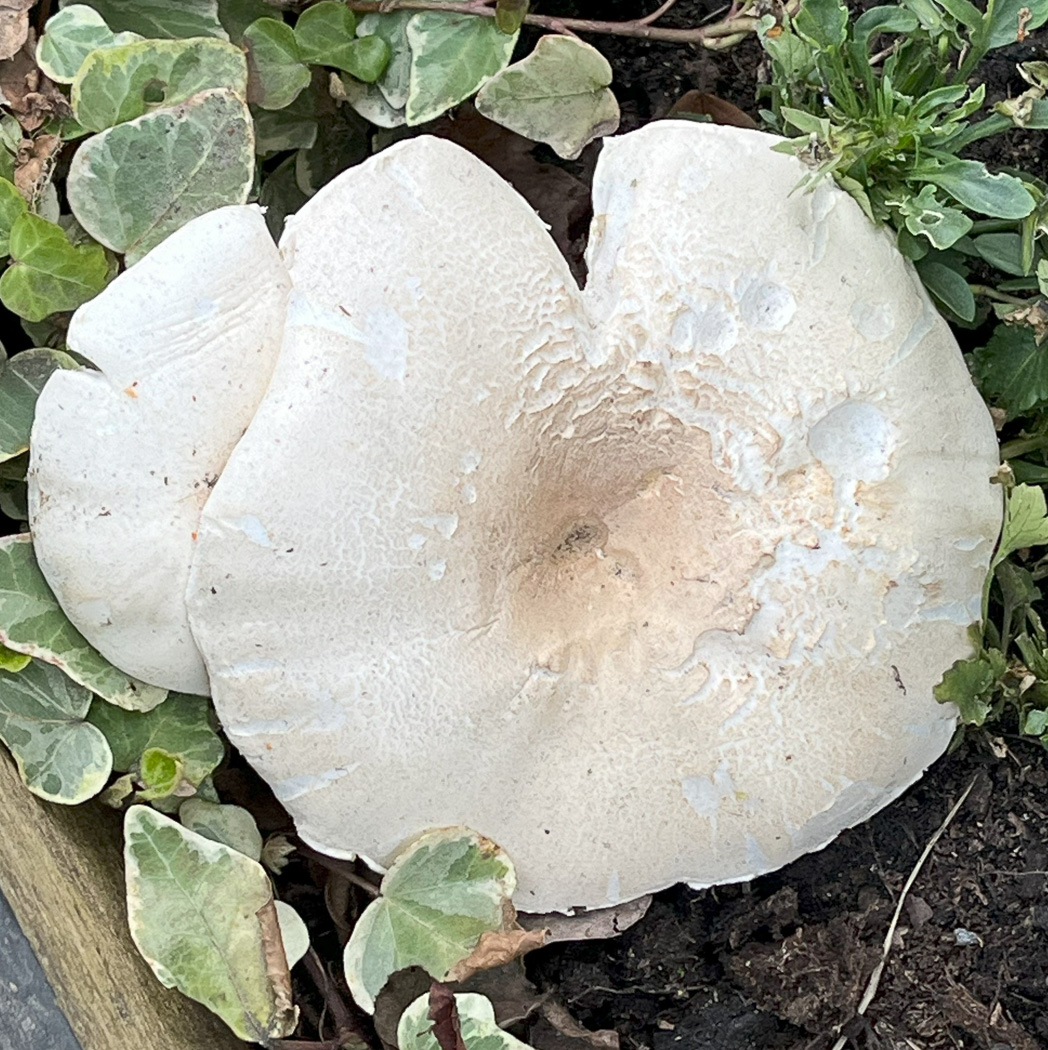

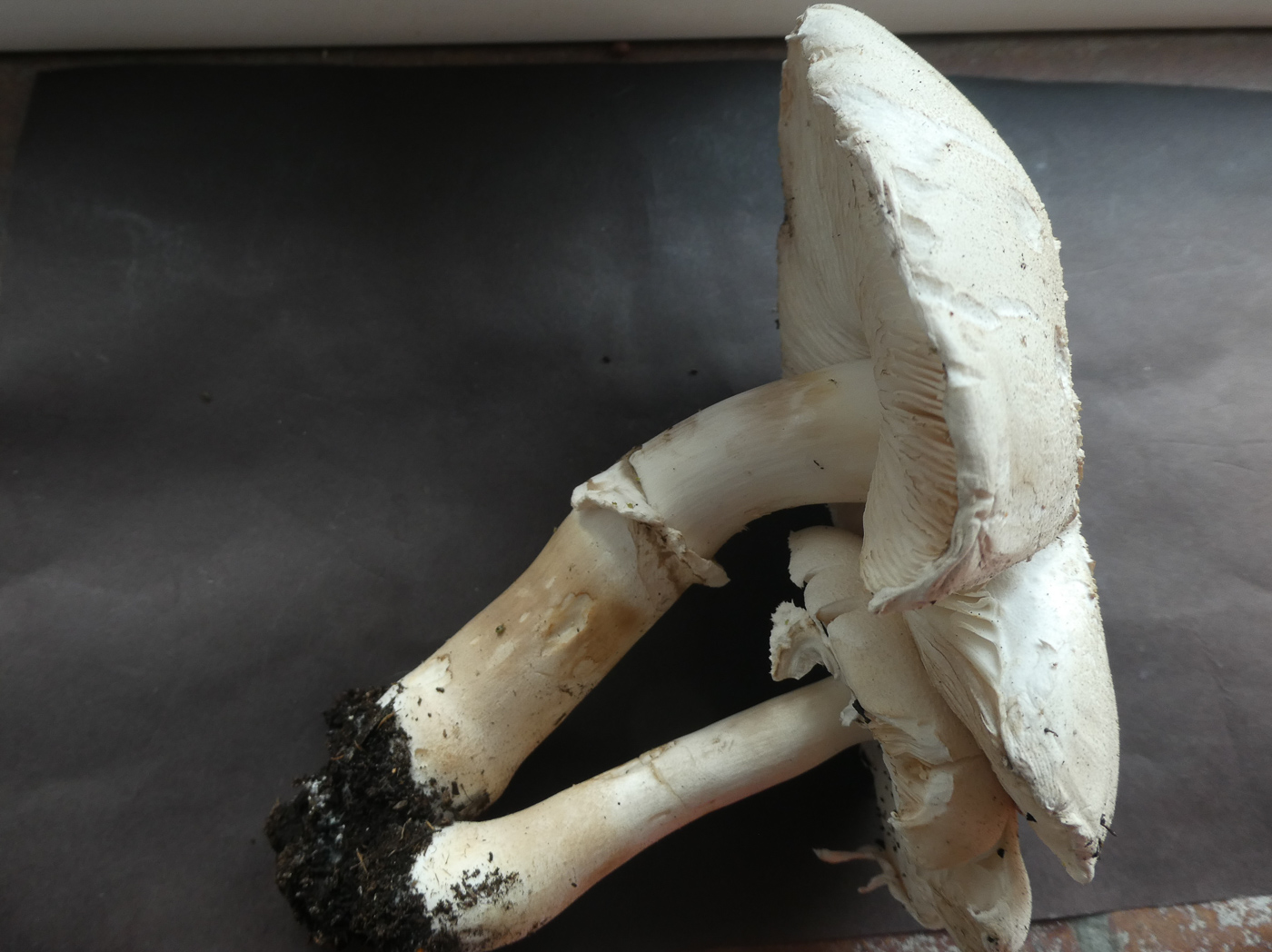
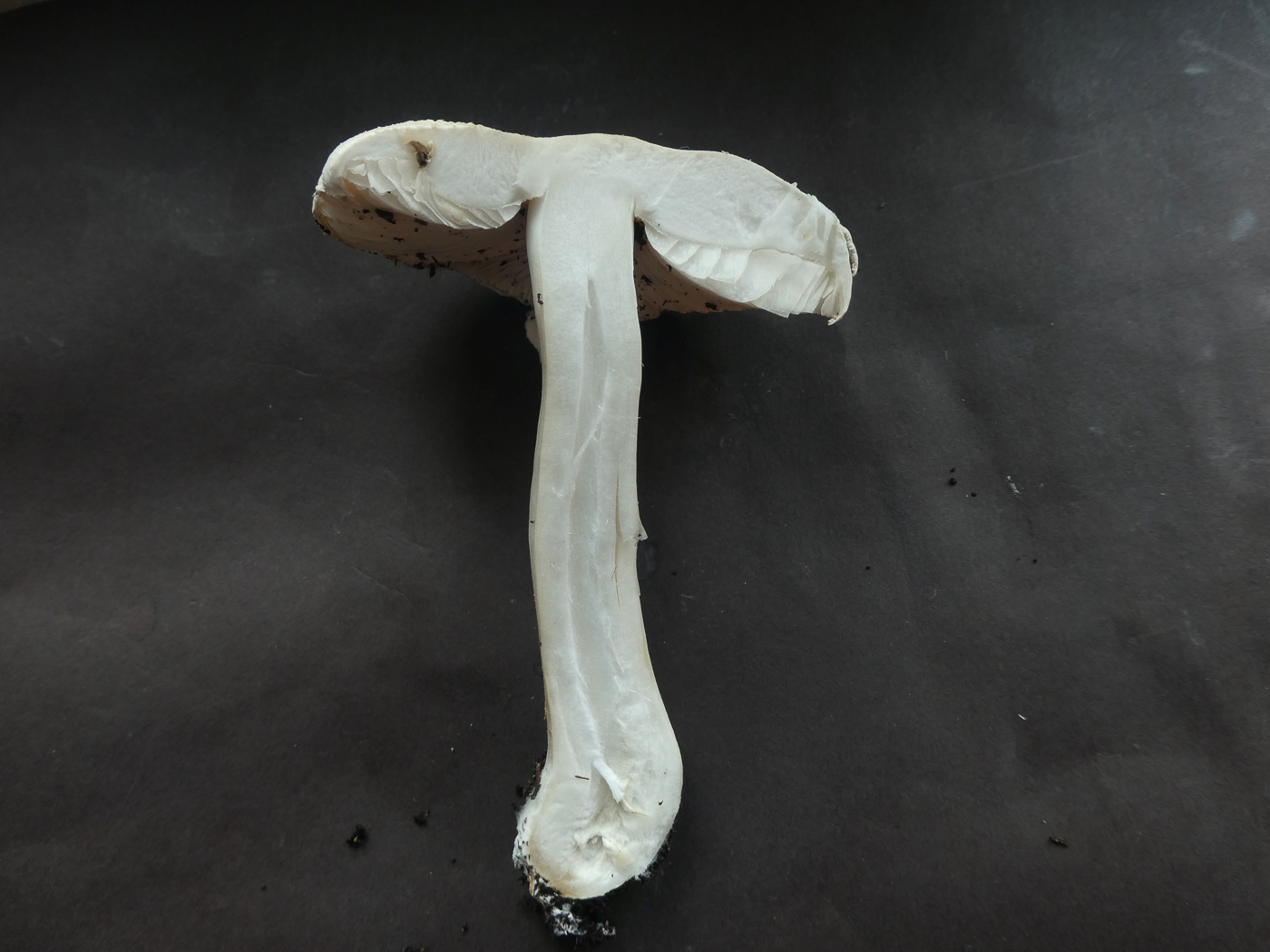 |
April 12th Leucoagaricus subcretaceus (a species of White Dapperling) Jim Will noticed this impressively large pair fruiting in a trough in a pub garden near Stoke Poges containing winter / spring flowers. The largest cap was 12cm across, so these were sizeable mushrooms! He took a spore print to make quite sure the spores were indeed white like the gills (hence pointing to genus Leucoagaricus), then checked the microscopic details which indicated L. leucothites or some closely related species. The large size certainly points to L. subcretaceus for which we have no county records with only 16 records in FRDBI, all from S. England. This was a nice find and will be dried for sequencing. |
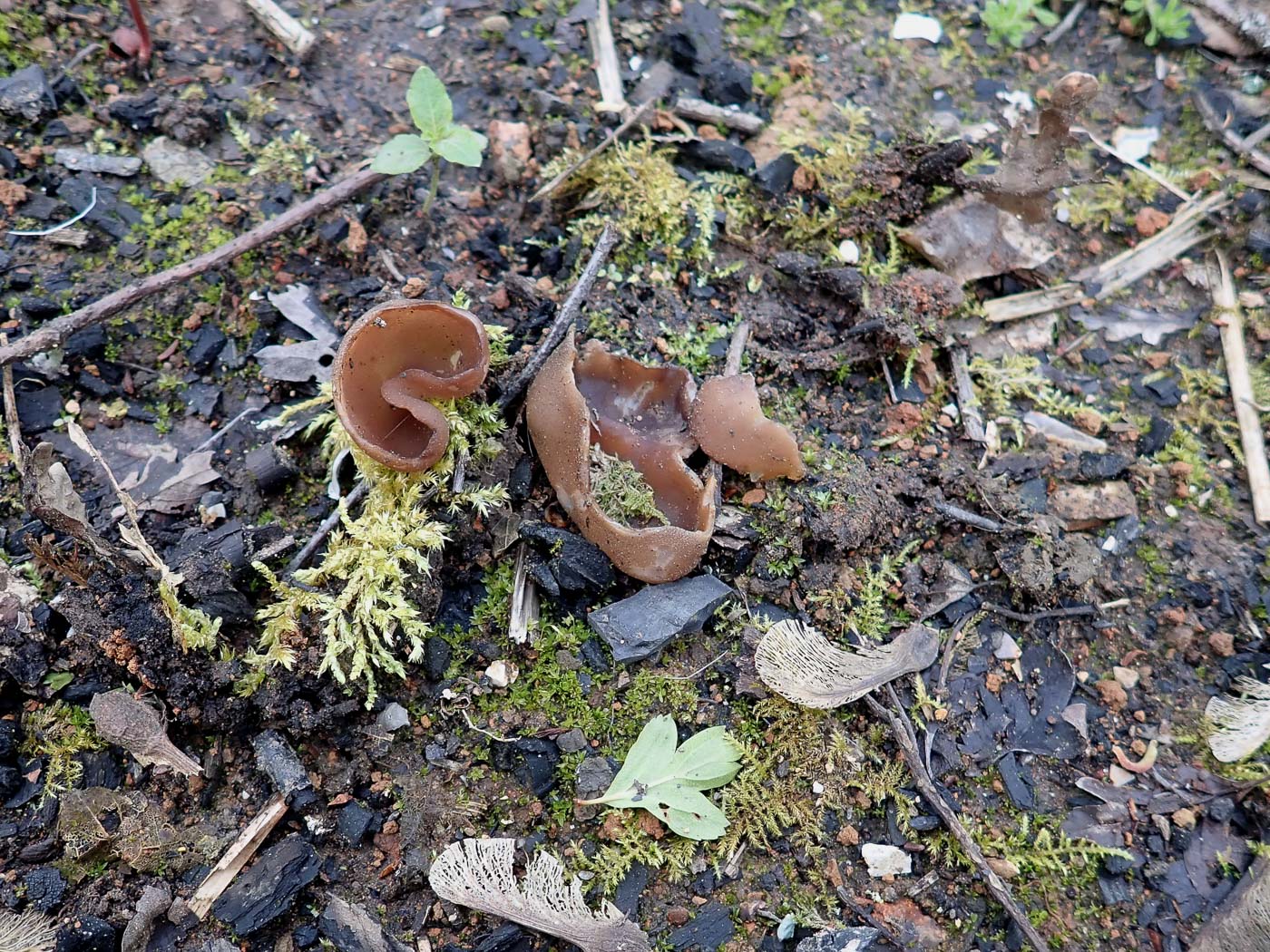 |
April 12th Peziza petersii (a cup fungus with no common name) On some recently cleared burnt ground at Turville Heath Penny noticed a couple of dark brown cups which she guessed might be this species - one which favours bonfire sites - but having been fooled by a very similar lookalike from a different genus found on another bonfire site here just a month earlier, she took it home to check. The lookalike, Plicaria endocarpoides, has very different microcharacters, but today's matched the Peziza species fine and is one she found here last year. Previous finds |
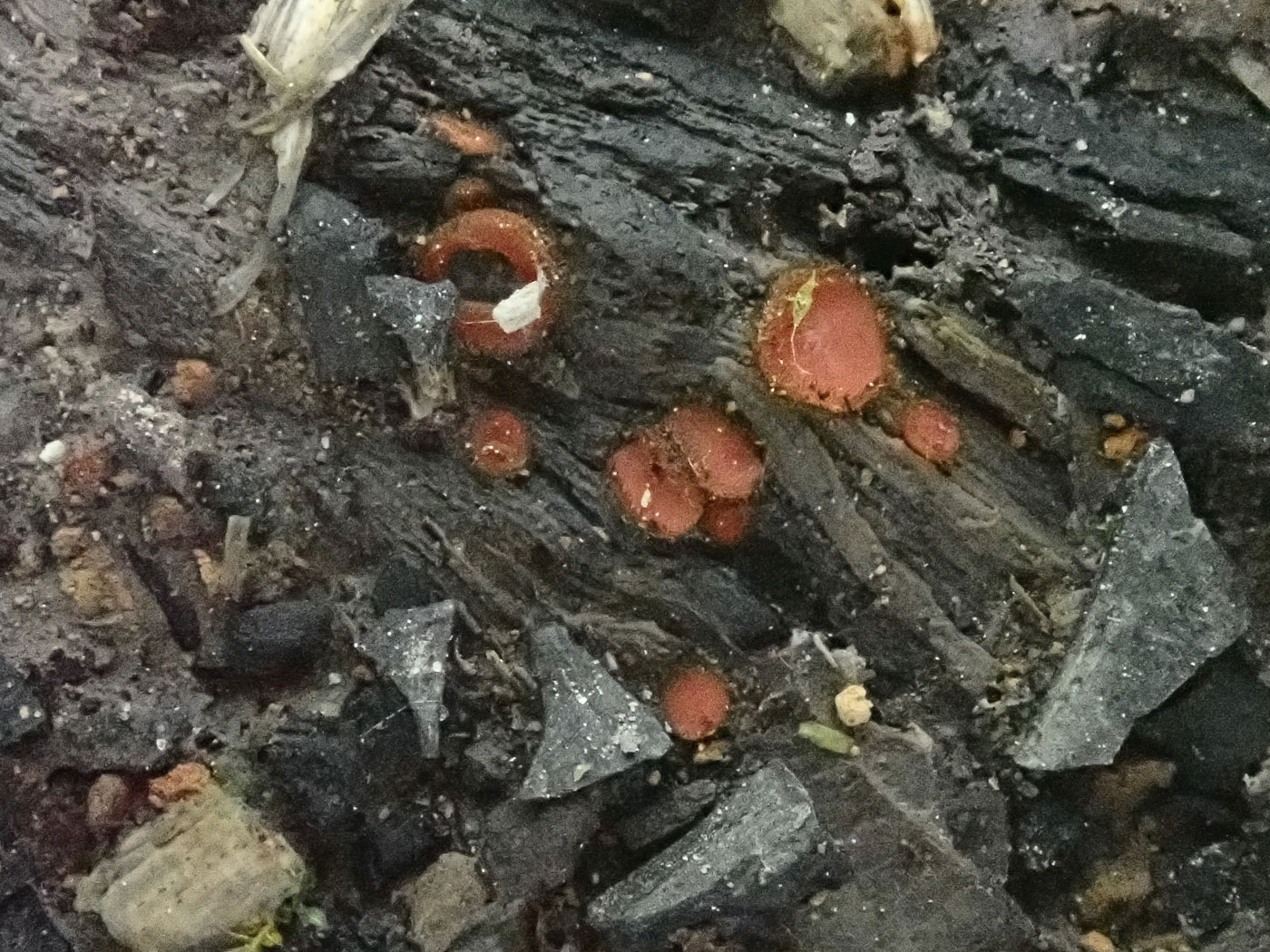 |
April 12th Scutellinia subhirtella (an Eyelash Fungus with no common name) On some recently cleared burnt ground at Turville Heath Penny noticed a few tiny bright orange red spots on some rotten wood. Sure enough on closer inspection they had dark hairs around the edge placing them in genus Scutellinia, though the hairs at first glance didn't look convincingly long enough for the common S. scutellata, also they had a slightly translucent more orange appearance. Taking note of the spore size and markings together with the length of the hairs, it keyed out in various different keys to S. subhirtella, a species for which we have a good handful of records - a couple from burnt ground. Apologies for the very ordinary photo but luckily Claire Williams's photos in Previous finds shows the species off much better. Previous finds |
April 8th 2024
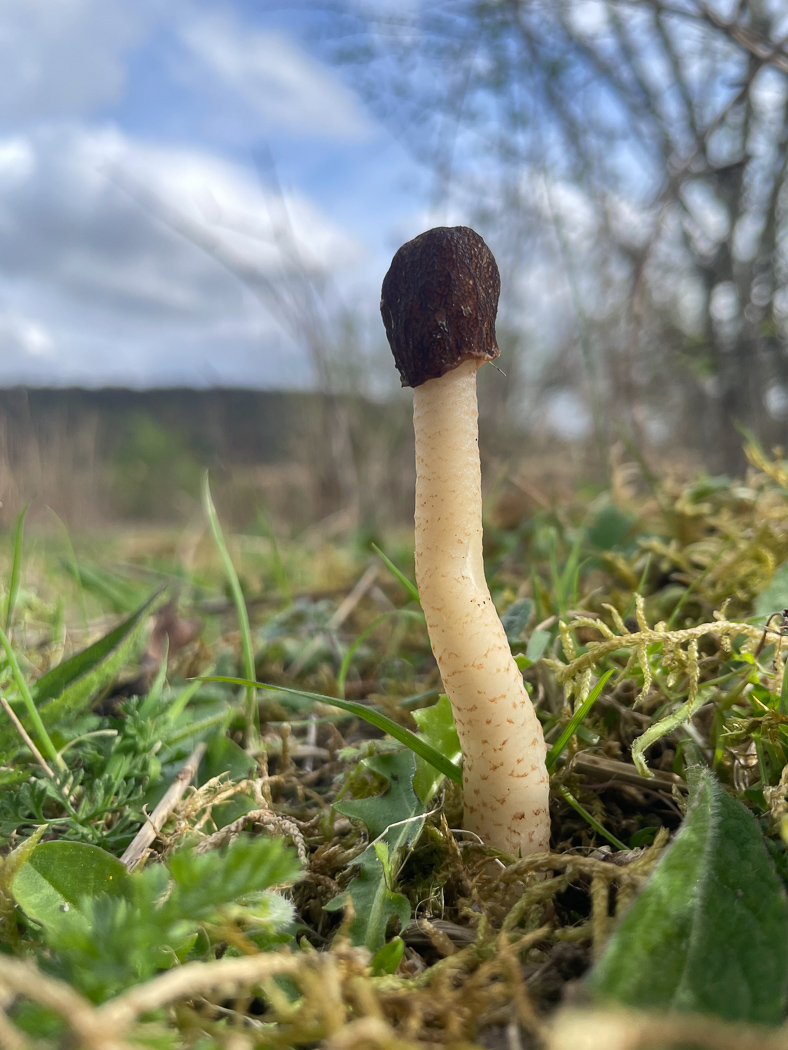 |
April 8th Verpa conica (Thimble Morel) Near Saunderton Sarah Ebdon spotted a likely piece of habitat for this relative of the Morels and was rewarded with a couple of specimens. The tall stem with relatively small head is not unusual with this distinctive species which here is showing nicely why its English name was chosen. The comments written for the entry below apply just as aptly for this springtime fruiter. Previous finds |
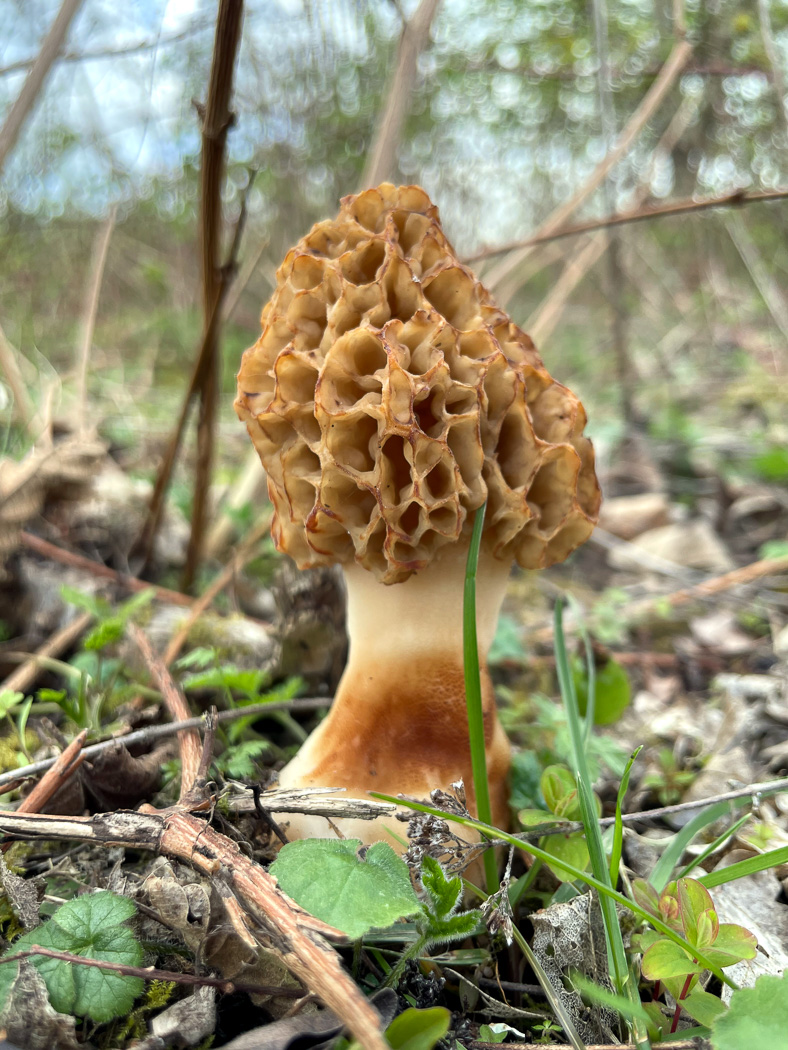 |
April 8th Morcella esculenta (Morel) On a spot near Princes Risborough where she saw this species in good numbers last year, Sarah Ebdon went searching for Morels again and found just this one rather squat example. There are good years and bad years for these springtime fruiters; last year was especially good but this year seems not nearly so prolific. There's still time, however, but they remain as elusive and unpredictable as ever. Previous finds |
April 6th 2024
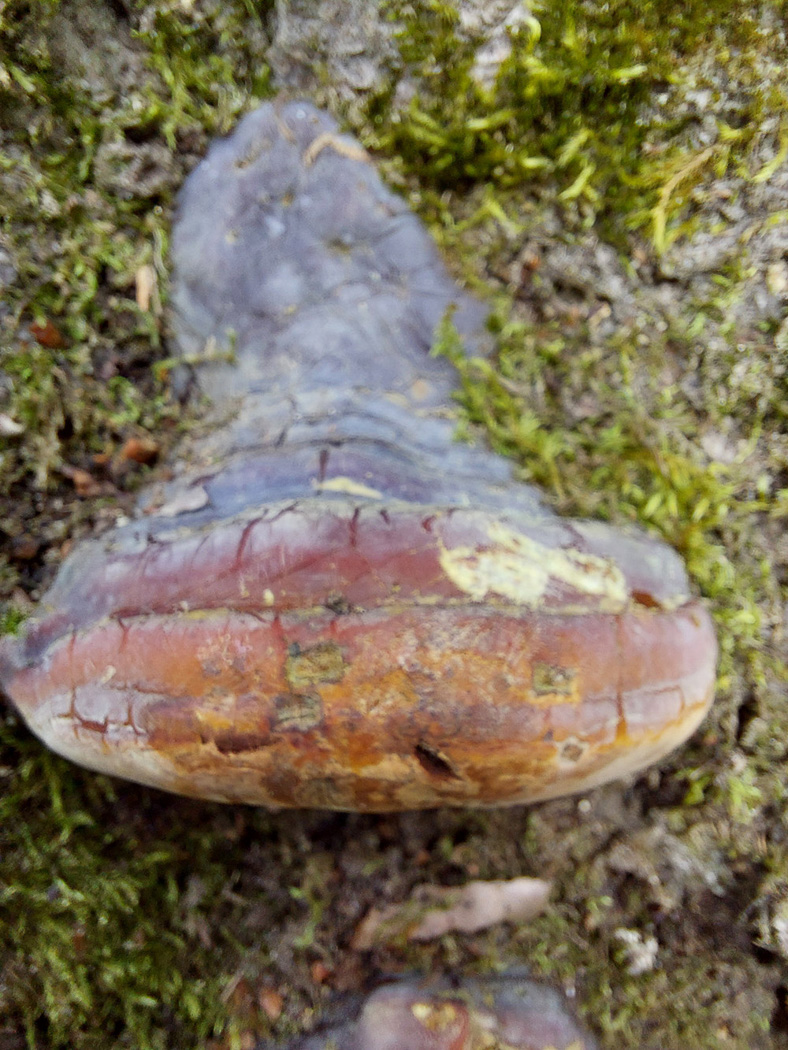 |
April 6th Ganoderma pfeifferi (Beeswax Bracket) On a mature Beech in Chalfont St. Peter Jesper Launder saw this substantial bracket which from its shape, colour and pale pores which bruise brown was clearly some sort of Ganoderma. Suspecting that the cuticle on the upper surface had the waxy resinous coating which would bubble and melt if flamed, he tried this which then confirmed his ID. The cuticle of G. resinaceum also reacts in this way but in our area is more often found on Oak whereas G. pfeifferi is more often on Beech. Both species occur on mature trees but neither are very common. |
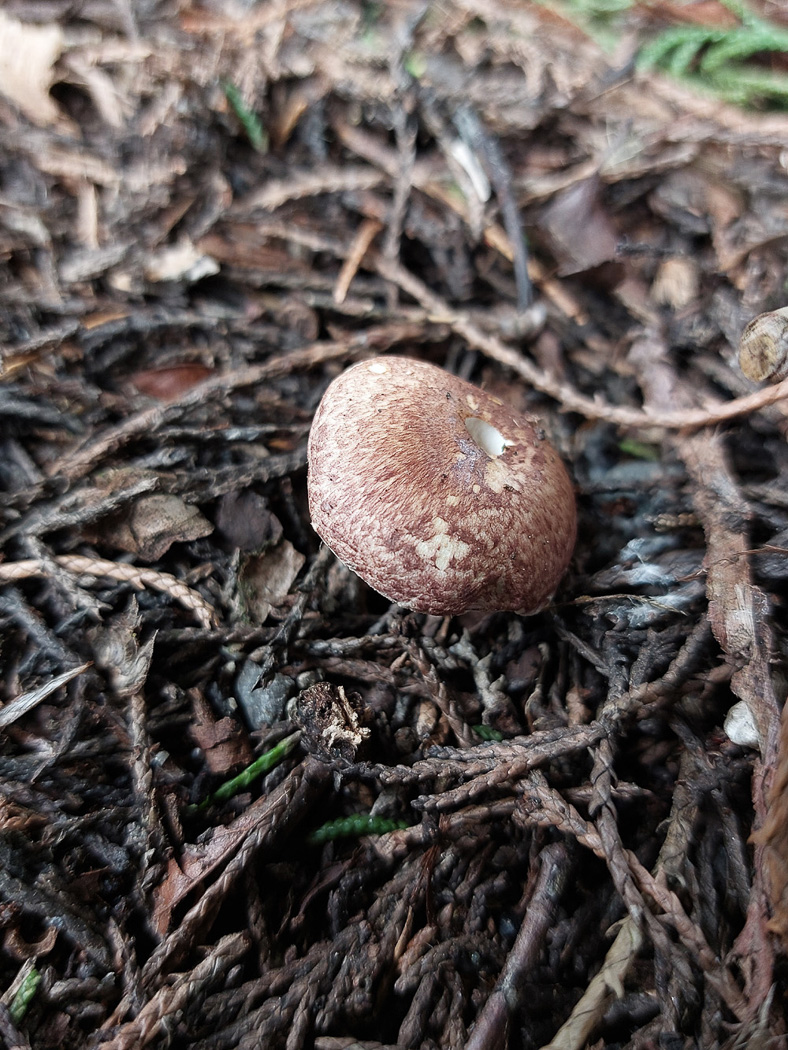
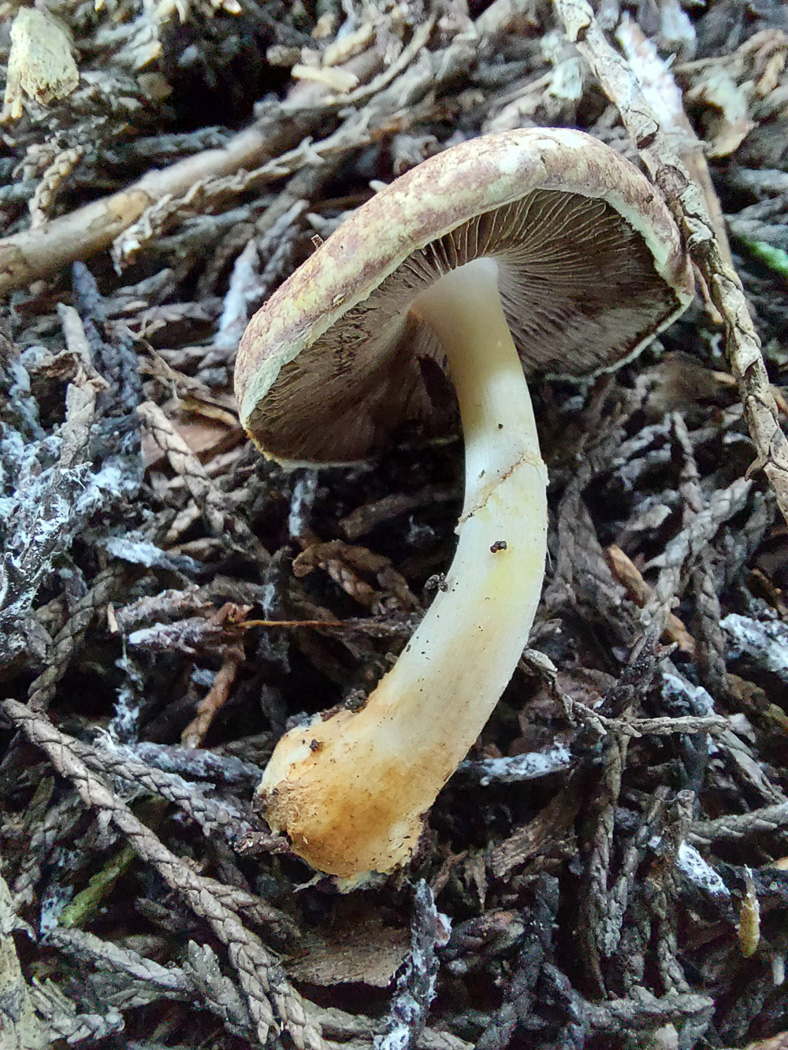 |
April 6th Agaricus dulcidulus (Rosy Wood Mushroom) In Chalfont Park (Chalfont St. Peter) Jesper Launder found this singleton small purplish brown Mushroom under Cypressus. He noticed on collection that the stem was clearly yellowing where handled, then checking in Kibby vol 3 found the lilaceous colours, small size and yellowing all pointed to Agaricus purpurellus, given as close to A. dulcidulus but separate from it. However, as Species Fungorum still lists it as a synonym of A. dulcidulus we stay with that name here though suspect this may change as this is known to be a species complex still to be fully resolved. Previous finds |
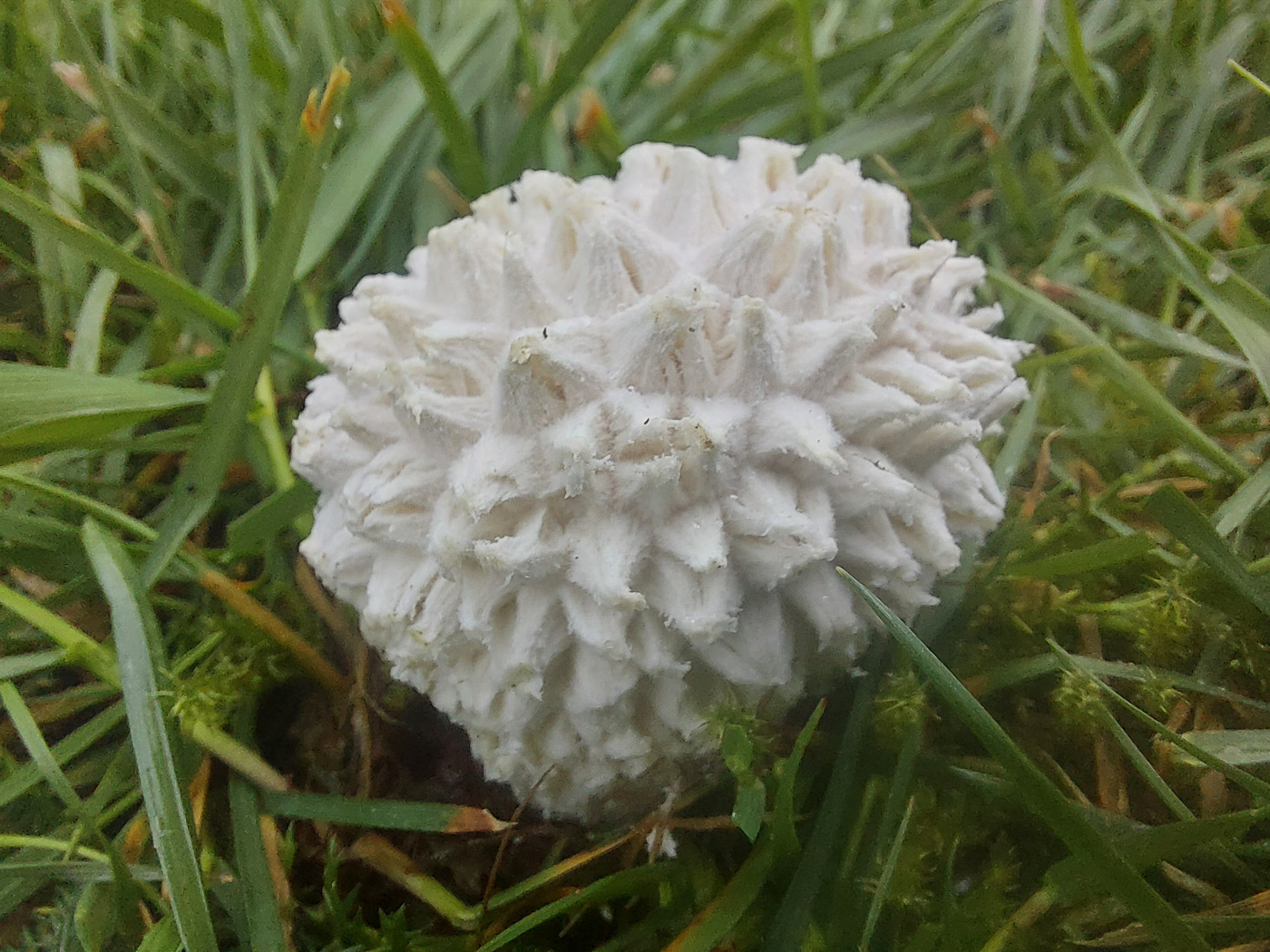 |
April 6th Bovistella utriformis (Mosaic Puffball) In Gerrards Cross Jesper Launder noticed this young puffball just emerging in the same spot where he found the species last year (though a month later). Previously in genus Calvatia (and more recently in Lycoperdon with the other better known Puffballs), the species develops only a short stout stem and can get to 15 cm across, so much bigger and squatter than other Puffballs. The English name refers to the markings left on the surface once the scales / spines seen forming here eventually wear off with age. Previous finds |
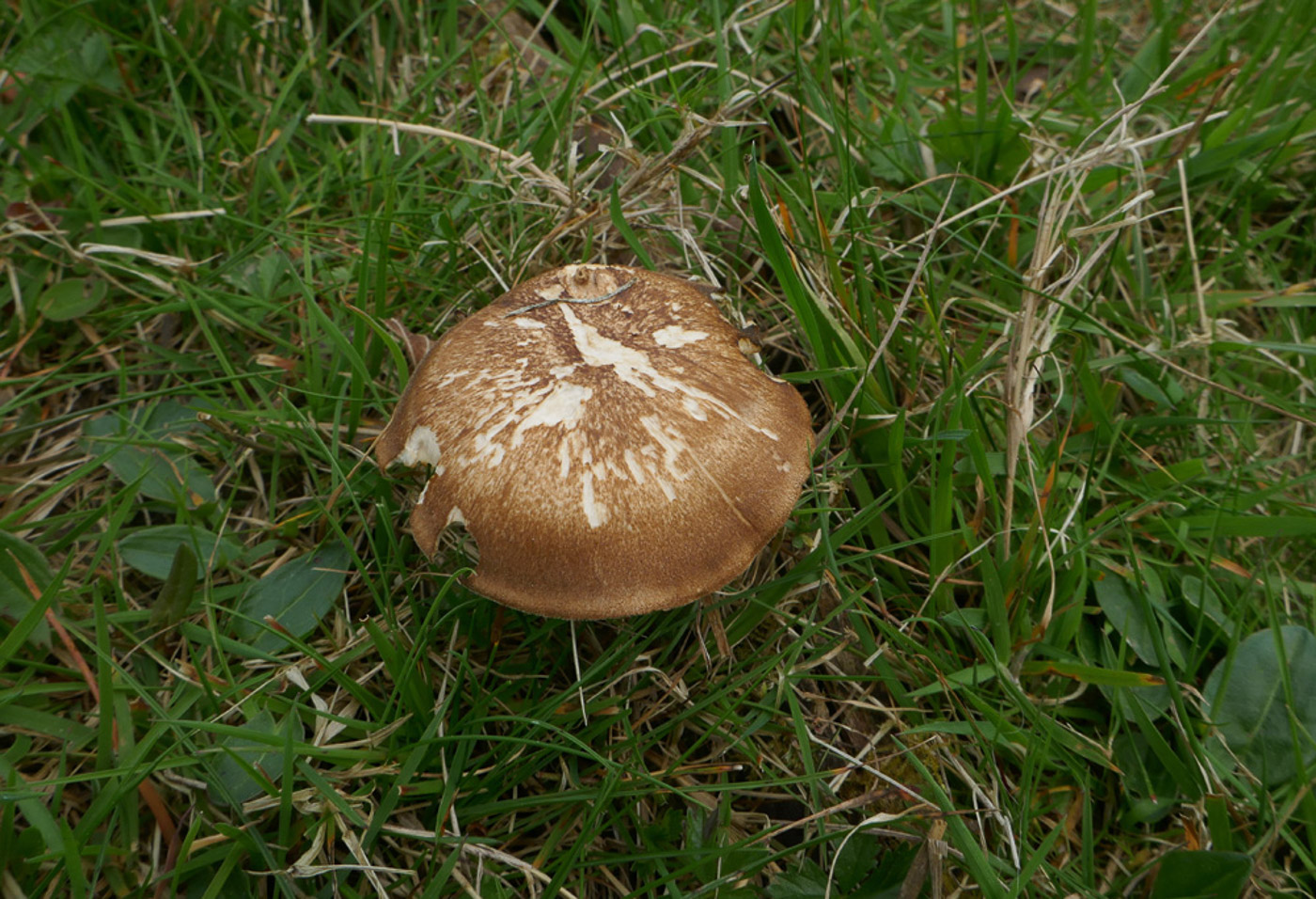
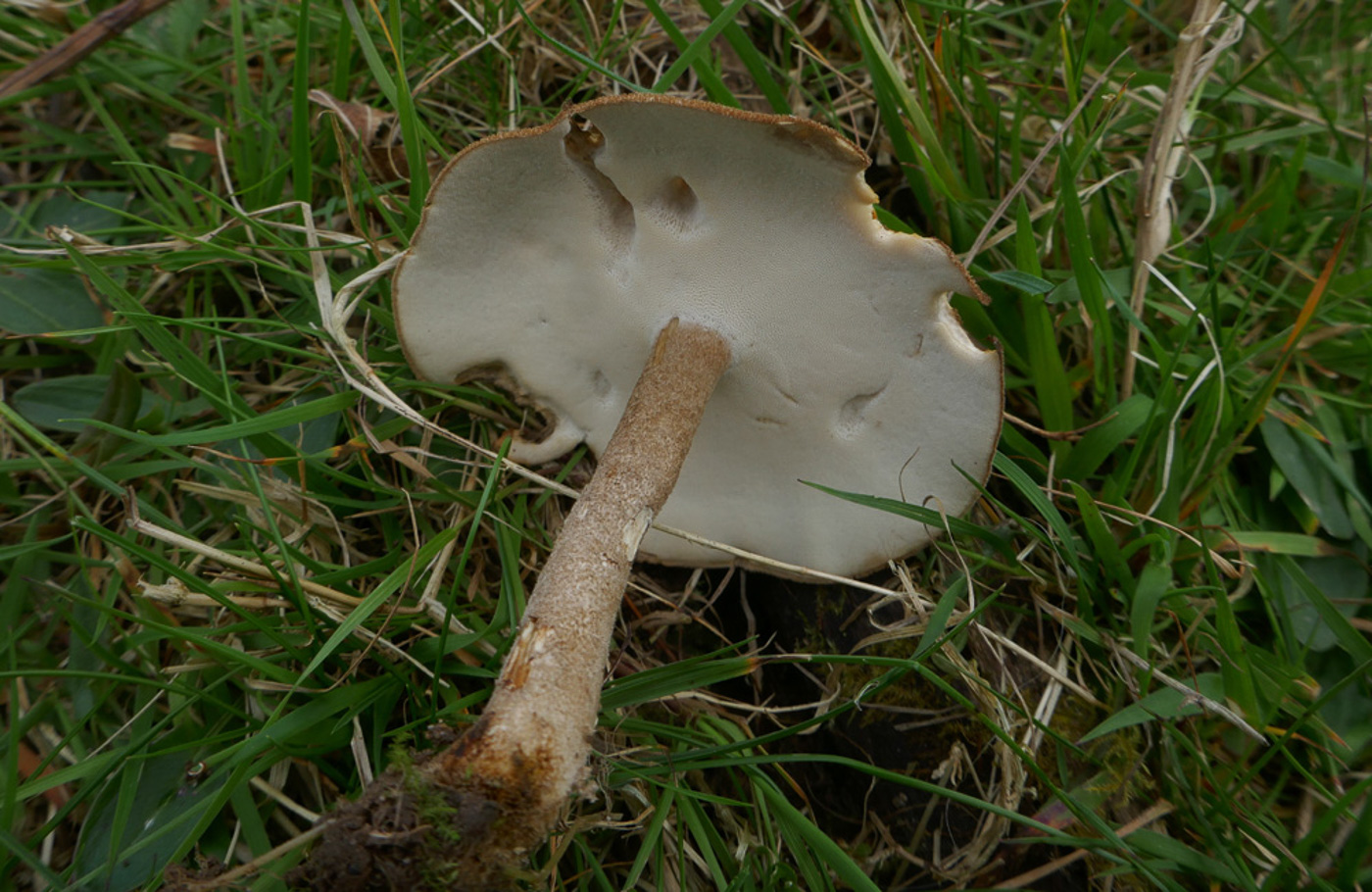
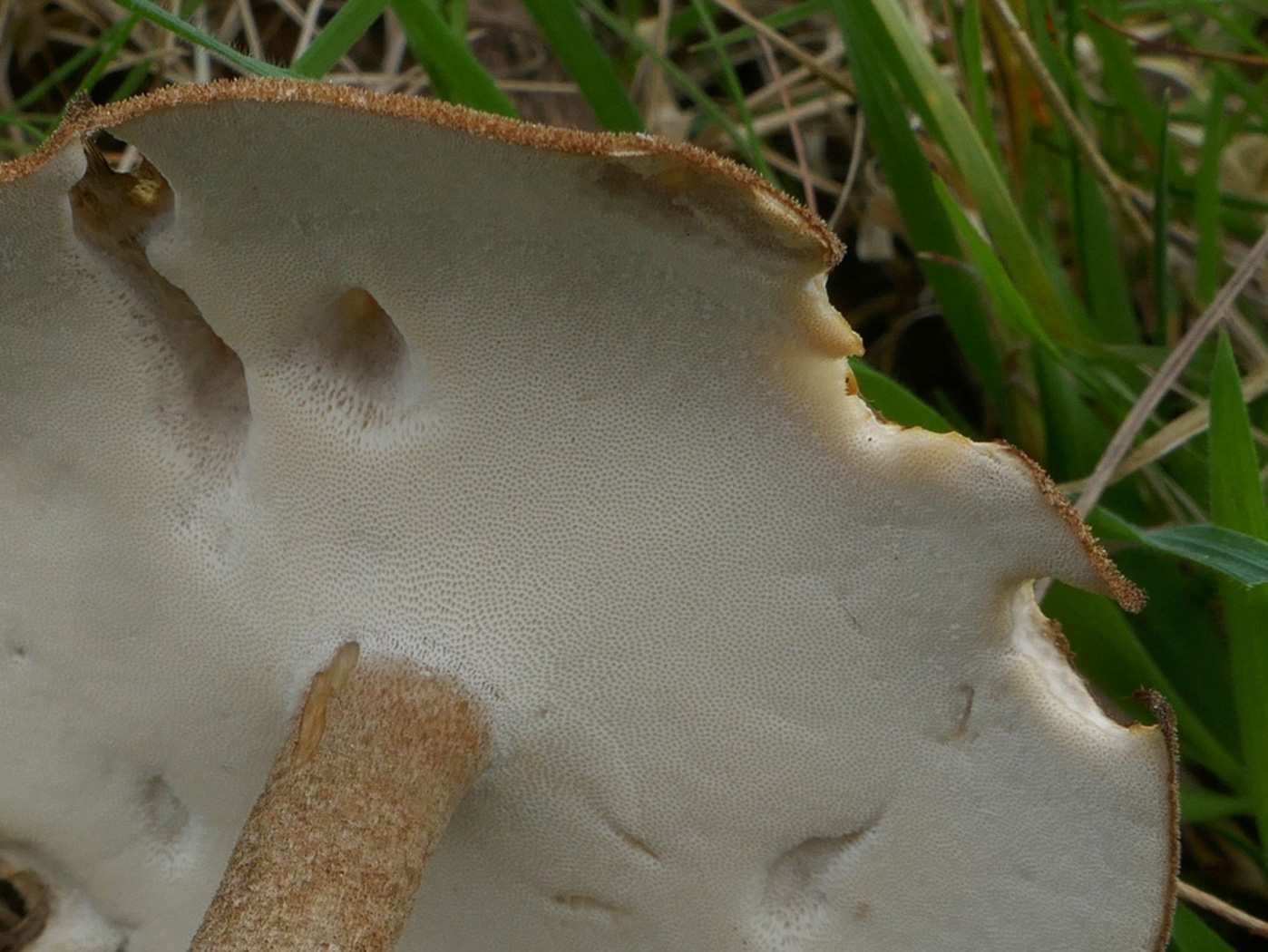 |
April 6th Lentinus substrictus (Fringed Polypore) At Stampwell Farm Jackie Ewan noticed this brown cap appearing above the grass, then investigating further found it was growing on a branch which was completely grassed over and was not a mushroom as one might have guessed from the top view (photo 1). The cap was about 5 cm across and the pores beneath together with thin tough flesh pointed to a Polypore. The fringed edge to the cap, stem markings and tiny pores together with spore size and shape then led her to this species - better known by its previous name of Polyporus cilatus. Previous finds |
April 4th 2024
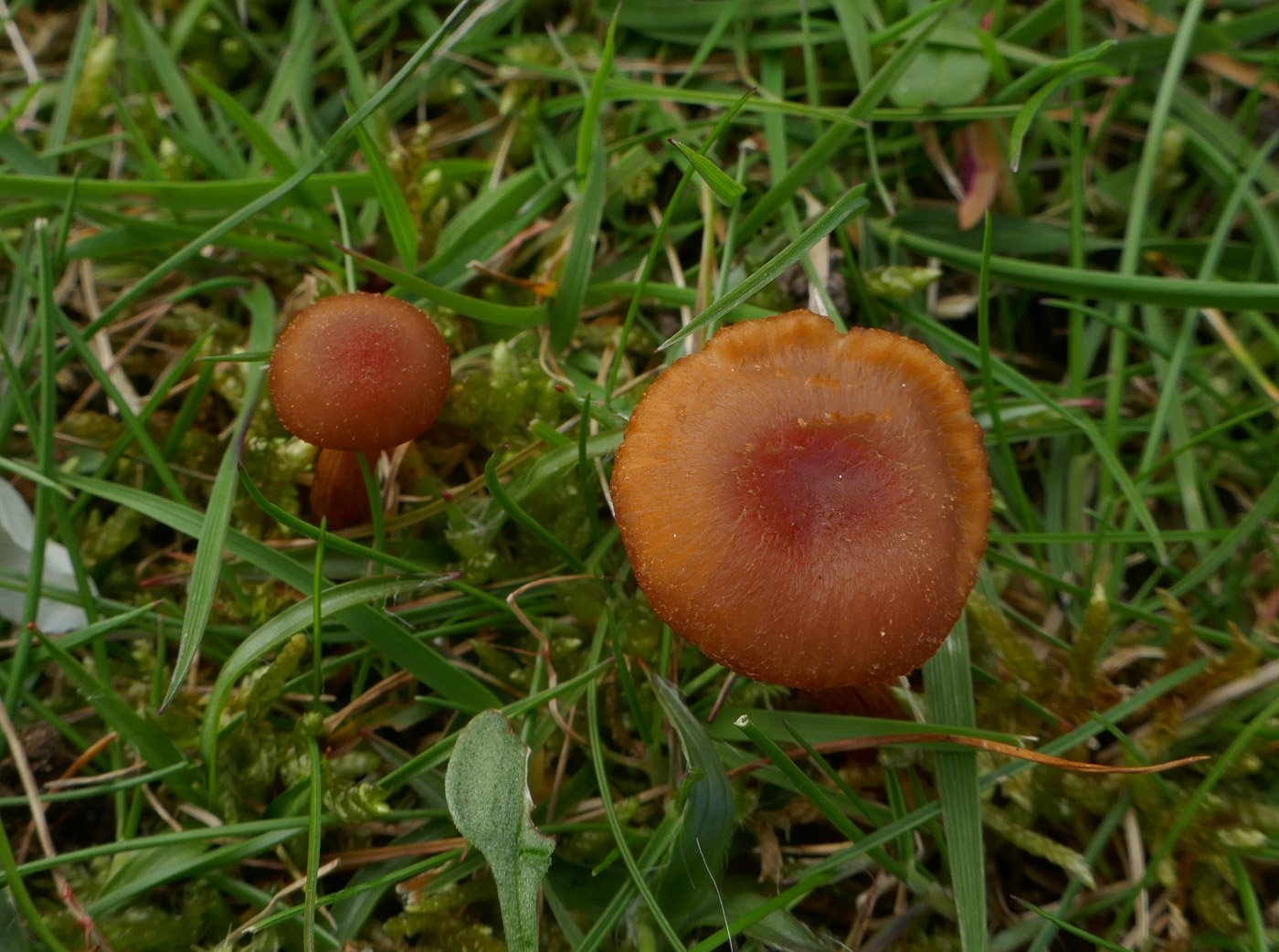
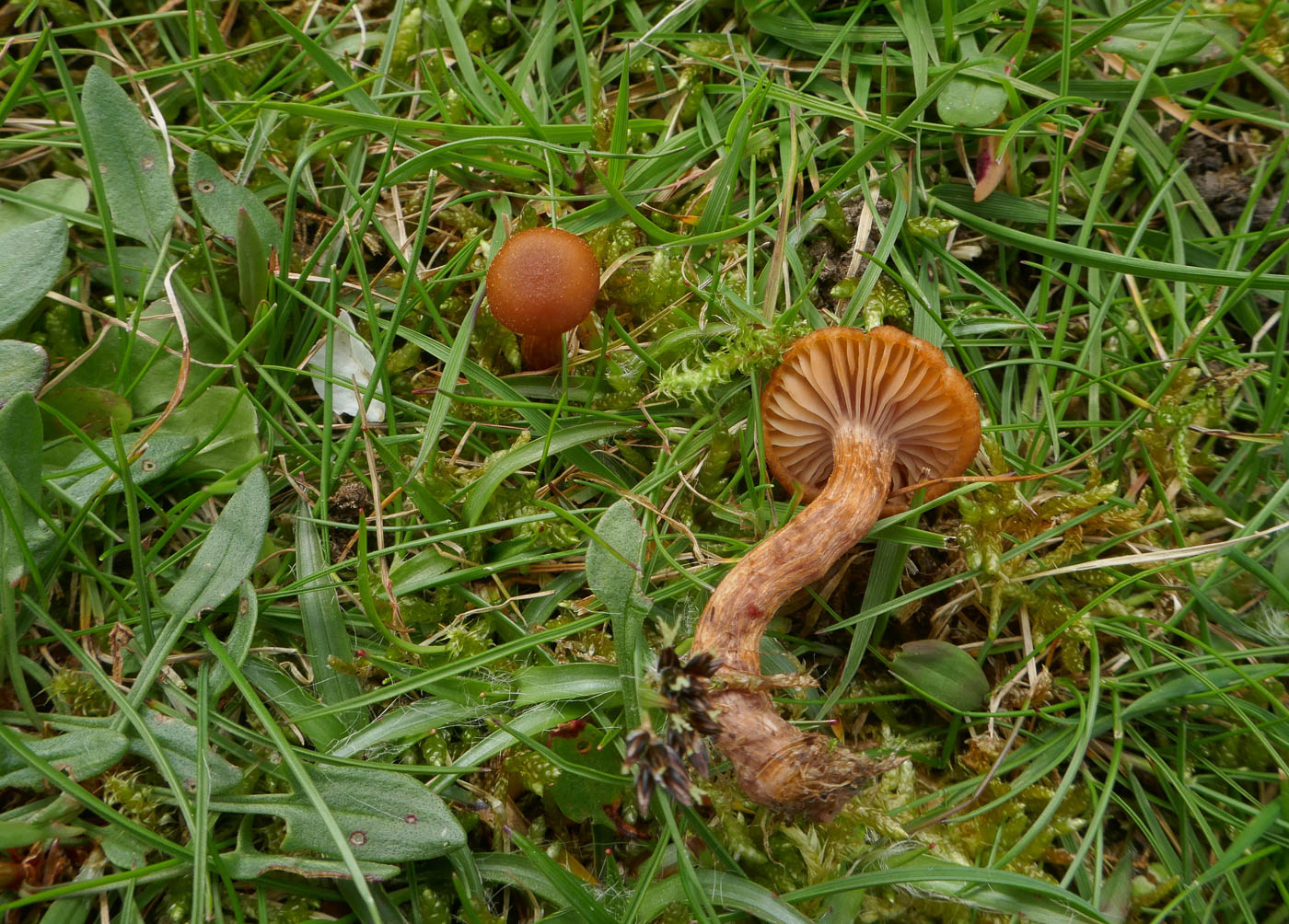 |
April 4th Laccaria proxima Here's yet another surprise early fruiting! At Stampwell Farm Jackie Ewan found this pair just emerging in a grassy area and luckily checked the spores, only to find they were oval and not round, making this L. proxima rather than the much more common L. laccata, though for either species to be fruiting now is unusual. Young fresh examples of this species are virtually impossible to separate from L. laccata in the field though the stem here does appear pretty streaky and fibrous which would indicate the possibility of it being the rarer of the two. The only sure way is comparing their spore shape. Previous finds |
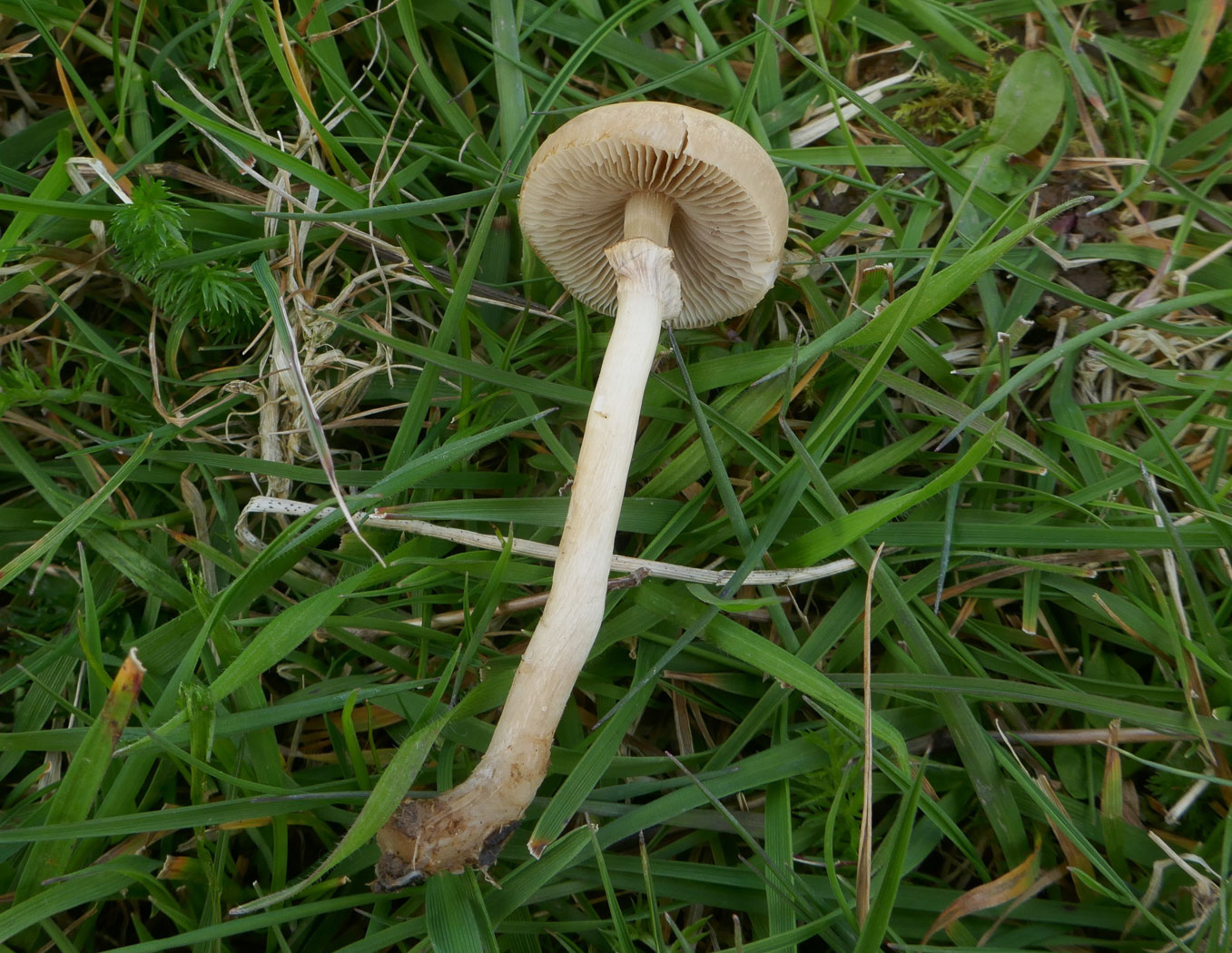
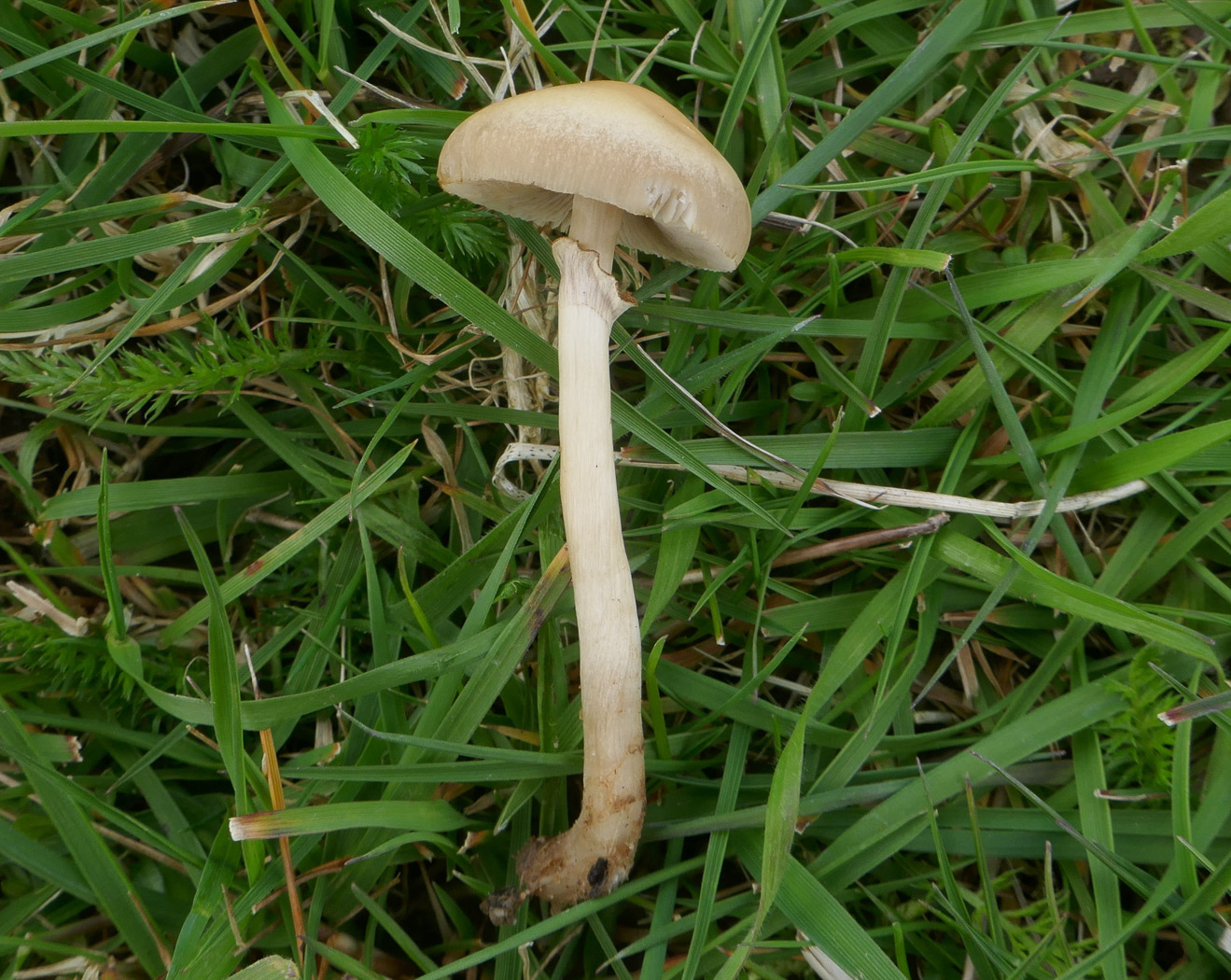 |
April 4th Agrocybe praecox (Spring Fieldcap) In a grassy area at Stampwell Farm Jackie Ewan found this nice example of this seasonal grassland species, one that she regularly turns up here. Typified by its pale cap, brown gills and spores and ring on the stem usually seen as pendant, the ring here must have only just detached itself from the edge of the cap and has yet to hang down downwards. Previous finds |
April 2nd 2024
March 31st 2024
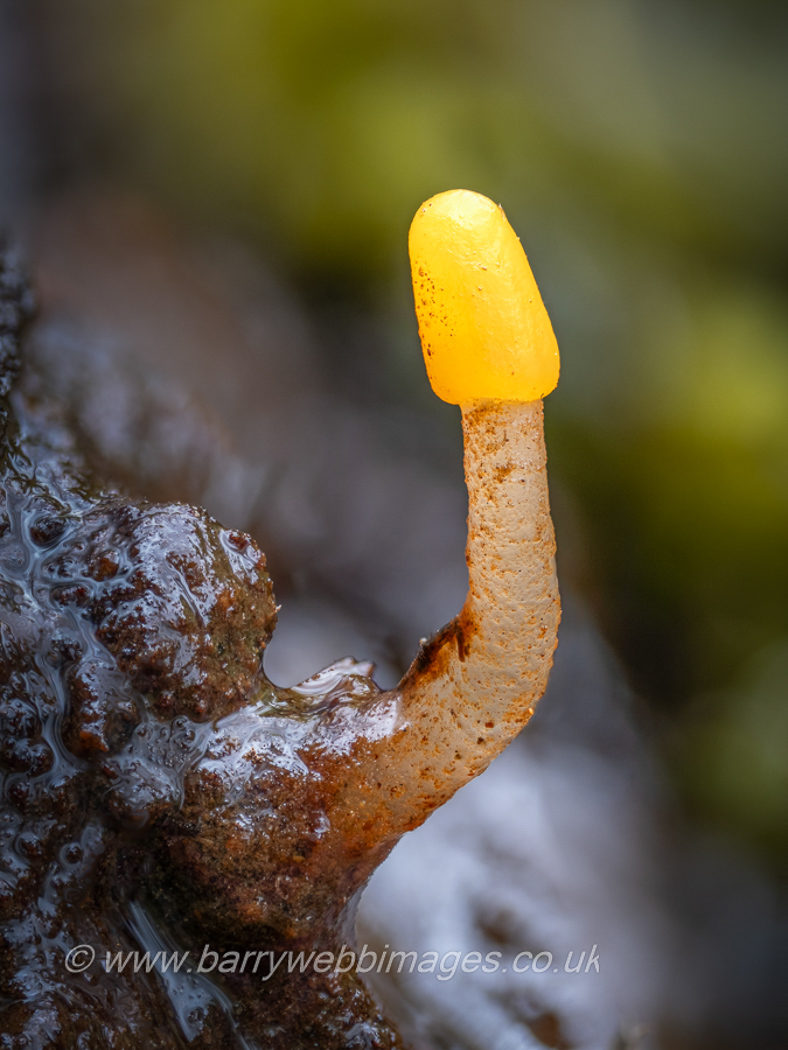 |
March 31st Mitrula paludosa (Bog Beacon) This is a relatively rare springtime species which we have recorded in the Burnham Beeches Mire area several times in the last few years. Today's find was made by Barry Webb in the stream there leading from the Mire to the first pond. Previous records are mainly from May or June though last year we found it in mid April. So Barry's find here is certainly the earliest we've seen it here. Previous finds |
March 30th 2024
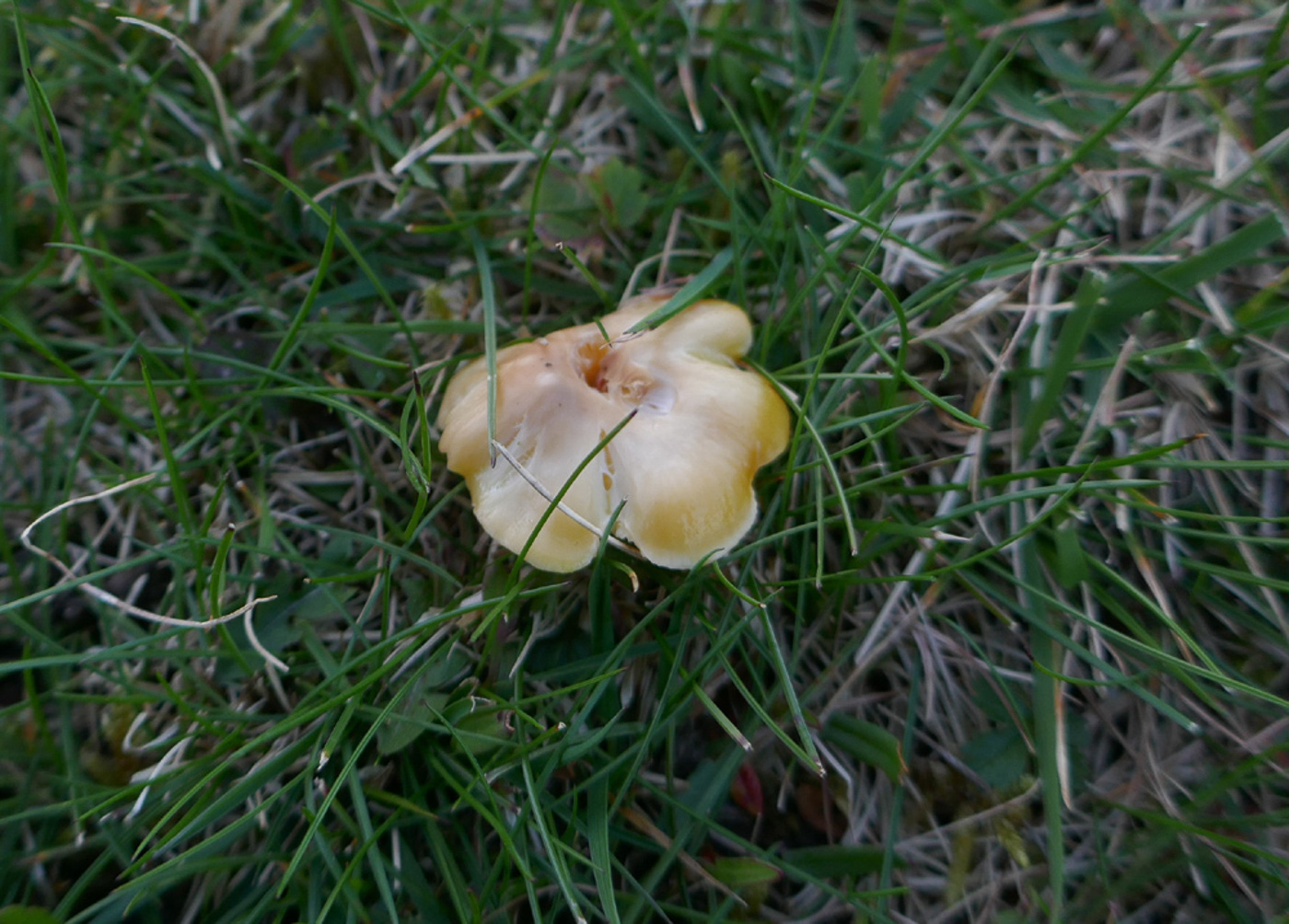
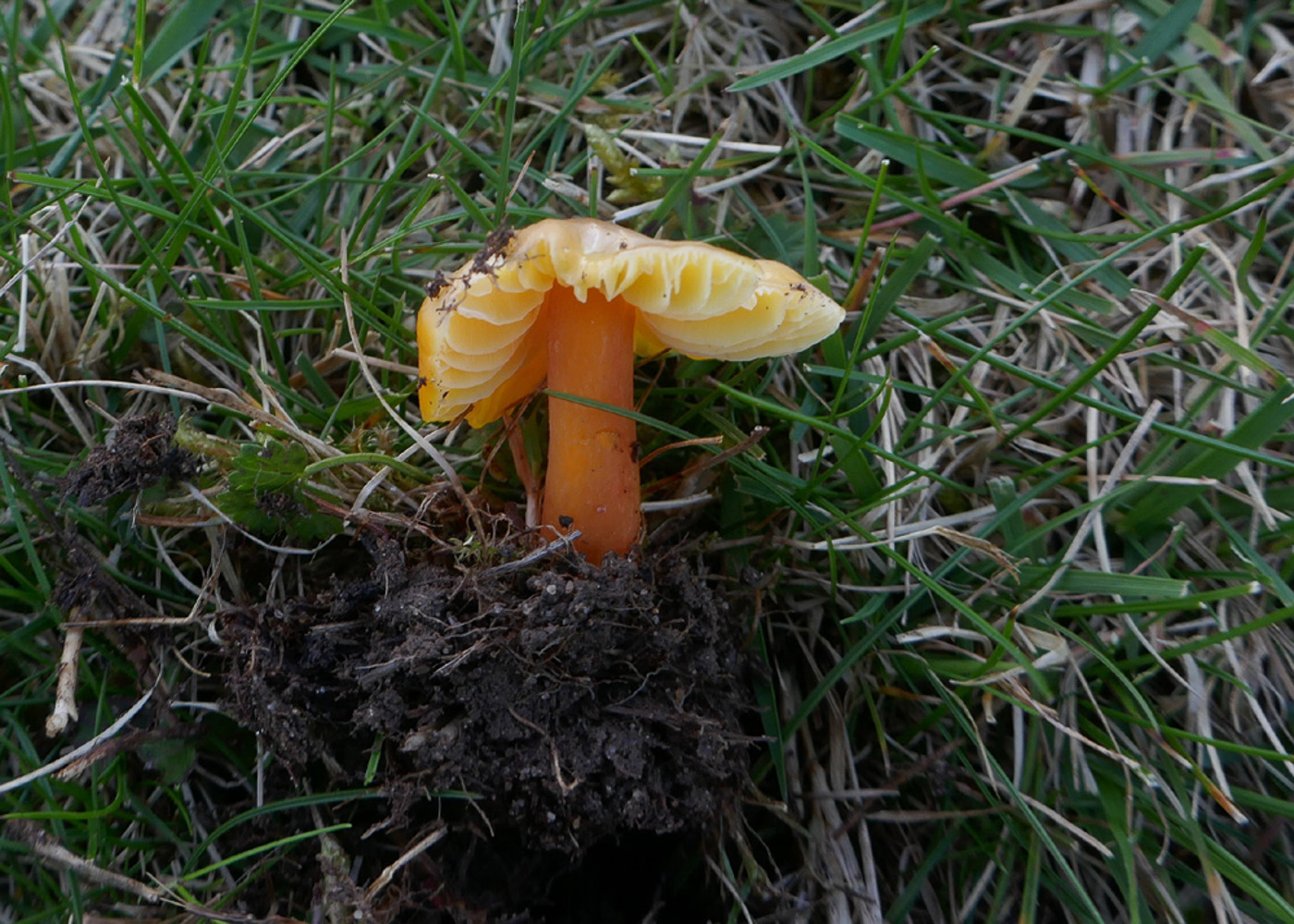
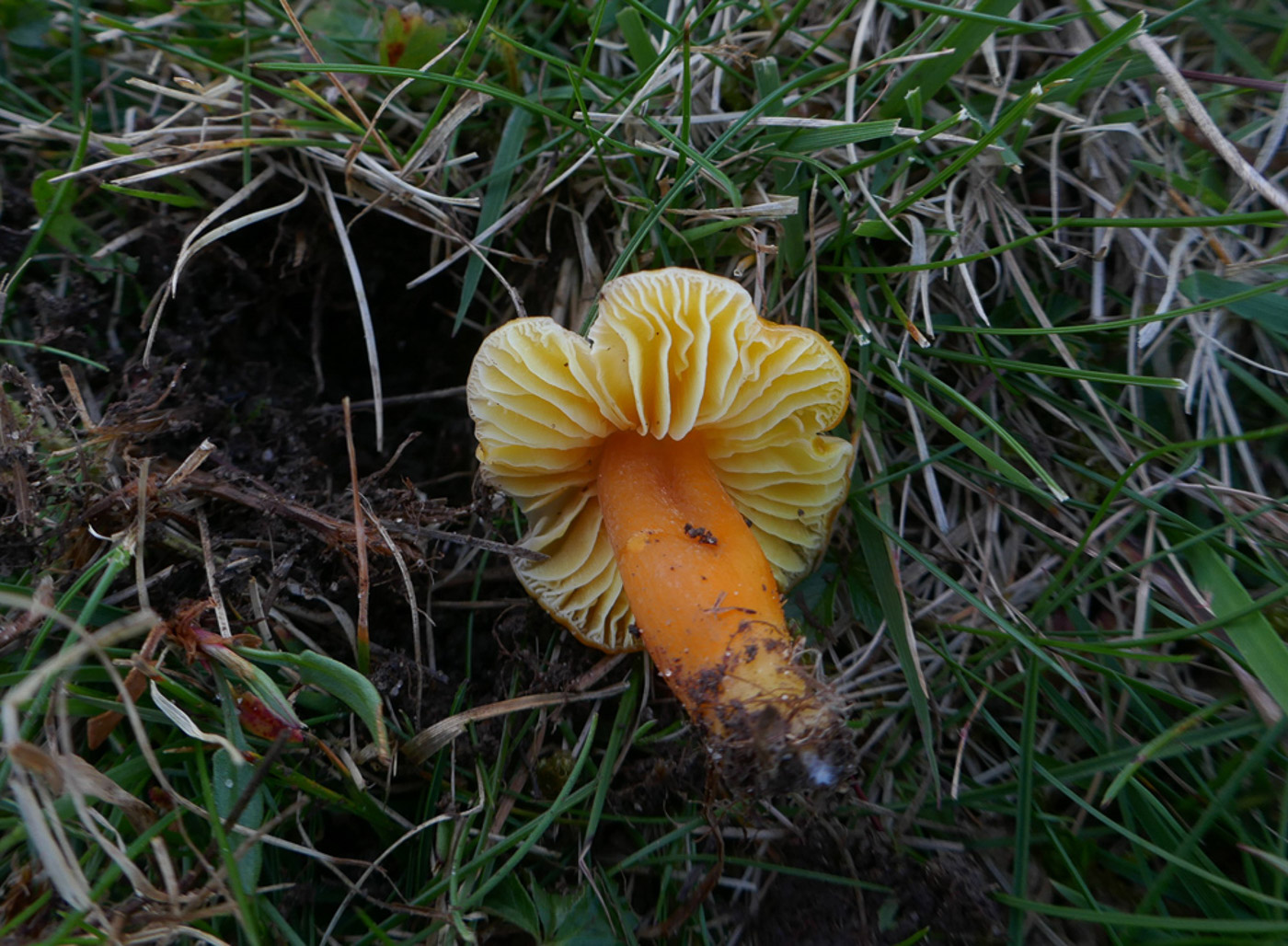 |
March 30th Hygrocybe chlorophana (Golden Waxcap) From the grassland at Stampwell Farm comes yet another unseasonal Waxcap, found by Jackie Ewan. She at first suspected it was H. quieta (Oily Waxcap) on account of its rather orange colour and oily smell, but the microscopic characters matched H. chlorophana - which is also by far the commoner of the two species - so we have to assumed it must be that despite the uncharacteristic smell. Previous finds |
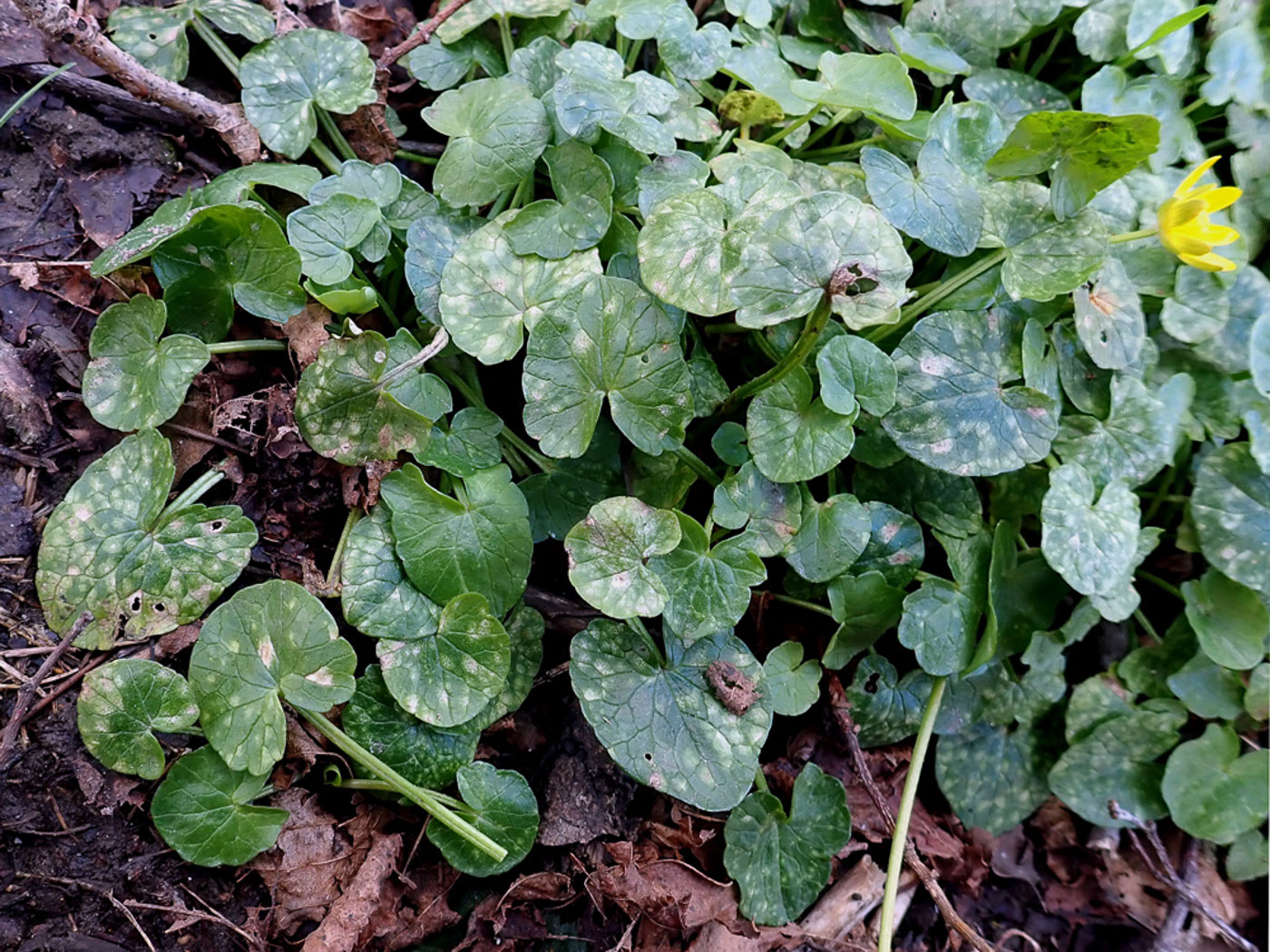
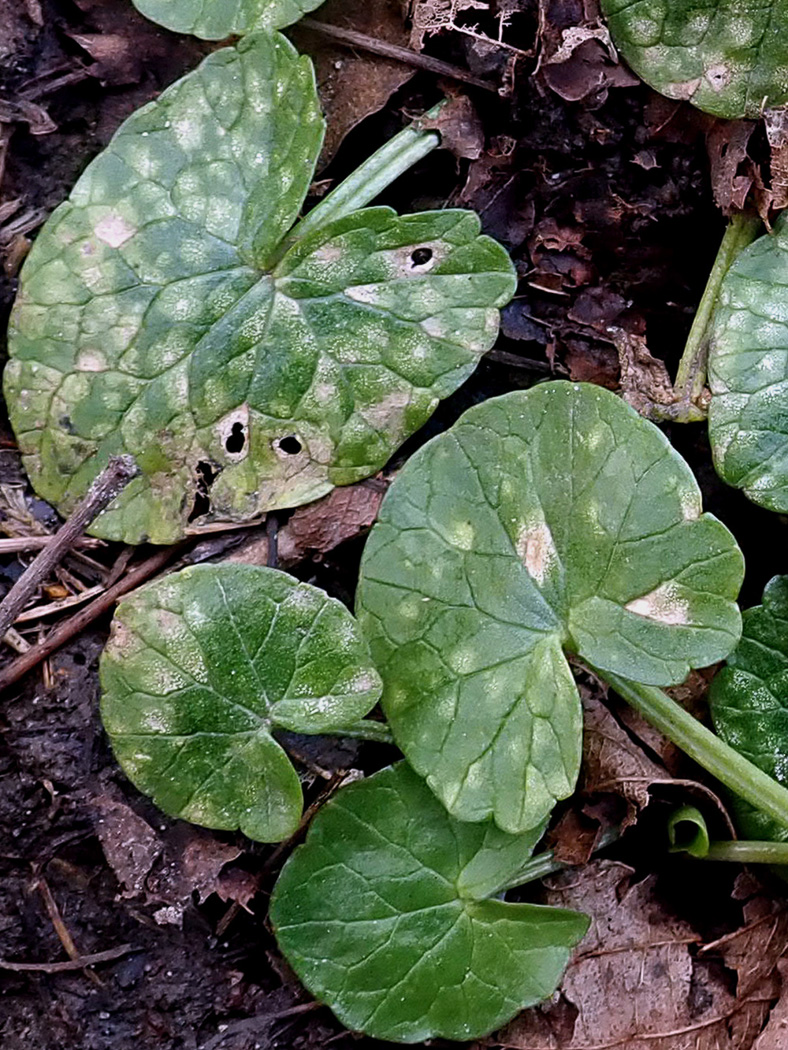 |
March 30th Entyloma ficariae (a common species of Smut with no English name) At Turville Heath Penny found the Lime avenue understory covered in Lesser Celandine and it was not long before she noticed the telltale pale angular patches on many leaves made by this species of host specific smut. It is very common in spring but appears to do no permanent damage to the plant. Previous finds |
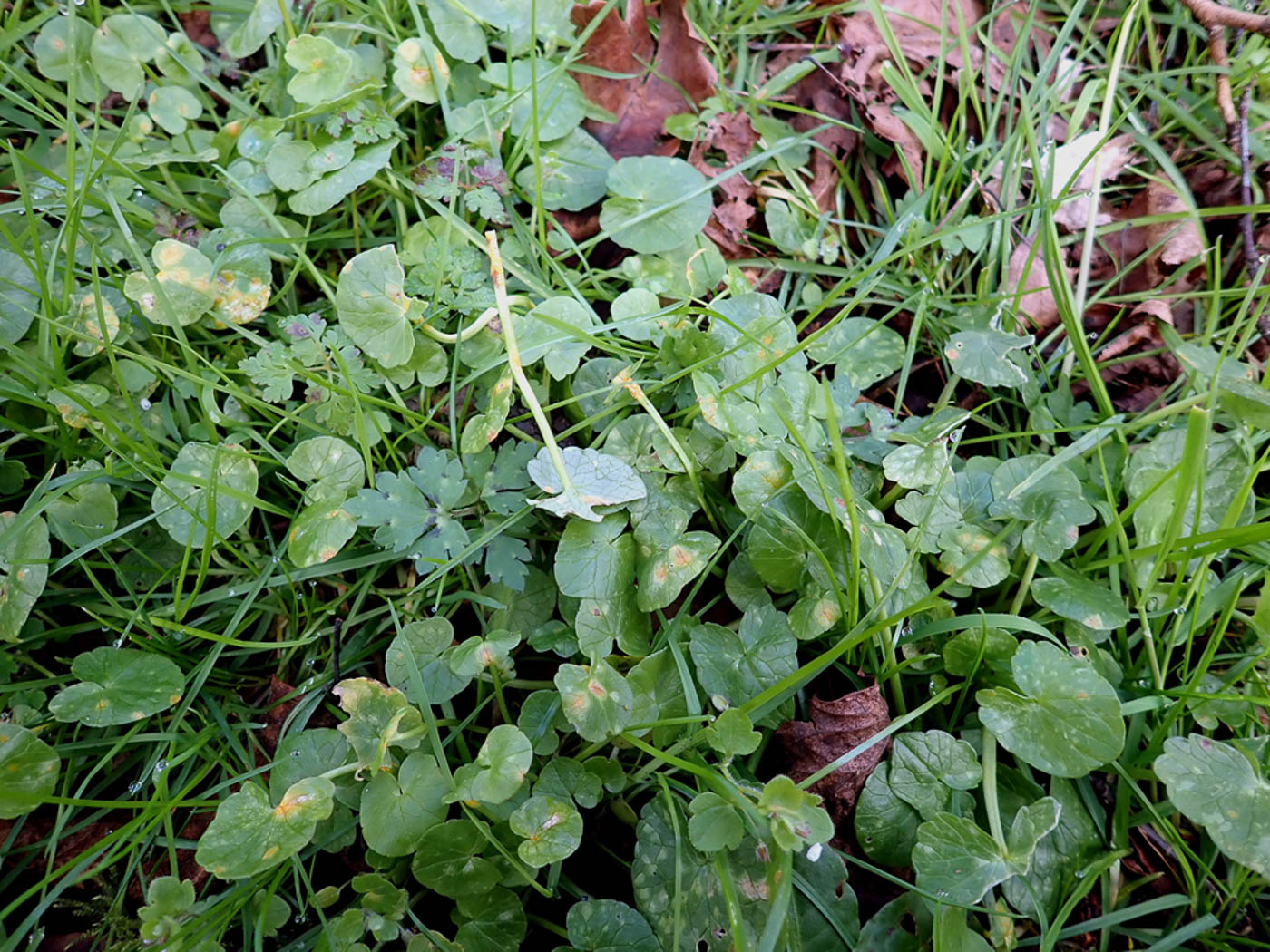
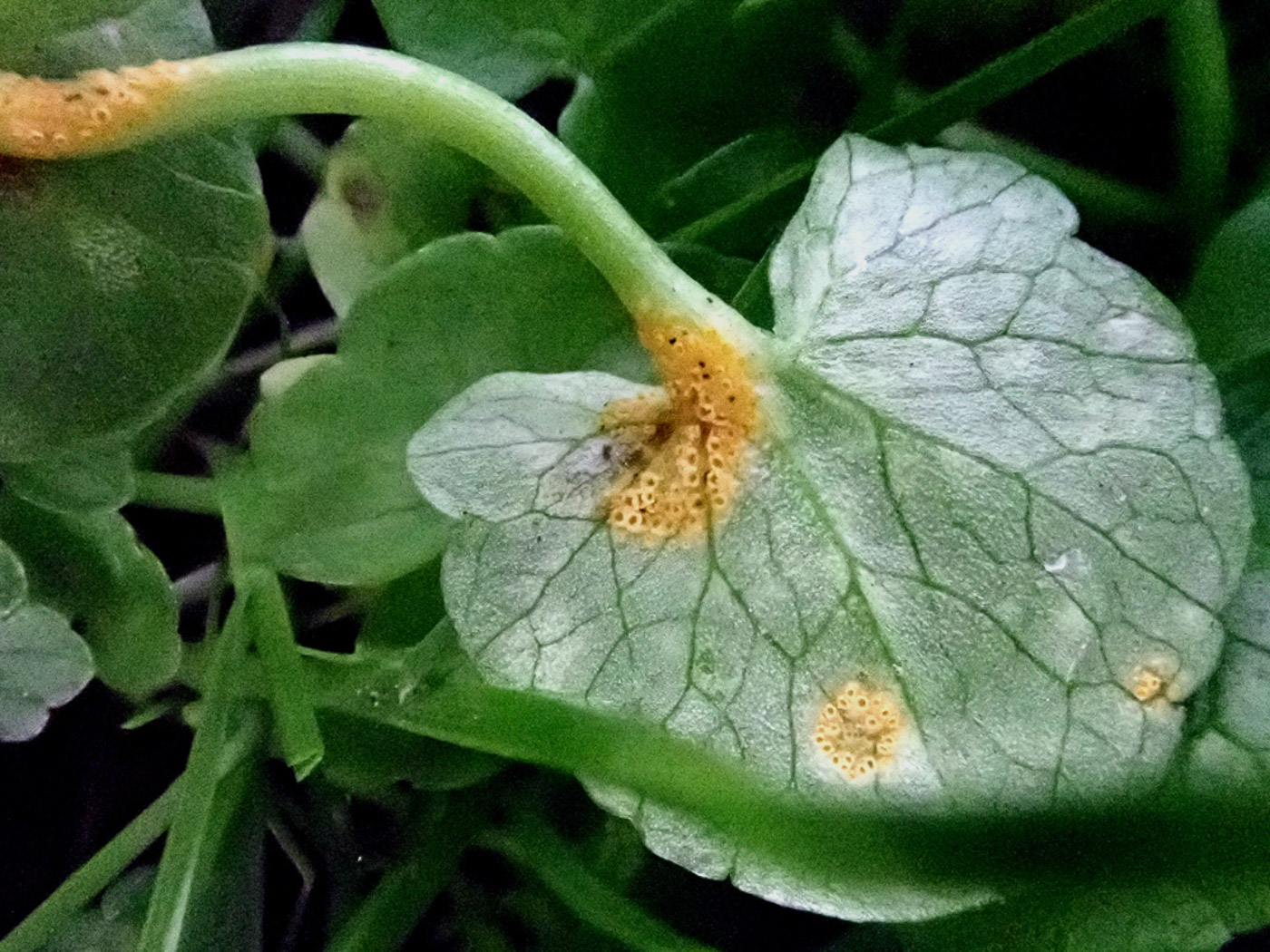 |
March 30th Uromyces ficariae (Bitter Chocolate Rust) At Turville Heath Penny found this second fungal species on Lesser Celandine. This is a host specific Rust and was affecting many plants on both stems and undersides of leaves. It English name refers to a later stage of this rust which is no longer rusty but dark brown. An earlier Finds entry shows this later stage. It is very common in spring but appears to do no permanent damage to the plant. Previous finds |
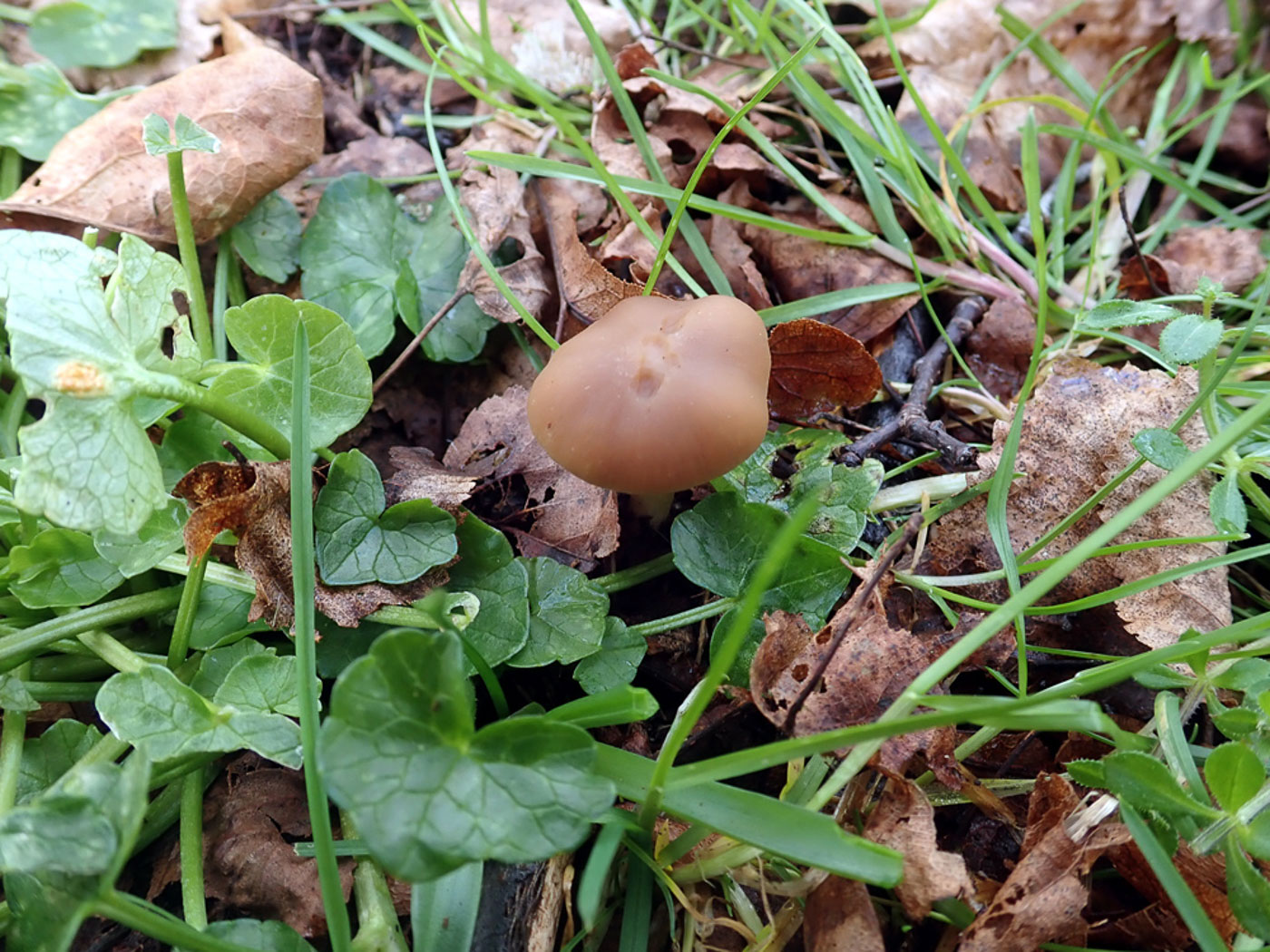
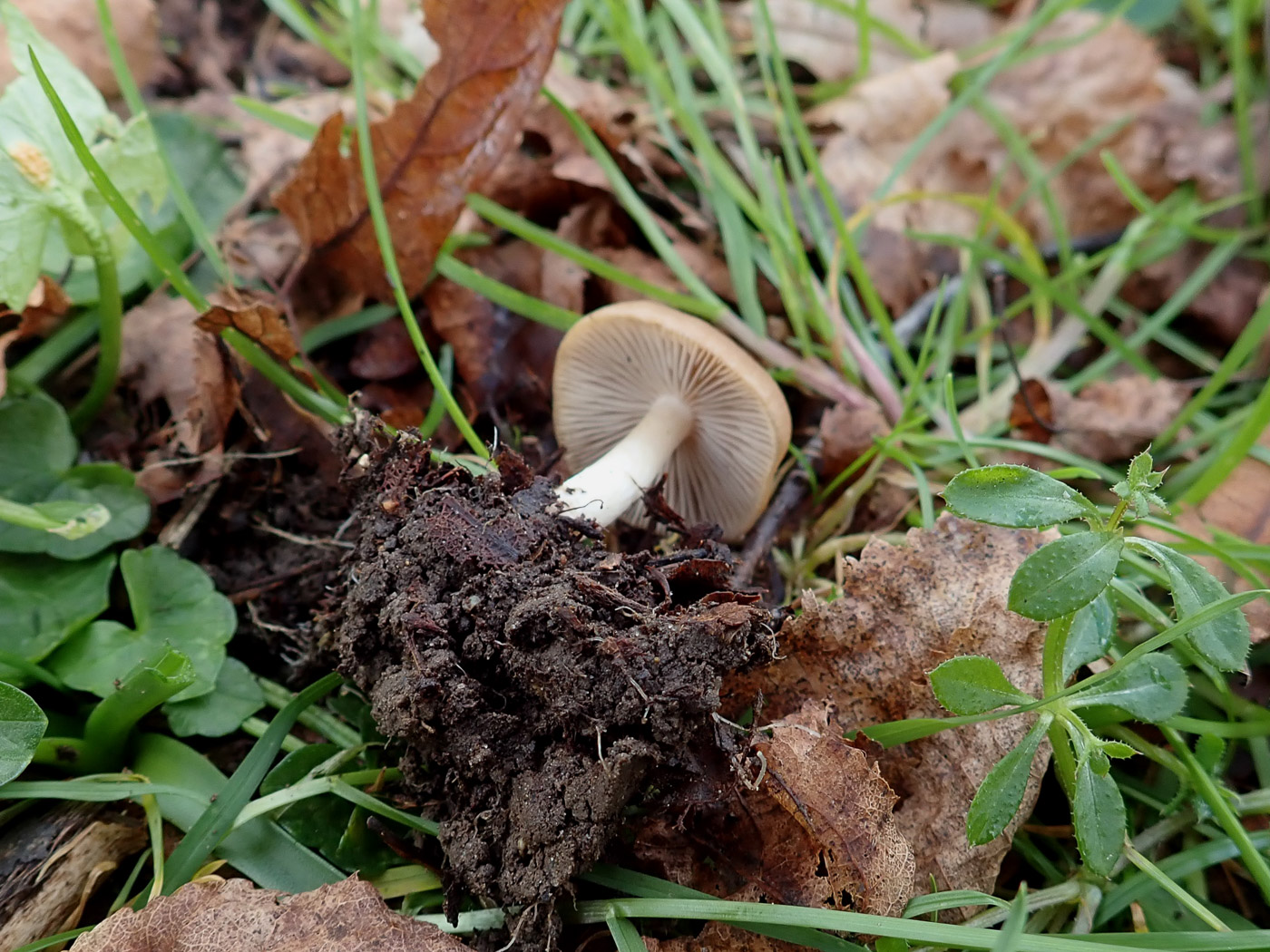
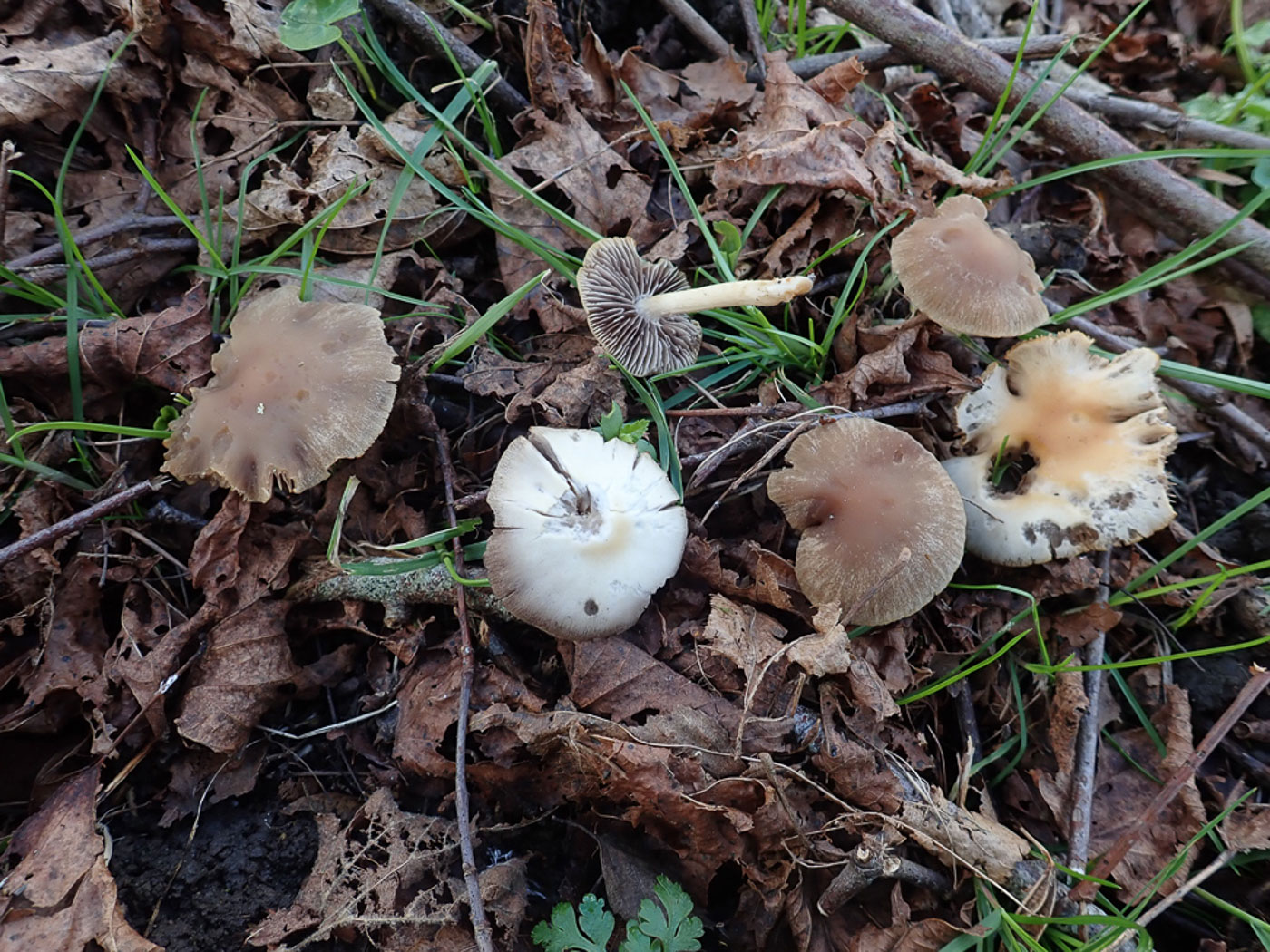
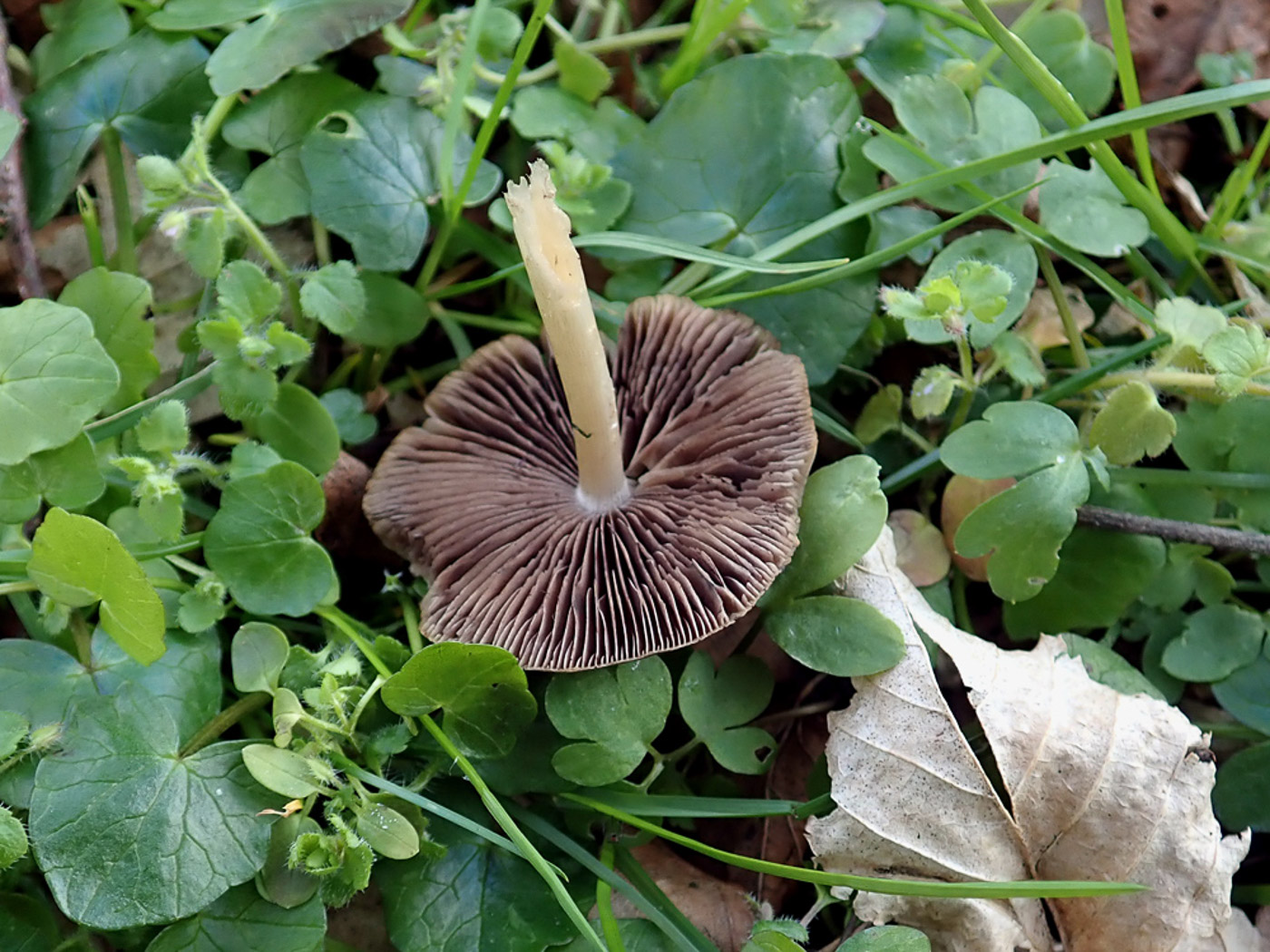 |
March 30th Psathyrella spadiceogrisea (Spring Brittlestem) Under the Lime avenue at Turville Heath Penny spotted one fresh brown cap amongst the litter (photo 1), then turned it over to find the typical white stem of this genus though the gills were still amazingly pale for a genus having dark brown spores (photo 2). A little further on she came across a group looking entirely different in cap colour though, knowing the caps in this genus often fades in this way, she was fairly confident these finds were all the same quite common springtime Brittlegill. A scope confirmed it. Photo 4 shows how the dark spores have now coloured the gills to match. Previous finds |
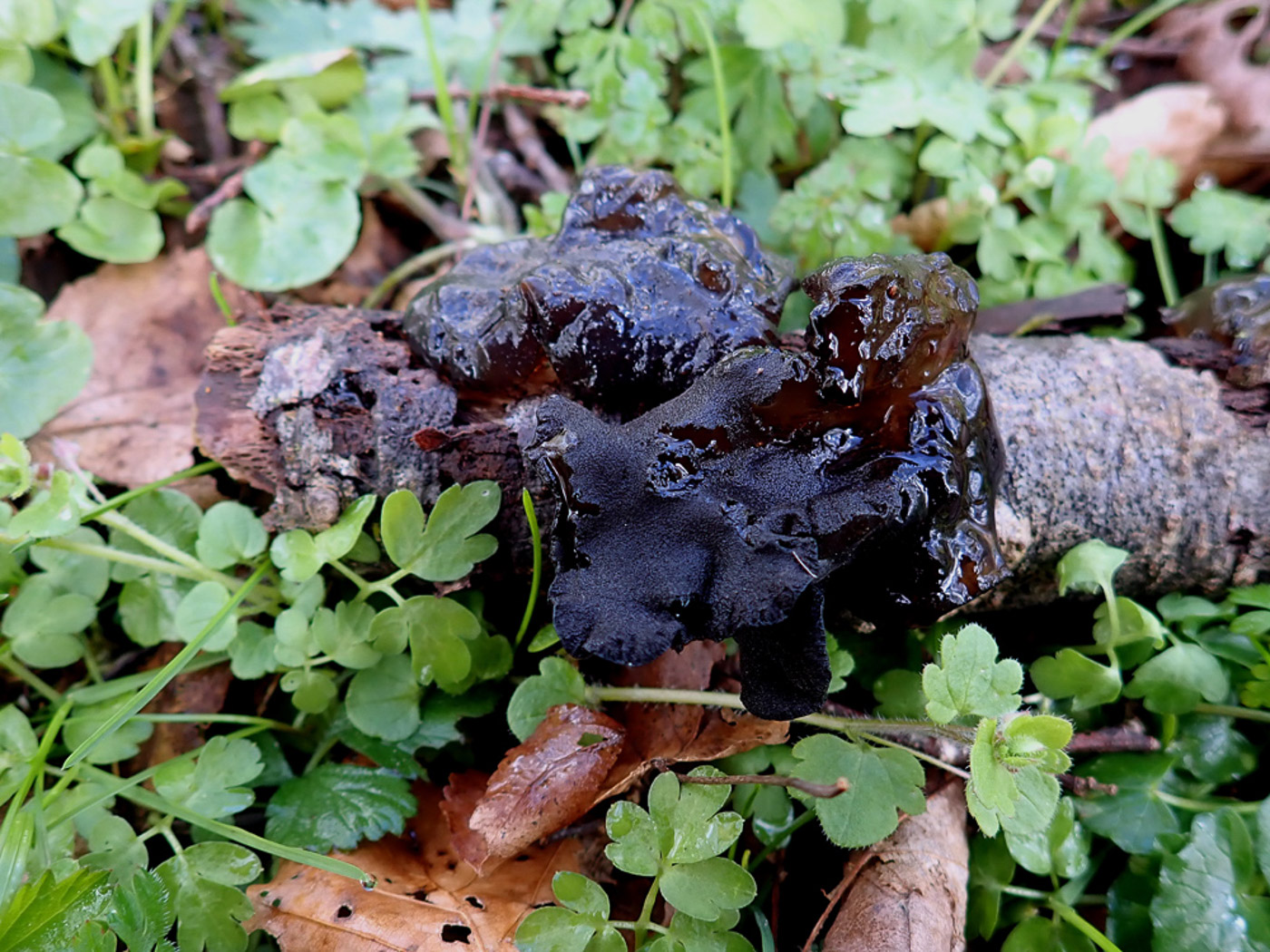 |
March 30th Exidia glandulosa (Witch's Butter) At Turville Heath Penny found this well irrigated collection of jelly fungus after the recent rains. This genus quickly shrivels in dry weather but then can swell and become gelatinised when it rains, so is thriving this spring! Note the finely bobbly surface on the underside visible here, a feature which helps to eliminate other similar members of At Turville Heath Penny found this well irrigated collection of jelly fungus after the recent rains. This genus quickly shrivels in dry weather but then can swell and become gelatinised when it rains, so is thriving this spring! Note the finely bobbly surface on the underside visible here, a feature which helps to eliminate other similar members of Exidia in the field. in the field. Previous finds |
March 28th 2024
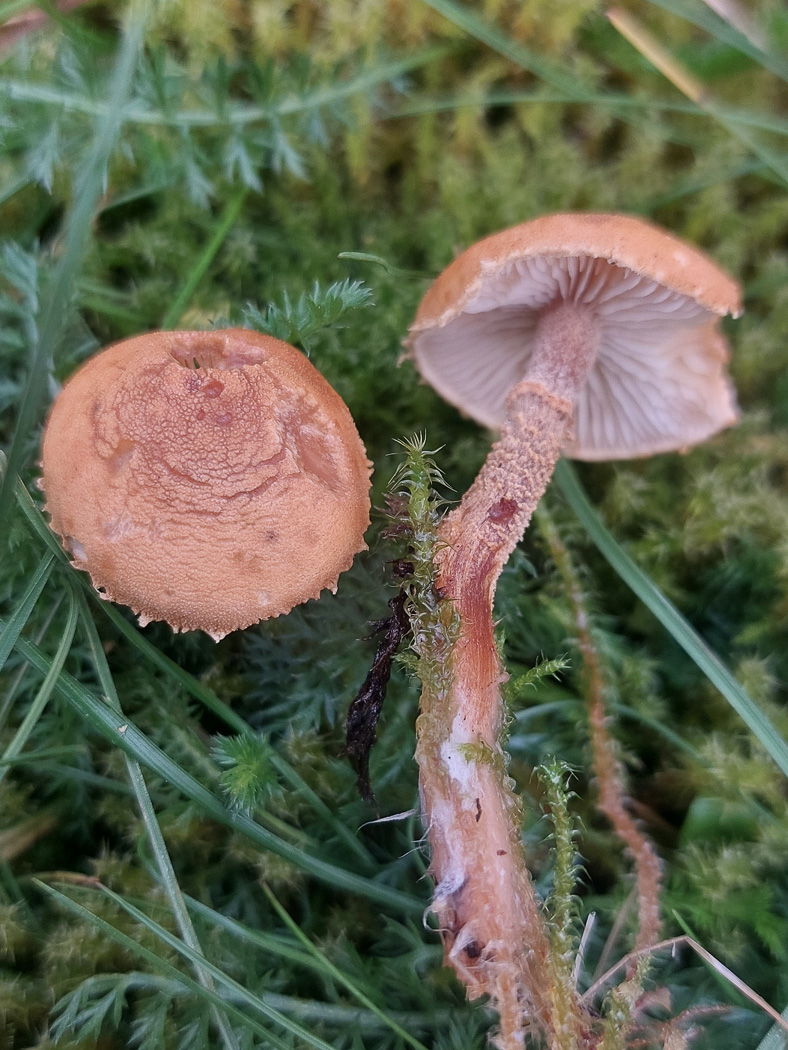 |
March 28th Cystoderma amianthinum (Earthy Powdercap) In Gerrards Cross Jesper Launder was a bit surprised to find this grassland species fruiting in spring. Apart from one late May collection, all our many county records are from August onwards when it is not uncommon. Previous finds |
March 26th 2024
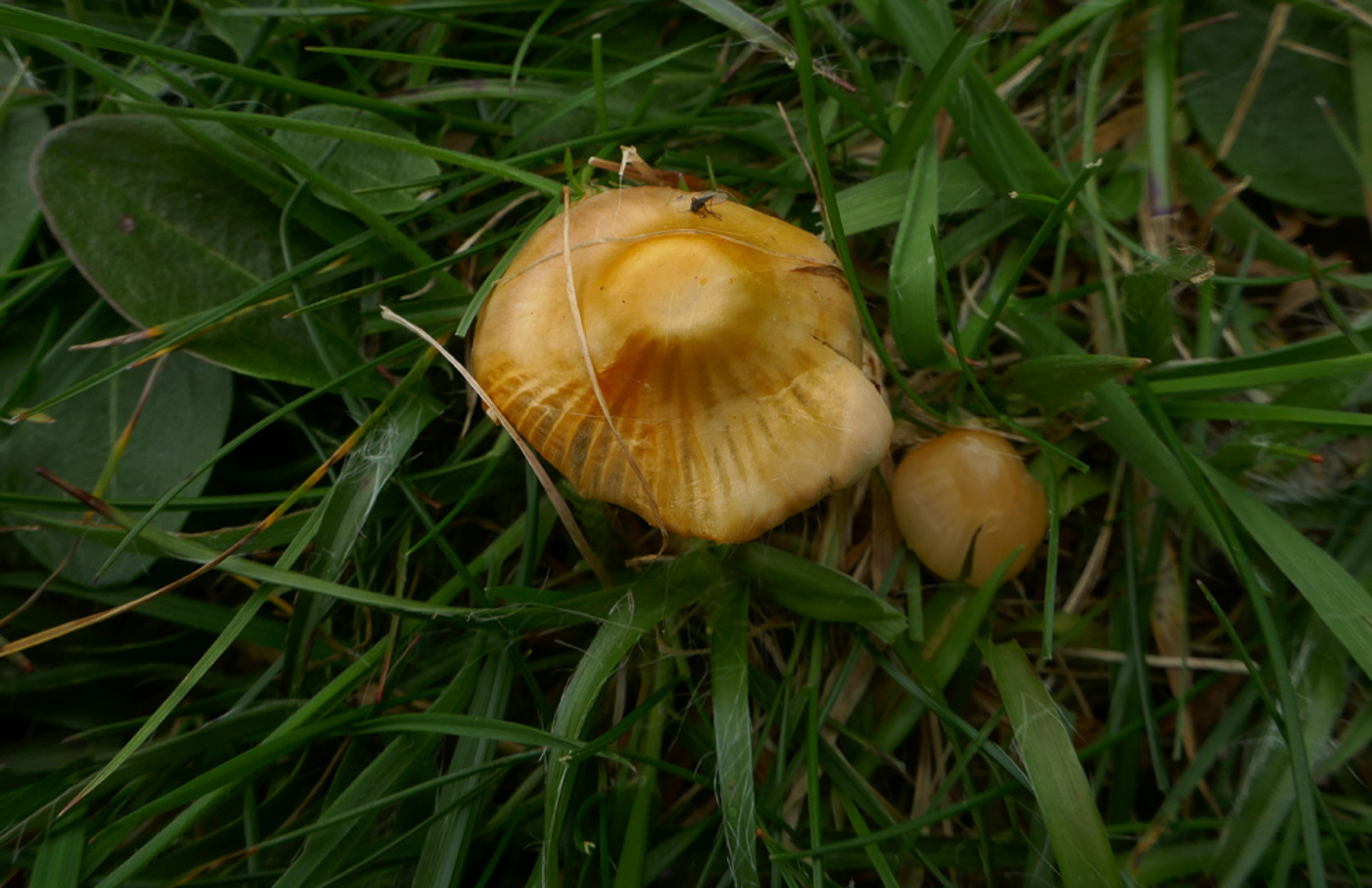
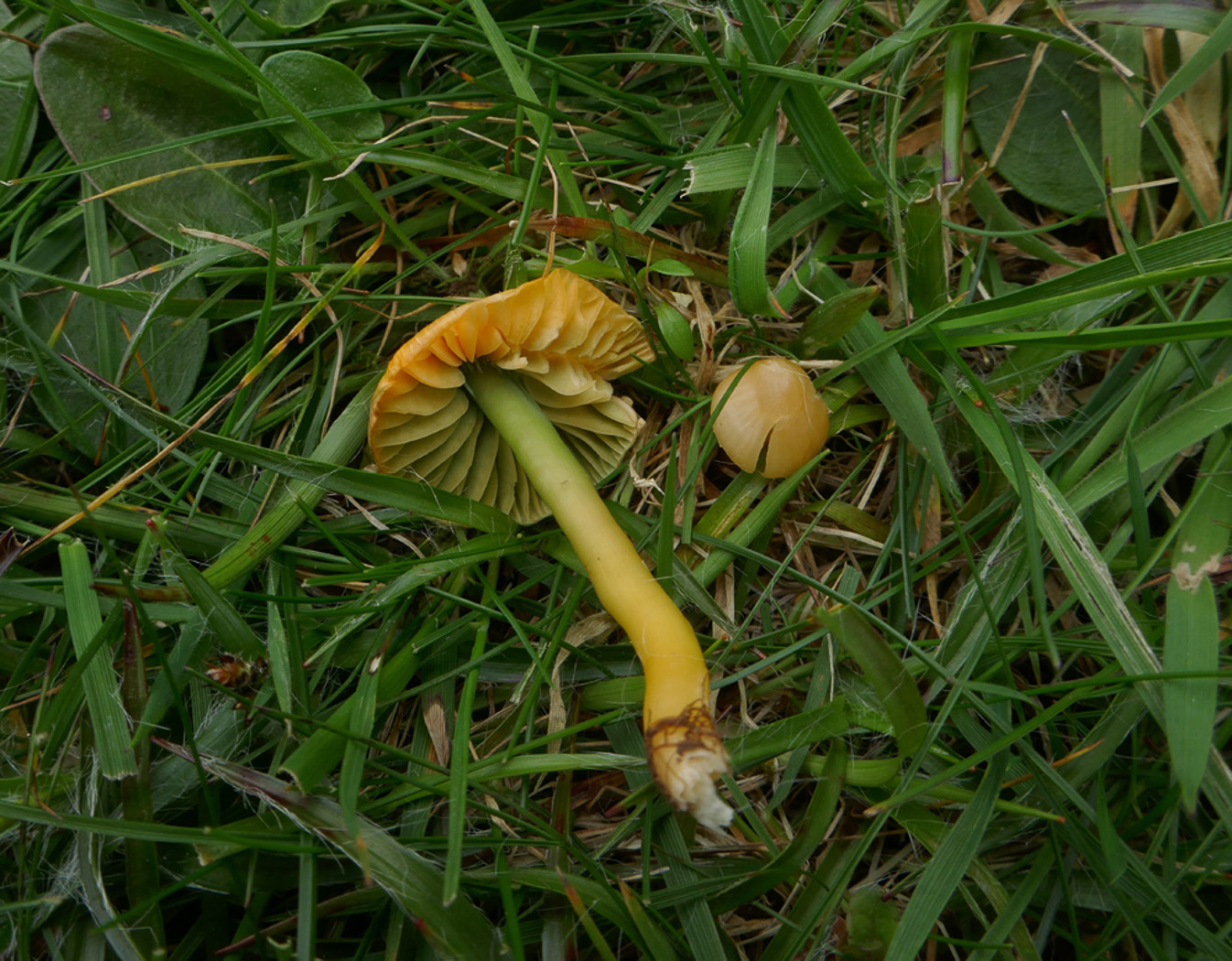 |
March 26th Gliophorus psittacinus (Parrot Waxcap) If we in Finds used another colour to indicate entries of species fruiting out of season we'd have a veritable rainbow here! This is yet another that would qualify, found by Jackie Ewan at Stampwell Farm - a site now renowned for its Waxcaps, but not in March, furthermore she found Hygrocybe ceracea here a couple of week ago (see Finds March 16th). Remarkable! Previous finds |
March 24th 2024
March 22nd 2024
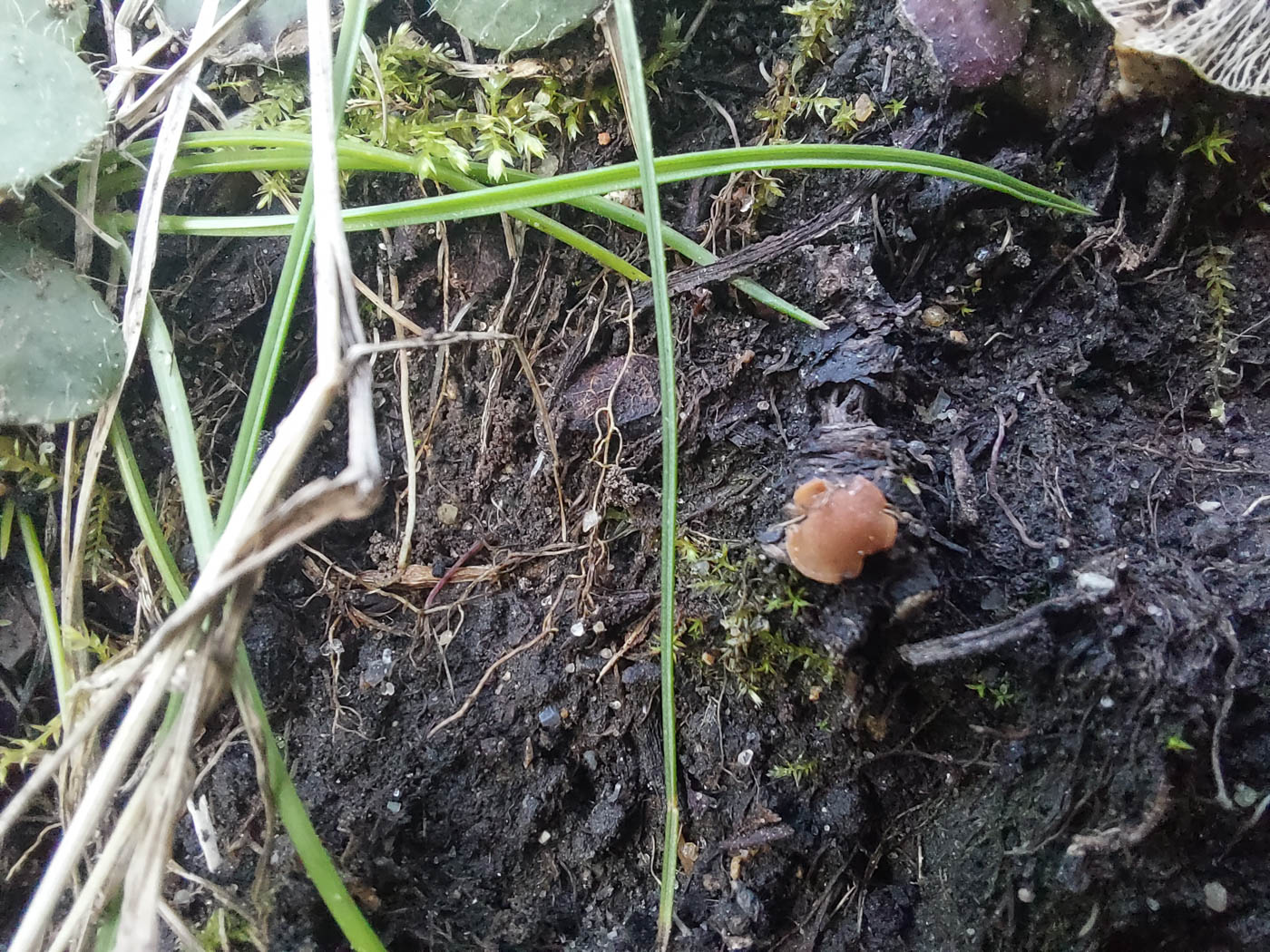
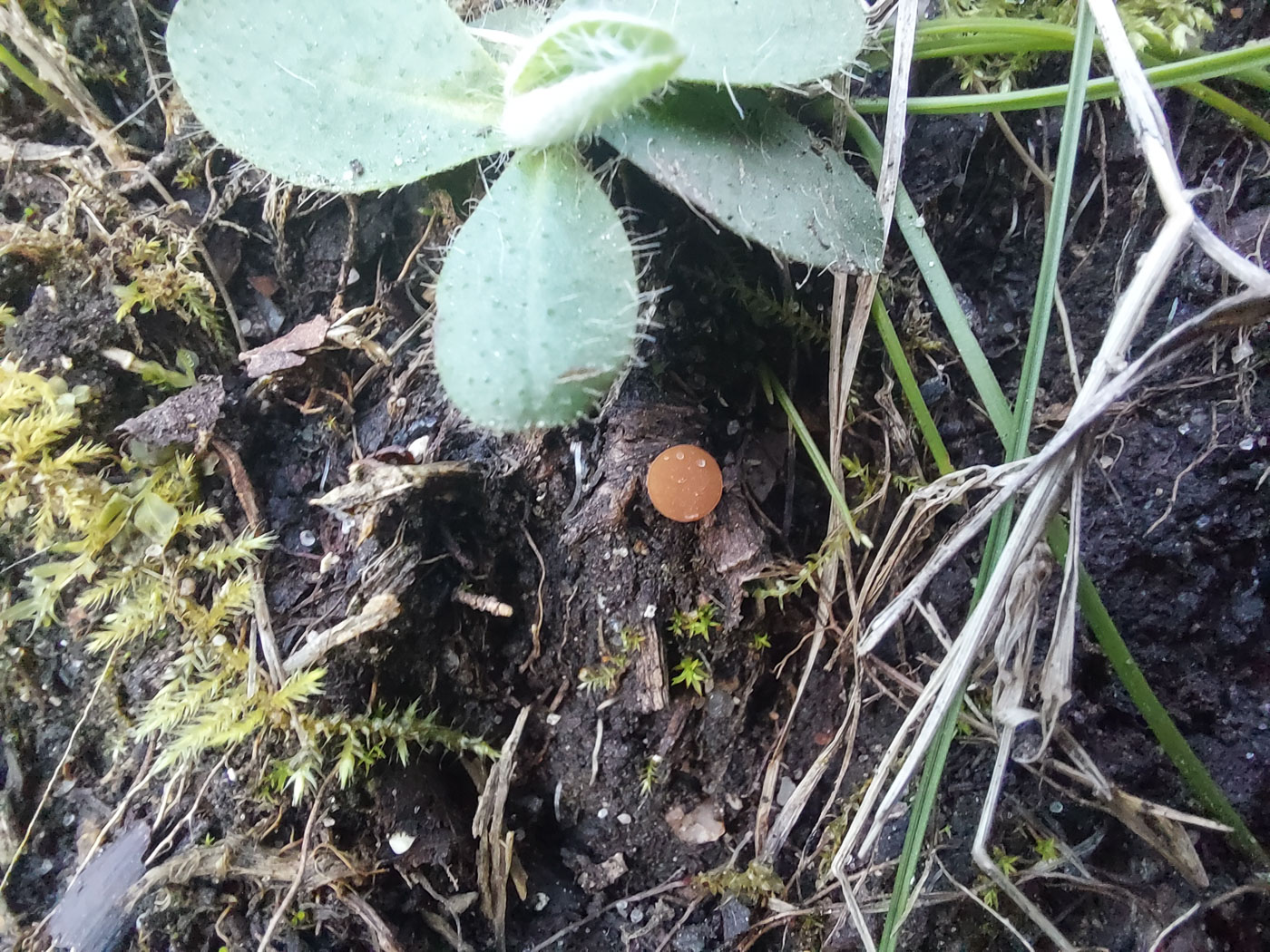 |
March 22nd Sclerotinia trifoliorum (a rare ascomycete with no common name) In Gerrards Cross Jesper Launder noticed this tiny orange disc growing in soil near moss and other vegetation. He suspected it was a species of Octospora but it failed to match anything he could find, so his photos were sent to expert George Grieff who had assisted him recently. George came back with an entirely different name though said that the species does indeed look similar to Octospora but differs in having a stem which had not been obvious to Jesper in this specimen. However the microscopic details all matched. This is a plant pathogen affecting various clovers amongst other things and develops a tiny black sclerotium (like a tiny hard pea) at its base - hence the genus name. This is a new county record and there appear to be no FRDBI records as yet this century. |
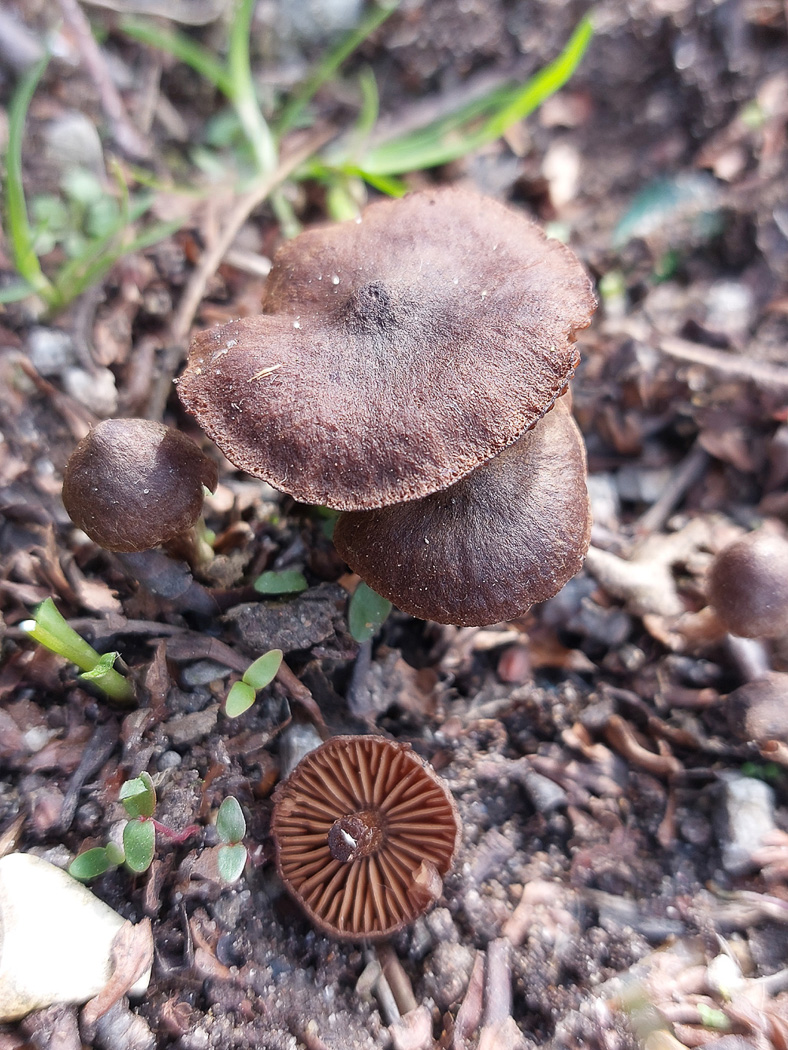
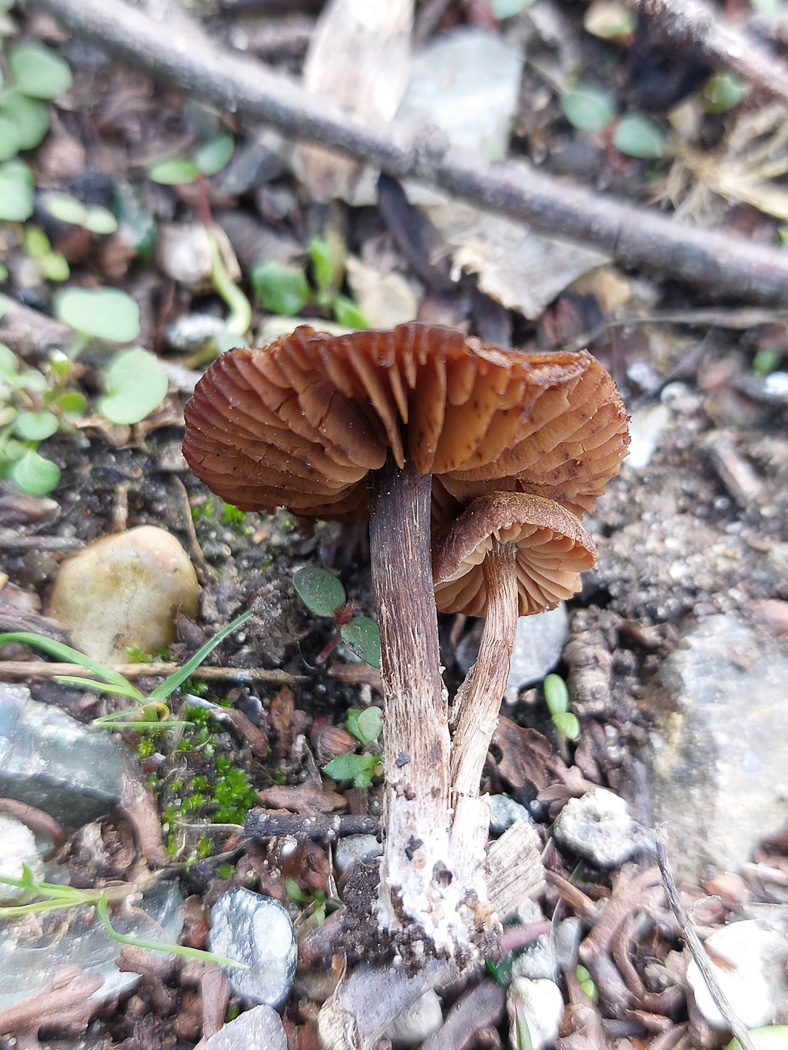
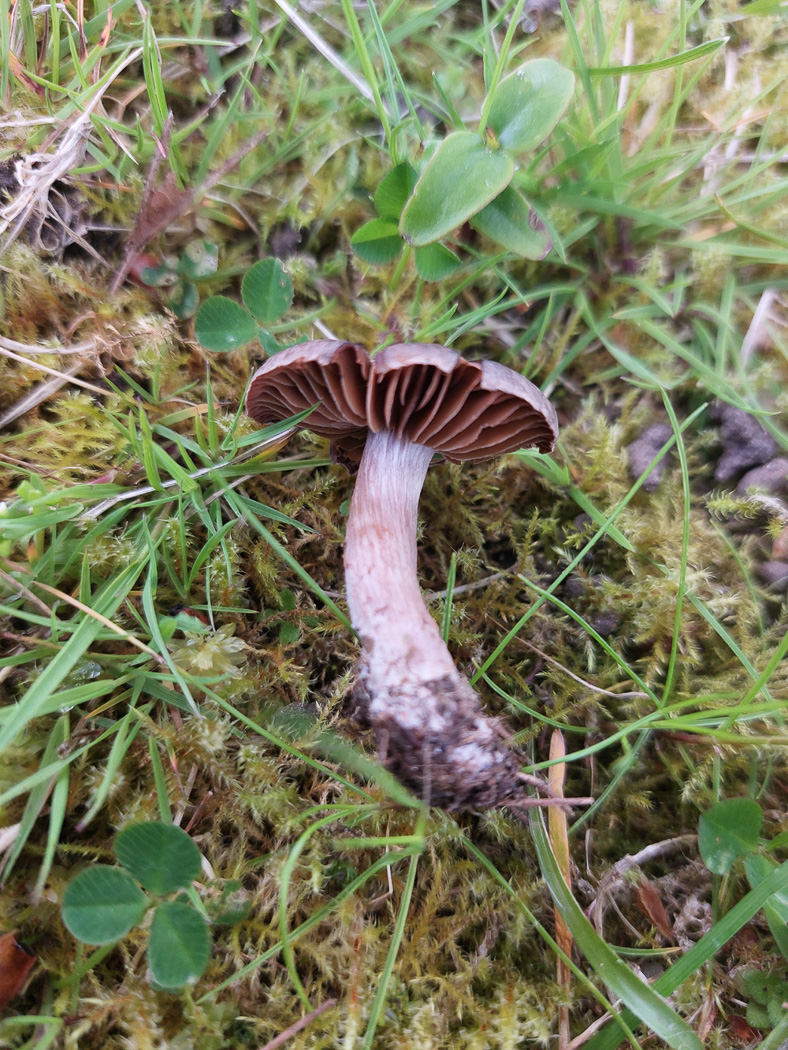 |
March 22nd Cortinarius vernus (Spring Webcap) In Gerrards Cross Jesper Launder came across this unremarkable LBJ under Birch and, recognising the genus, knew that it was likely to be something interesting if appearing at this time - very unusual for Webcaps. He keyed it out to this species, one which in fact he found here last year in May when new to the county. However, this will need sequencing to confirm his ID because there are many extremely similar species within the Telamonia section of the genus, and so many unseasonal things seem to be appearing this spring that anything is possible! Photo 3 is of another collection he made a month later under Lime at Stoke Poges Memorial Gardens. Previous finds |
March 21st 2024
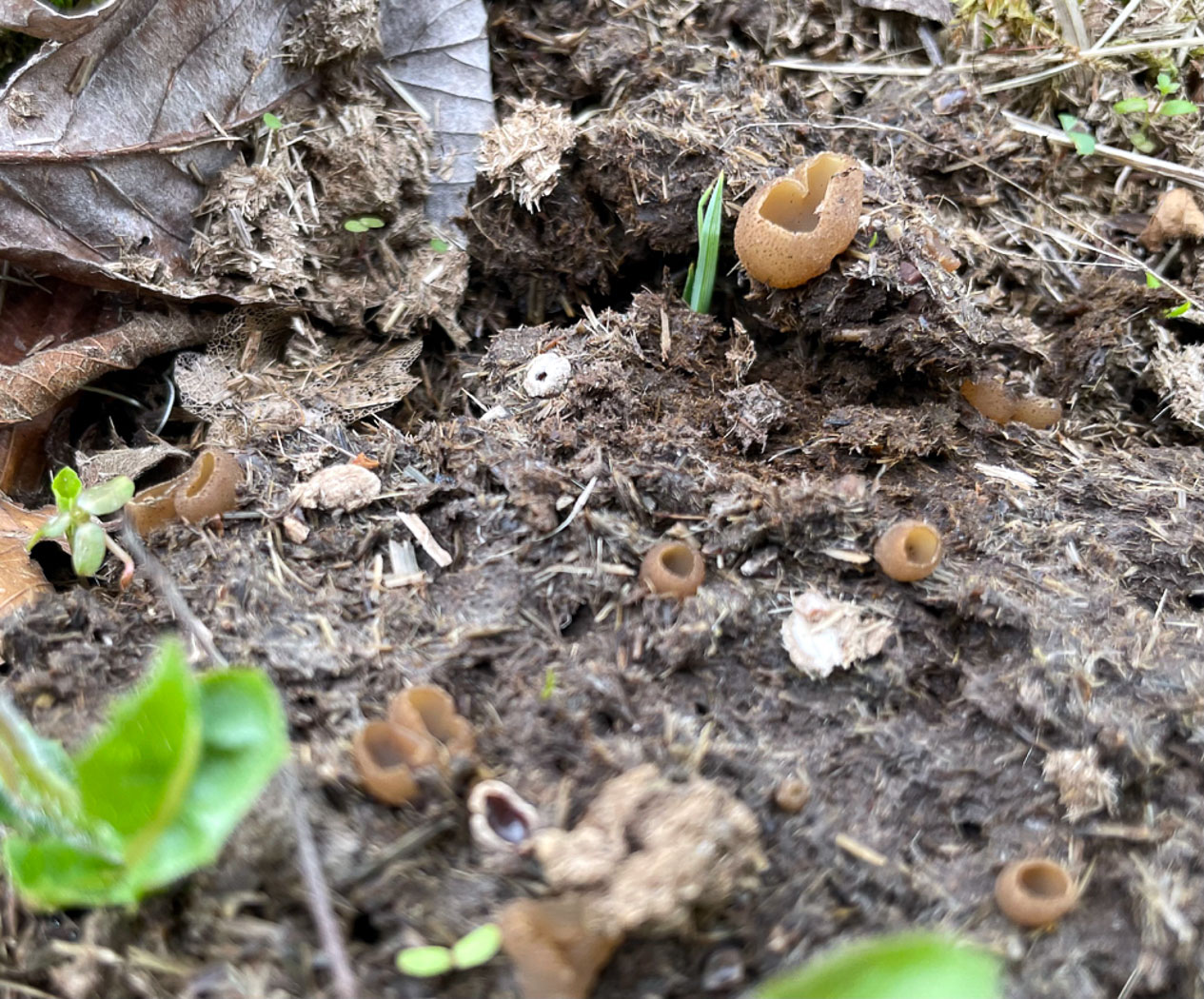 |
March 21st Peziza fimeti (a Cup with no English name) On a dung heap near Saunderton Sarah Ebdon found this group of Cups and took one home to examine. Once armed with the spore details, following the key became quite easy owing to this specific substrate, and she then found it matched in appearance as well - very satisfying! Previously P. bovina, it is not that often recorded - around 100 records in FRDBI, the majority in springtime; our Bucks records consist of several springtime finds at Pulpit Hill in 2000 and 2002. This is a new entry for Finds. |
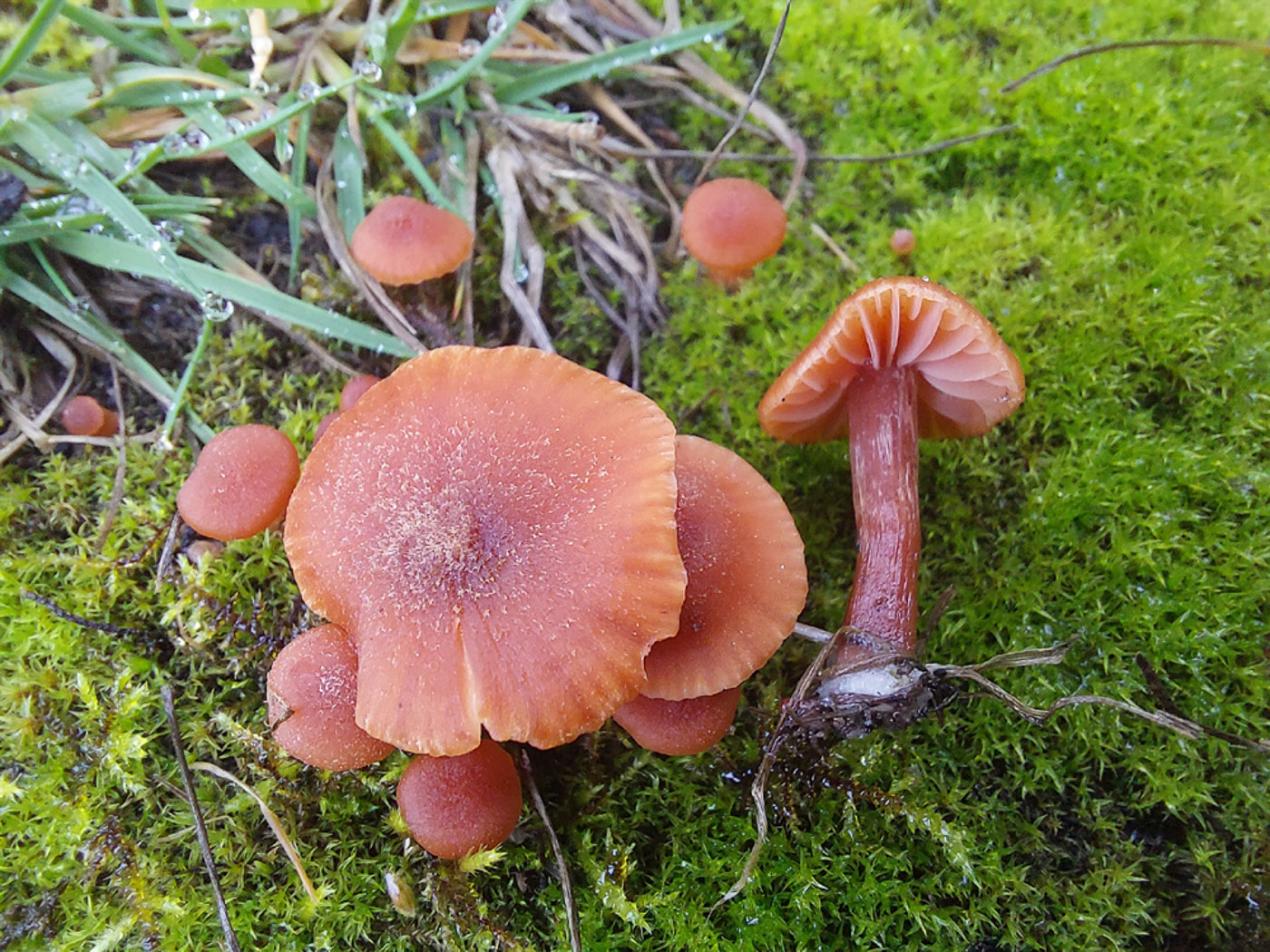
 |
March 21st Laccaria fraterna (Gumtree Deceiver) This find was another unseasonal surprise for Jesper Launder in Gerrards Cross. The two common members of genus Laccaria (Deceiver), l. laccata and L. amethystina, are so common that we tend to forget that this is one of our mycorrhizal genera (living in symbiosis with trees – in their case apparently any deciduous trees). L. fraterna grows only in association with Eucalyptus, arriving in this country with the import of that tree and as such is only to be found in its presence. The 50 odd UK records date from 1995, so it's still a rarity and new to the county though likely to be found if looked for under Eucalyptus. As can be seen, it's very similar in appearance to L. laccata (incidentally which also occurs in Eucalyptus!) but differs in having 2-spored basidia making a scope imperative for positive ID. The real surprise, however, is not finding it in the county but finding it in March! Jesper reported about 200 fruitbodies here, then found it the following day under another Eucalyptus the other side of town! |
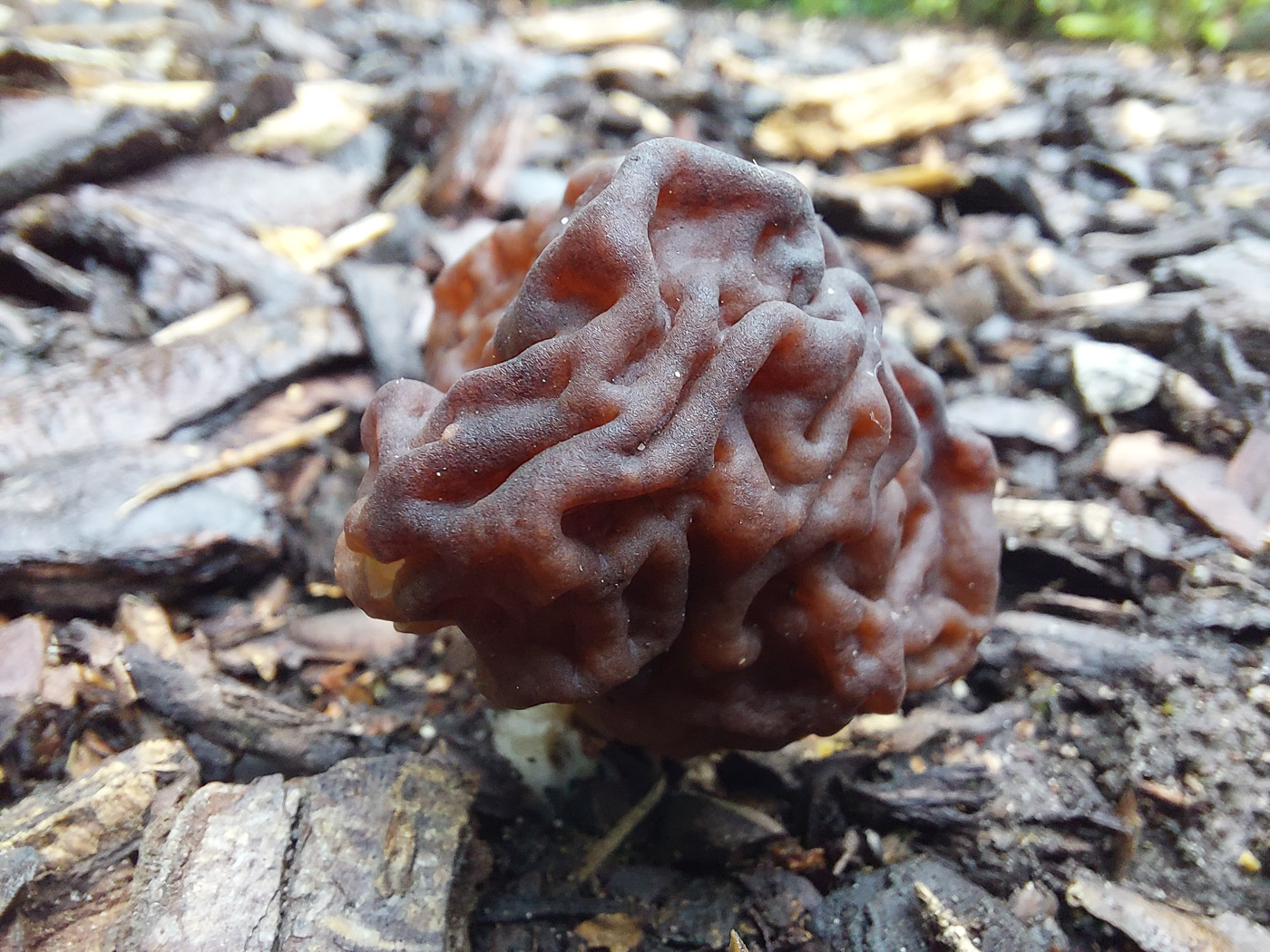
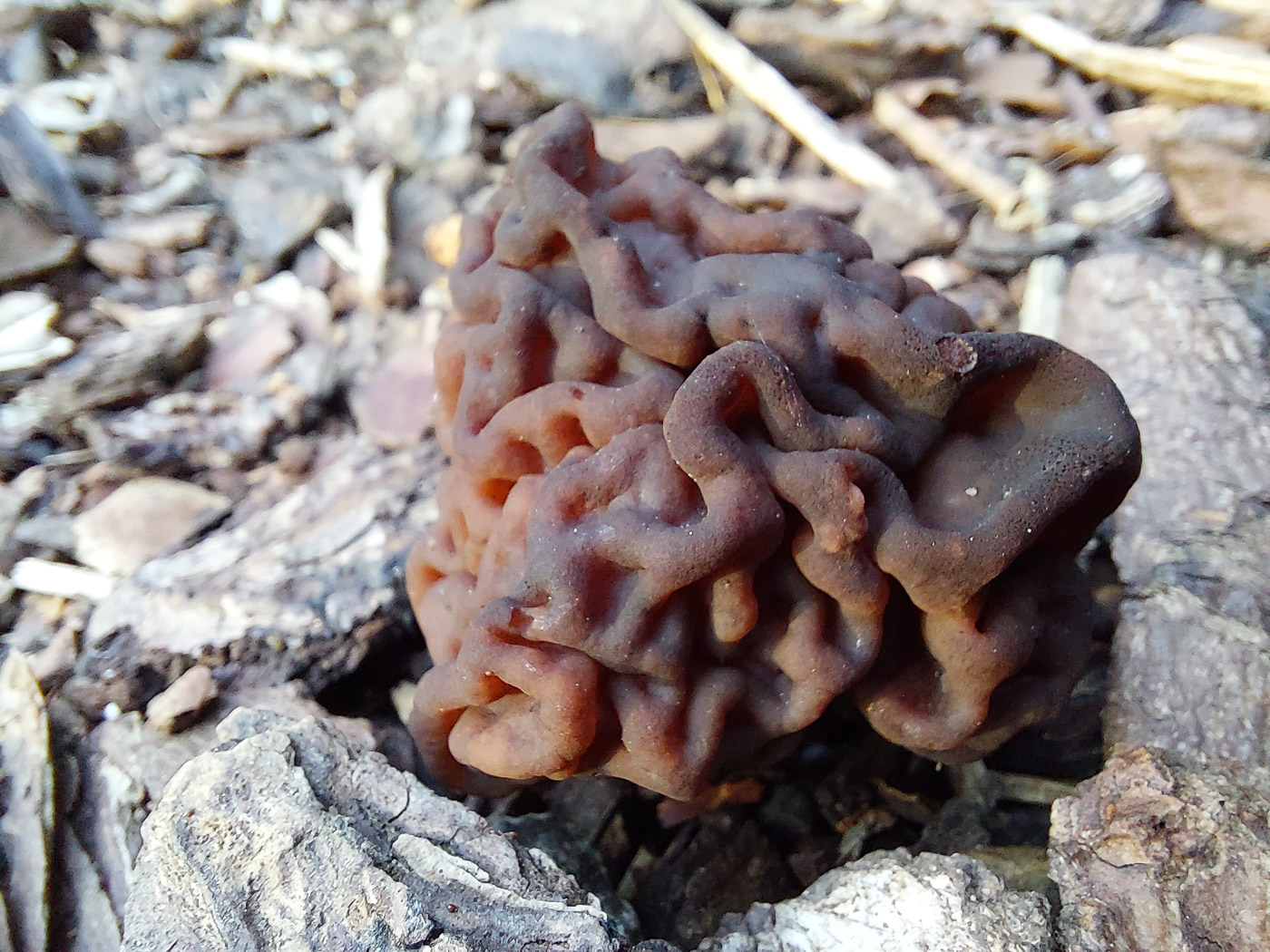 |
March 21st Gyromitra esculenta (False Morel) In Gerrards Cross Jesper Launder found two of these beauties in Pine mulch near some Pines. This distinctive springtime species is not related to the Morels though appearing somewhat similar - hence its English name - and unlike Morels should not be eaten despite its Latin species name indicating the opposite! Our only other records come from Wavendon Heath in the north of the county so this is a nice find and should also be present on Stoke Common amongst the Pines there. Previous finds |
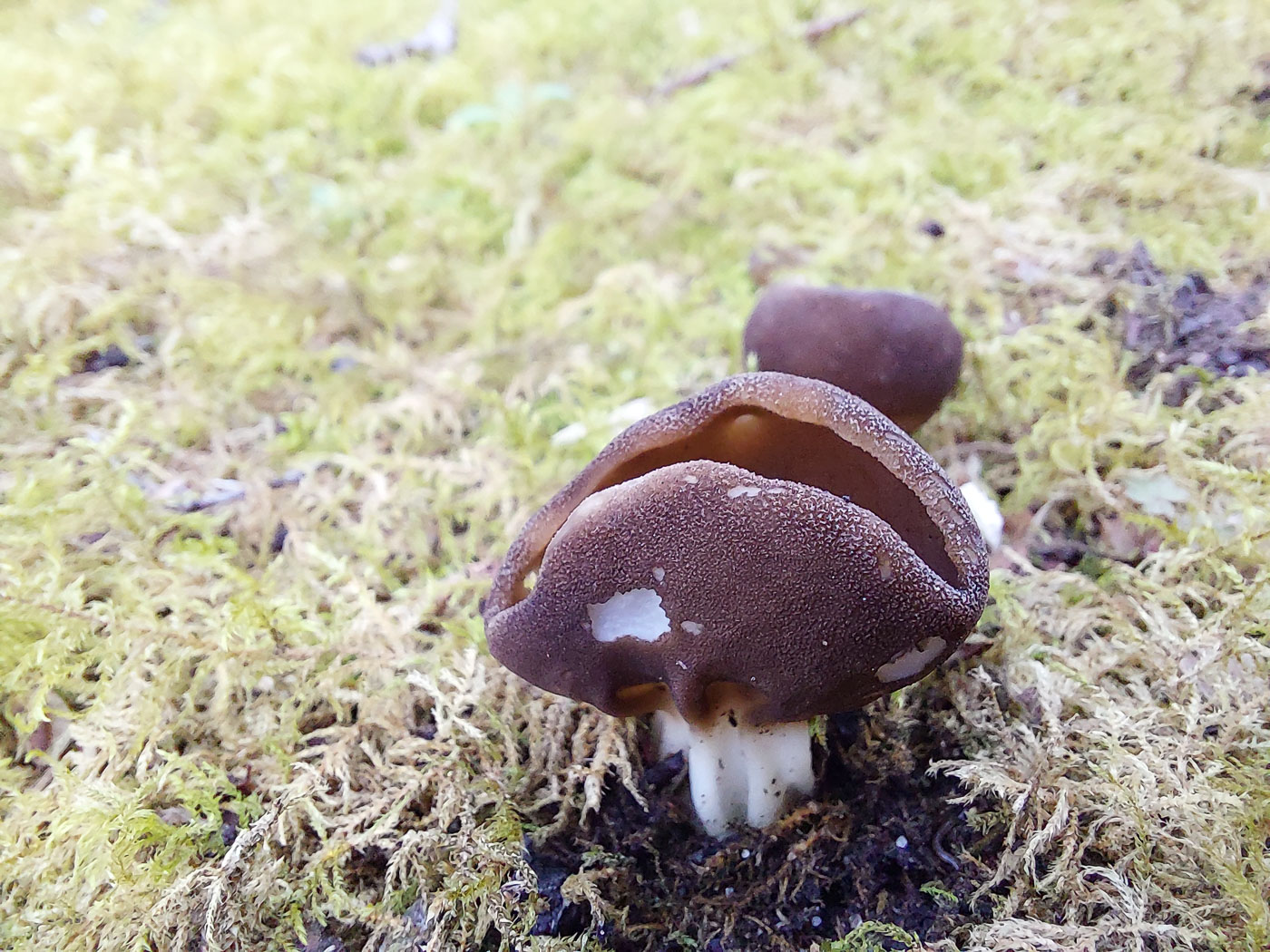 |
March 21st Helvella acetabulum (Vinegar Cup) Jesper Launder has now found several of these springtime cups coming up in Gerrards Cross though his photo here was the earliest. As both this species and the fairly similar Disciotis venosa are likely to be around at this time, care is needed by the less experienced to separate them. The English (and Latin species) name here refers not to its smell but to its shape - similar to that of the ancient Roman or Greek cup used for vinegar. Unlike D. venosa which smells strongly of chlorine / bleach and has wrinkles / veins on the inner surface, H. acetabulum has no smell and has wrinkles / veins running up the stem and onto the outer surface. Both are relatively common in spring in grassy woodland glades / soil. Previous finds |
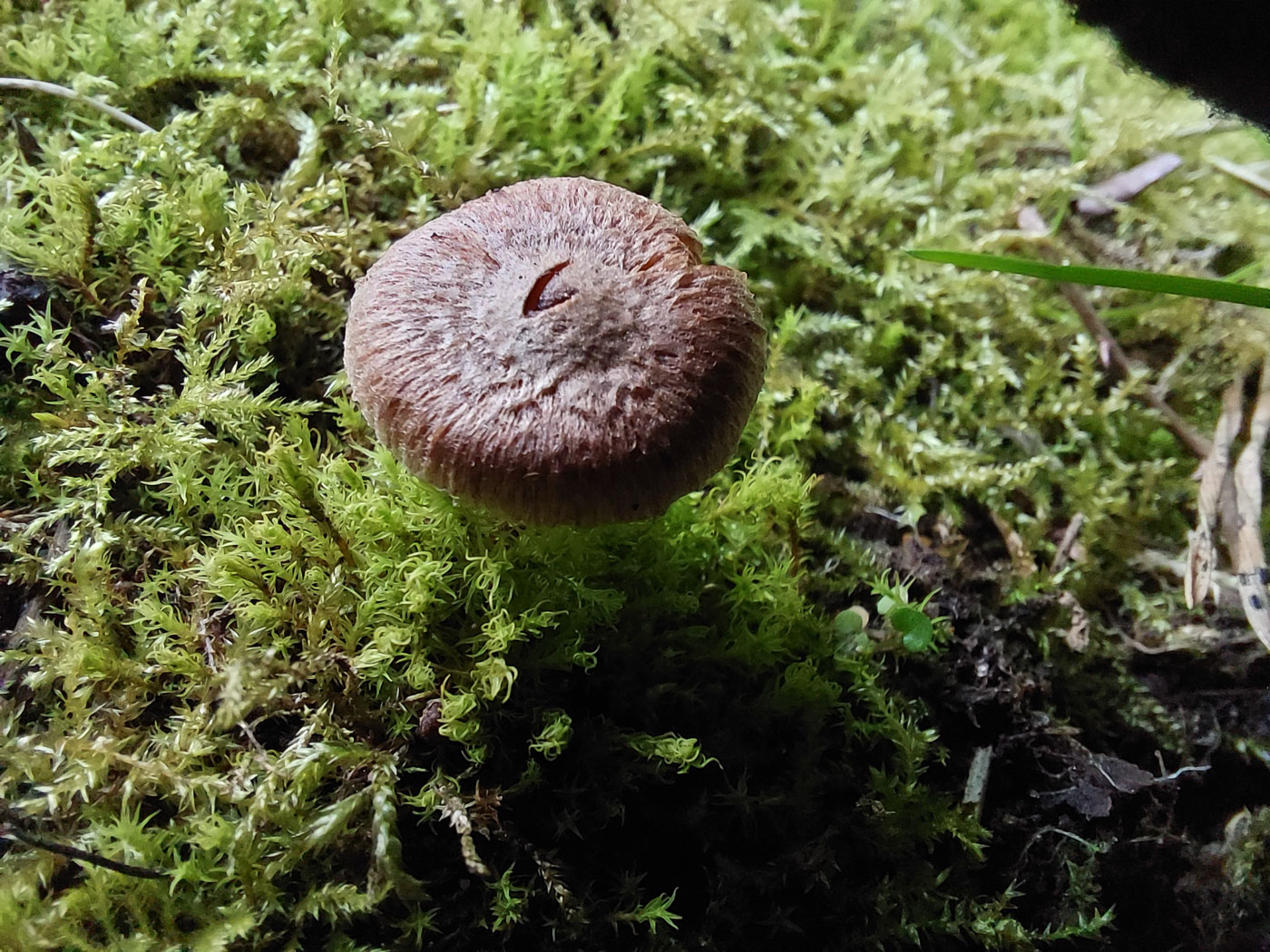
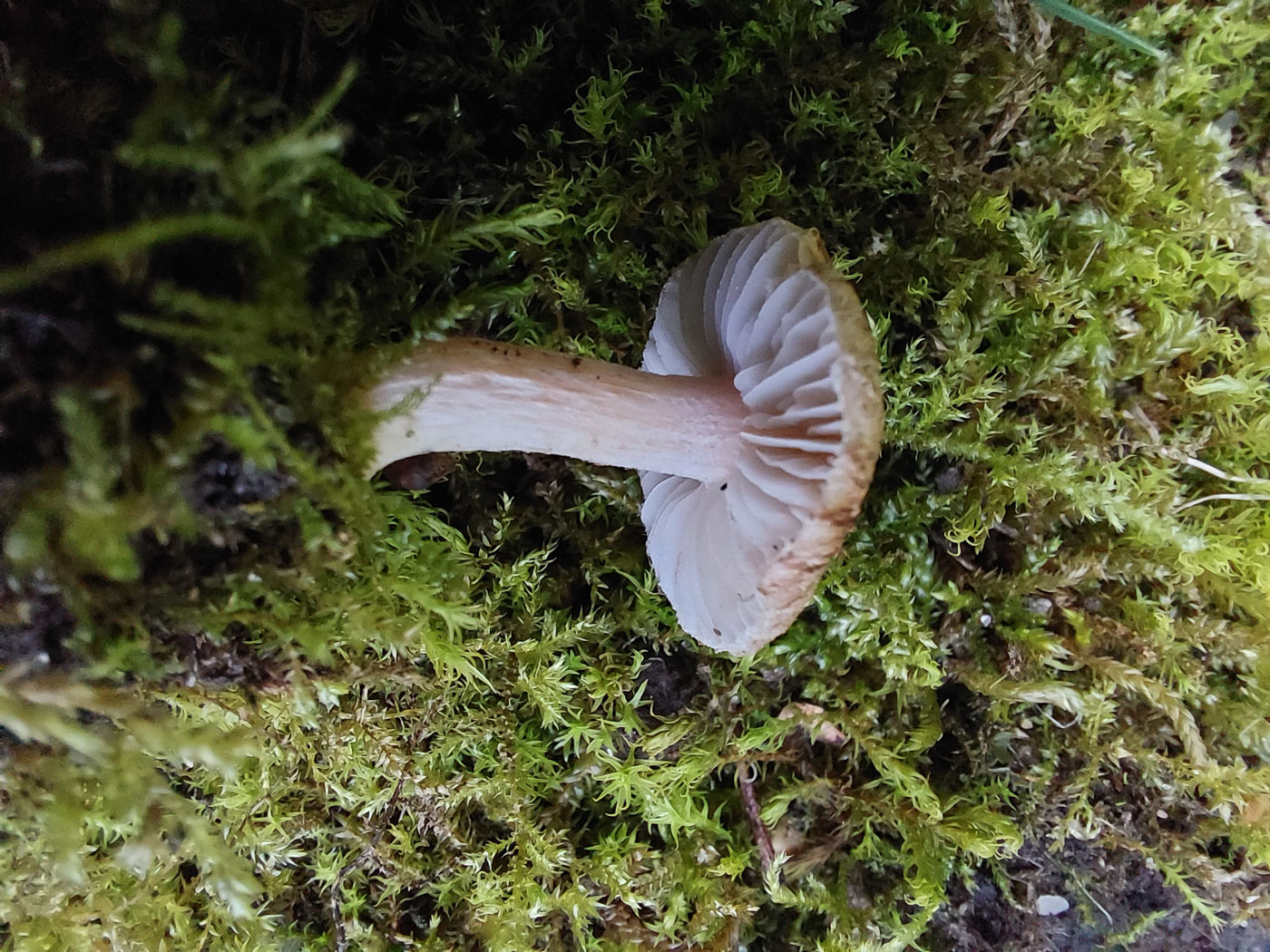 |
March 21st Inocybe flocculosa Inocybe flocculosa In Gerrards Cross Jesper Launder continues to turn up unseasonal fungi, this certainly being one. The genus is rarely reported earlier than June though Jesper did find one here in May last year. This collection was near to both Oak and Pine and is considered one of the commoner Fibrecaps, but there's a chance - once we get this collection sequenced - that it may turn out to be the extremely similar I. tigrina, the differences between the two (both macro and micro) are still unclear. If so this entry will be updated. Previous finds |
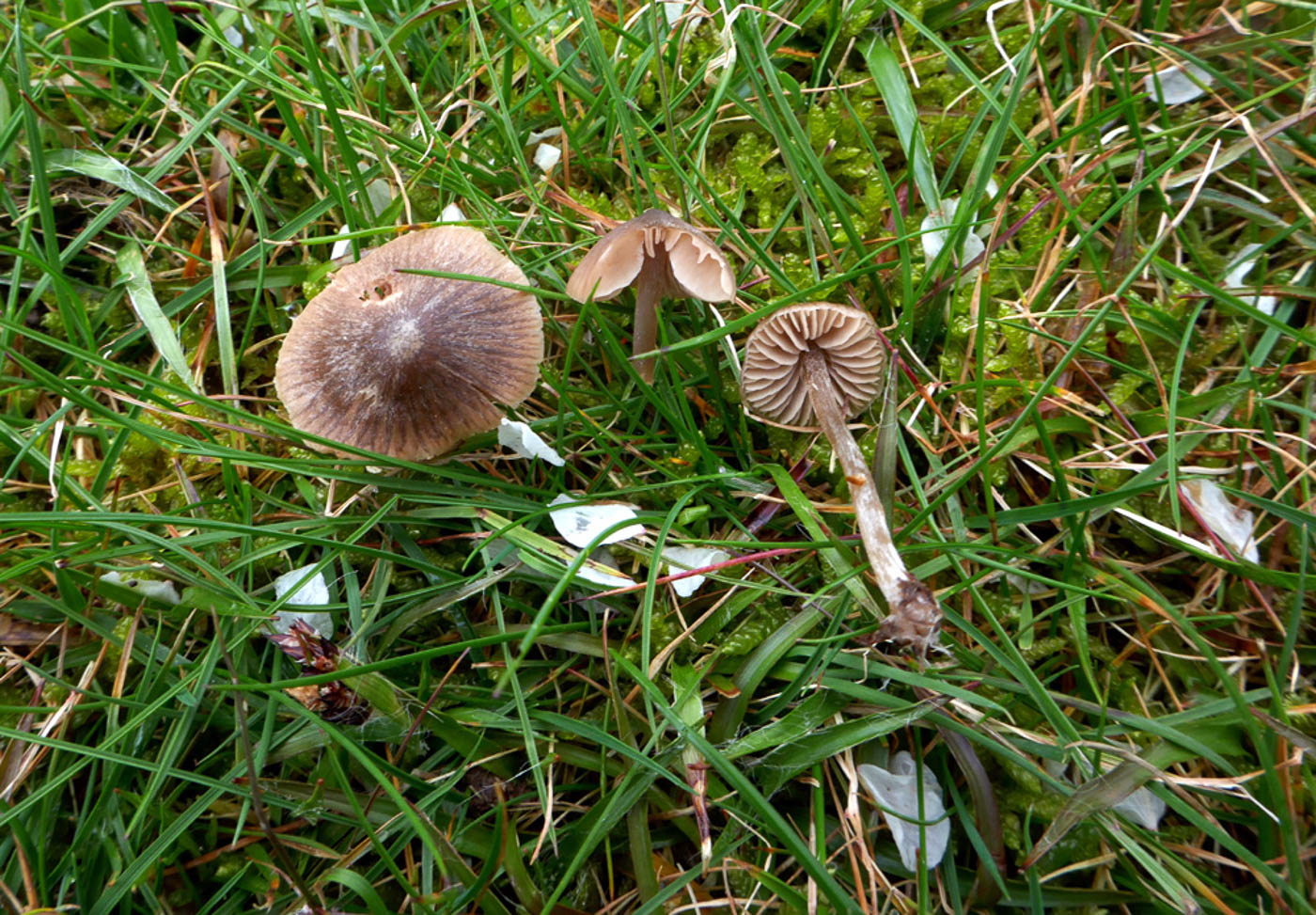
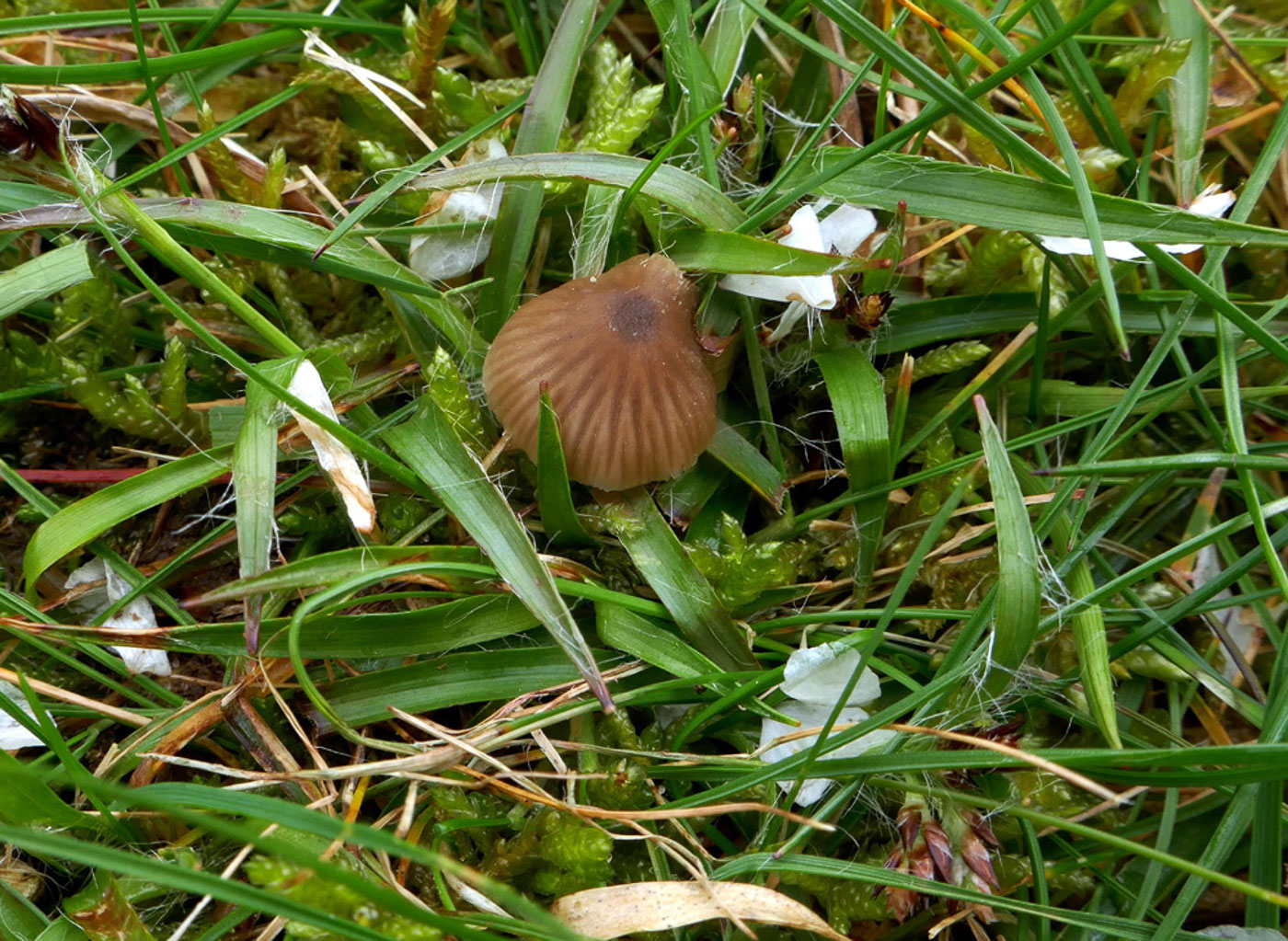
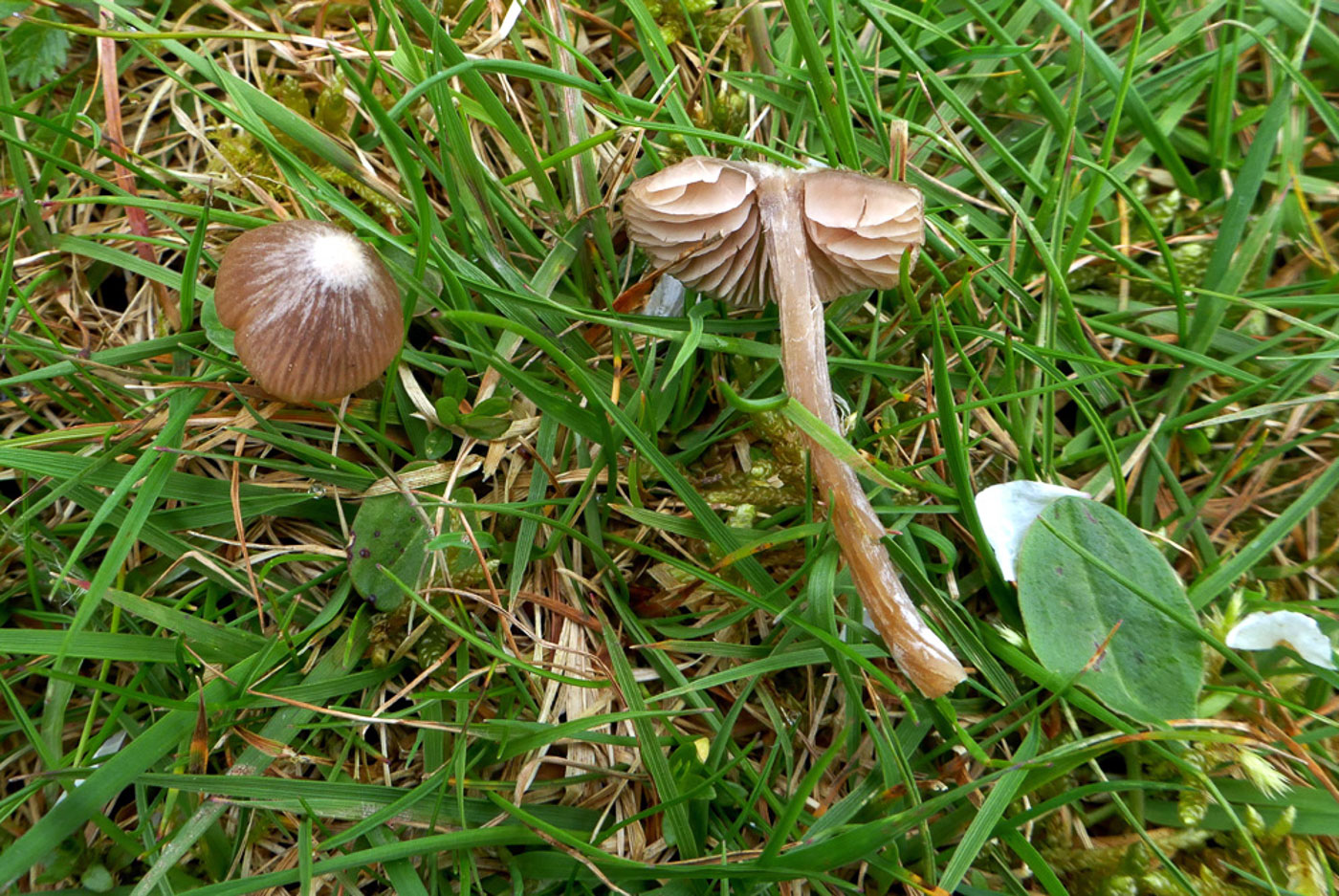
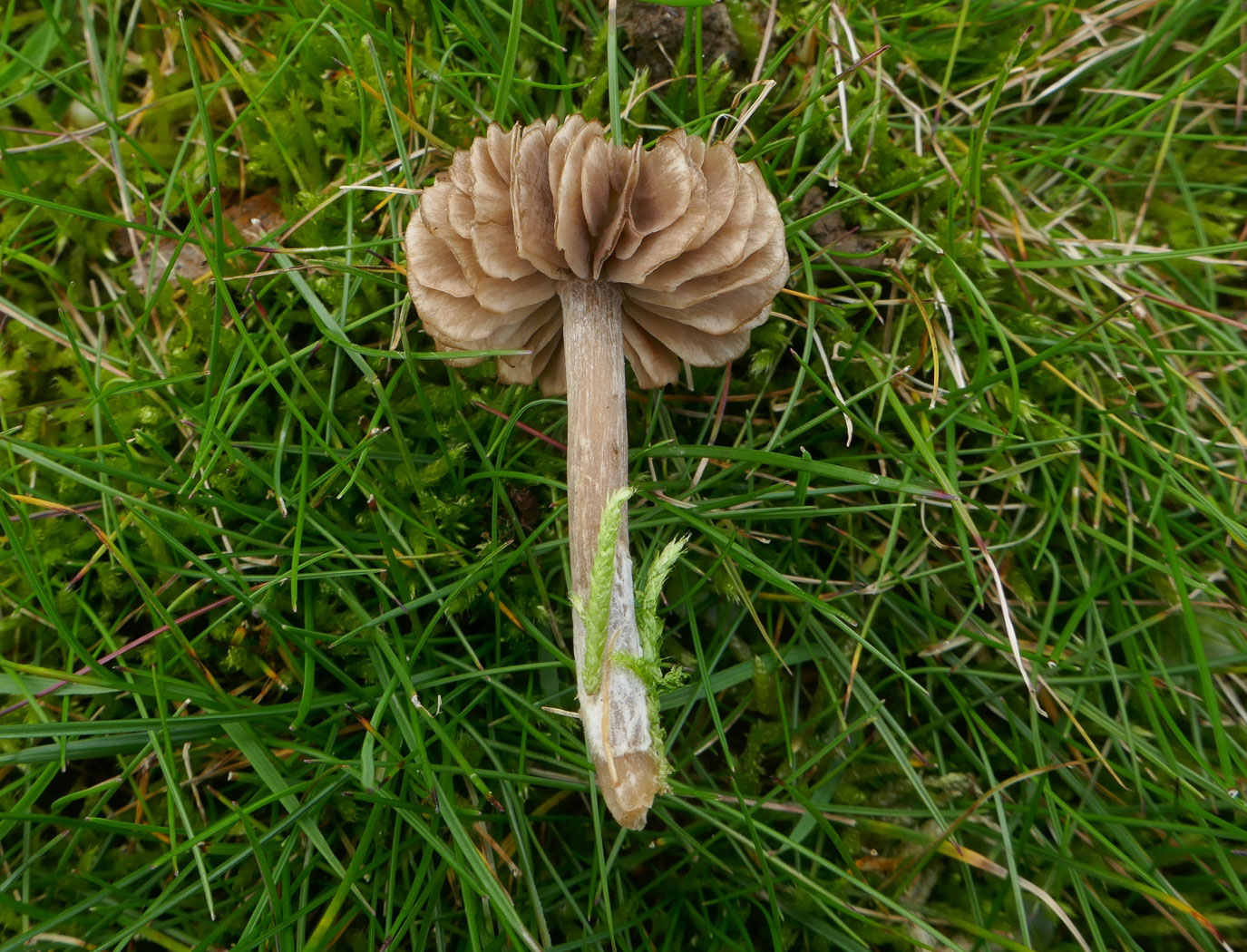 |
March 21st Entoloma ventricosum (a rare Pinkgill with no English name) In a grassy area at Stampwell Farm Jackie Ewan came across what at first glance might have been a Mycena (Bonnet) but turning it over and suspecting it had pink spores Jackie guessed it was a small species of Entoloma. A quick look at the spore shape under the scope confirmed this, and she then researched to come up with the name E. ventricosum. A springtime fruiter - there are several in the genus - it is characterised by widely spaced ventricose gills (those which are swollen in the middle), a brownish translucent cap having a Mycenoid appearance. This is new to the county and there are extremely few national records. The collection will be dried and sequenced. Photo 4 is of a further specimen found at the same spot two weeks later and showing off the ventricose gills particularly well. |
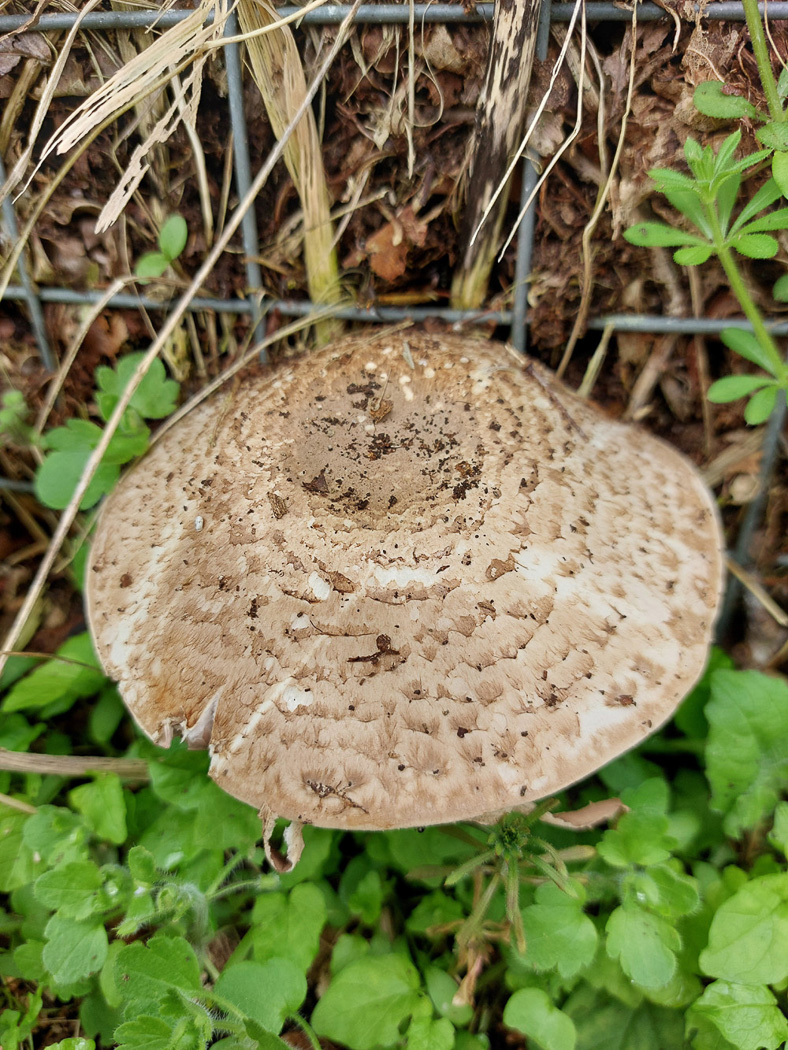
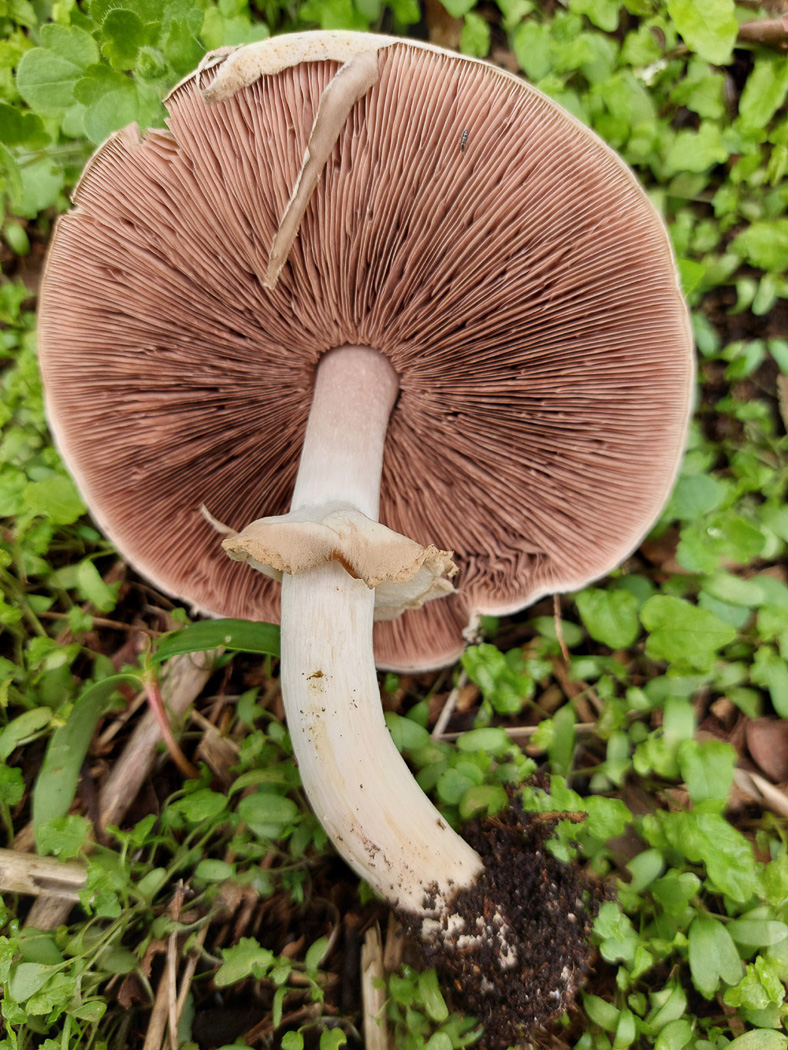 |
March 21st Agaricus phaeolepidotus (Dusky Scaled Mushroom) In Gerrards Cross Jesper Launder came across this somewhat early fruiting singleton. This mushroom is not that common and related to the A. xanthodermus group (ie the Yellow Stainers), members of which have an inky smell. Though superficially easily mistaken for A. sylvaticus (Blushing Wood Mushroom), that species stains red (cap and stem) when scratched and has the typical pleasant 'mushroomy' smell whereas today's species does not redden anywhere and tends to stain yellow at the stem base (though not as strikingly as in others in this group). Previous finds |
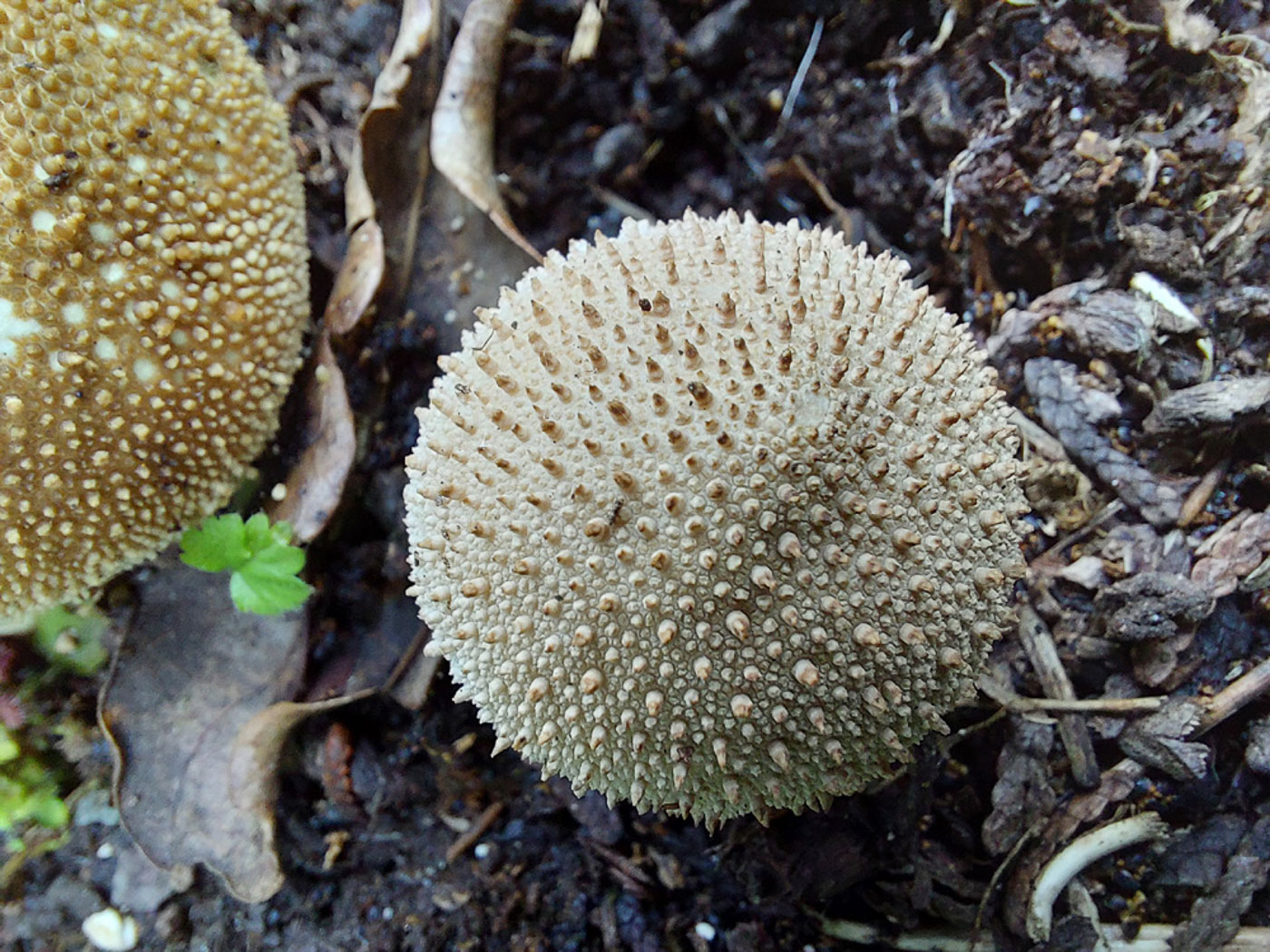
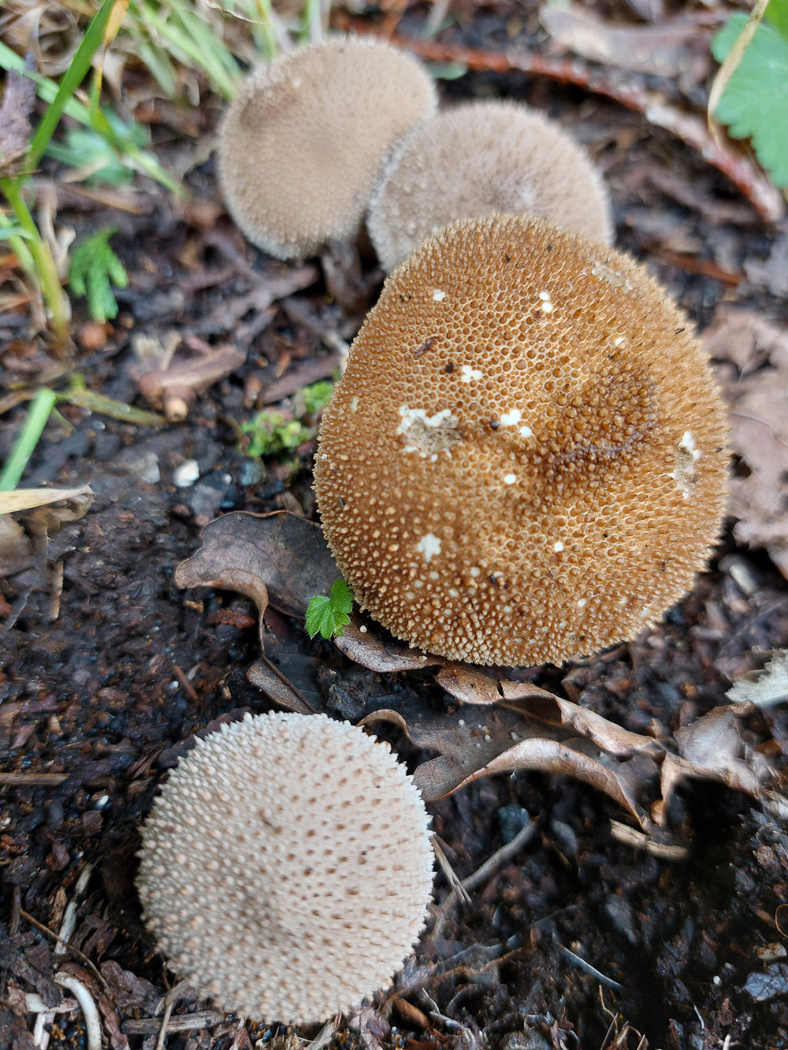 |
March 21st Lycoperdon perlatum (Common Puffball) Yet another very unseasonal find: Jesper Launder spotted these fresh Puffballs in Gerrards Cross, showing their diagnostic warts which rub off on your finger and separate the species from the equally common but much smoother-surfaced L. perlatum (Stump Puffball). It is exceptionally early in the year to find any Puffball fruiting though it's not unusual to find last year's old dried-up fruitbodies still surviving at this time. Previous finds |
March 20th 2024

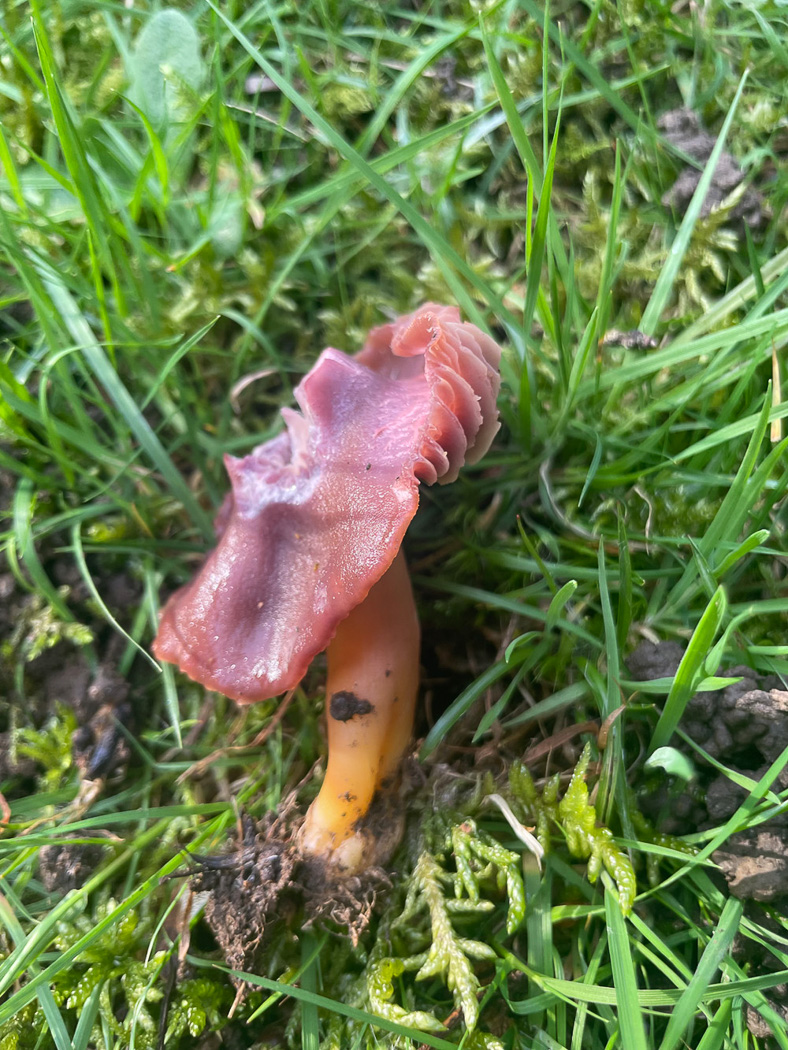
 |
March 20th Gliophorus reginae (Jubilee Waxcap) In Lacey Green churchyard Sarah Ebdon (who knows this species well from this site) was somewhat surprised to find a singleton up at this time. Though rare, this poorly known Waxcap - named in honour of our late Queen's jubilee - first turned up here in December 2021 and has fruited here every year since though late in the year and once into January. But March?! This is now our second Waxcap within the week, and bearing in mind the several other unseasonal recent finds it is clear that something unusual is going on at the moment presumably as a result of our mild winter / climate change? See previous notes on Finds for more about this species. Previous finds |
|
|
March 20th Daldinia concentrica (King Alfred's Cakes) In Beaconsfield Sarah Ebdon was bowled over by this magnificent display at the base of an Ask trunk. Her apt comment to Penny: 'The day King Alfred not only burnt the cakes but added WAY too much baking soda!'. She likened it to lava bubbling out of the tree and reported that it was on all sides of the trunk as well. A common species, yes, but this is an extraordinarily massive outbreak, the largest in her and Penny's experience. But for how much longer will the species be common, bearing in mind the demise of our Ash trees upon which it depends? Time will tell. Previous finds |
March 18th 2024
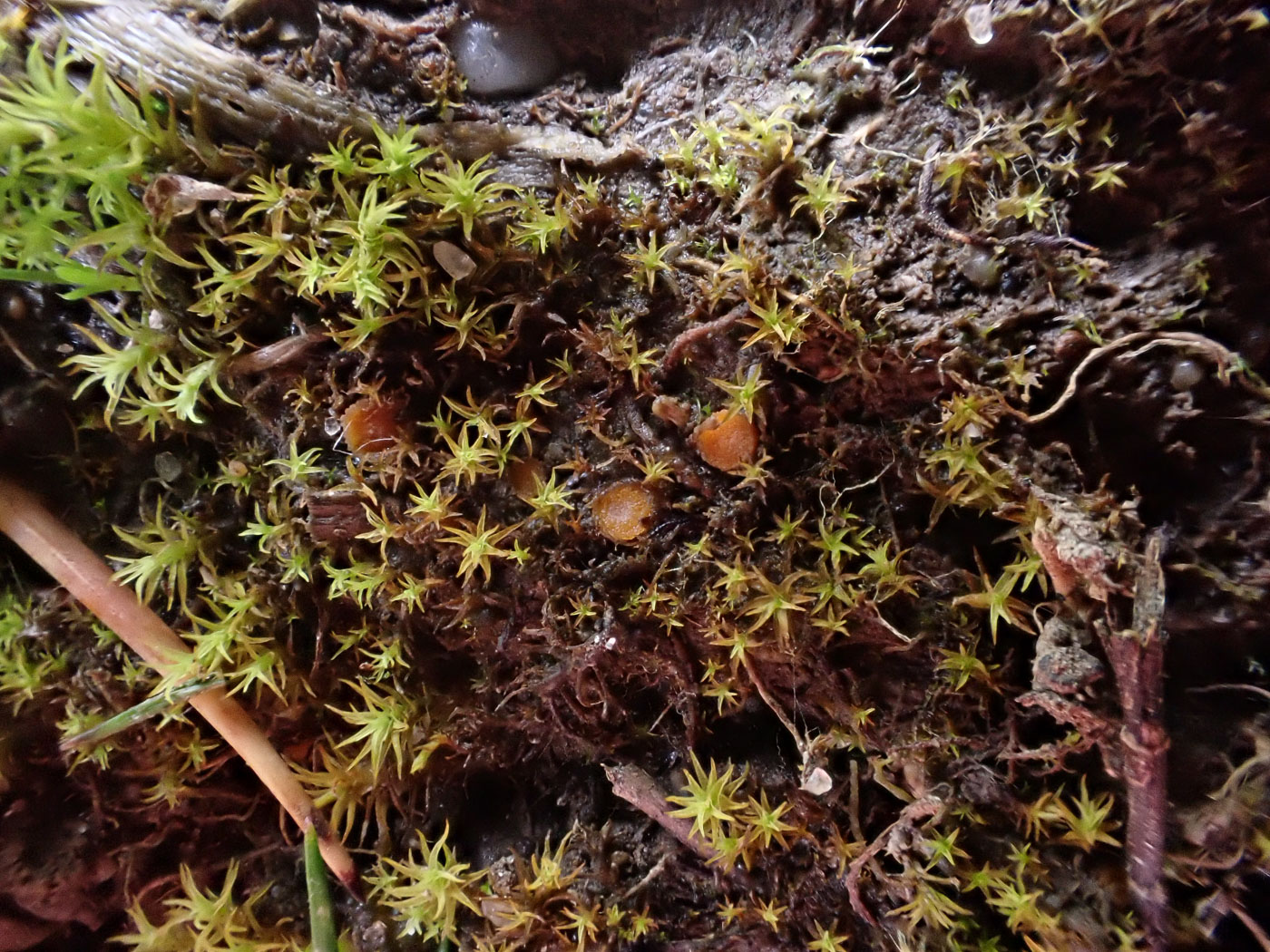 |
March 18th Lamprospora miniata var. ratisbonensis (a rare cup fungus with no English name) In moss in Gerrards Cross Jesper Launder found about 20 of these miniscule orange hairy-edged cups and knew he'd need help with identification. He sent his macro- and microphotos - the species has beautiful round spores ornamented with a distinct reticulation - to expert George Grieff who was able not only to name the moss genus as Didymodon but also to make a likely suggestion for the fungus too. Jesper then confirmed this using various keys etc. There appear to be no records in FRDBI and this is new to the county. |
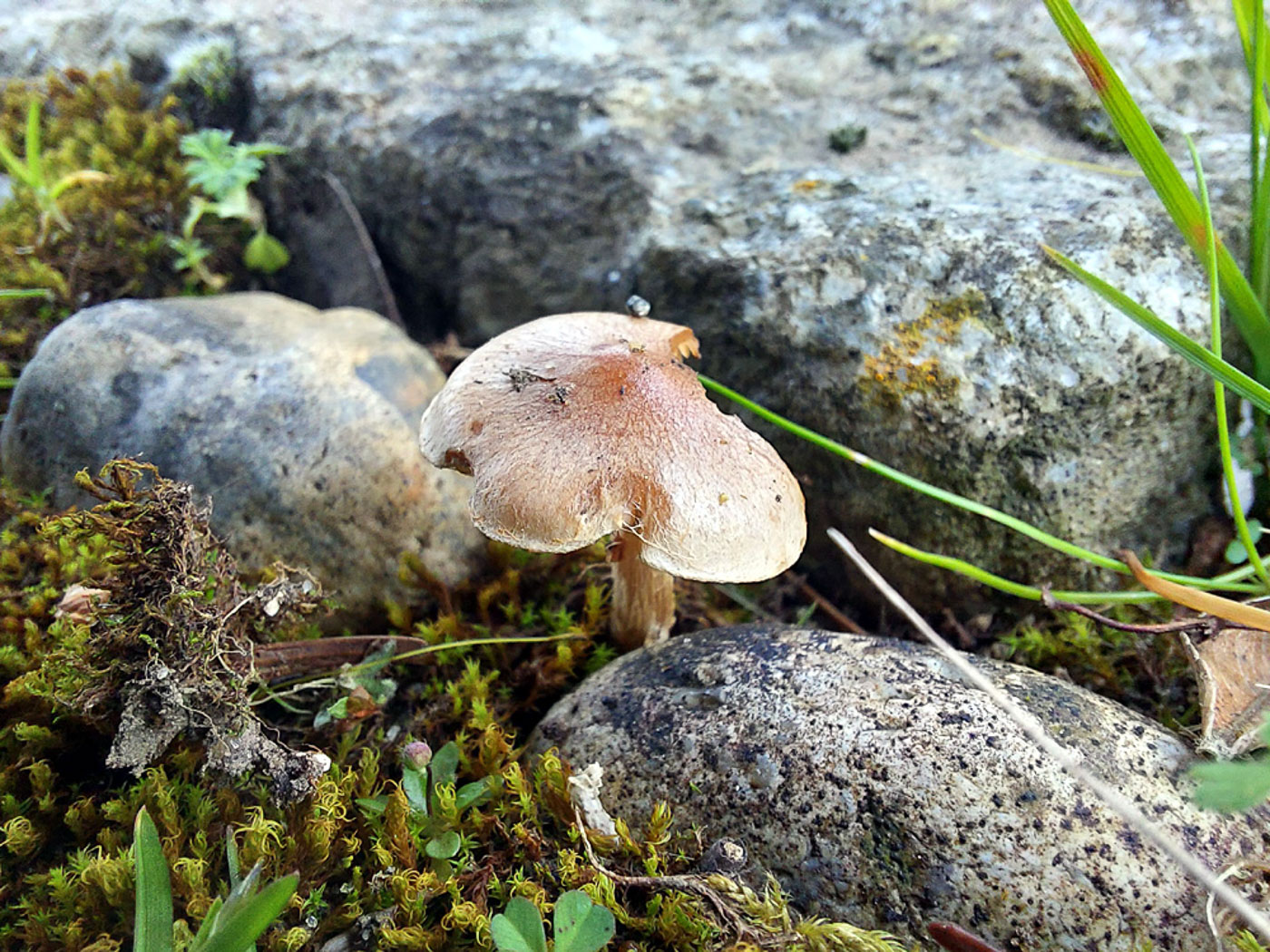
 |
March 18th Hebeloma mesophaeum (Veiled Poisonpie) Under Birch and Eucalyptus in Gerrards Cross, Jesper Launder was amazed to come across this genus in March - one we expect to find in the autumn. Microscopy confirmed it, however, and also enabled him to determine the species - not that rare (in the autumn) and sometimes with a two-tone cap with distinctly darker centre (as will be seen in our other previous Finds entry which was also made under Birch). However, bearing in mind the extraordinarily unseasonal date and possible association with Eucalyptus, today's collection will be sequenced. Previous finds |
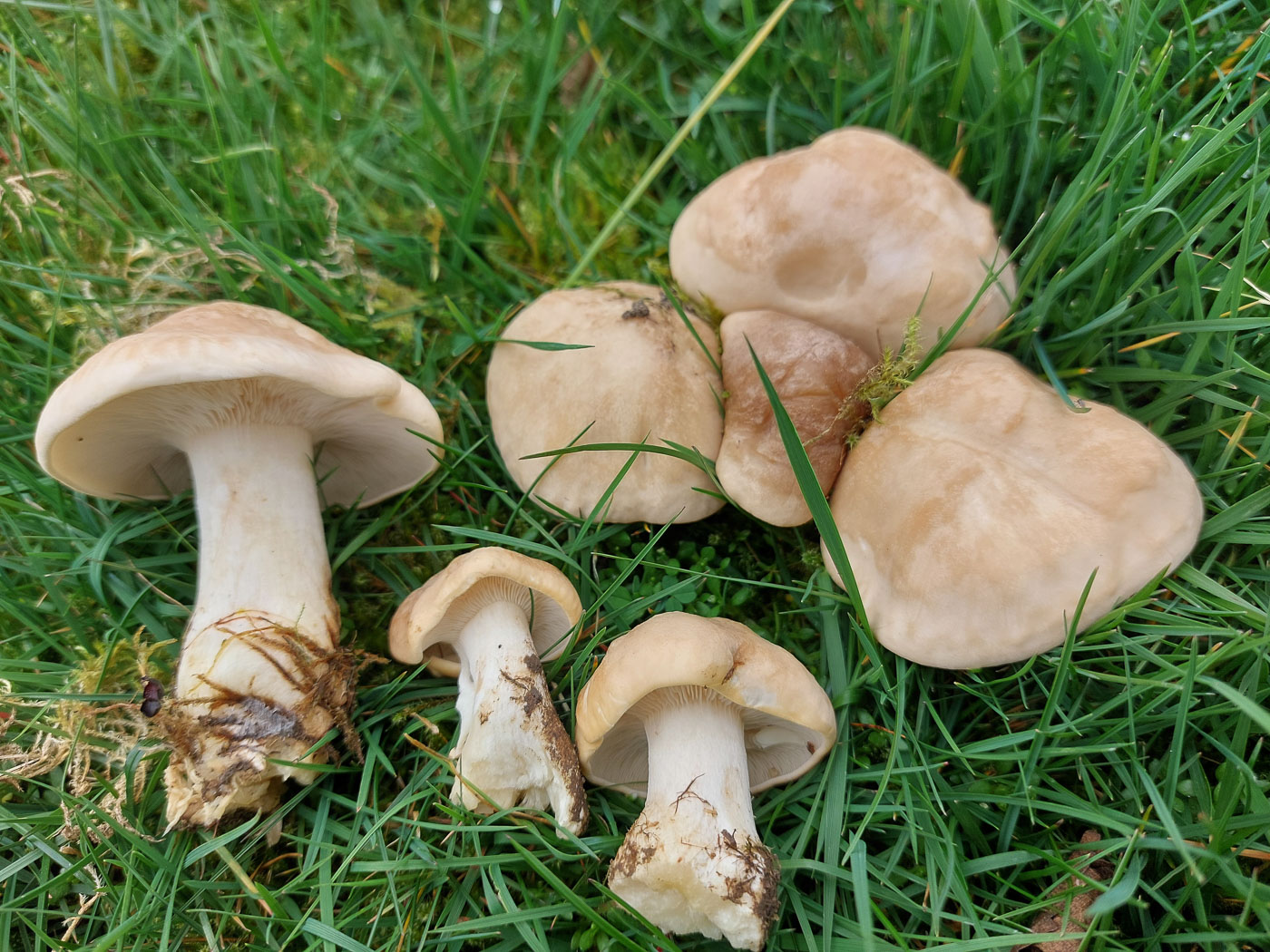 |
March 18th Calocybe gambosa (St. George's Mushroom) In Gerrards Cross Jesper Launder found a nice fresh collection of this springtime species with its typical chunky pale cap with slightly inrolled edge, thick stem and equally pale gills. One whiff of its strong farinaceous smell (mealy / of rancid flour) is all the confirmation one needs: this is pretty well the only mushroom answering to this description found at this time, so an easy one to identify. Named after its regular appearance on or around St. George's Day (April 23rd), it is common in grassy verges from April to May (or even June) and our earliest record is for March 2nd though we have almost no other March records besides today's. Previous finds |
March 17th 2024
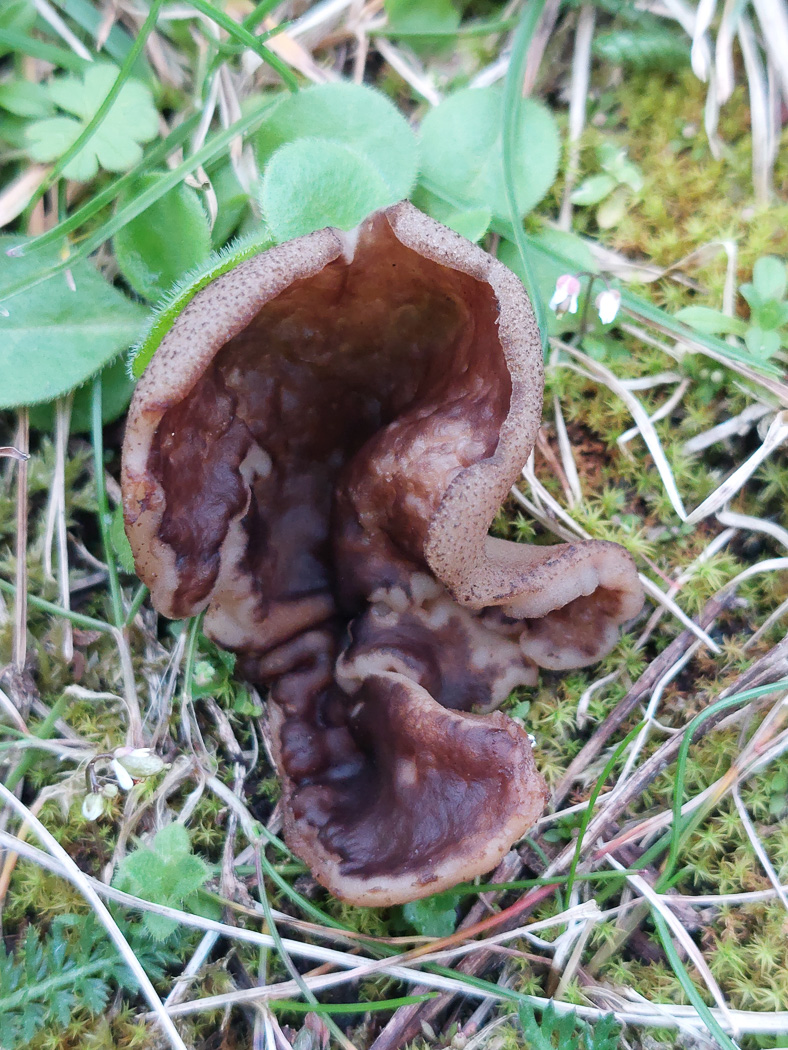 |
March 17th Disciotis venosa (Bleach Cup) In Gerrards Cross Jesper Launder noticed this singleton species fruiting in a hotel car park verge. There are several similar cup fungi which fruit in Spring, usually in April though we do have some early March records for this one which favours grassy banks. Its English name refers to its strong smell - one of the clues which help to confirm its identity. Previous finds |
March 16th 2024
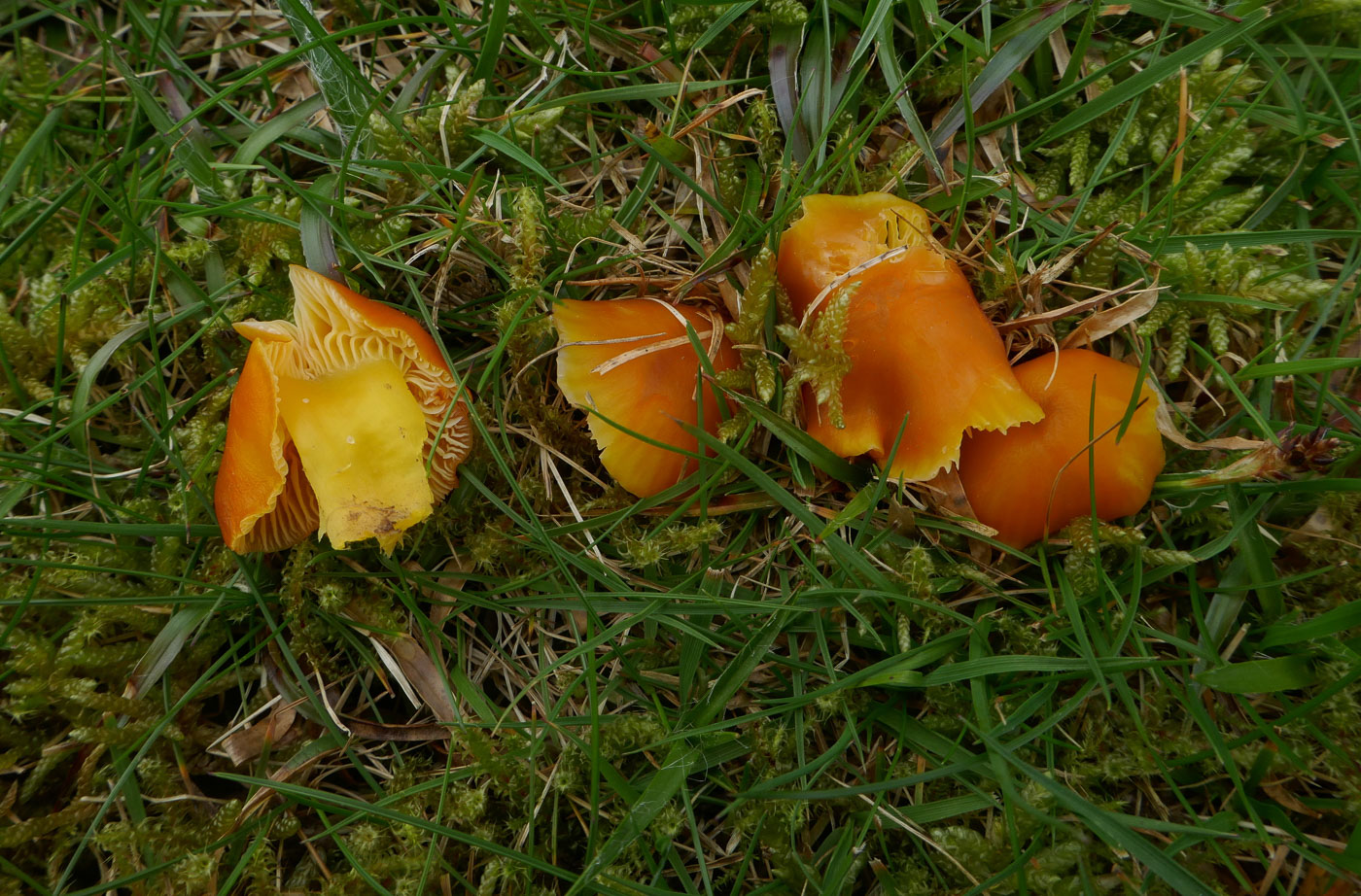
 |
March 16th Hygrocybe ceracea (Butter Waxcap) Penny was surprised to receive details of this species from Jackie Ewan, found at Stampwell Farm in grassland. Waxcaps occur most often in latish autumn though we also have summertime records, but the earliest we have for this particular species is one doubtful record in August 20 years ago! The similar but larger H. chlorophana was found last year in May (see in Finds) which was also an exceptionally early record. Glancing through the first half of the 2500 odd national records, Penny found just a few for January - presumably late autumn season fruiters - but none from February to July. Previous finds |
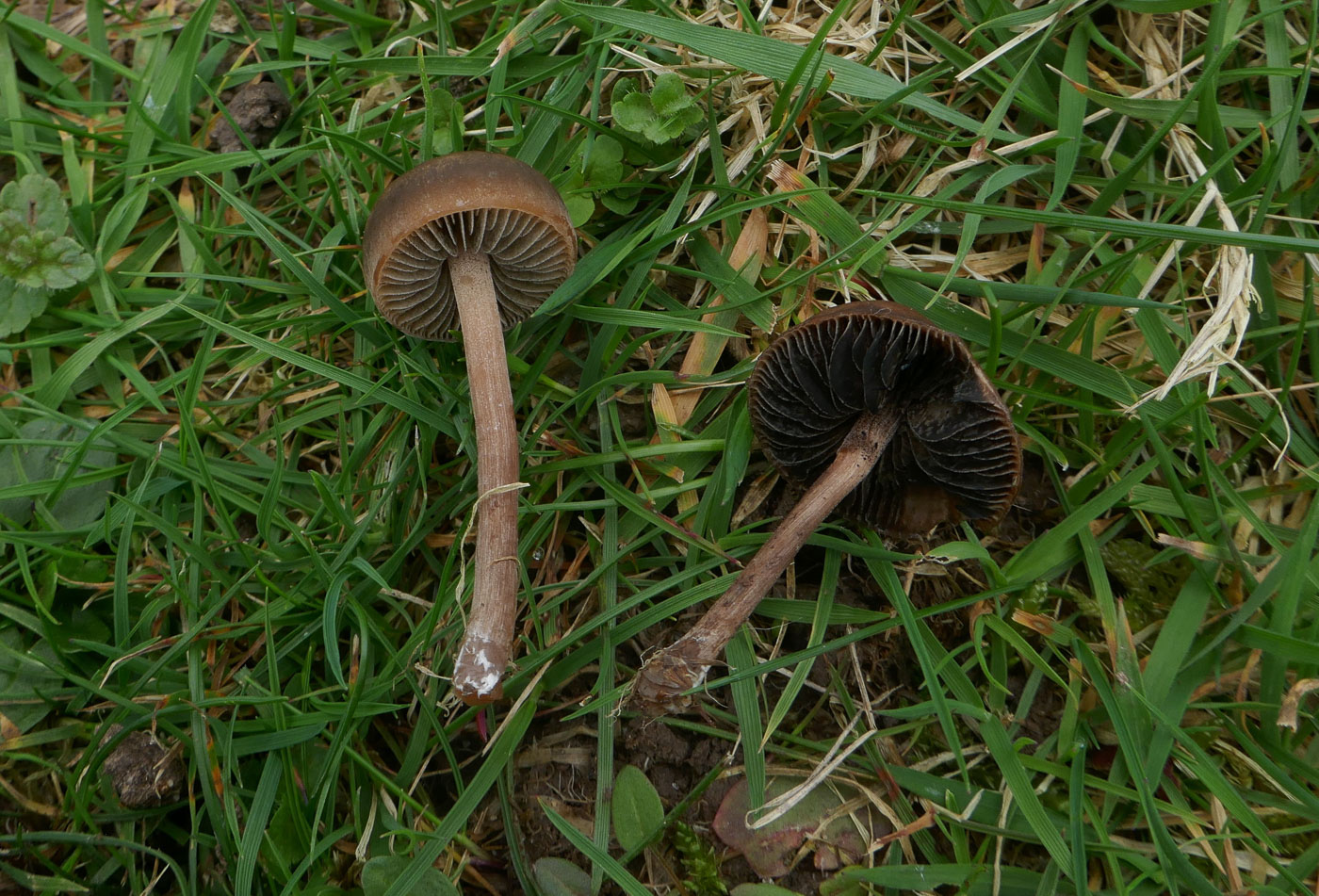 |
March 16th Panaeolus fimicola (Turf Mottlegill) At Stampwell Farm Jackie Ewan noticed an early fruiting of this species in manured grassland. Though the Latin species name suggests an association with dung, this is not necessarily the case though it often occurs on or near to dung. It is less common (or not as obvious to identify) as the Mottlegill below, usually with a shorter stem and larger cap, but to be sure a scope is needed to locate the special cells which occur on the gill face and which are not easy to find! Previous finds |
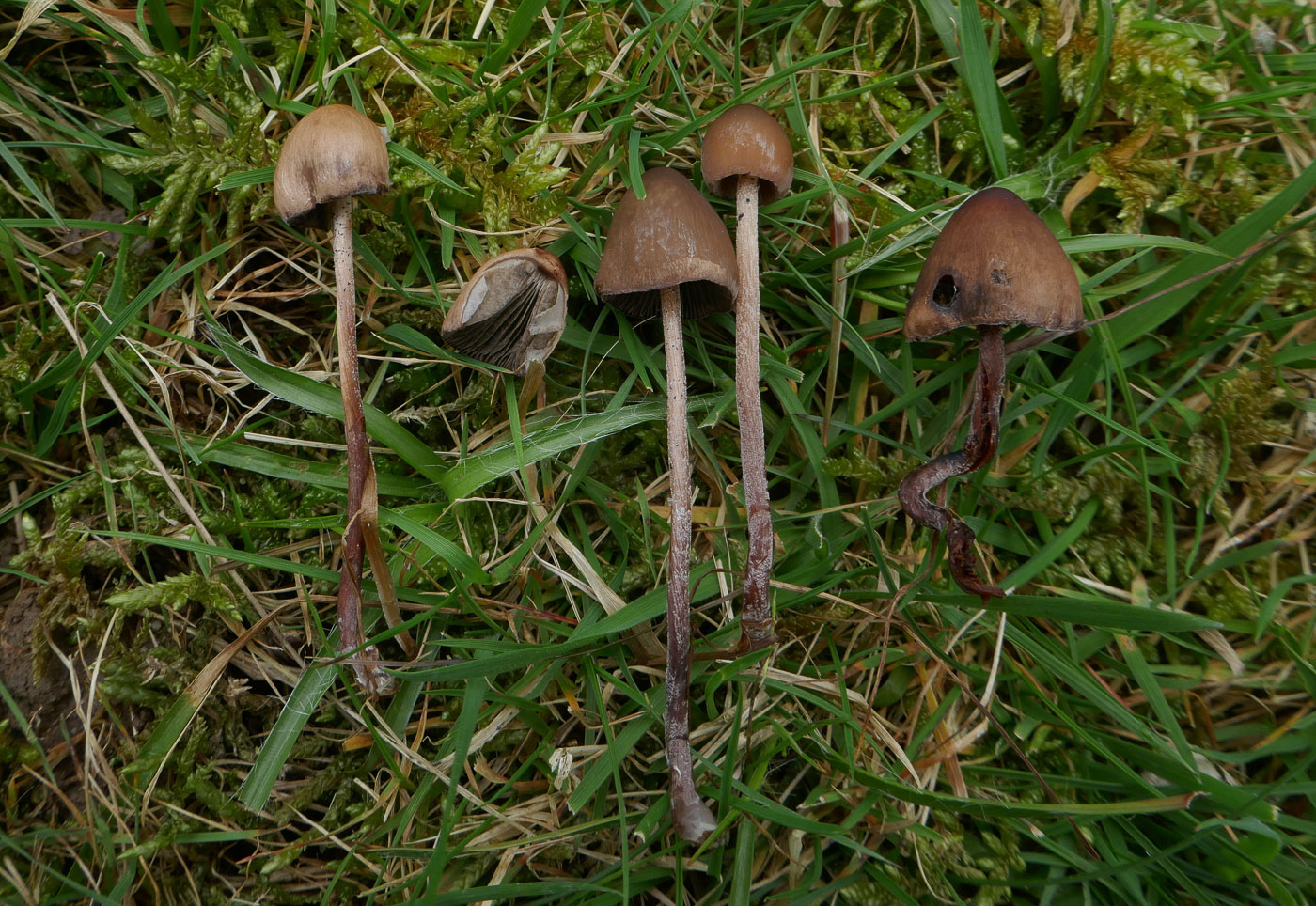 |
March 16th Panaeolus acuminatus (Dewdrop Mottlegill) At Stampwell Farm Jackie Ewan noticed an early fruiting of this species in manured grassland. The 'Dewdrop' name refers to its tendency to have fine droplets - usually coloured black from fallen spores - on the upper stem; these provide a useful clue to species in the field as other similar Mottlegills lack them. This is one of our commonest grassland LBJs. Previous finds |
March 13th 2024
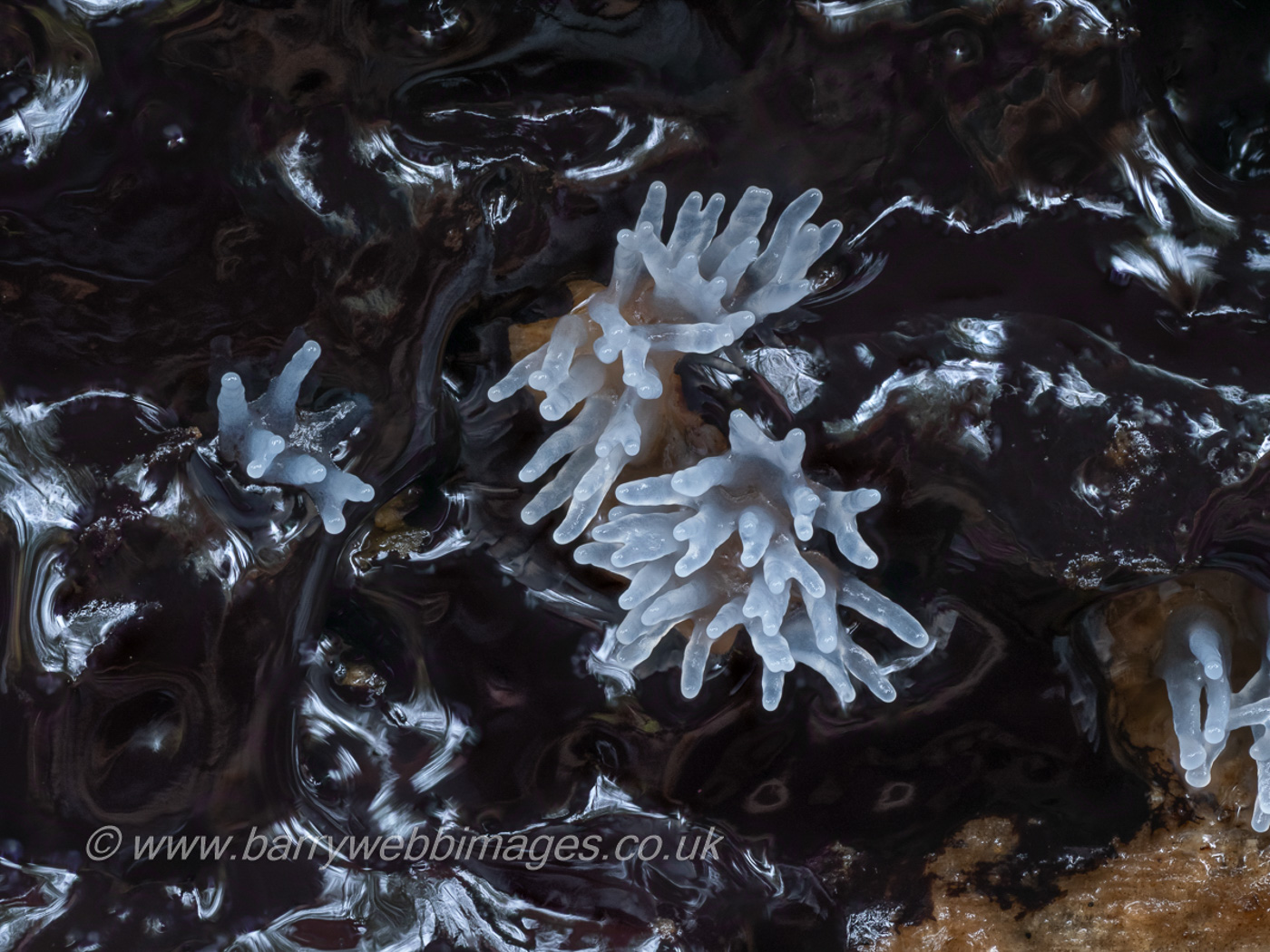 |
March 13th Ceratiomyxa fruticulosa (a Slime Mould with no English name) At Burnham Beeches Barry Webb found this tiny, delicate and beautiful species on rotting Beech. It is in fact a Slime Mould on a Slime Mould because the black slimy base from which it is emerging is the plasmodium stage of Metatrichia floriformis, a species we found at this spot the previous day (see more mature examples just below). The two species together appear like an underwater marine scene! Previous finds |
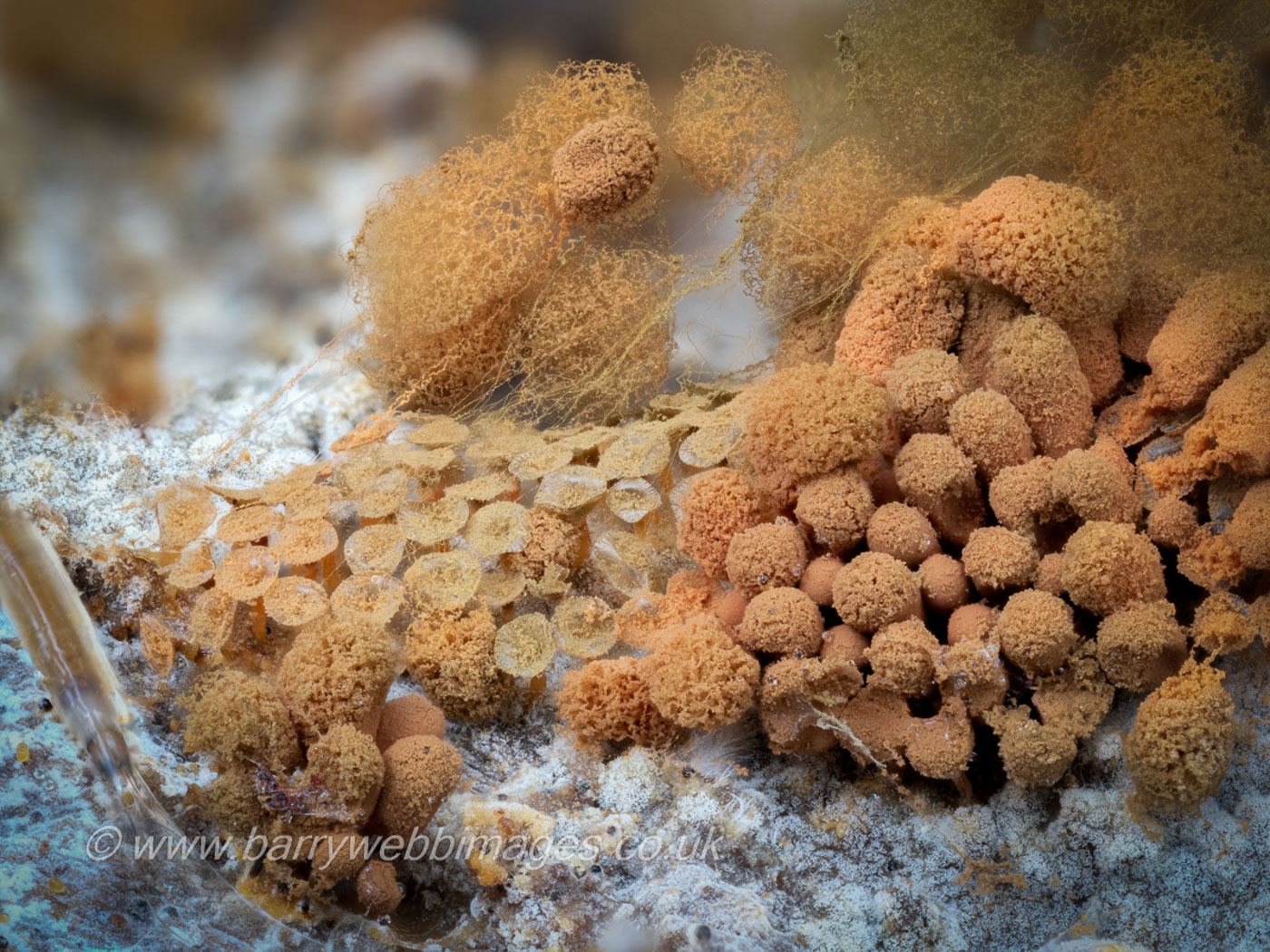 |
March 13th Arcyria ferruginea (a Slime Mould with no English name) The previous day a small group of us found a few fungi at Burnham Beeches, one being this Slime Mould to which Barry Webb returned today to check its identity and take his photo. This is a good example of the mature stage of the genus Arcyria (when not slimy at all!) showing in the background the fine mesh of fluffy 'elaters' which form the protective framework containing the spores which here have almost entirely blown away. Note also the now empty cups - all that is left of the entire sporangia (fruiting body) once the rest has blown away. Previous finds |
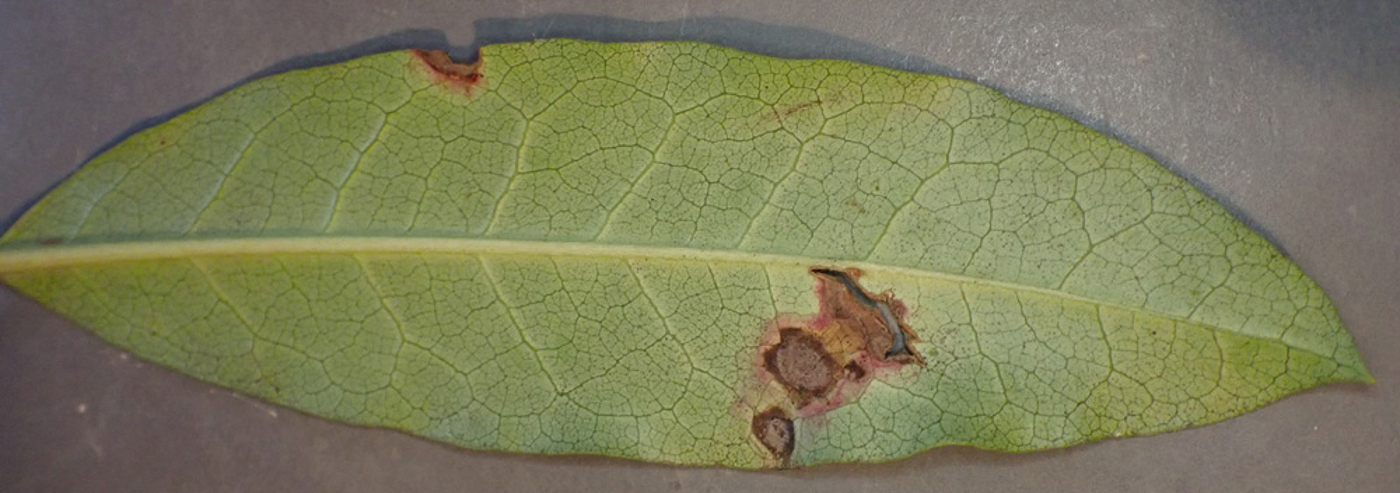
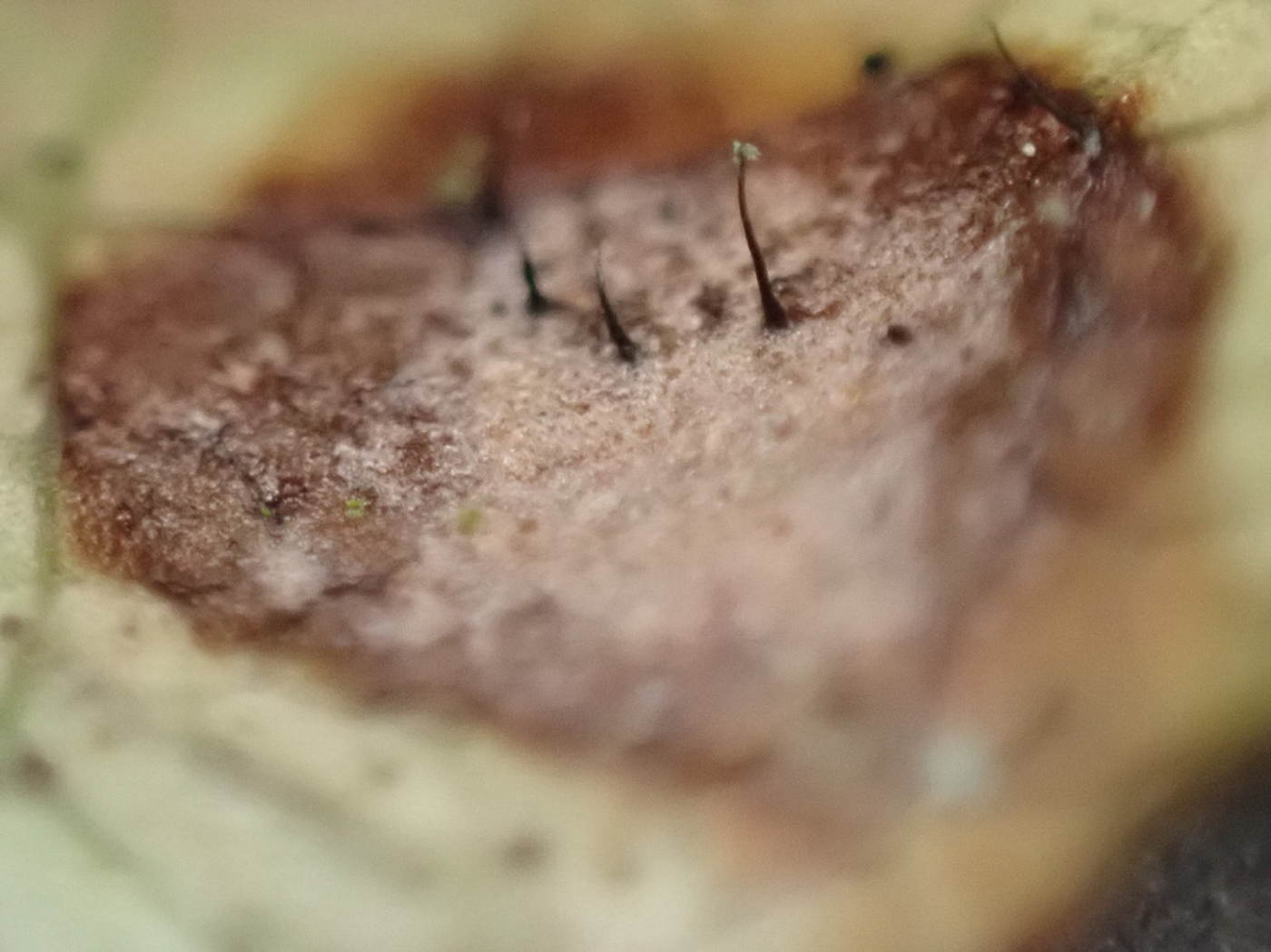 |
March 13th Cephalotrichum purpureofuscum (a rare hyphomycete with no English name) In Rushmere Country Park Stephen Plummer (now a Greensand Trust volunteer) collected a Rhododendron leaf with a fungal infection he didn't recognise and took it home to work on. Hours later he'd solved the mystery by matching the microscopic details with available literature and photos online. This is a rarely recorded fungus (though not purely restricted to this host) with just 17 previous national records and is not surprisingly new to the county. In photo 2 the simply miniscule tall spike with whitish head is the fungus. |
March 12th 2024
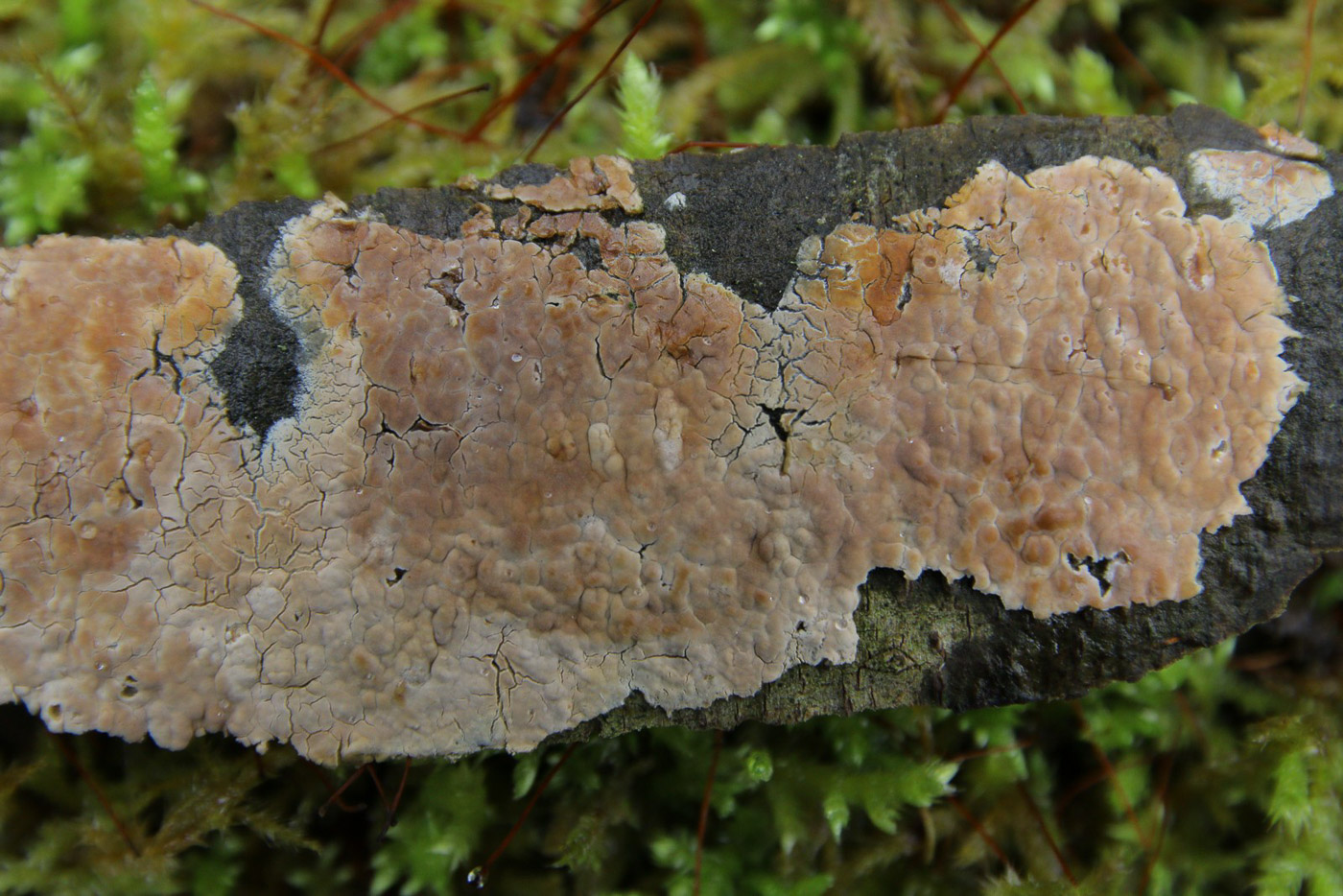 |
March 12th Cylindrobasidium laeve (Tear Dropper) At Burnham Beeches our small group found a stick coated with a pinkish brown quite thick Corticioid which we were unable to name in the field though several of us knew it was familiar. At home Claudi Soler found the telltale spores of this species which are shaped like tear drops, hence its English name. The species is very common on fallen deciduous wood. Previous finds |
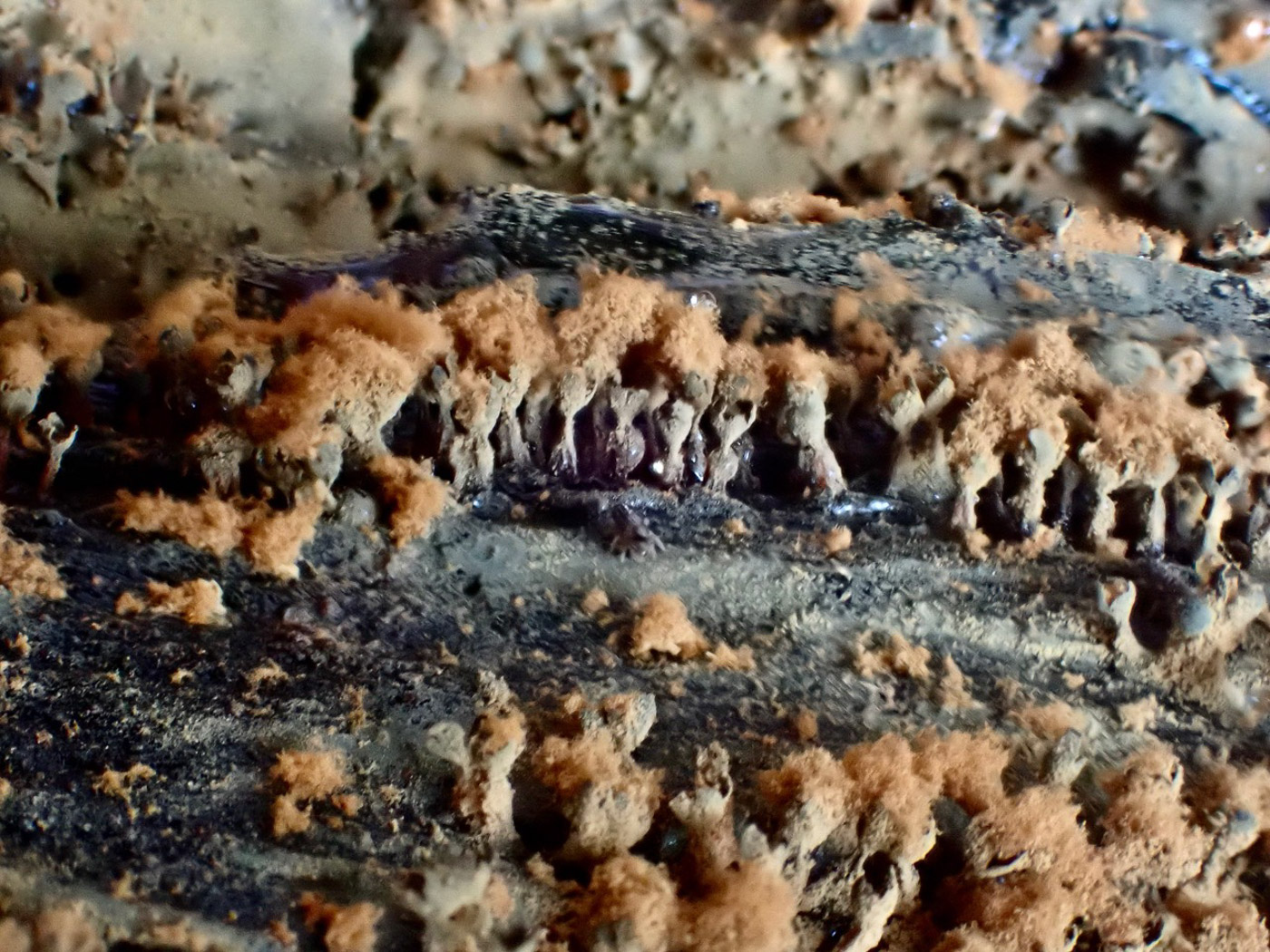
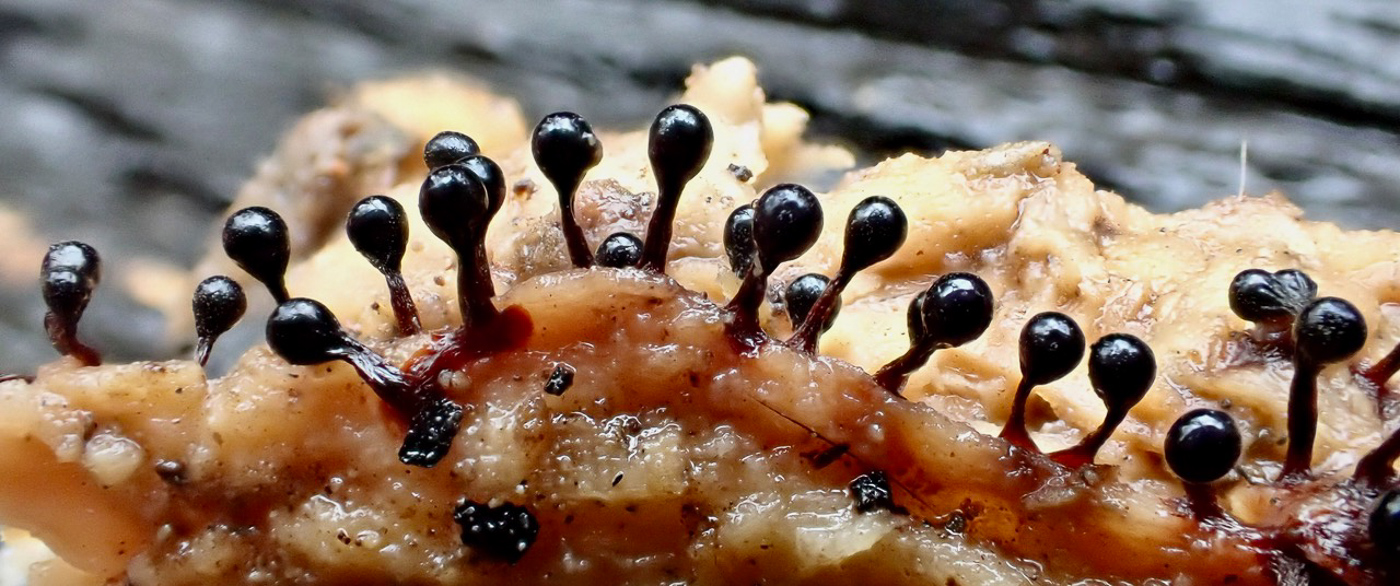
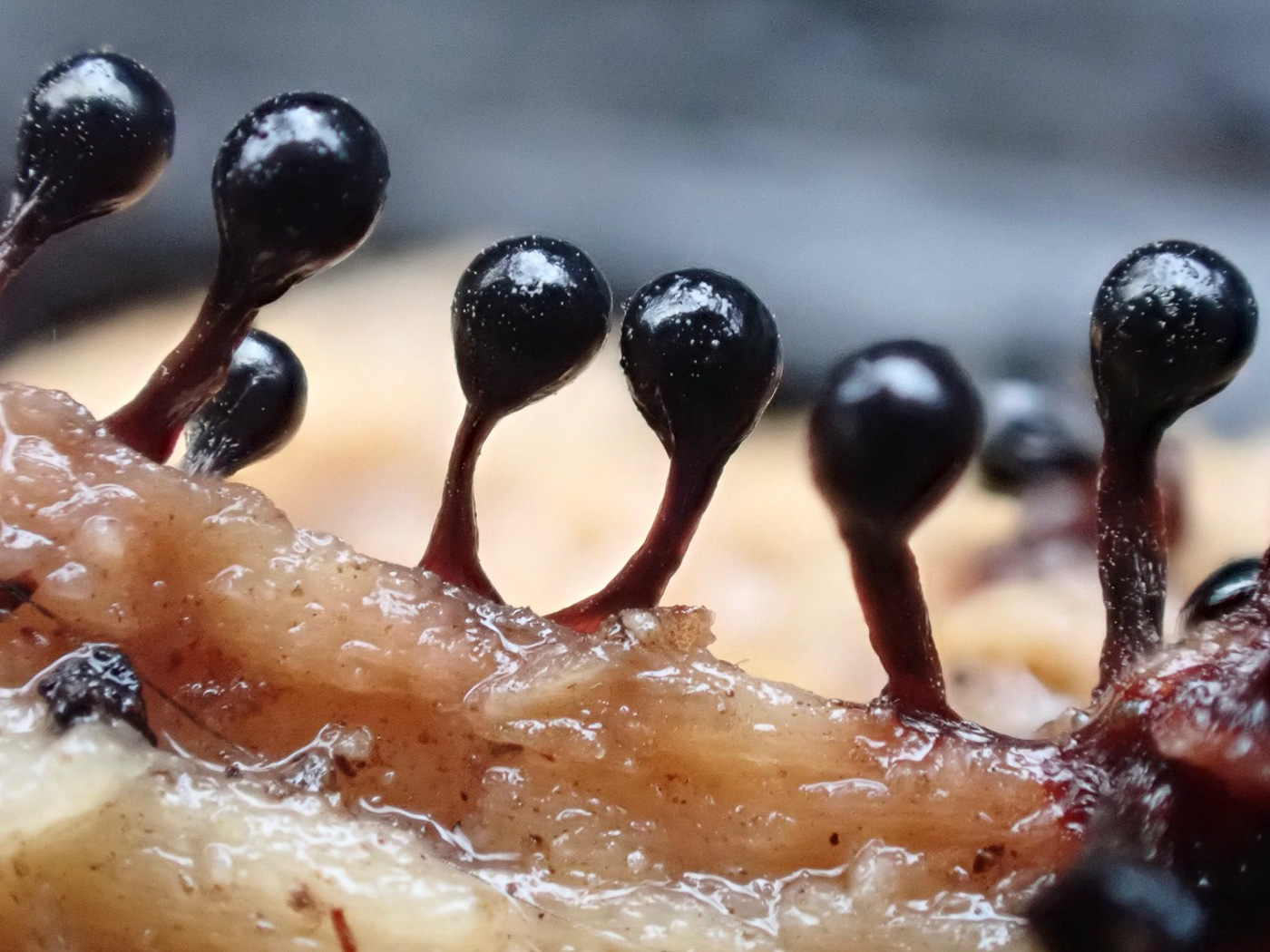 |
March 12th Metatrichia floriformis (a Slime Mould with no English name) At Burnham Beeches our small group found several large colonies of this distinctive and common species on fallen damp rotting deciduous trunks, showing all stages of its development from the black blobs with dark orange stalks to the mature stage with fully opened tops with fluffy orange spore masses ready to be distributed by air currents etc (photo 3). The photos are Linda Seward's. Previous finds |
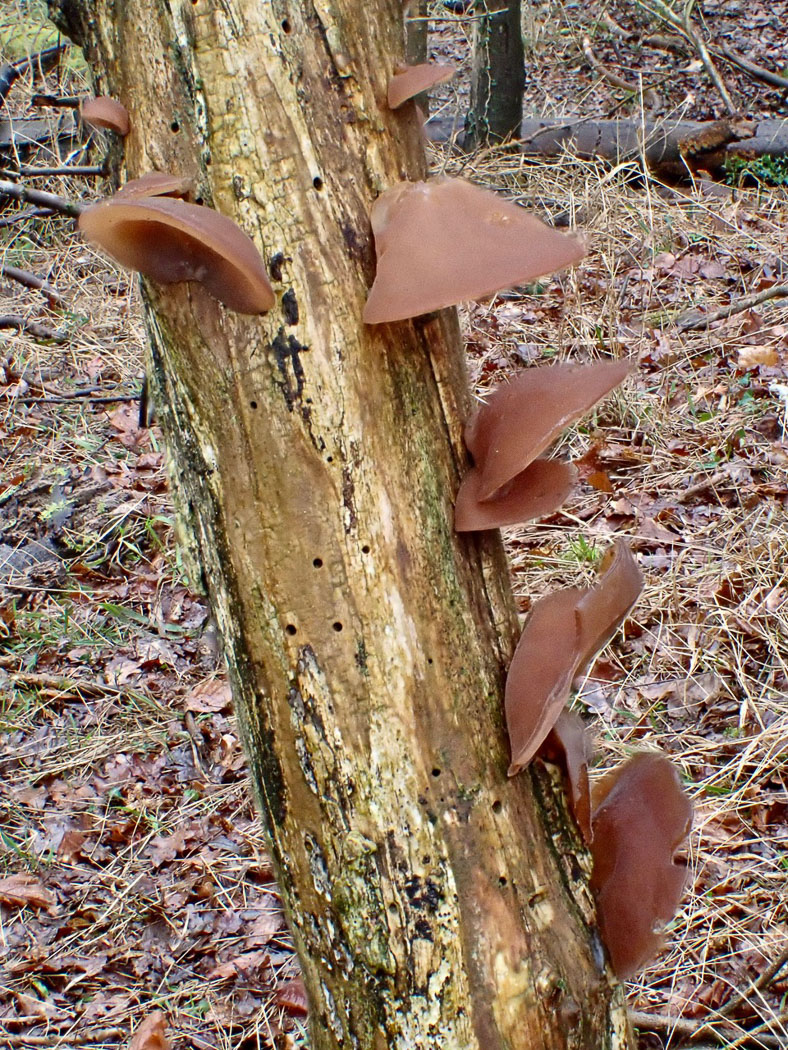
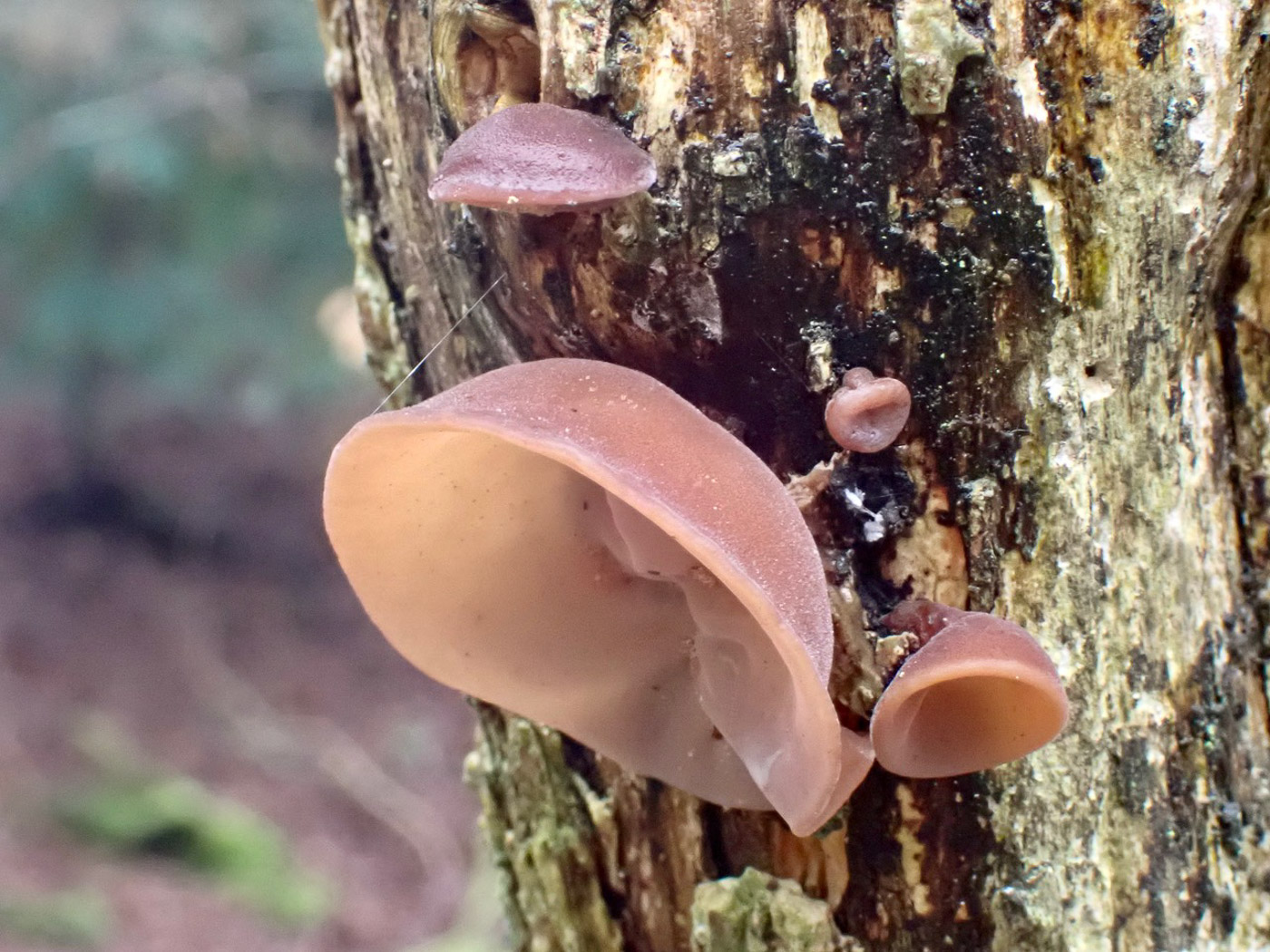 |
March 12th Auricularia auricula-judae (Jelly Ear) At Burnham Beeches our small group found a fresh display of this common species fruiting on fallen bare Elder - its commonest host. It is not unusual to find it on fallen Beech also, and occasionally on other deciduous woods. It is nearly always an easy fungus to recognise from its shape, colour and malleable rubbery texture when fresh, and can be found at any time of year given suitable damp conditions. The photos are Linda Seward's. Previous finds |
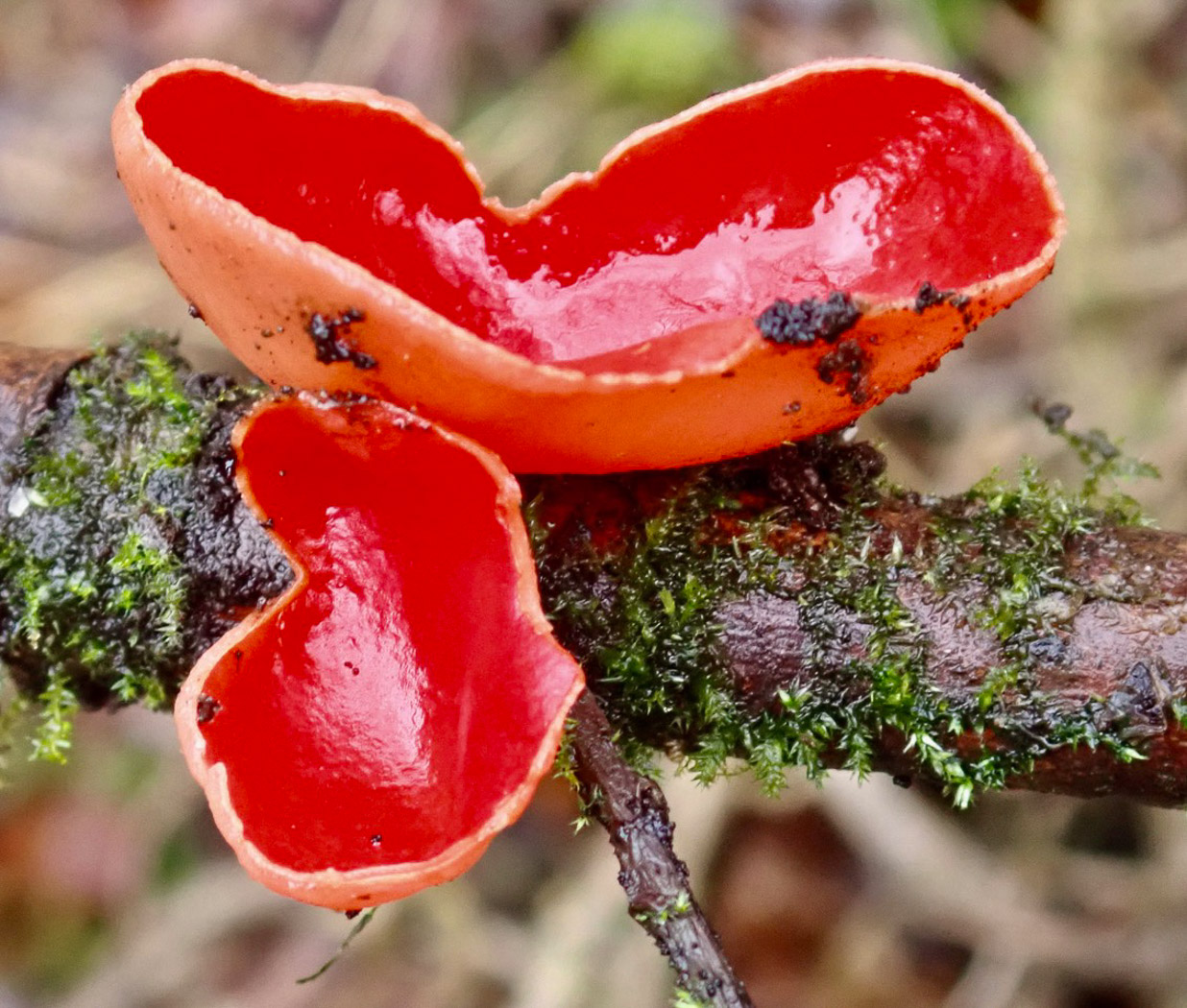
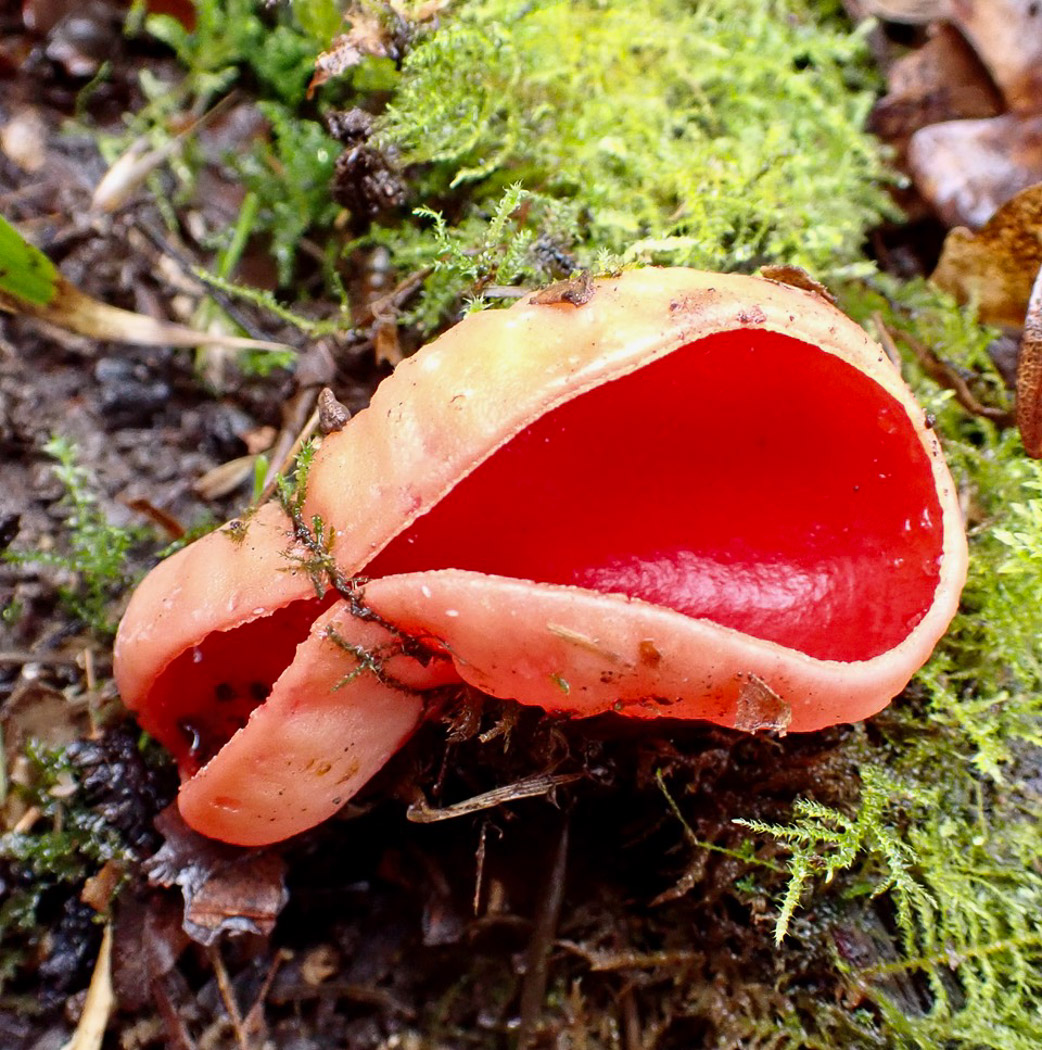 |
March 12th Sarcoscypha austriaca (Scarlet Elfcup) At Burnham Beeches our small group of forayers were delighted when good numbers of this eye-catching cup fungus were found. The species is having a 'bumper year' this winter and spring, no doubt encouraged by the mild wet months, and has been seen in extraordinary numbers in several places. However, very surprisingly it had never been recorded here before today though this site must have one of the lengthiest species list in the county, going back over a century or more. The photos are Linda Seward's. Previous finds |
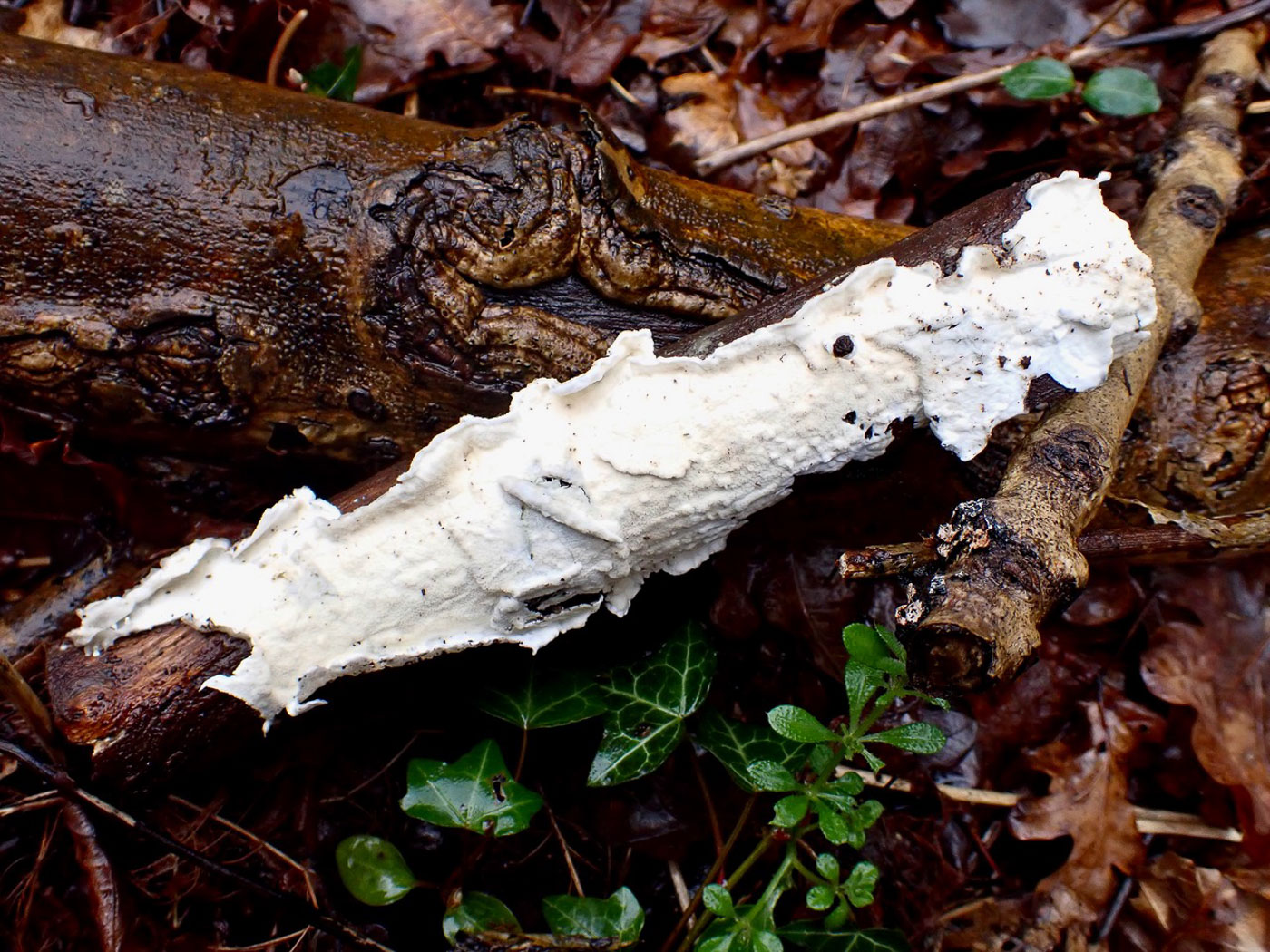
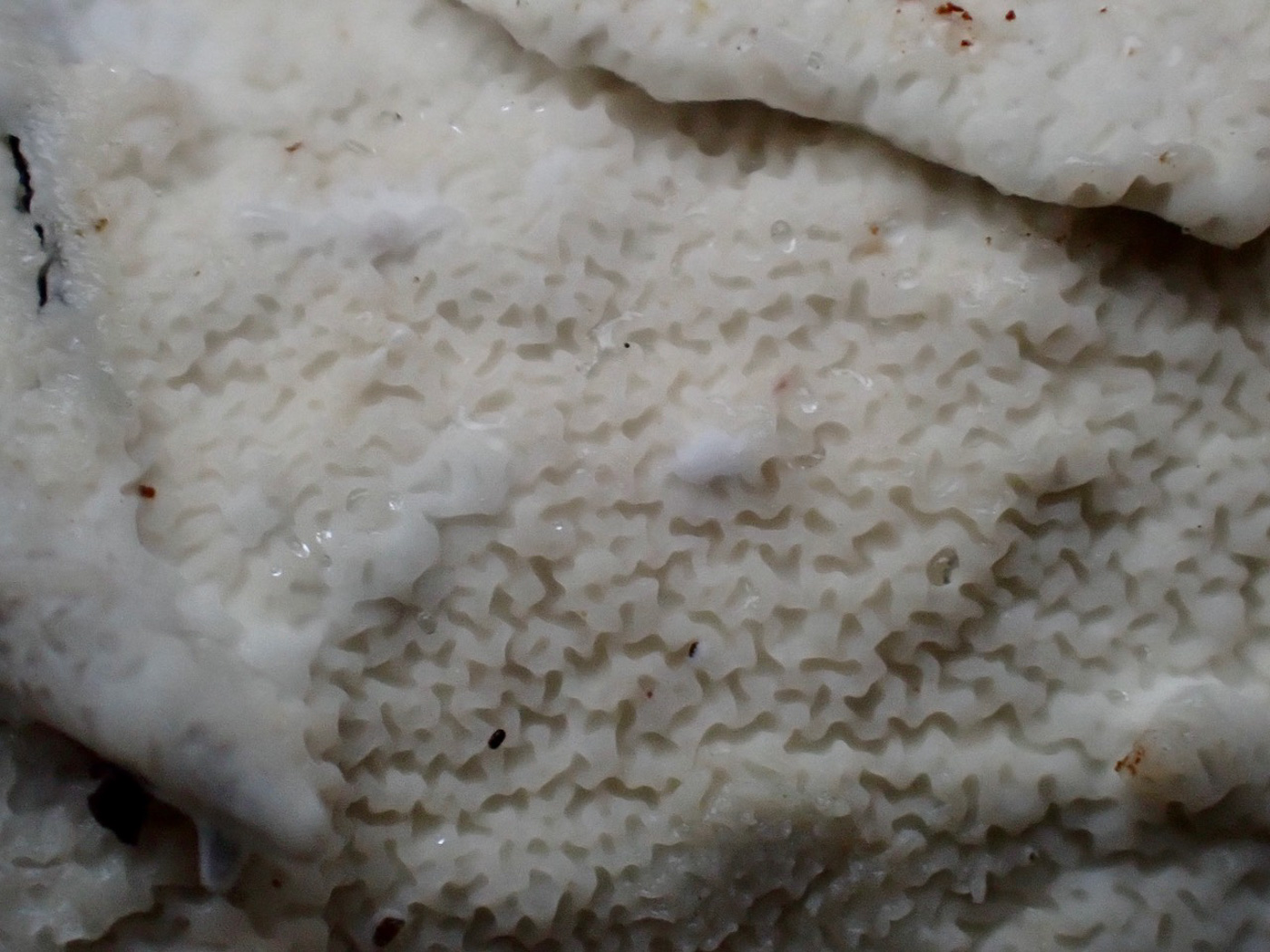 |
March 12th Byssomerulius corium (Netted Crust) At Burnham Beeches our small group of forayers found a deciduous stick coated with a whitish corticioid species. Its distinctive 'merulioid' (soft, wrinkled with low ridged) surface and ease of peeling away from its substrate made it nameable in the field by several members present. This is one of our most common flat whitish fungal species on fallen wood, most of which require specialised skills plus a scope to name. The photos are Linda Seward's. Previous finds |
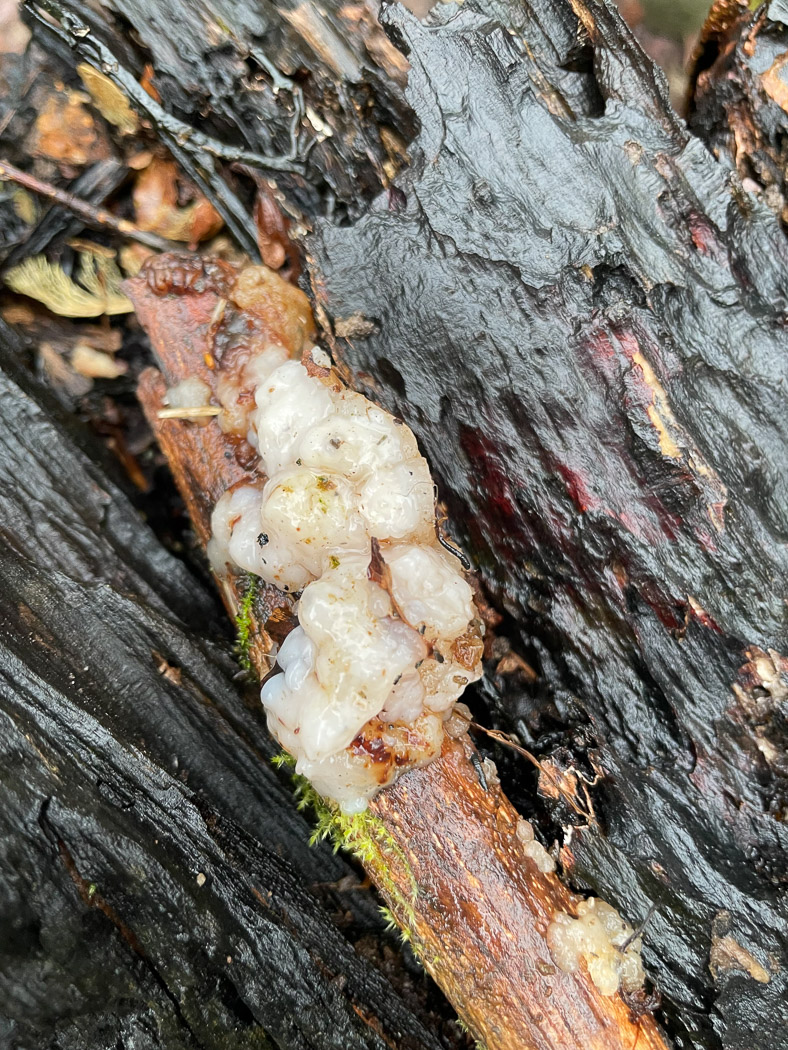
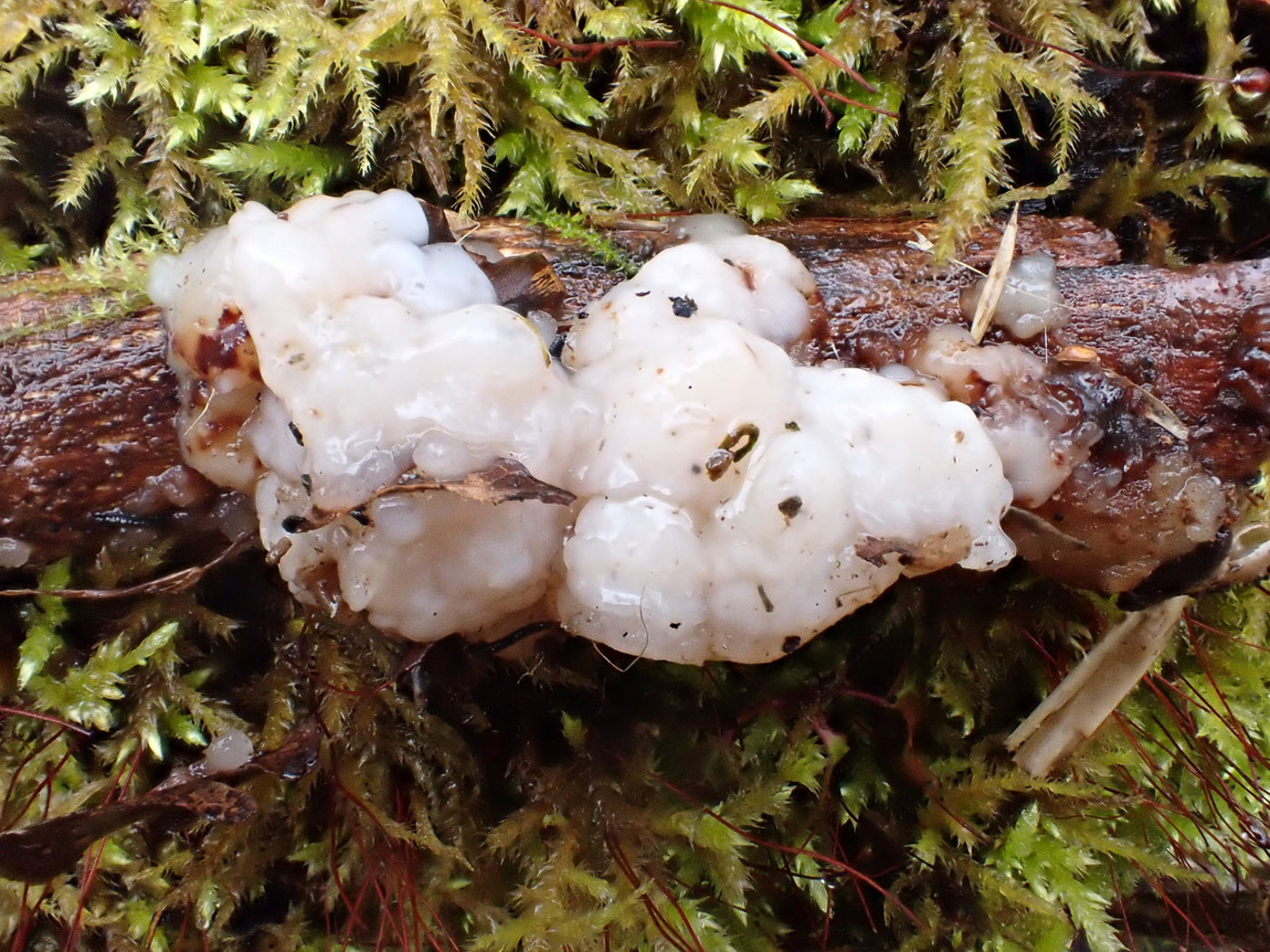 |
March 12th Exidia thuretiana (White Brain) At Burnham Beeches Linda Seward found this thick lump of white jelly on a deciduous stick and suspected it was the somewhat translucent and common E. nucleata (Crystal Brain and now in genus Myxarium), but luckily Sarah Ebdon was at hand and recognised that from its shape, more milky appearance and more solid texture it was more likely to be the less common E. thuretiana. A scope later revealed that the spores were a much better fit for the Exidia and too large for the Myxarium; she also found that close examination revealed the absence of the telltale 'inclusions' of calcium oxelate - little hard white lumps - inside, further eliminating the Myxarium. Though not rare, this is a new entry for Finds. Photo 1 is Sarah's, photo 2 is Linda's. |
March 10th 2024
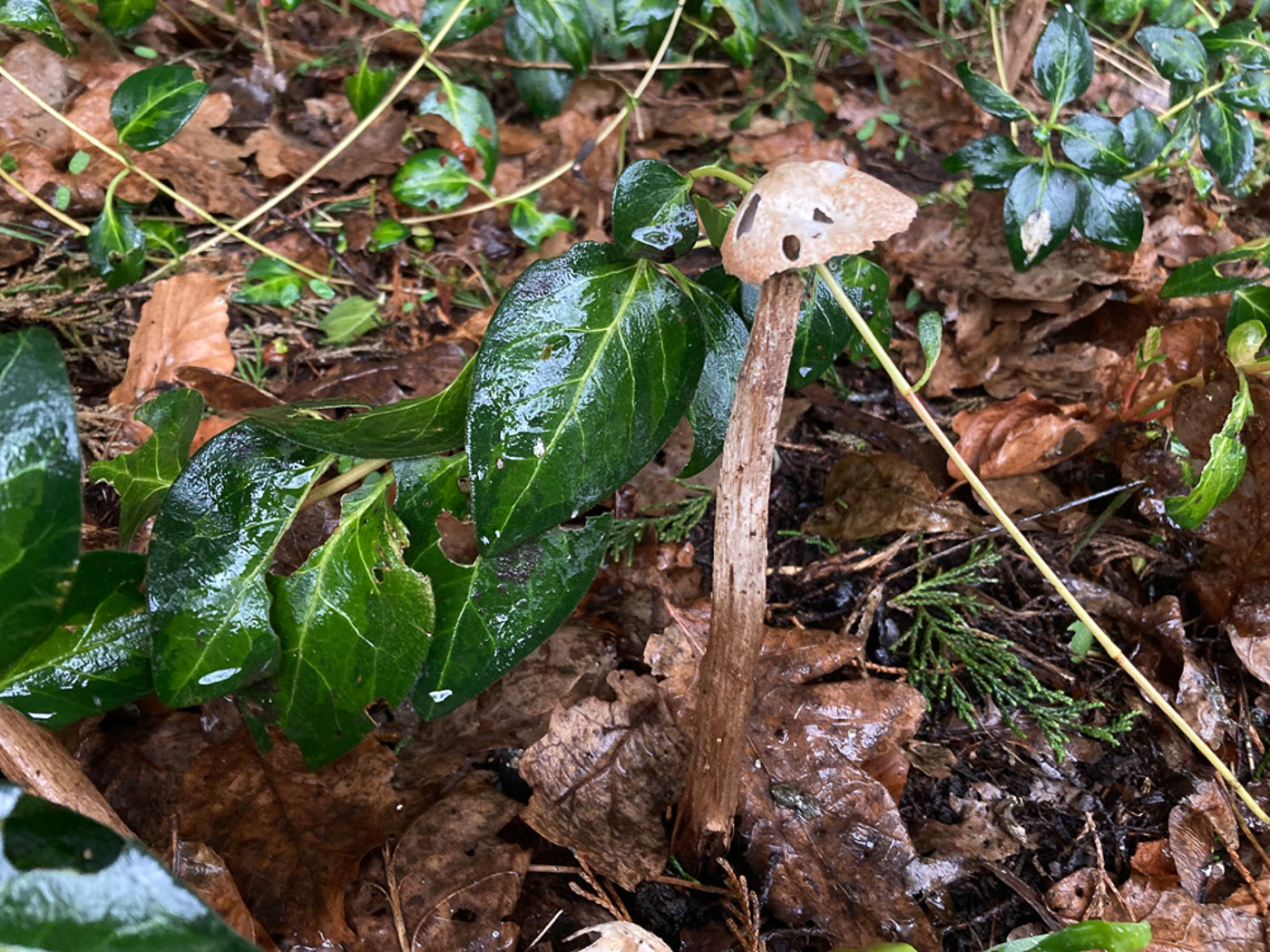
.jpg) |
March 10th Battarrea phalloides (Sandy Stalkball) In an urban lane near Burnham Russell Ness happened upon a rare species he'd long been hoping to see one day. This strange fungus, related to Puffballs and the like, was growing in the litter under some Cypress trees - about 11 stems were present, mostly missing their puffball tops but two were complete enough for him to photo and collect some remains which still retained some spores which he was able to examine. No doubt this collection fruited here back in the autumn and their remarkable tall woody fibrous stems enable them to survive for months afterwards. We have just two other known sites for this rare and often elusive and unpredictable species, so this was a notable find. Previous finds |
March 9th 2024
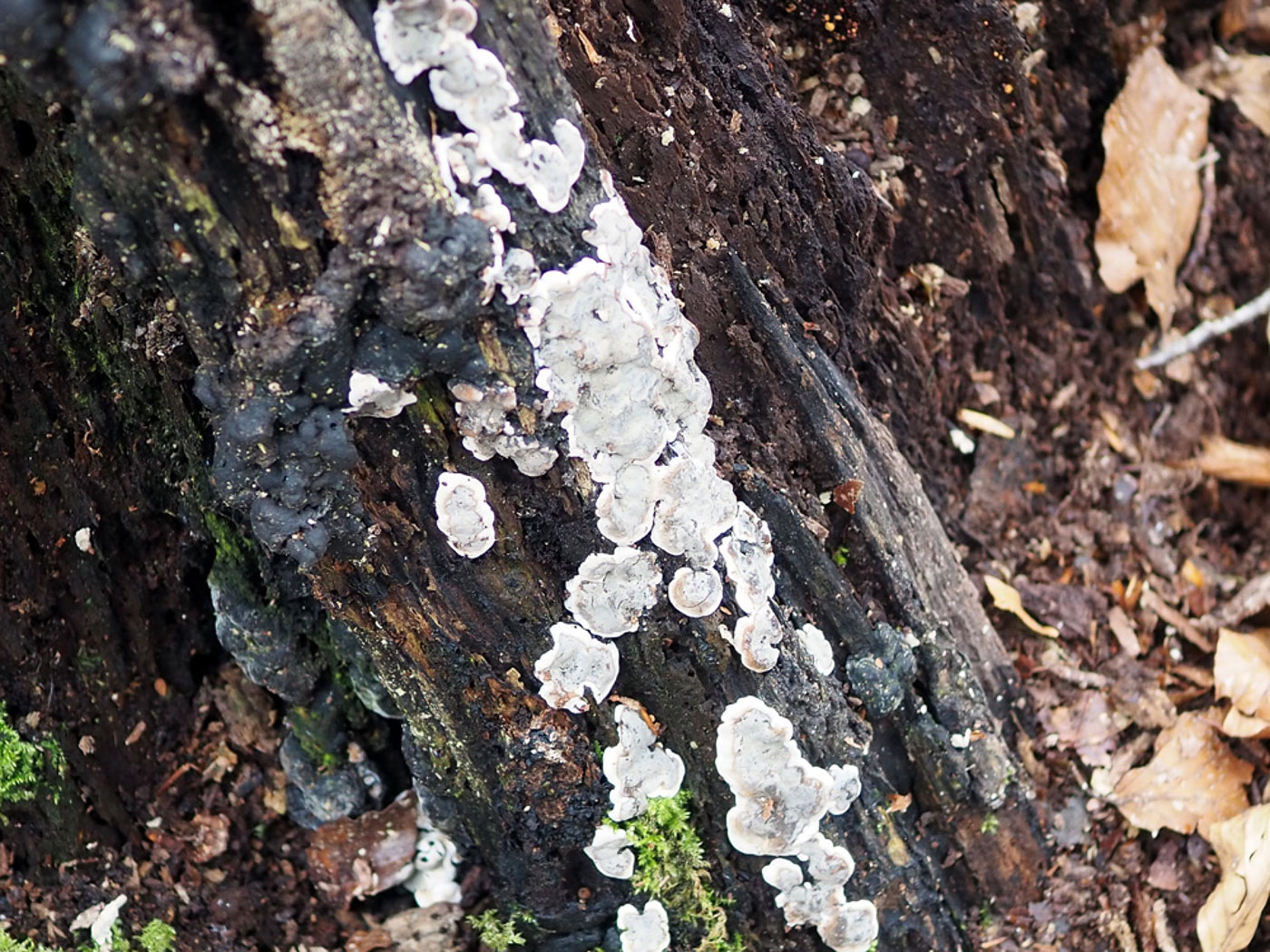
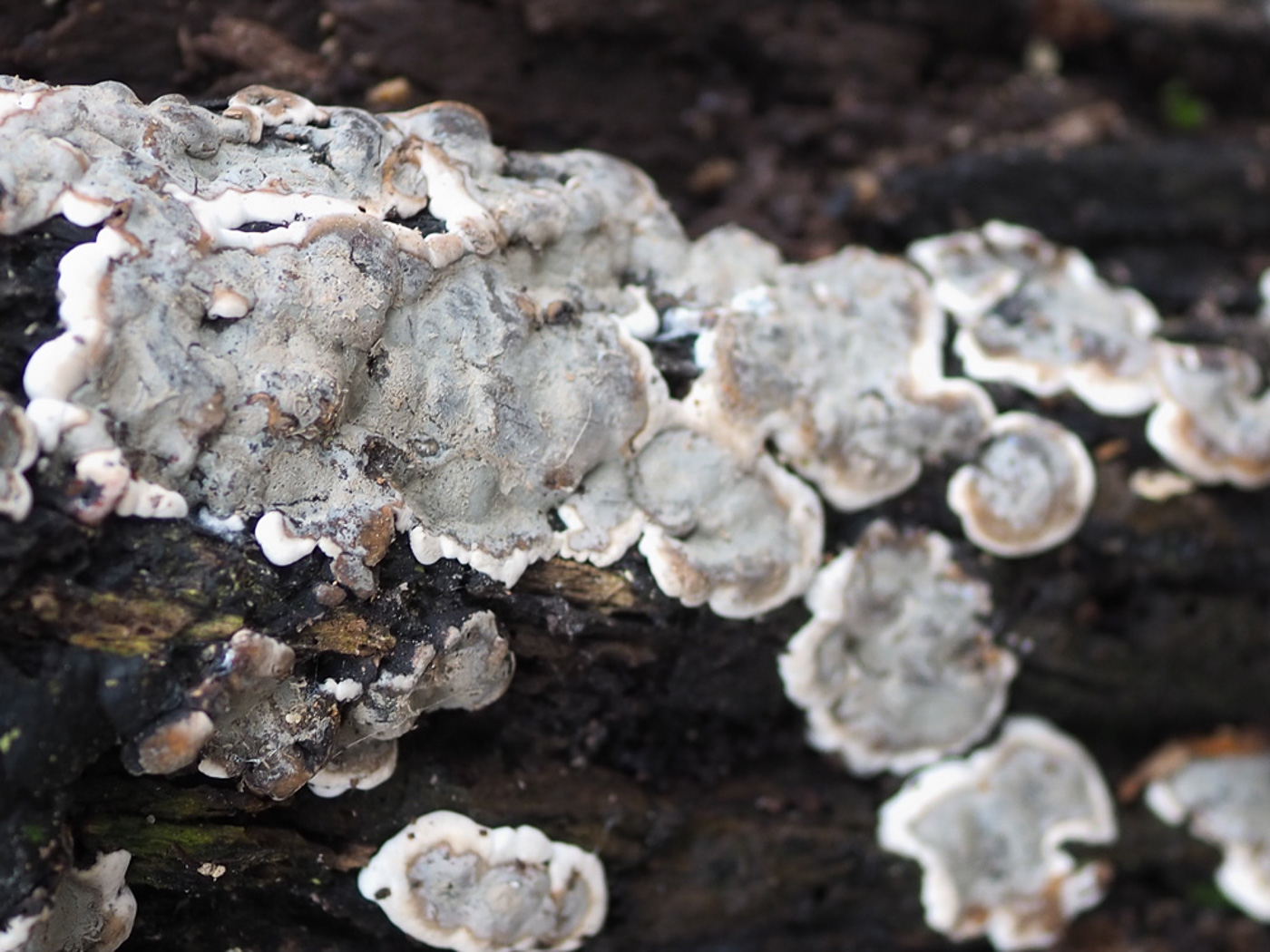 |
March 9th Kretzschmaria deusta (Brittle Cinder) On a rotten unidentified stump in Tinkers Wood John Catterson noticed this Pyrenomycete fungus - common though often overlooked - showing both fresh and old specimens. In photo 1 the old black hard crusty lumps can be seen alongside the fresh softer grey patches with white edges which can be seen close up in photo 2. This is likely to have been on Beech which is its favoured host wood. (There can't be many Latin genus names which boast six consecutive consonants!) Previous finds |
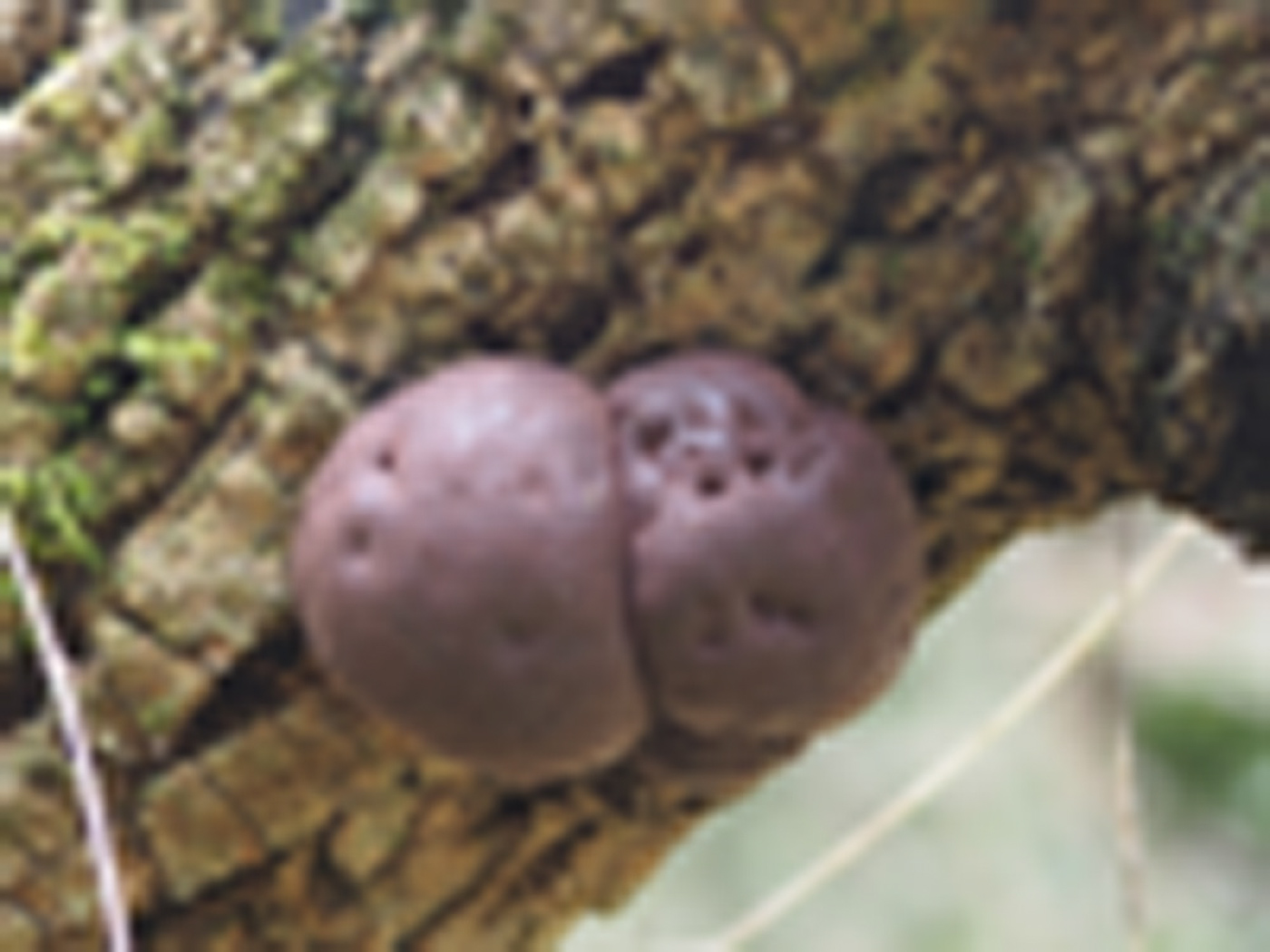
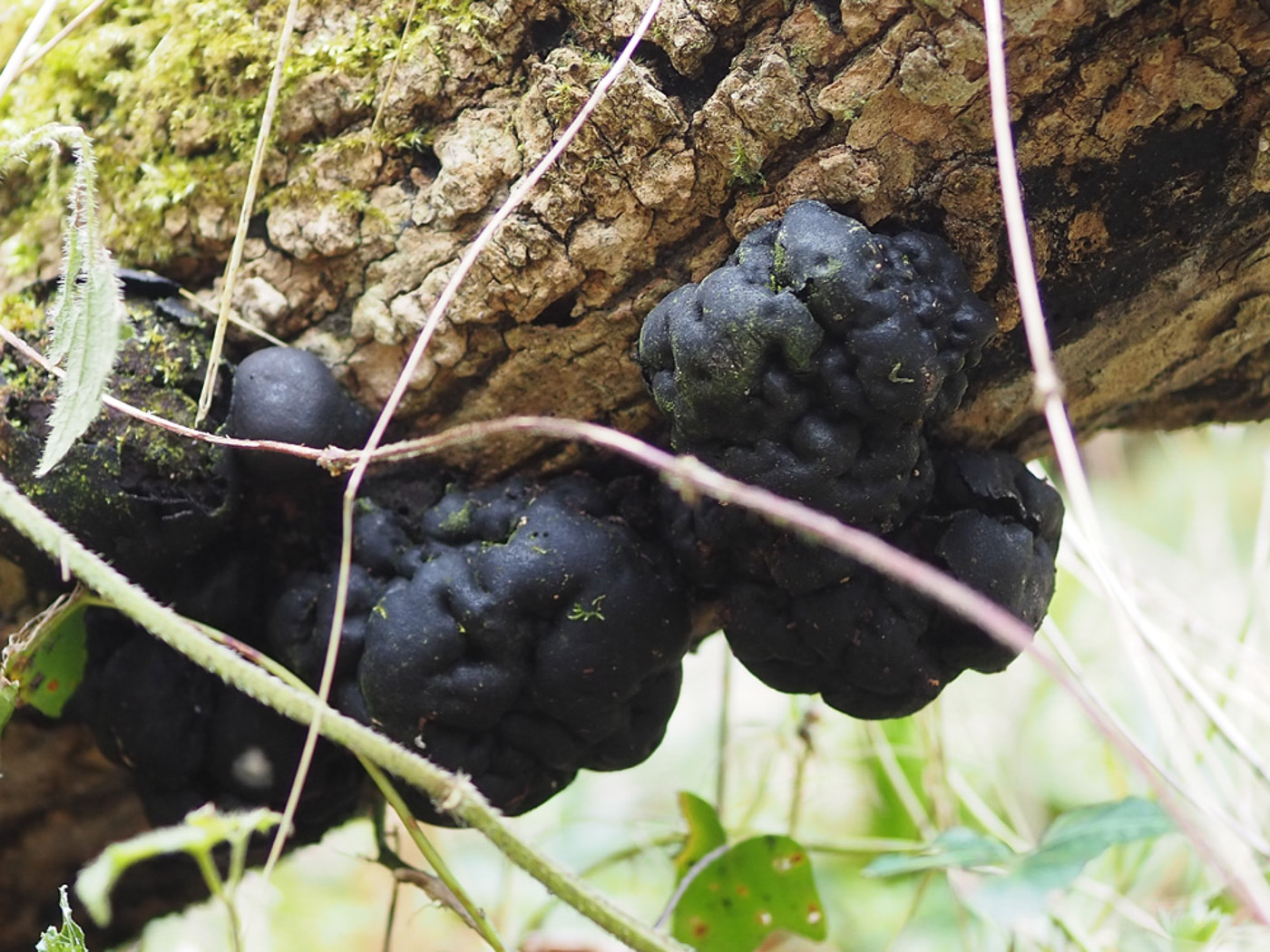 |
March 9th Daldinia concentrica (King Alfred's Cakes) In Tinker's Wood John Catterson found some nice examples of this very common fungus on fallen branches of Ash, with which it is host specific. Maybe in years to come this will become a rarity as our Ash trees succumb further to Ash Dieback Disease, following the same demise as Rhodotus palmatus (Wrinkled Peach) - once common when Elms were plentiful. John's photos here show both fresh (brown) and old (black) examples. Previous finds |
March 5th 2024
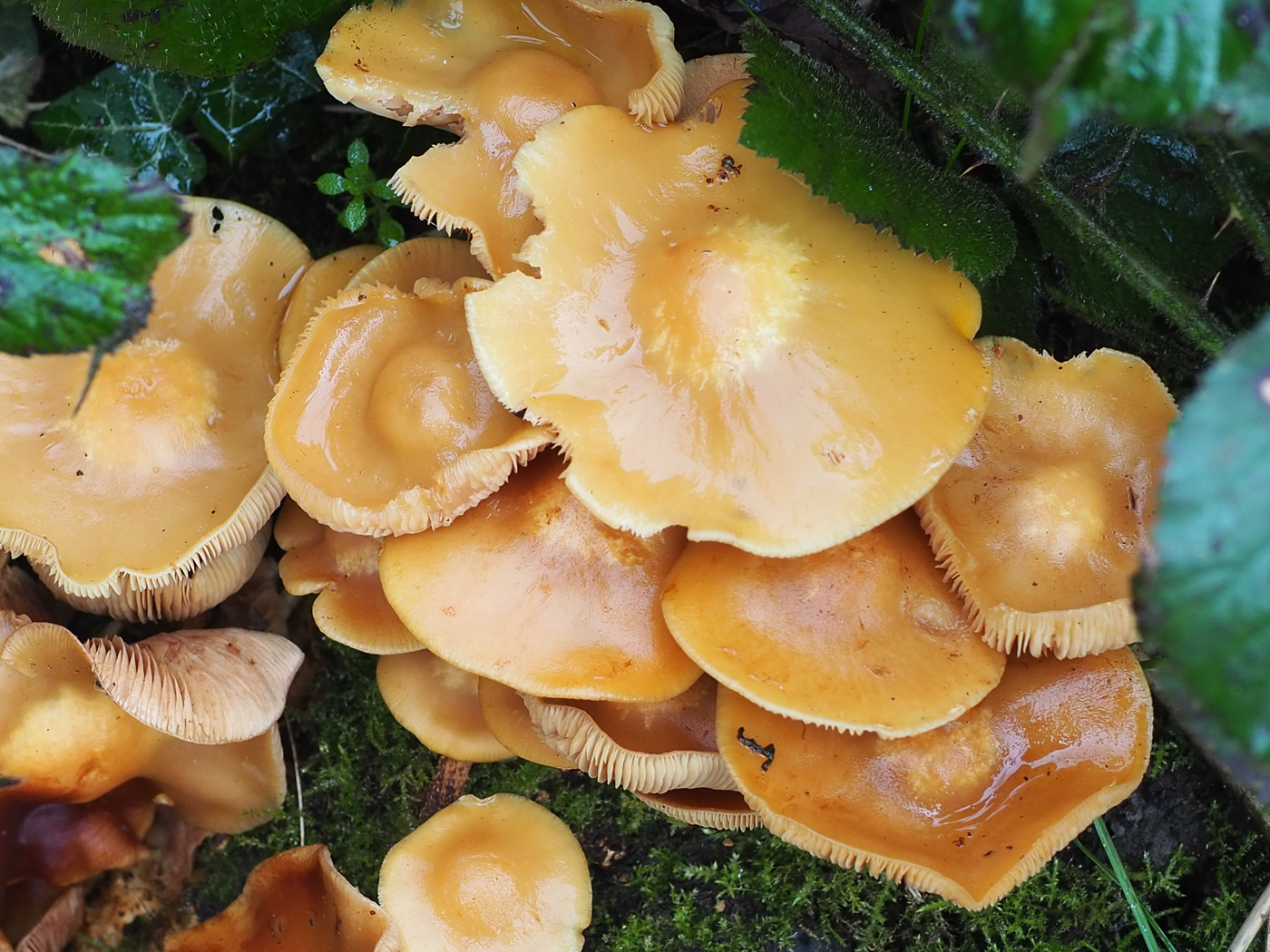
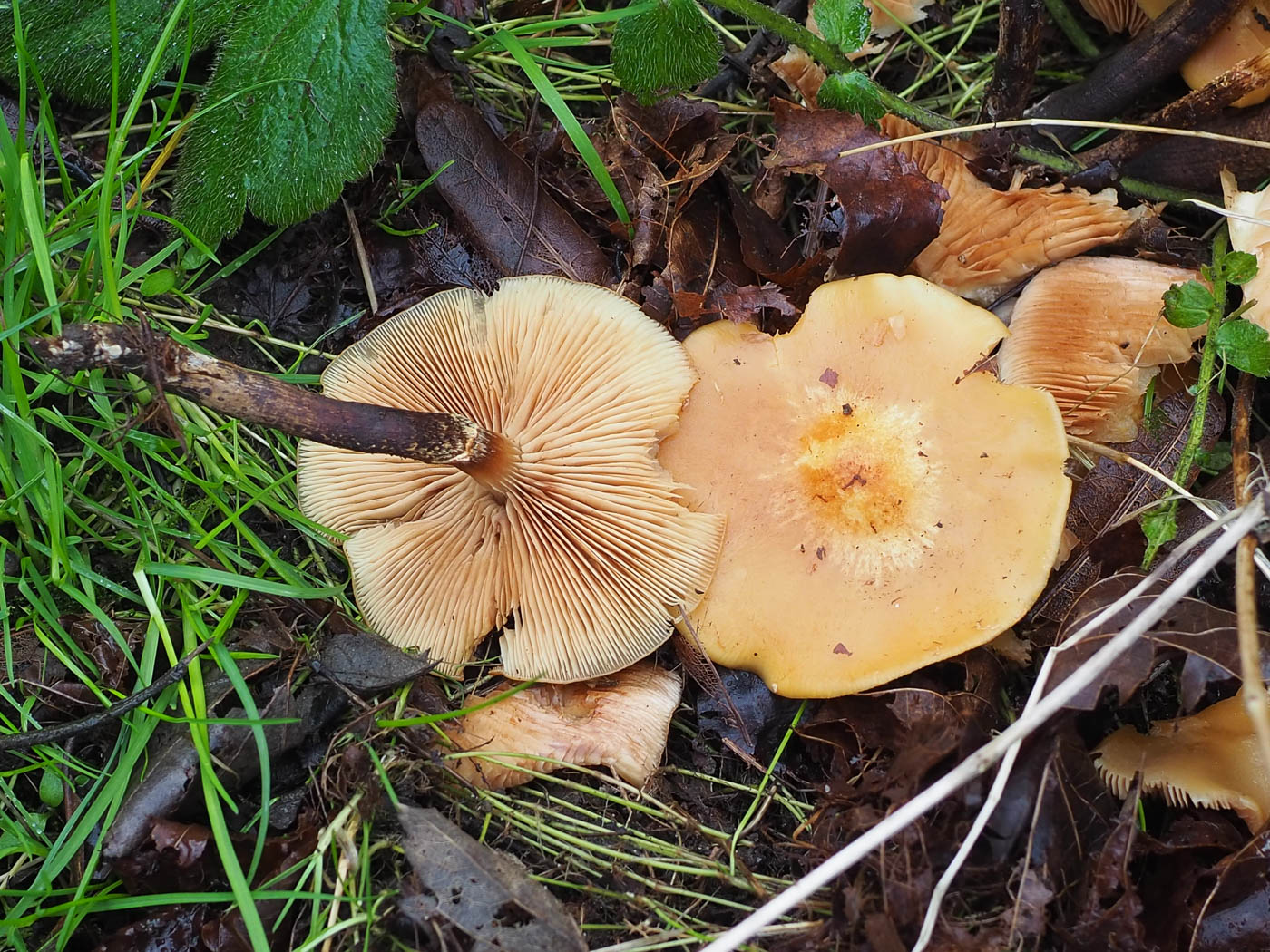 |
March 5th Kuehneromyces mutabilis (Sheathed Woodtuft) In Wycombe Rye John Catterson noticed and recognised this tight cluster of mushrooms flourishing on an old stump. A familiar sight on fallen wood in the autumn, this clumping species is not that usual to find at this time - we have no March records though several for April and May - but here is displaying the typical fading which occurs in the cap centre, often giving a 'two-tone' effect, together with the ringed stem and pale gills visible in photo 2. Previous finds |
March 3rd 2024
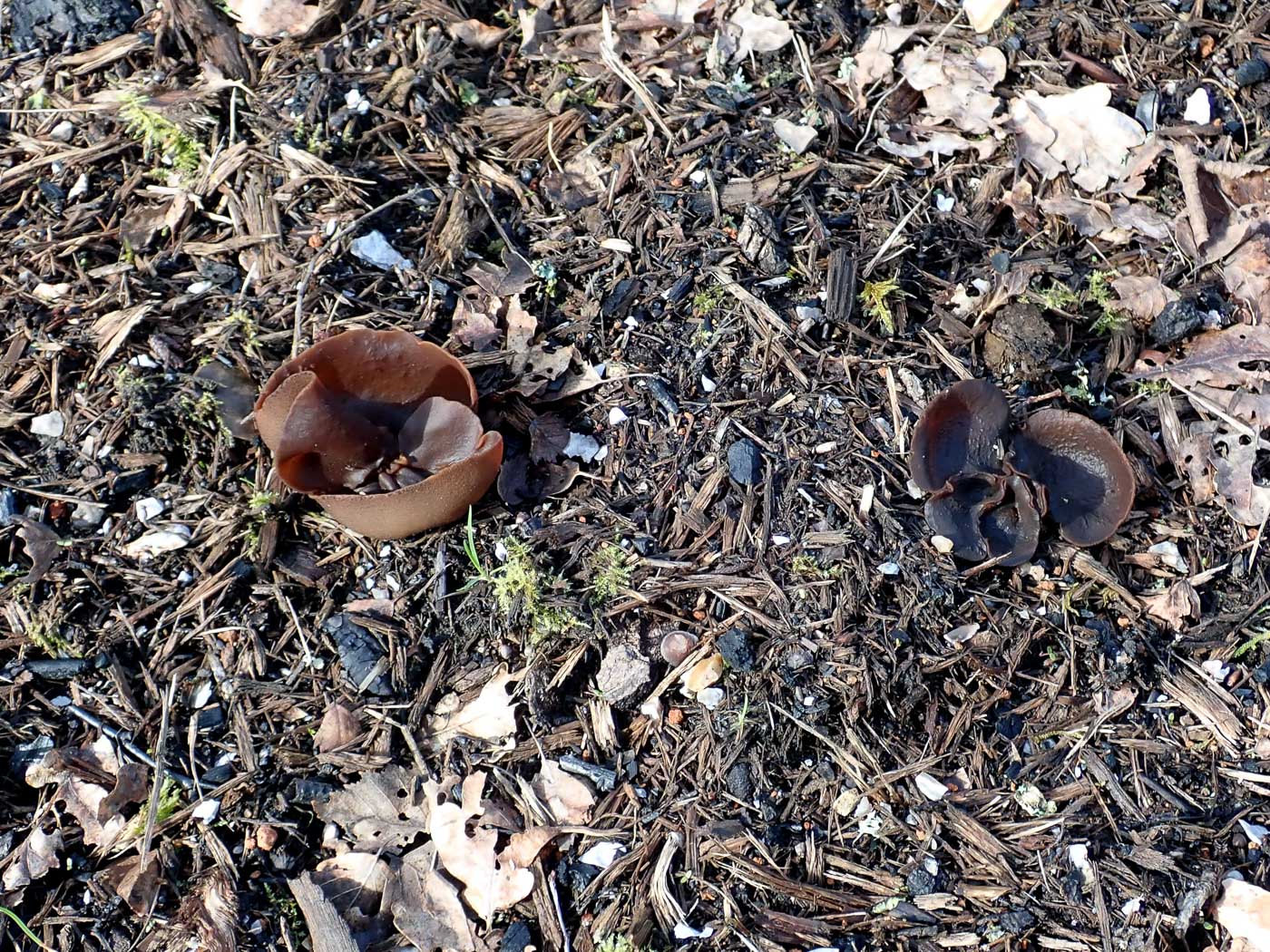 |
March 3rd Plicaria endocarpoides (a rare Cup Fungus with no English name) At Turville Heath Penny made sure to check out a particularly productive bonfire site, but was sad to see that it has been cleared and flattened since her last visit. (In fact much of the dead and lying wood at this site has recently been removed, more's the pity.) However, she was surprised to see in the remains of this bonfire site a whole load of 'cups' still flourishing. The majority were pale brown - see the entry below for more - but there were a few dark reddish brown cups amongst them which she guessed (incorrectly) were likely to be Peziza petersii. At home, however, a scope revealed they were not even that genus, with round spores - not ellipsoid as in Peziza. A few emails were sent asking for help, and Asco expert Paul Cannon was able to put Penny onto the possible genus which favours burnt ground and the smooth spores indicated this particular species. This is new to the county with under 50 records on the national database. |
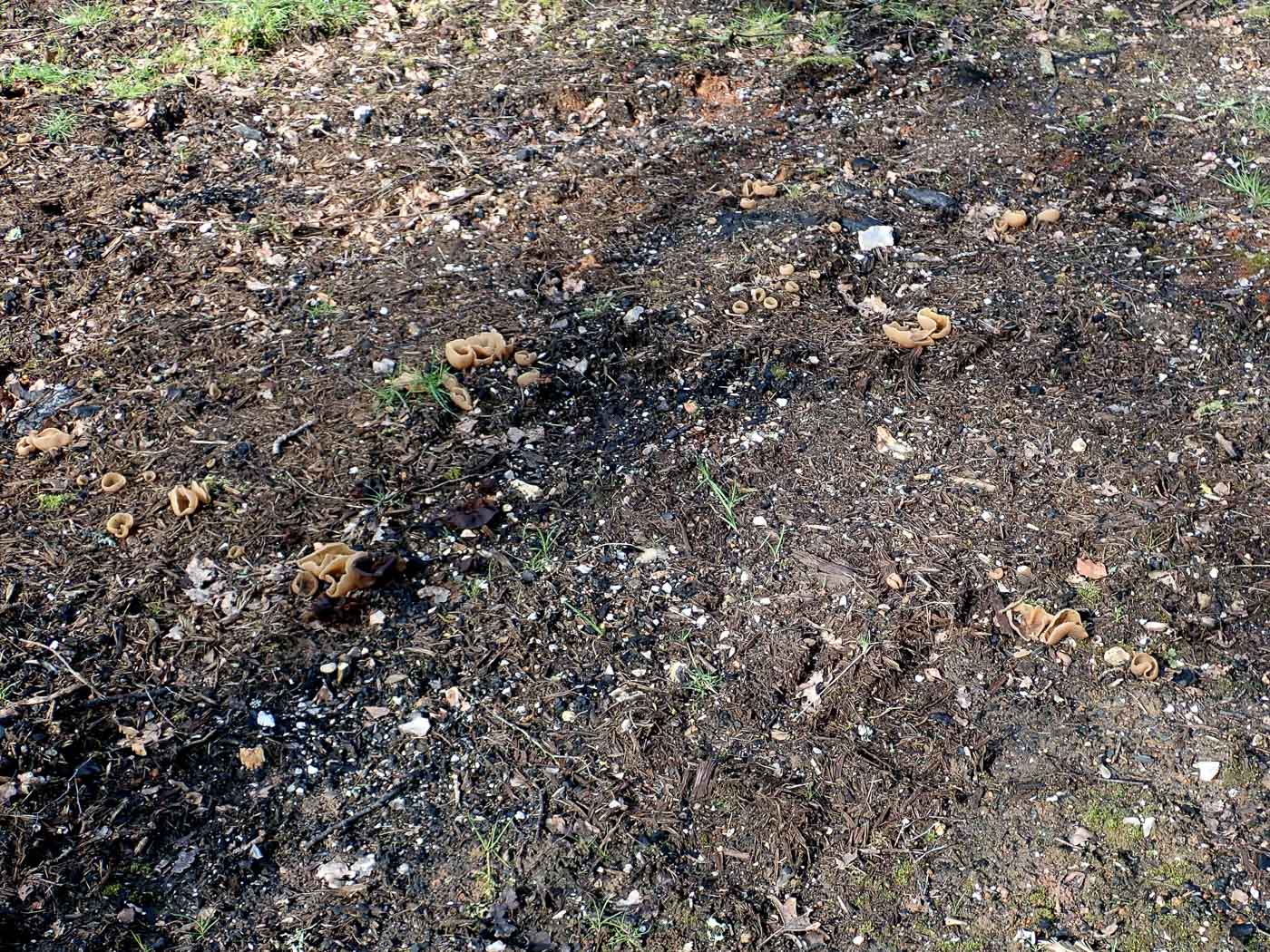
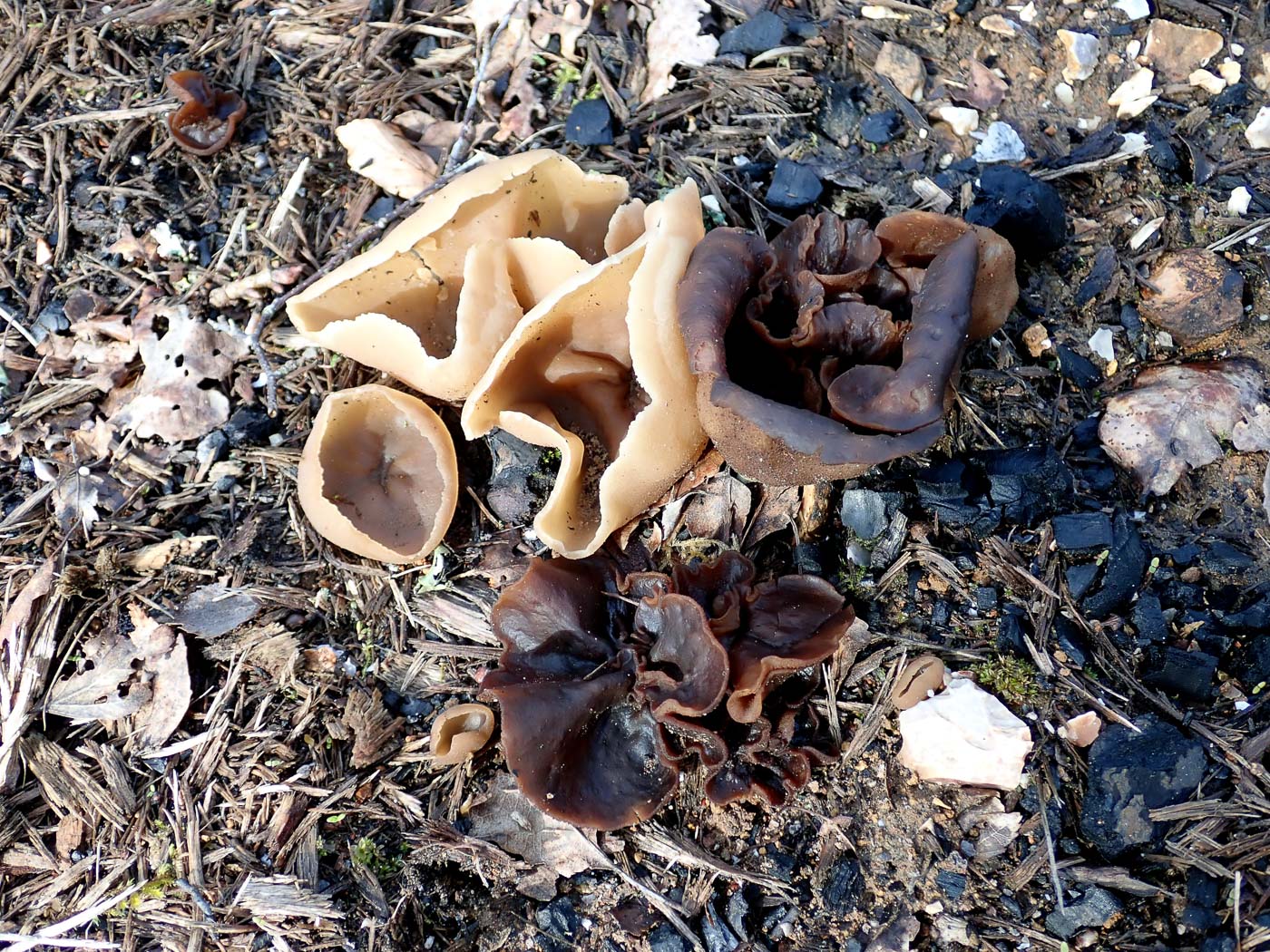
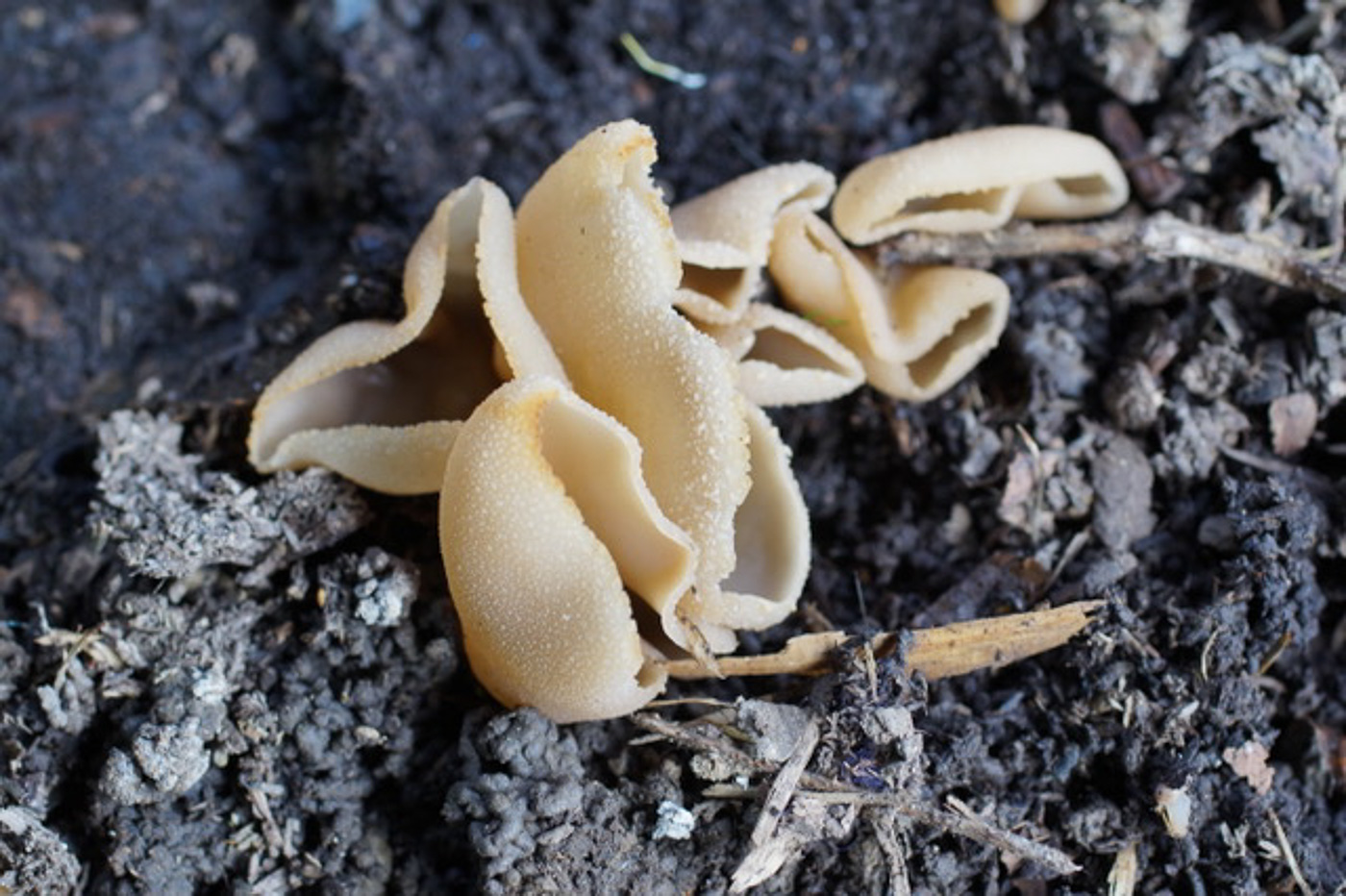
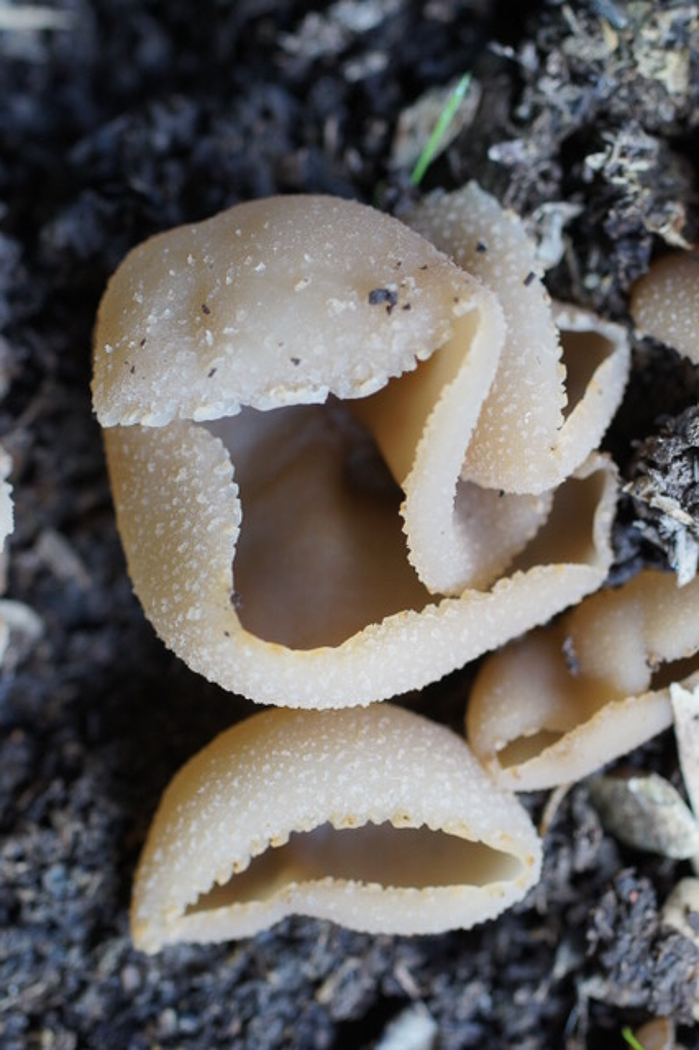 |
March 3rd Peziza repanda (Palamino Cup) On an old bonfire site at Turville Heath Penny found good numbers of large Cup Fungi, the majority of which were a pale brown species of Peziza (photo 1) which she collected to check later at home. Photo 2 shows this pale Peziza together with a much darker brown cup growing adjacent to it - clearly there were two different species here. See the entry above for more on the darker species. Microscopic features confirmed this pale cup was P. repanda - one which she'd found at this same spot before and which quite commonly occurs on soil or burnt ground. Photos 3 and 4 were sent in by Bob Simpson, found in soil / woody debris at Salden Wood two weeks later and keyed out with care using his scope. Previous finds |
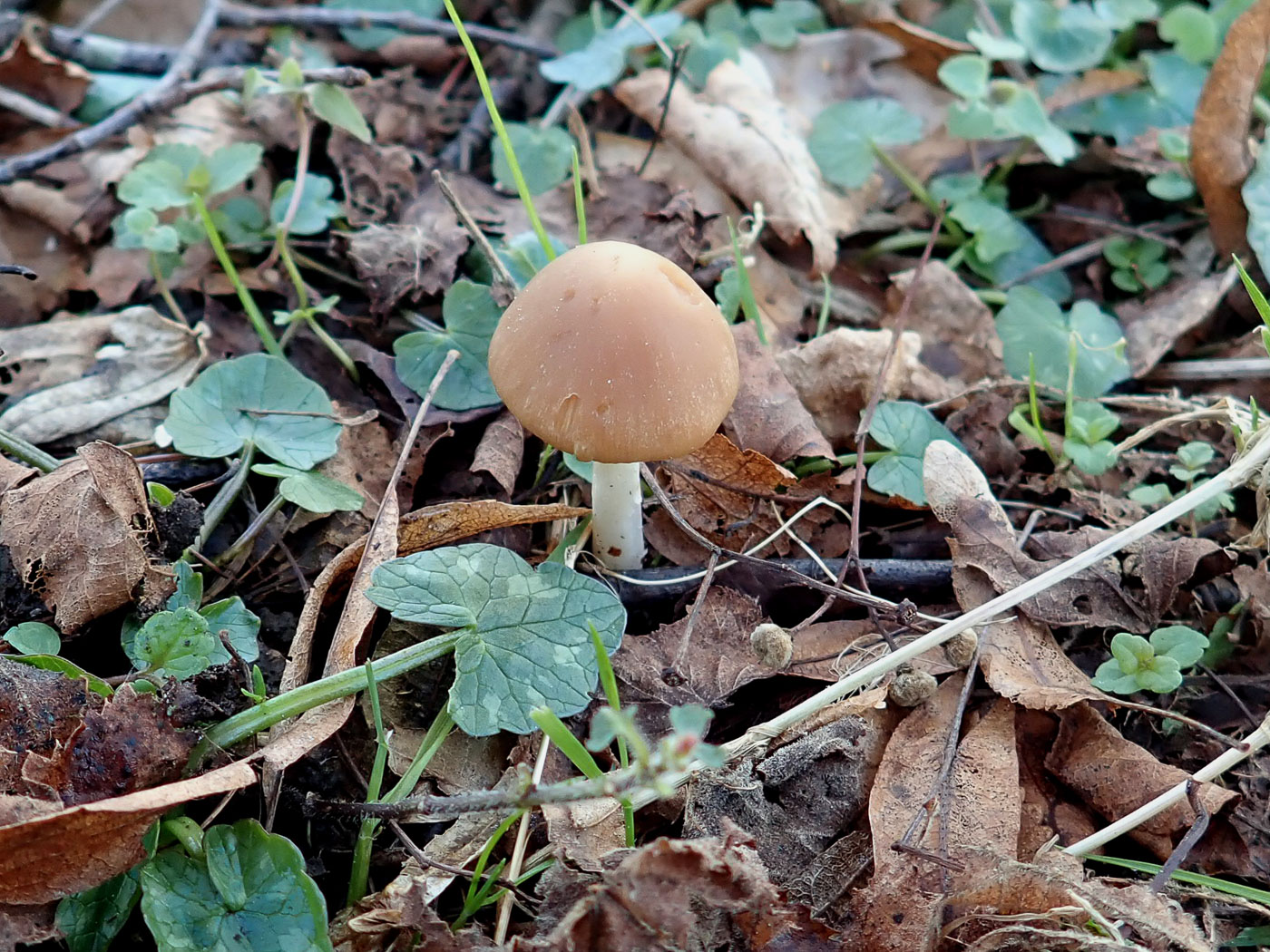
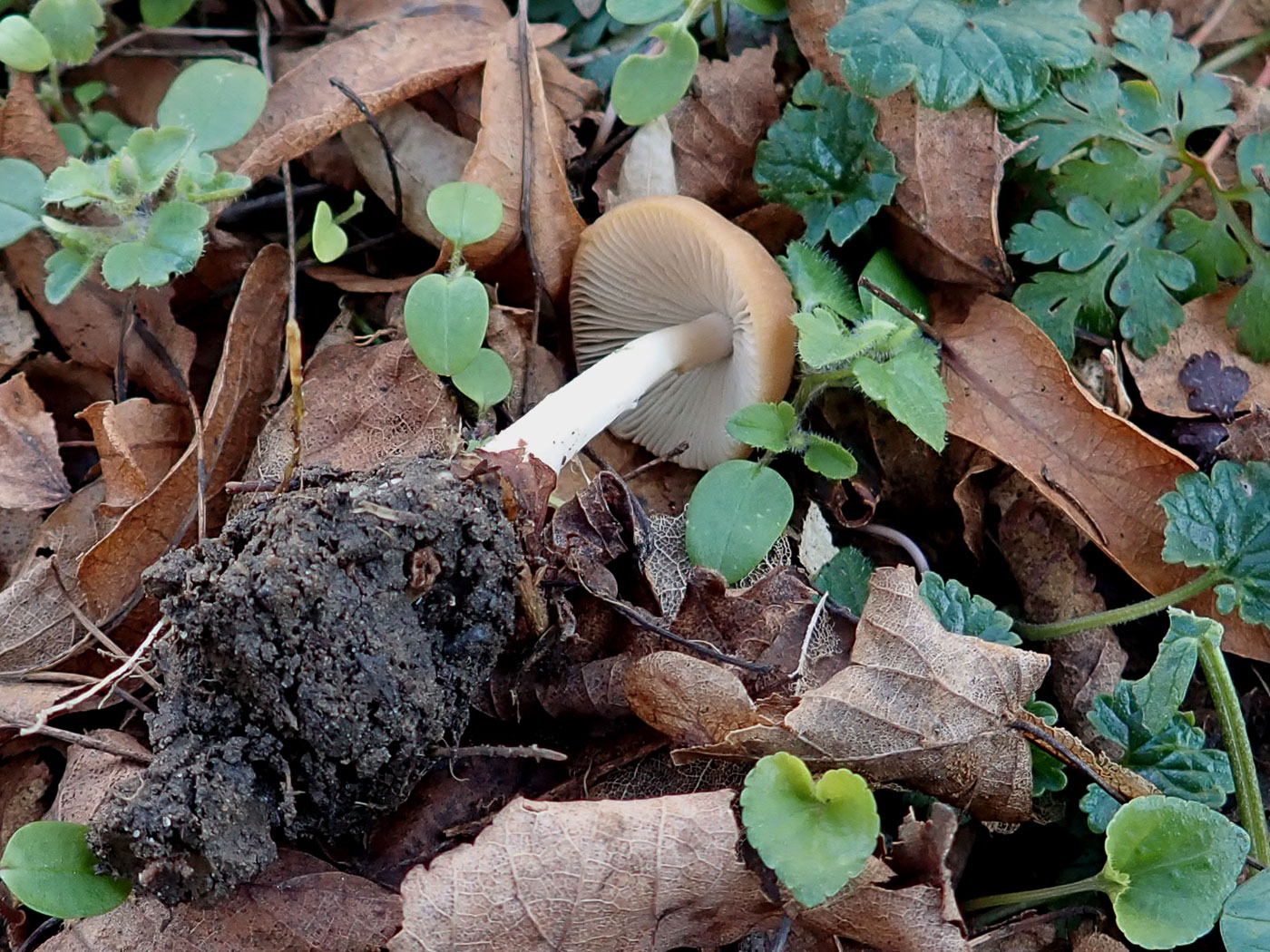
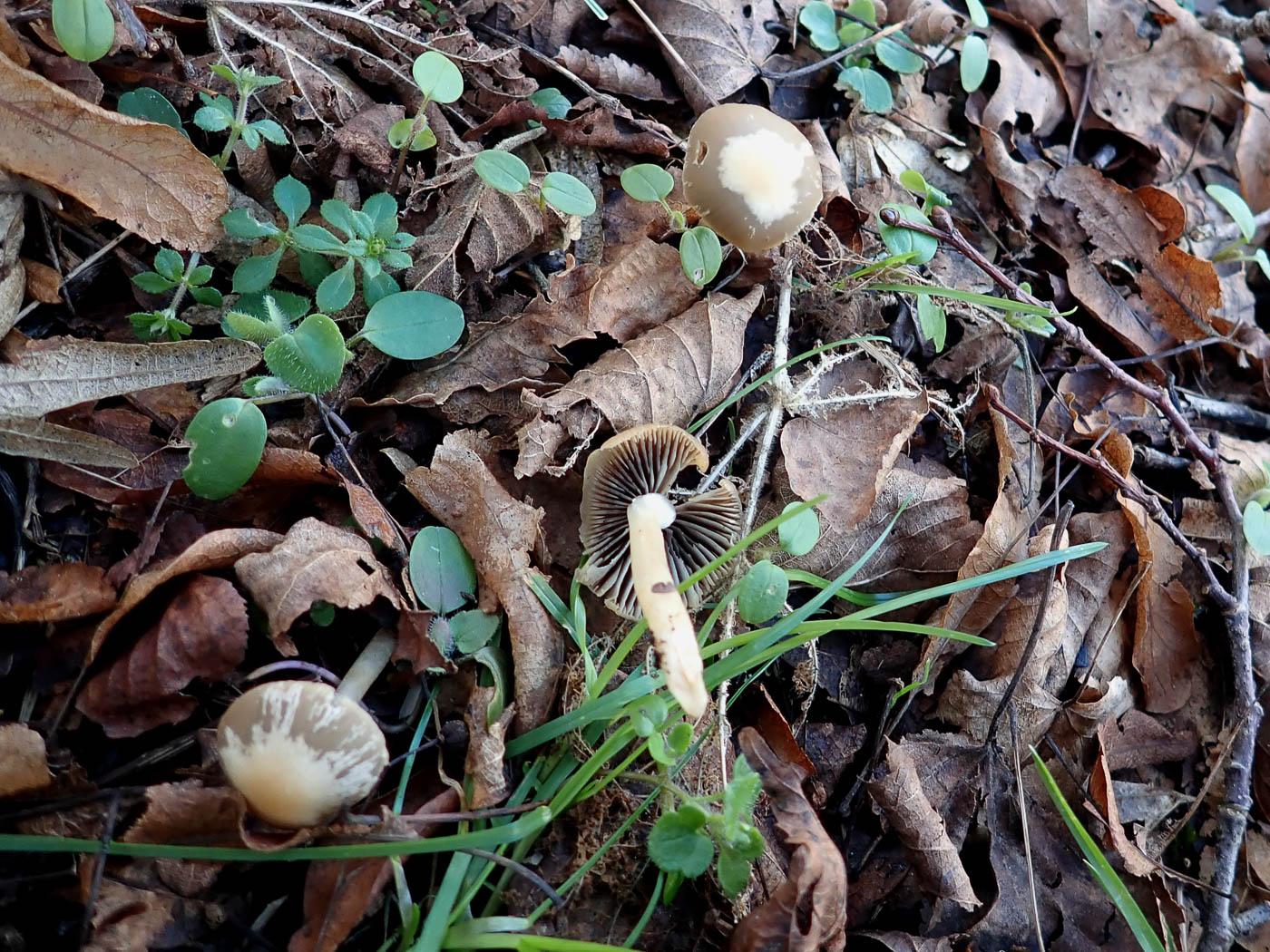 |
March 3rd Psathyrella spadiceogrisea (Spring Brittlestem) In woody litter under the Lime avenue at Turville Heath Penny was pleased to find just a fresh young singleton of this species (photos 1 and 2), but a little further on came across a small group showing the typically darker gills of the genus as the spores mature and the tendency for the cap to fade, staring from the centre. As the English name suggests, this is common in Spring though our database shows that this is one of our earliest records for it, April and May being the main months when it appears. Previous finds |
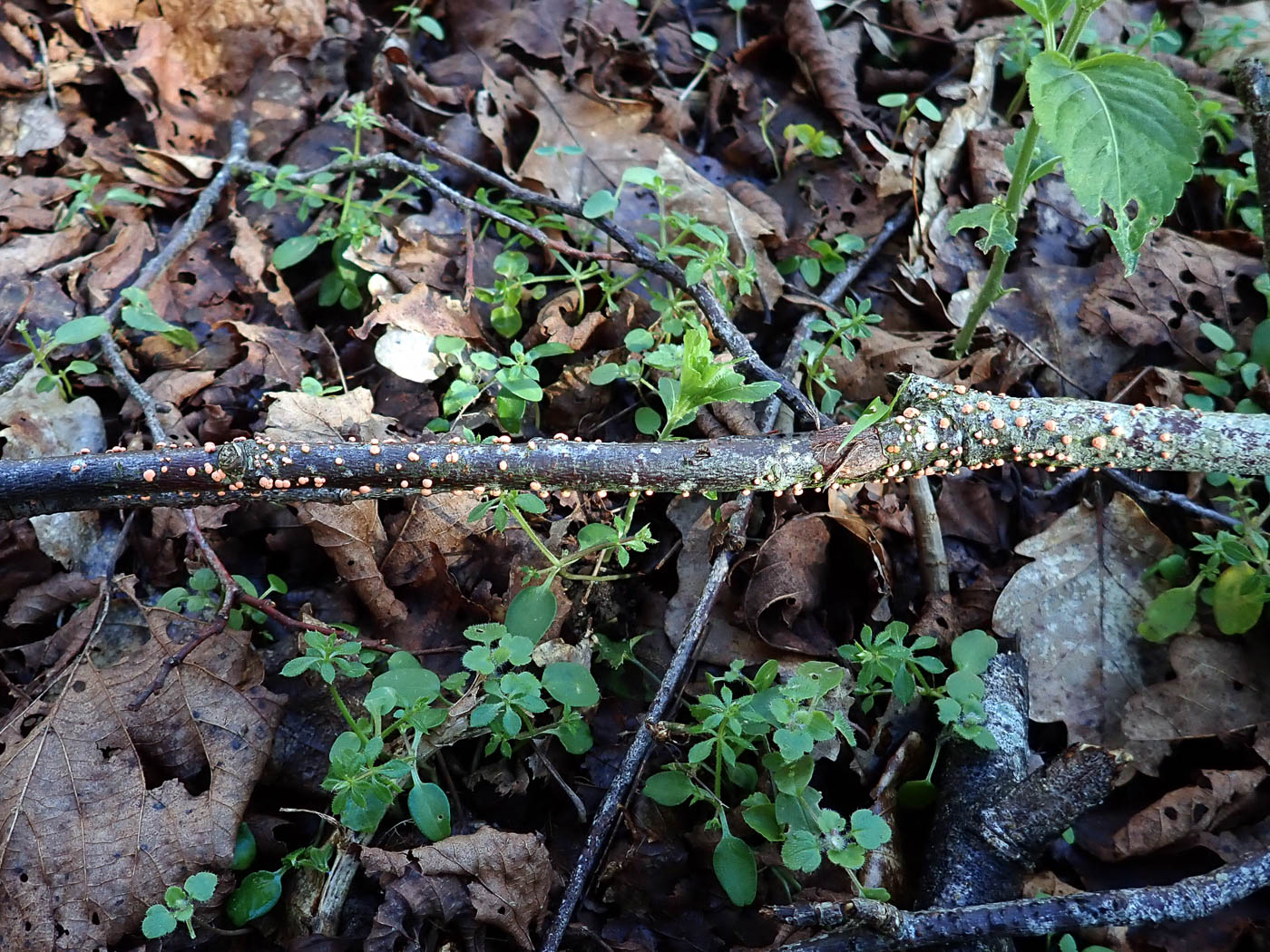 |
March 3rd Nectria cinnabarina (Coral Spot) At Turville Heath there was very little of fungal interest about, but amongst some woody remains Penny noticed this decidious stick with the bright orange spots of this distinctive and very common species. Previous finds |
February 23rd 2024
February 20th 2024
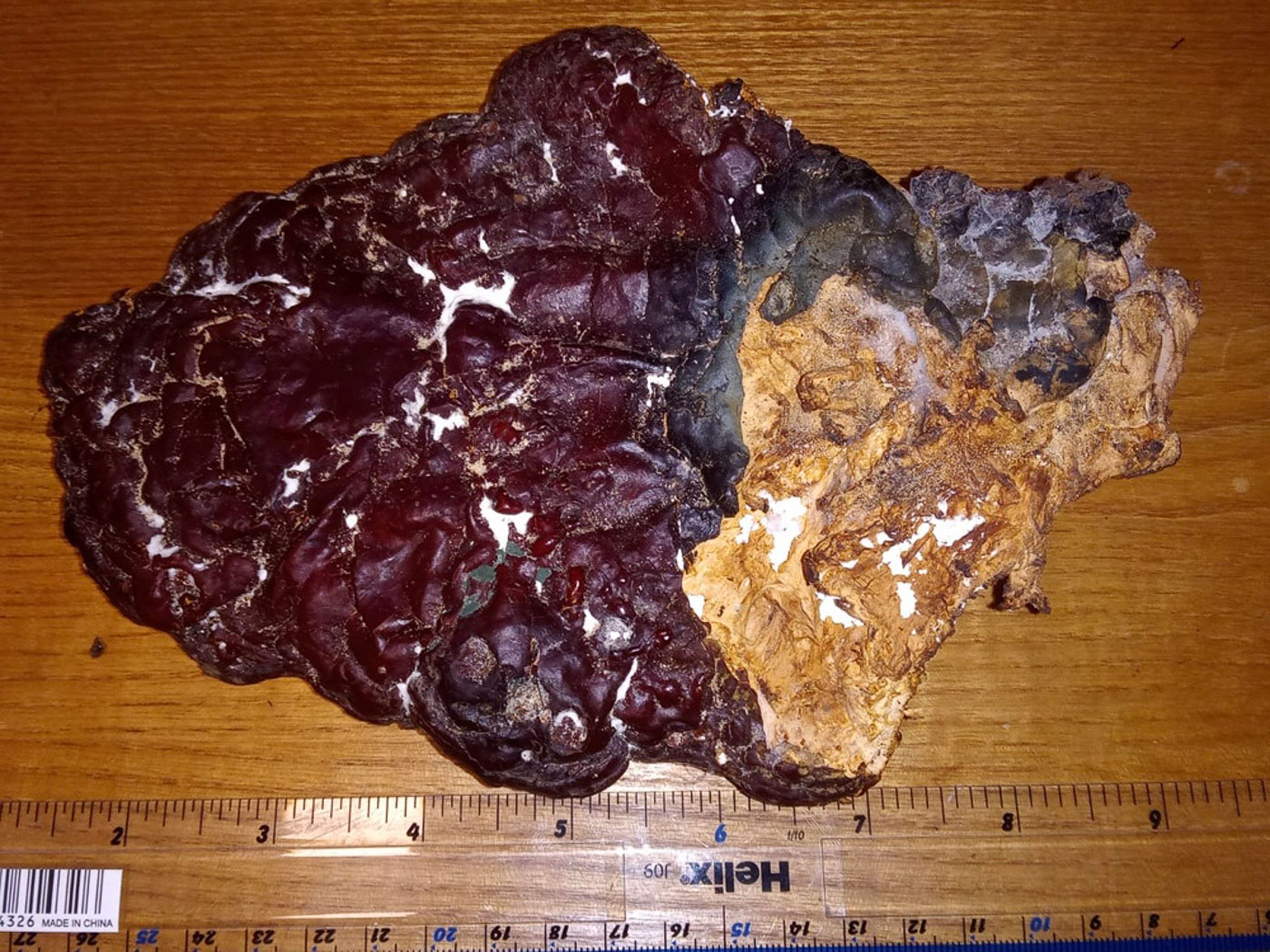
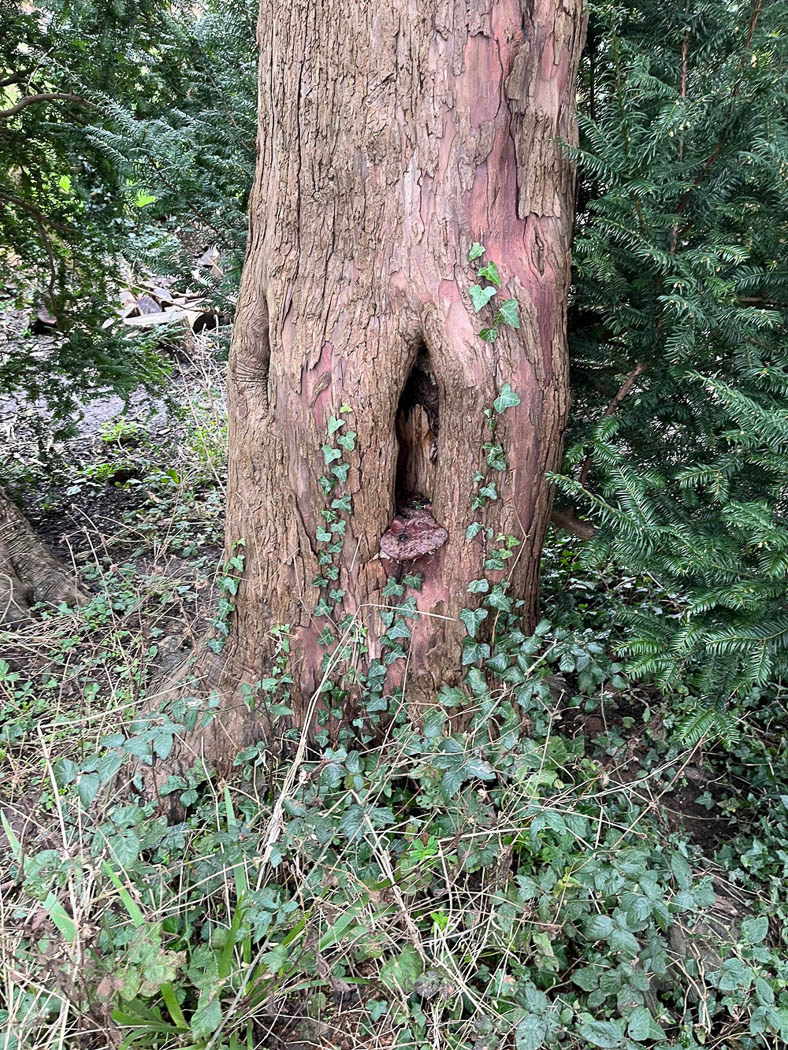
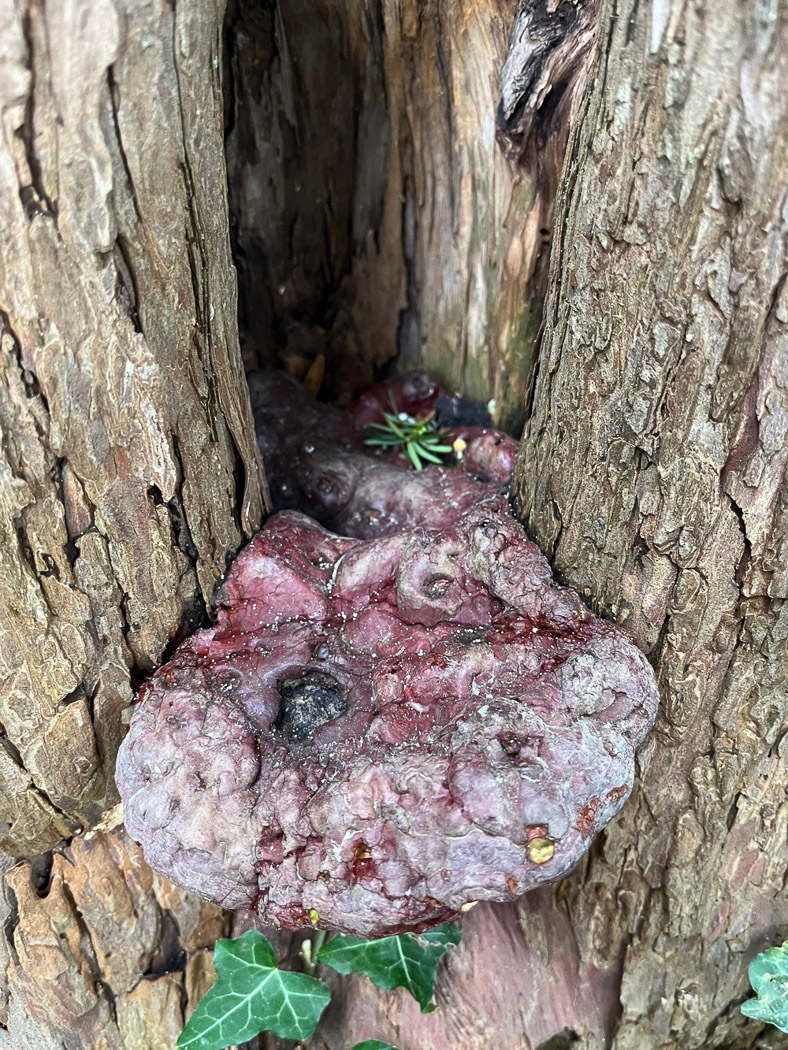 |
February 20th Ganoderma carnosum (a rare bracket with no common name) A friend of Sarah Ebdon's, Matt Vaughan, an arboriculturist, sent her a photo of a bracket (photo 1) found in Cublington (near Leighton Buzzard) on Feb 5th fruiting on Yew, suggesting that it might be this rare species of Ganoderma. Unfortunately there were no in-situ images taken at the time but he sent Sarah a sample which she was able to use for microscopic study and, consulting various keys etc, she was confident the ID was correct. She also sent detailed photos to tree / fungus expert David Humphries who confirmed her thoughts. This species is one of the shiny red resinous Ganoderma species which we come across far less frequently than the common and familiar G. australe and G. adspersum which lack this shiny surface. Its occurrence on conifer including Yew helps to distinguish it from the very similar G. lucidum - most often found on deciduous trees though apparently occasionally on Spruce. Of the under 50 records on the national database, all but one are on Yew and all but one Scottish record are in southern England counties. Luckily when the site was revisited today another bracket was discovered, hence photos 2 and 3.This is an exciting find and new to Bucks. (The photos are Matt Vaughan's) |
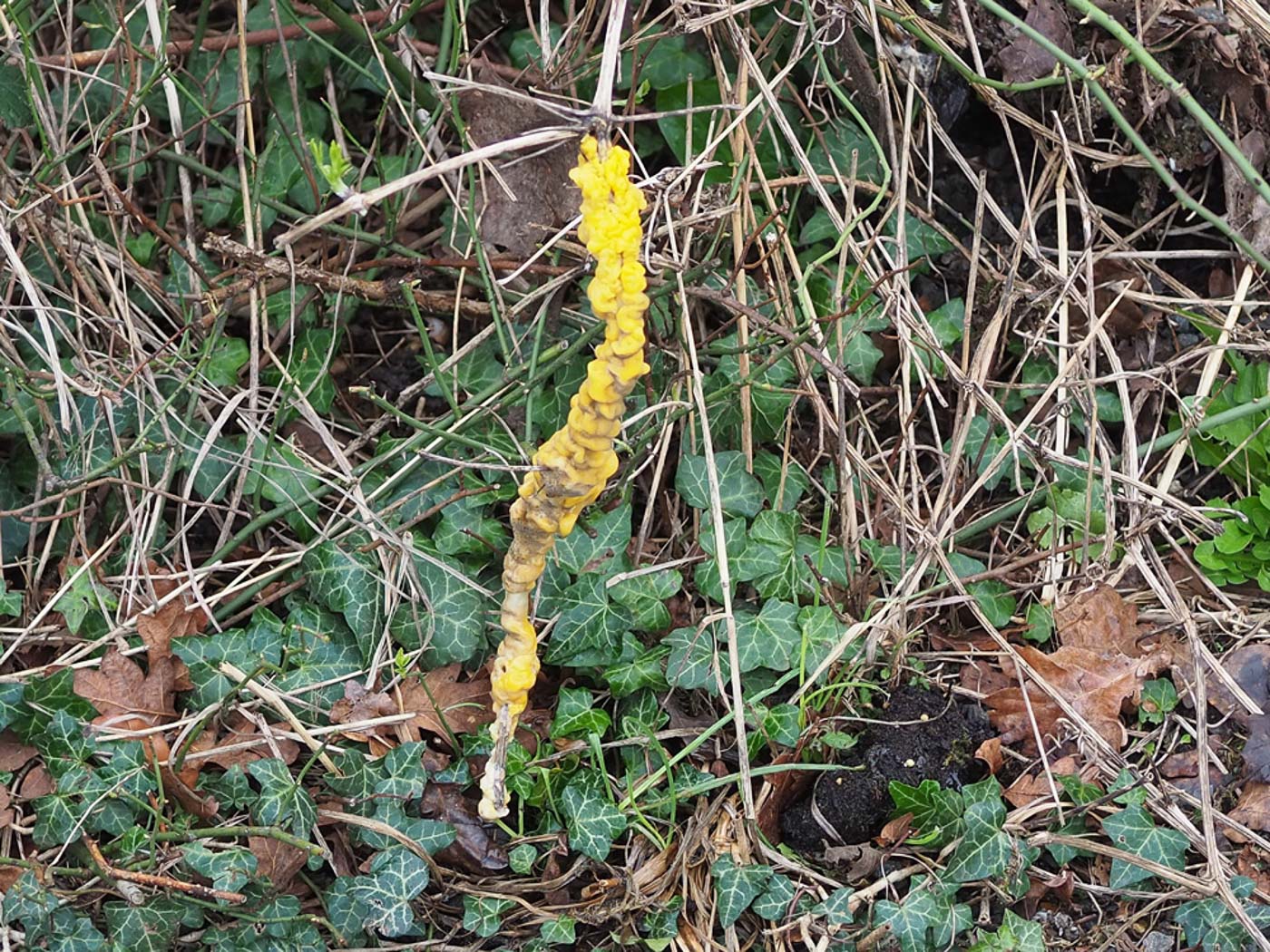
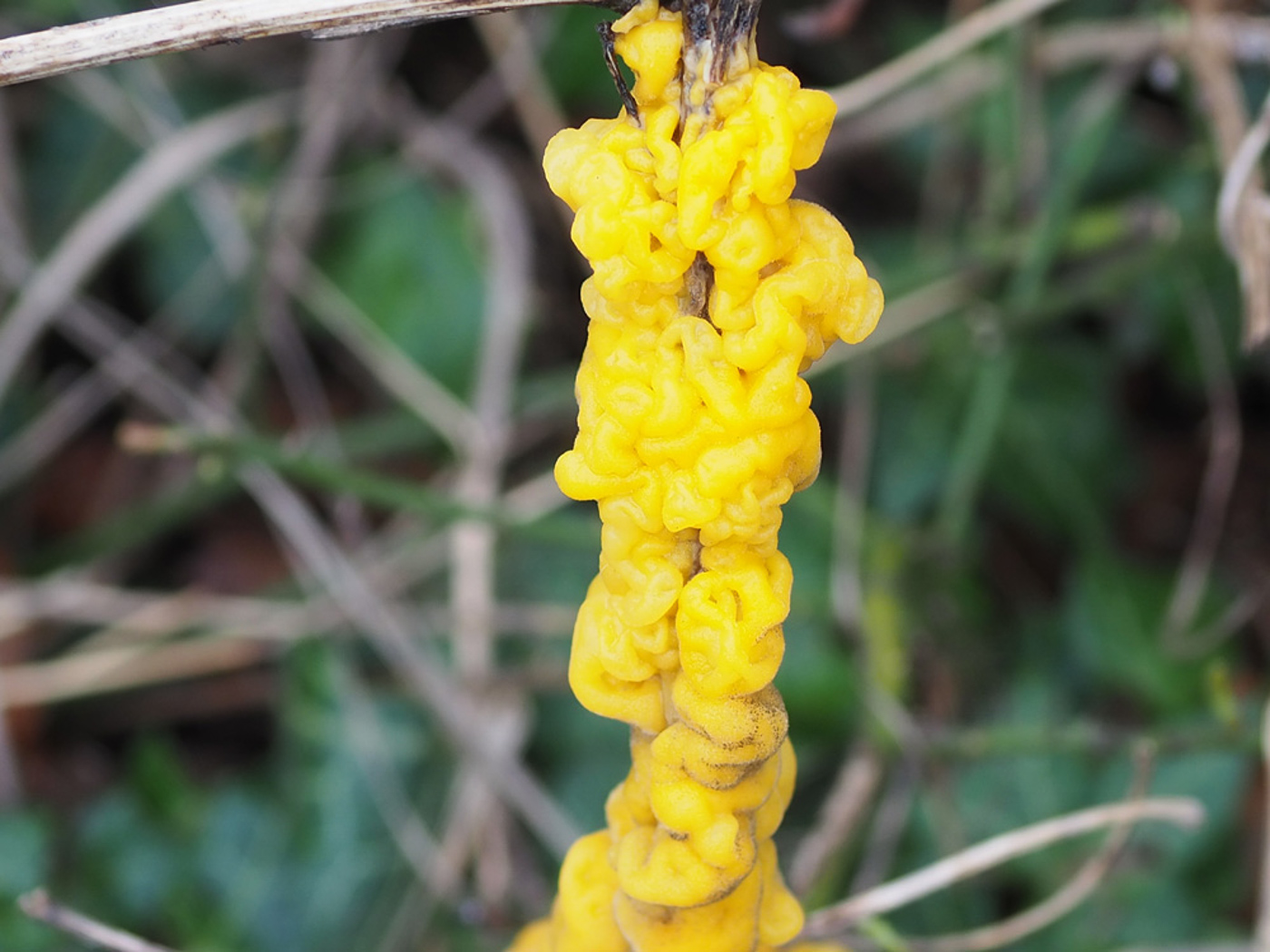
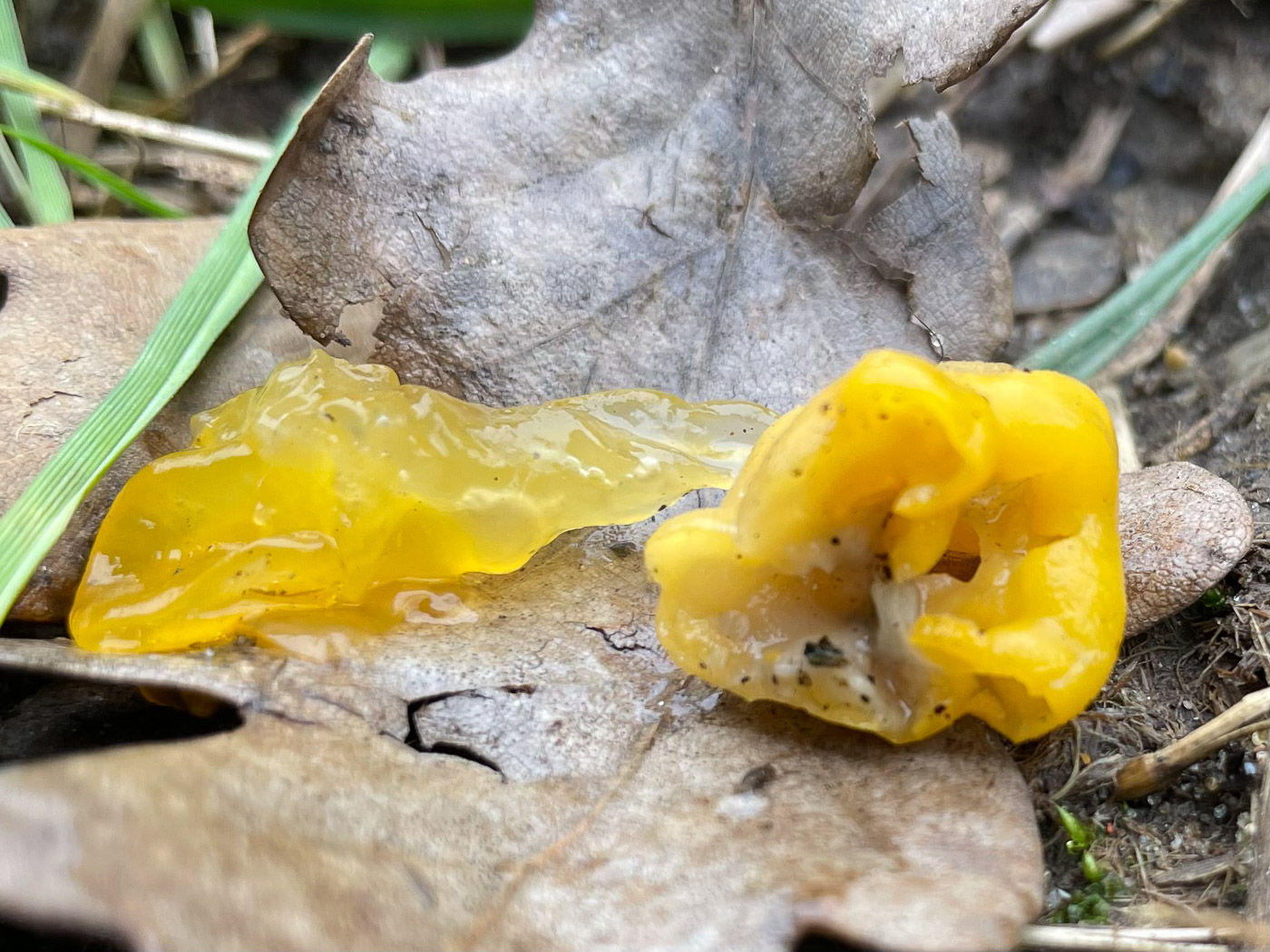
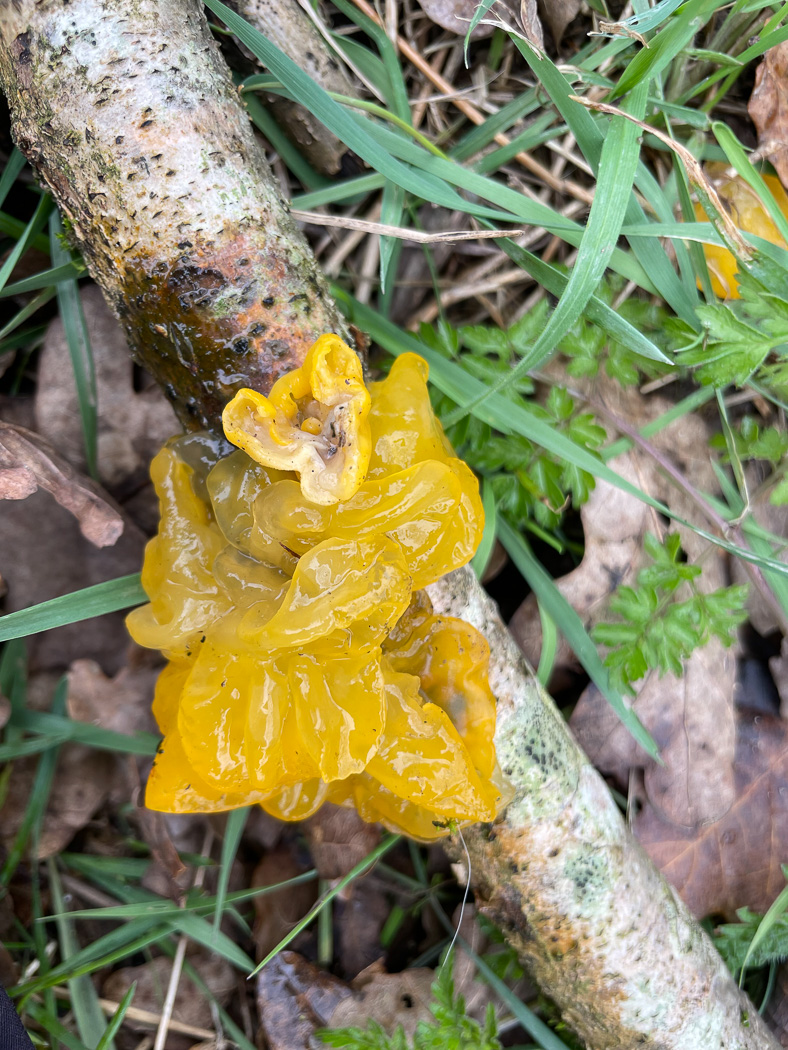
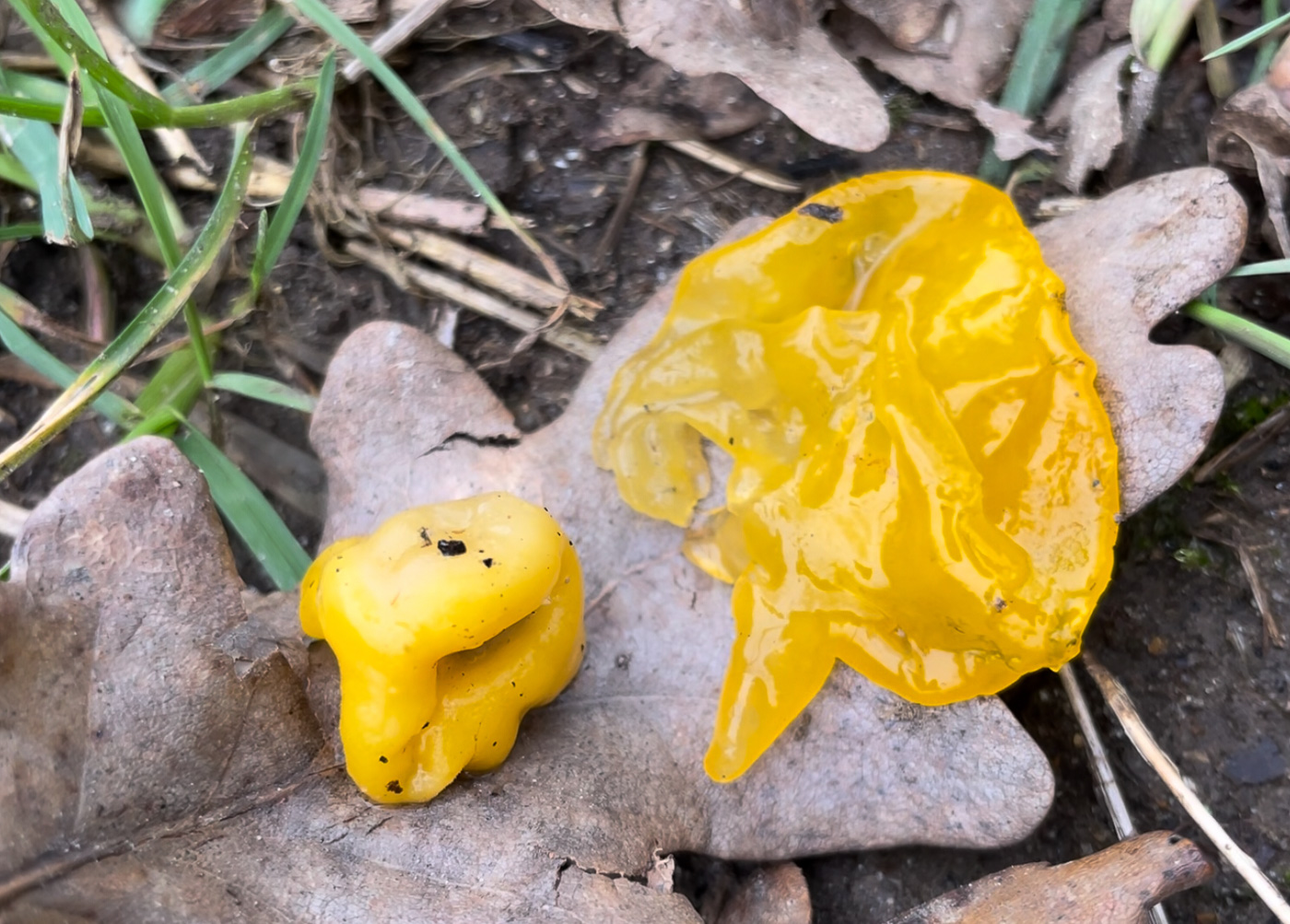 |
February 20th Slime Flux (no Latin name and not fungal but an aggregation of various bacteria) In a hedge near Tinkers Wood John Catterson noticed this impressive example of what he could only think was the common Tremella mesenterica (Yellow Brain) fruiting prolifically on a stem of Old Man's Beard. He sent his photos (1 and 2) to Penny but with a query because its abundance appeared atypical and its host plant seemed strange also. With no microscopic check available, Penny also assumed it must be the Tremella but when Sarah Ebdon saw the subsequent entry in Finds she smelt a rat because this rang a bell with her. Two years previously she'd gone through this same questioning process with a similar collection which had turned out to be not fungal but a bacterial infection. She contacted John and together they returned to the spot to examine this somewhat strange and smelly growth which she then collected together with some genuine T. mesenterica nearby to facilitate a proper microscopic comparison. Conclusion: it was microscopically completely unlike anything fungal and indeed matched descriptions of Slime Flux which apparently can often attack damaged Clematis plants, especially in the Spring. Sarah's photos 3-5 show samples of Slime Flux placed adjacent to genuine much shinier T. mesenterica. We felt it was well worth including these photos in Finds as yet another example of how misleading fungal identification can be! Sarah should be congratulated on recognising this strange organism and bringing it to Penny's attention. See previous entries of Tremella mesenterica |
February 18th 2024
February 14th 2024
February 10th 2024
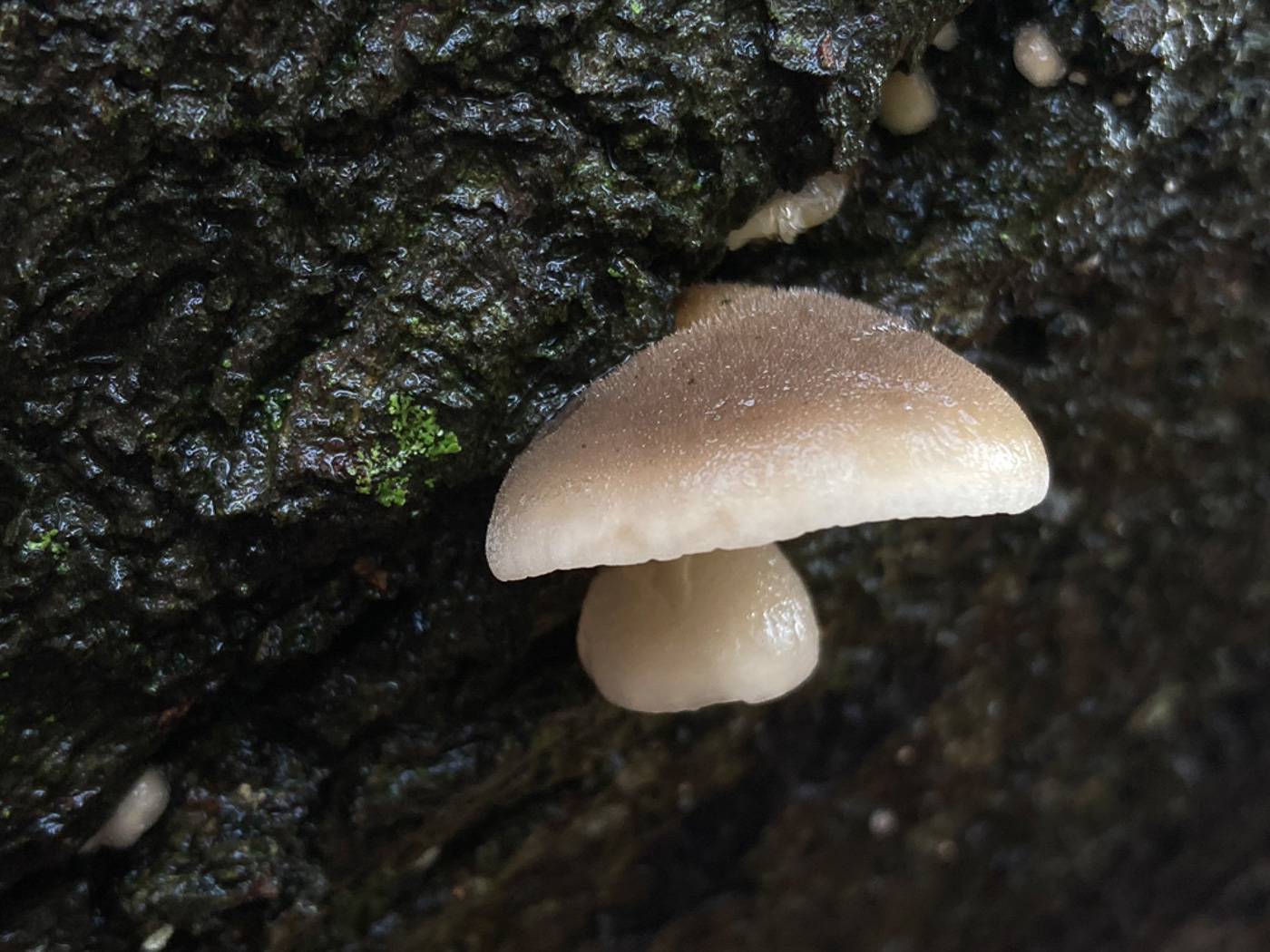
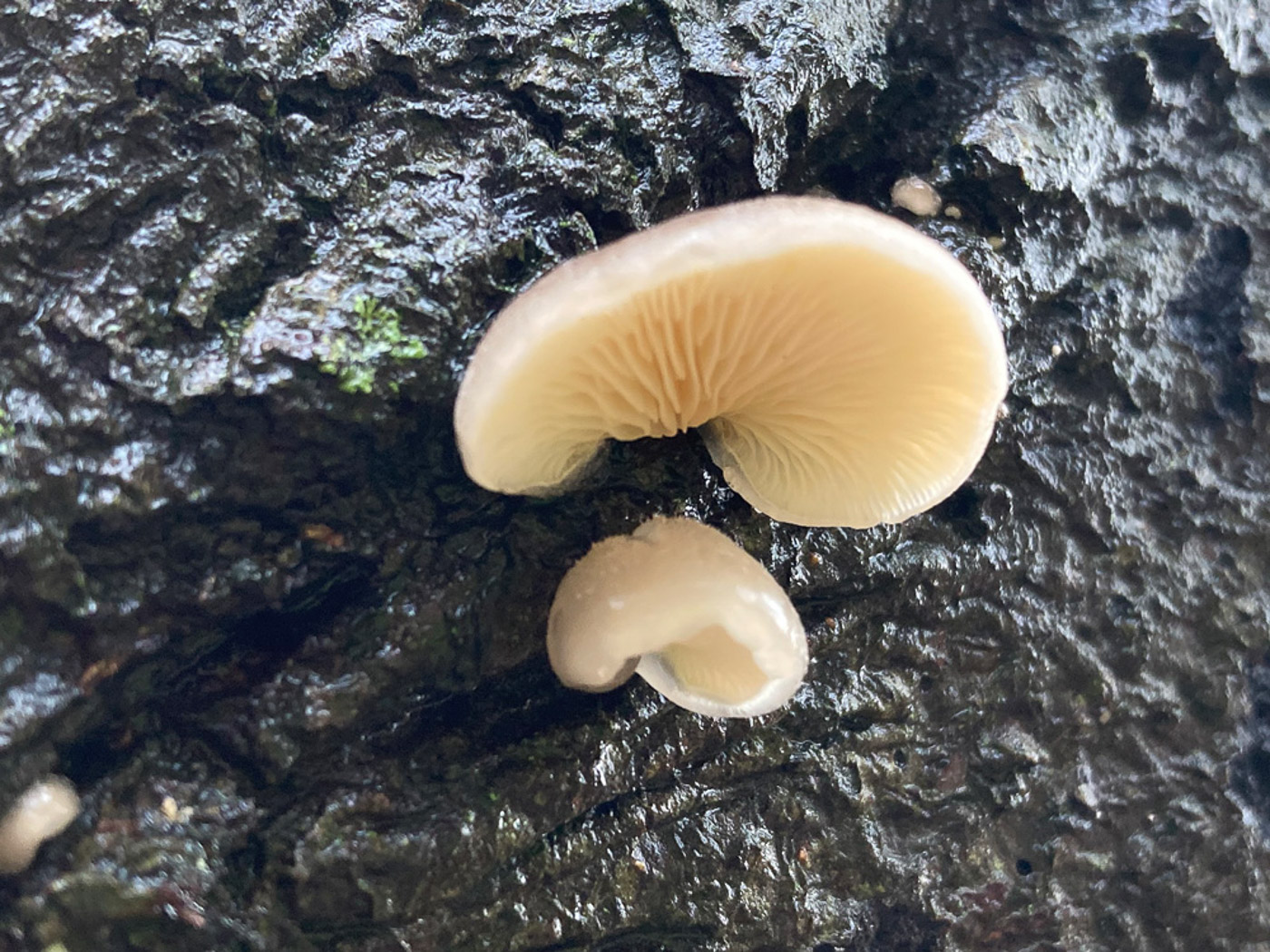
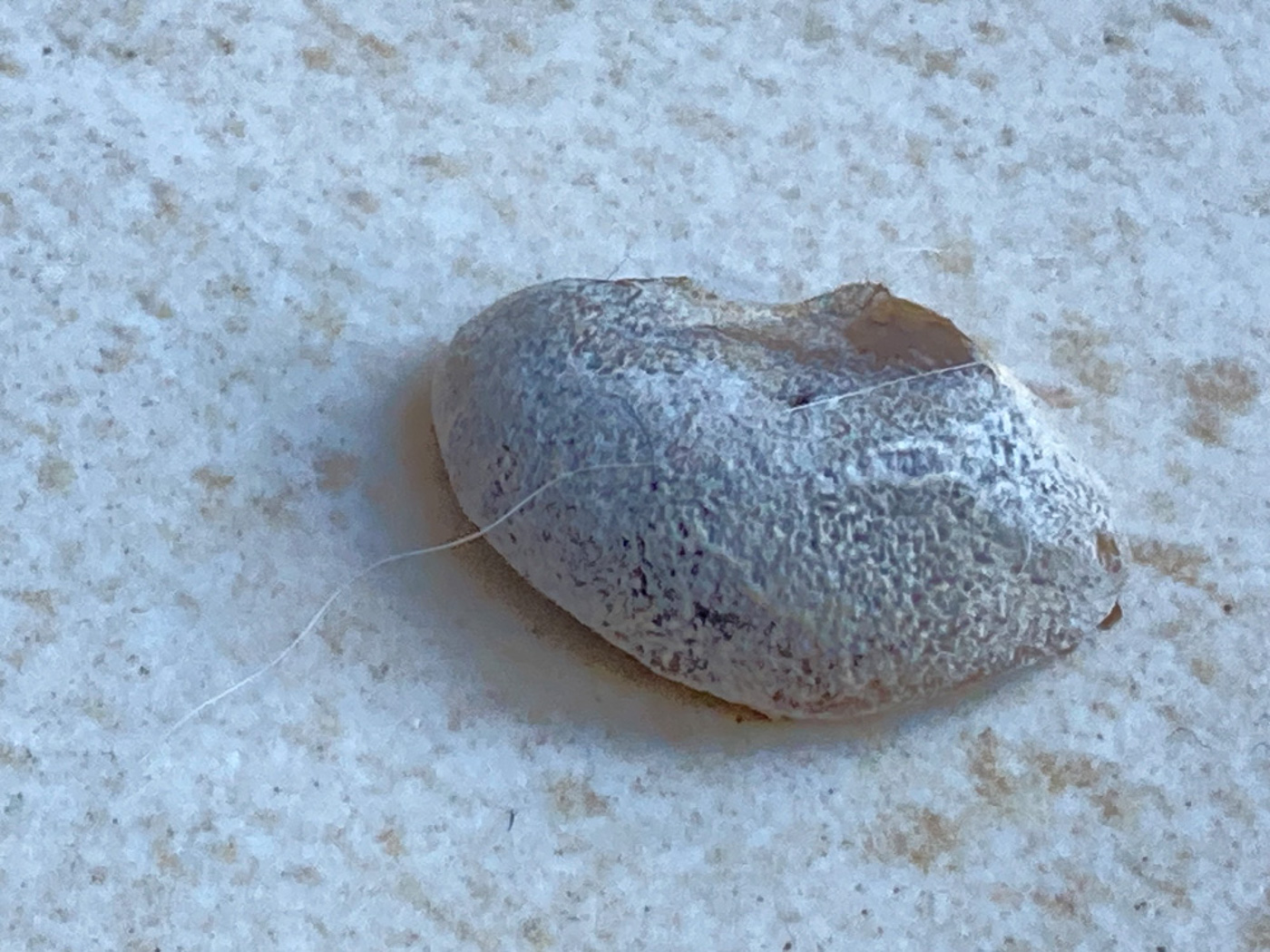 |
February 10th Hohenbuehelia mastrucata (Woolly Oyster) In Egypt Woods back in November Russell Ness found one fruitbody of this somewhat unusual pleurotoid mushroom on a huge fallen Beech at about the time that Sarah Ebdon identified and took images of a good display of it from Naphill Common. As the winter had been so mild Russell returned in February to check on it and found these fresh examples in the same spot. He comments that the Latin species name means sheepskin and that as it dries the woolly cap surface becomes much more apparent - almost like a whitish coating (seen in photo 3). Previous finds |
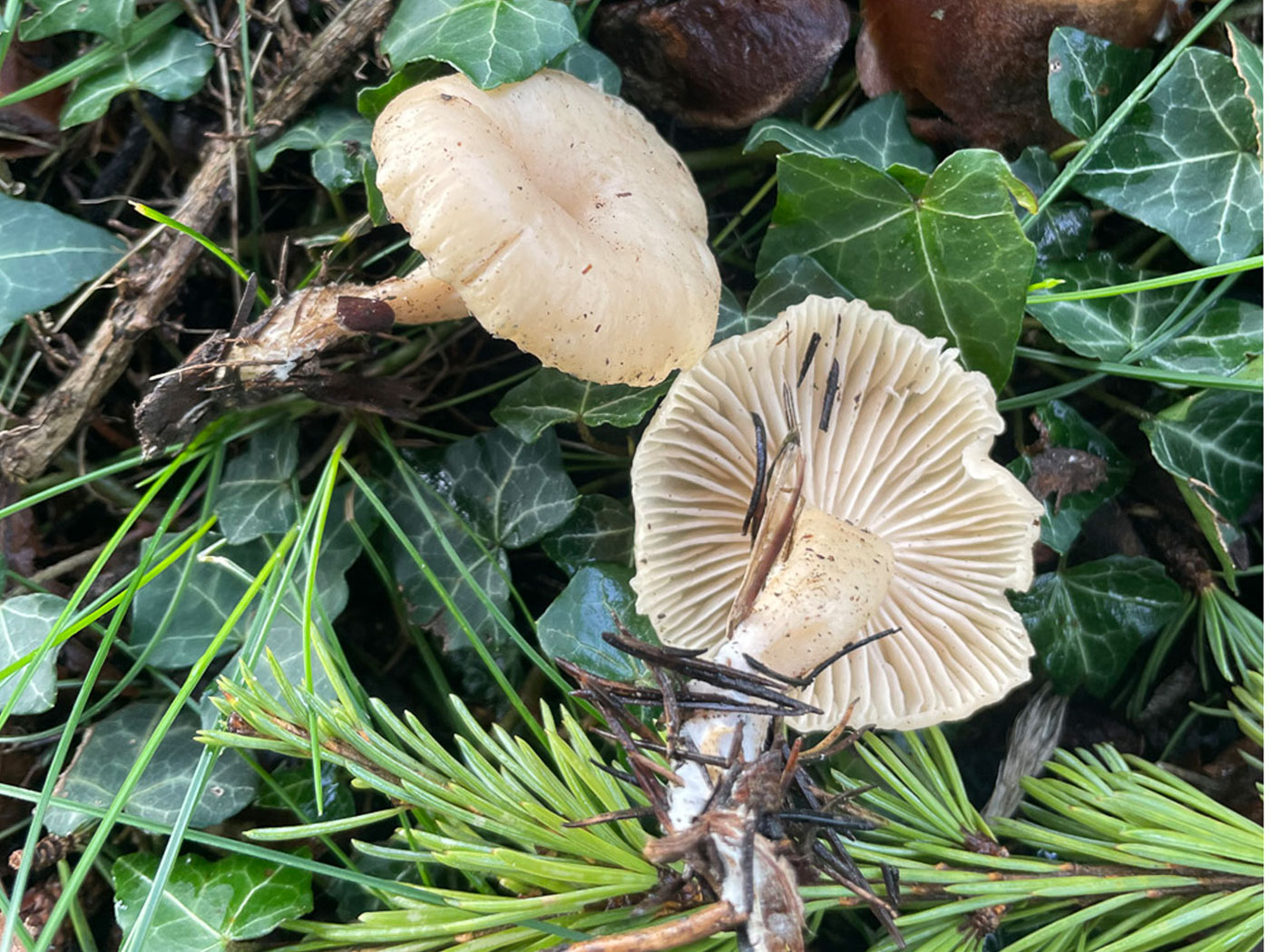
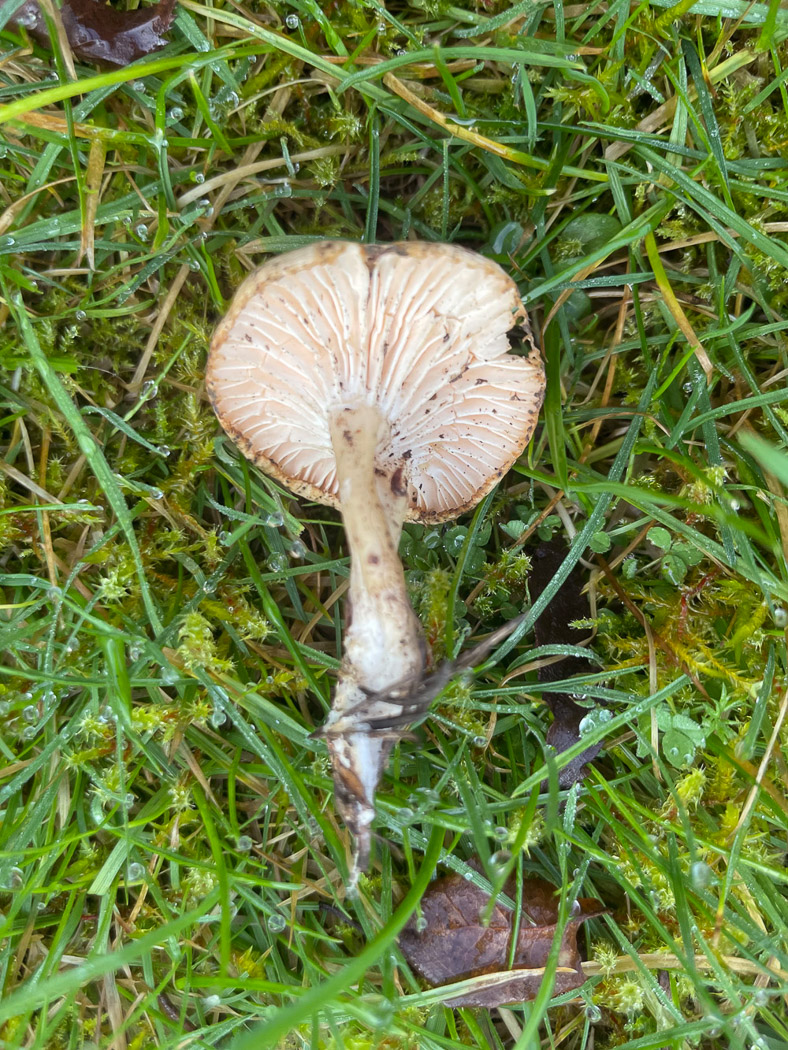 |
February 10th Leucocybe houghtonii (Pinkgilled Funnel) In Naphill whilst searching under Cedar in the hopes of finding Cedar Cups, recently entered in Finds, Sarah Ebdon saw to her surprise not that species but two pale funnel-shaped mushrooms. These reminded her of a collection made in January 2023 which turned out to be L. houghtonii, previously in genus Clitocybe and this was later confirmed. A typical pale Funnel in many ways, the decurrent gills tend to become distinctly pinkish especially after collection as it dries (though this colour is hard to catch on camera), furthermore it also develops a smell of tomato leaves though this can be fleeting or even almost absent. Not rare, it often seems to fruit in late autumn or winter but is no doubt often overlooked as just one of the many similar pale Funnels. Previous finds |
February 9th 2024
February 8th 2024
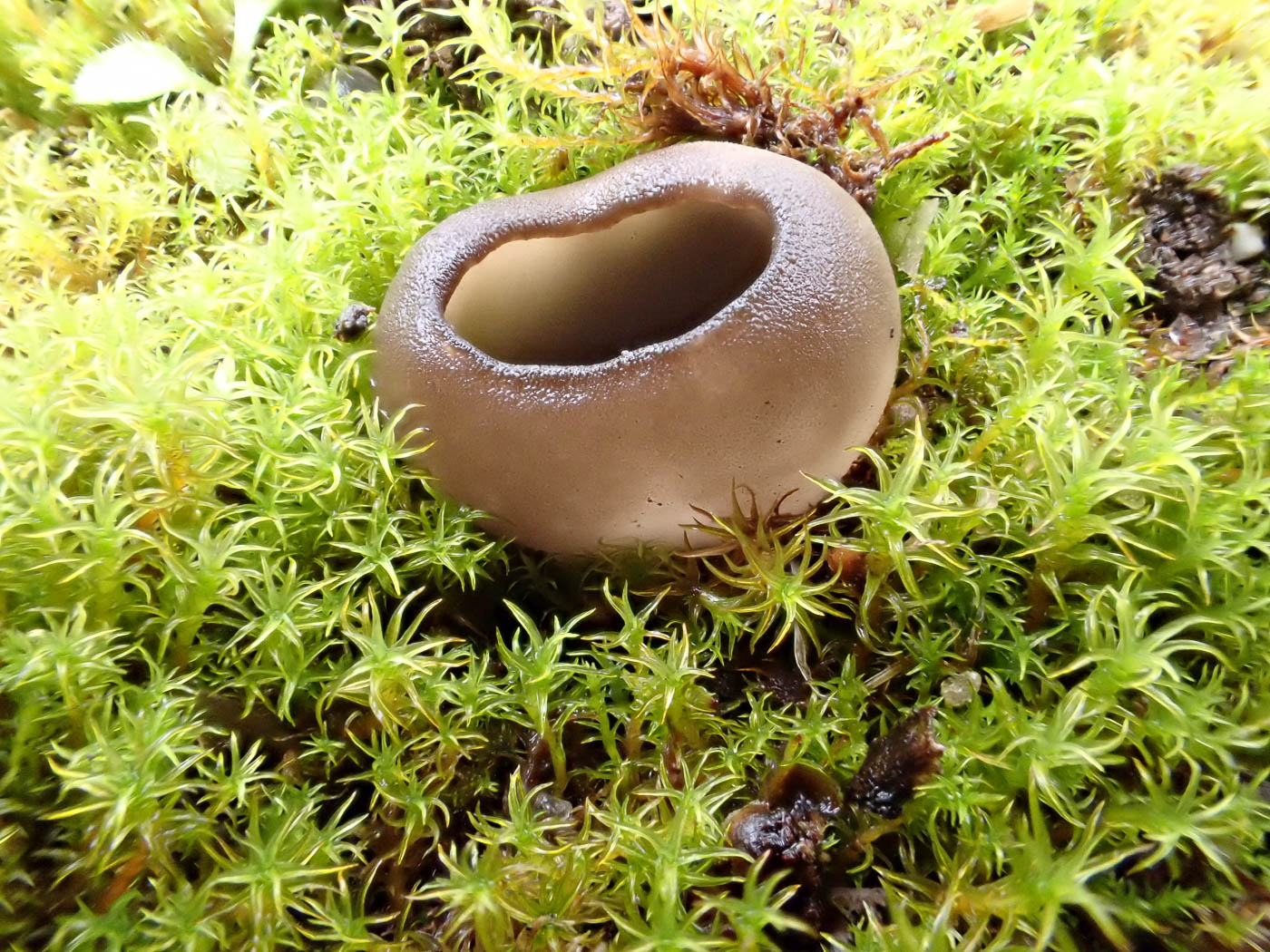
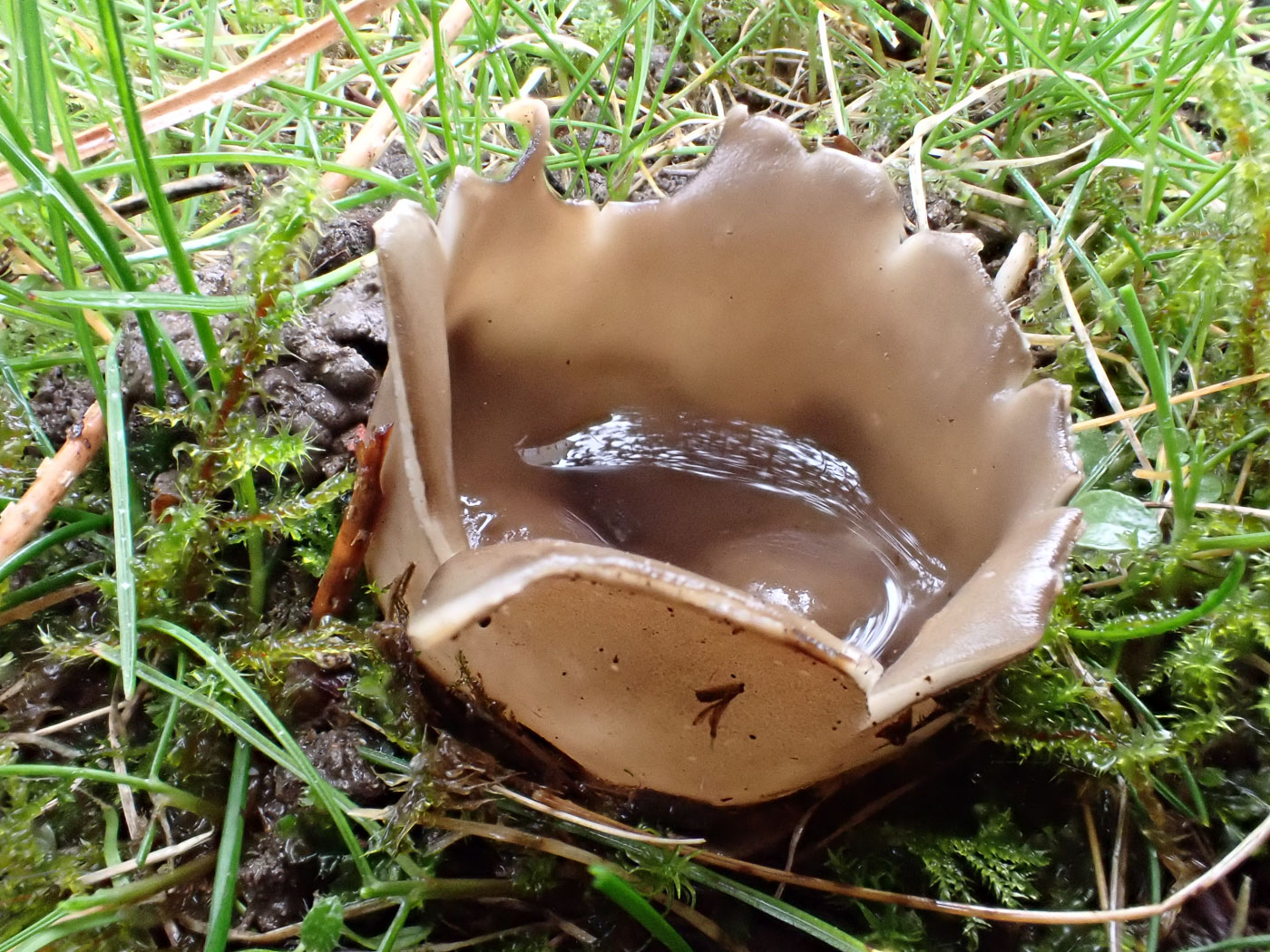 |
February 8th Helvella leucomelaena (Sooty Cup) In Gerrards Cross, having just spotted the Geopora entered below, Jesper Launder felt inspired to check the site nearby he knew for this unusual Helvella species despite it being somewhat early in the year for it. There it was under Pine as before, though last year when new to the county it was fruiting in April. See the notes of that find for further information. Previous finds |
February 6th 2024
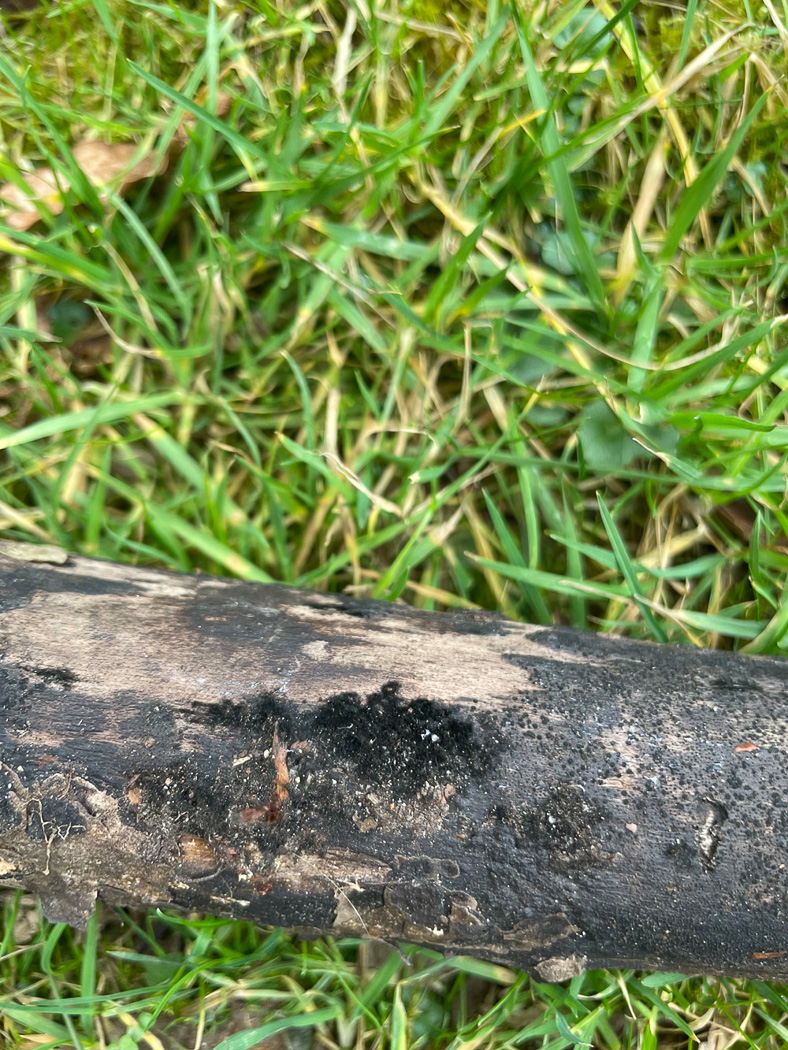
 |
February 6th Chaetosphaerella phaeostroma (Black Velvet) In Hughenden Wood Sarah Ebdon noticed this black fuzzy flat patch on fallen deciduous wood, suspected she recognised it and took it home to confirm with the microscopic features. The English name here is hopefully about to be adopted onto the official list and describes one state of the species well though when mature it develops tiny bobbles (shown well in our only previous Finds entry). This is a common species, often overlooked and can be found at any time of year. (Photo 2 is Claire Williams's) Previous finds |
February 4th 2024
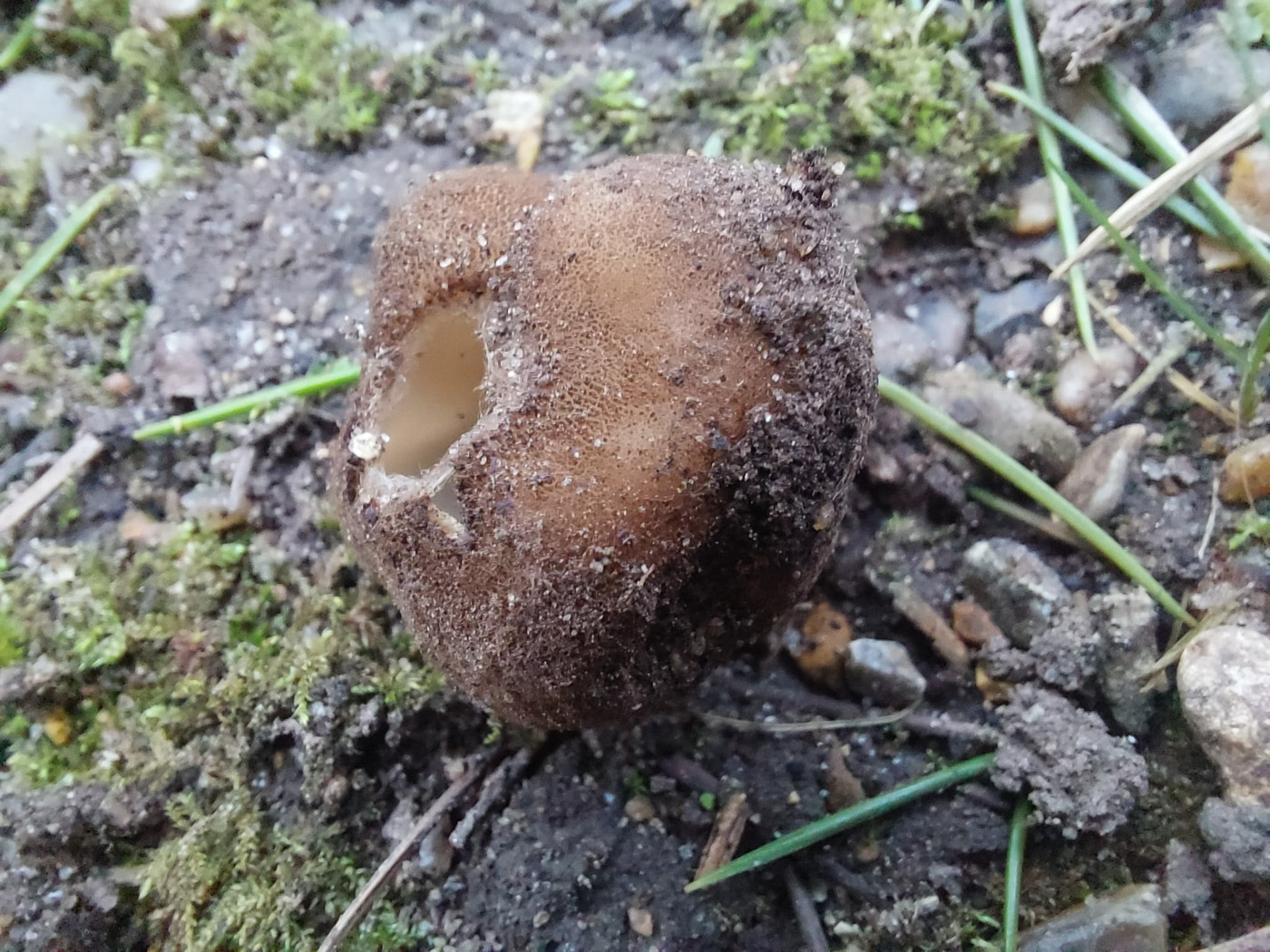
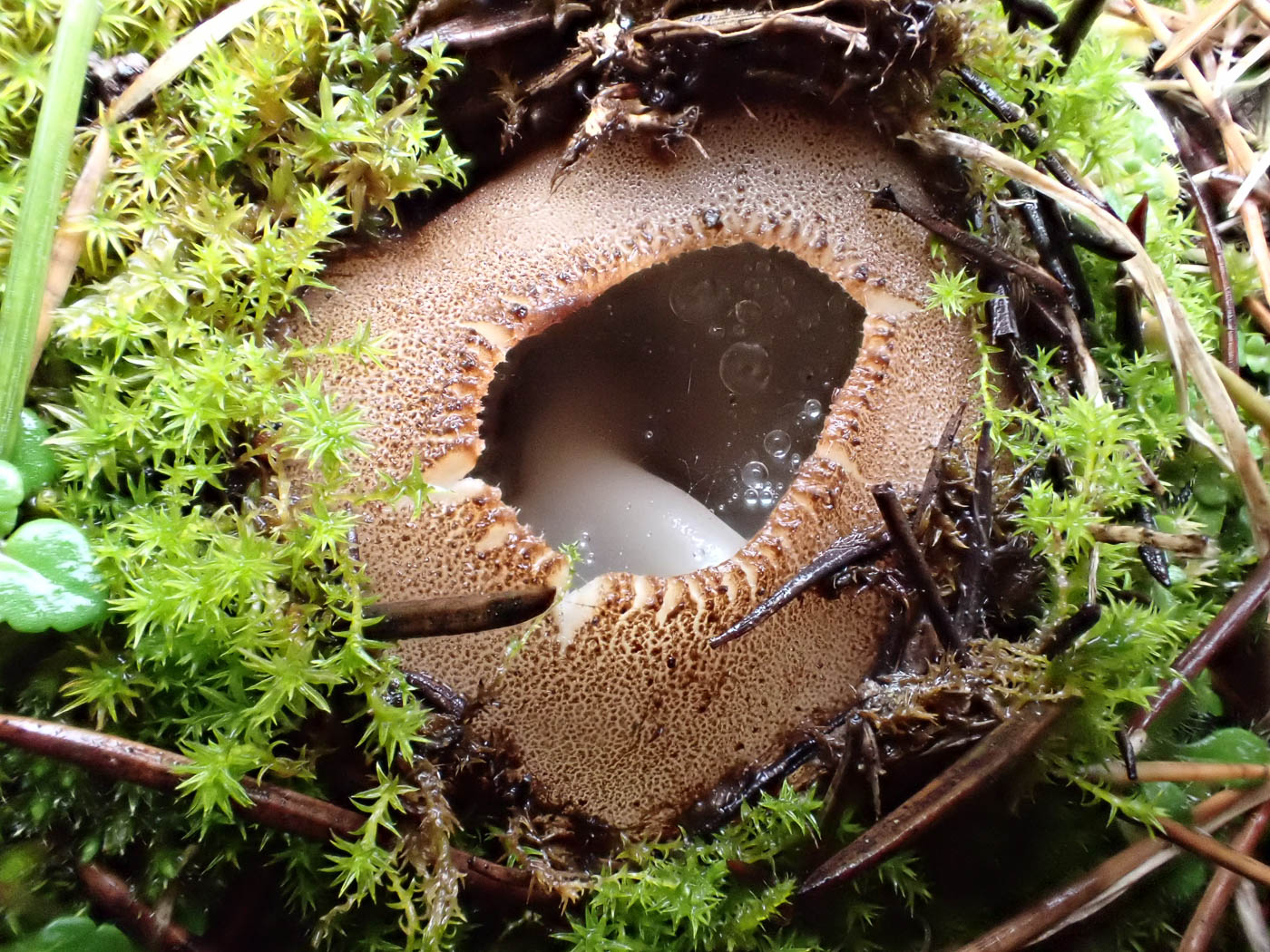
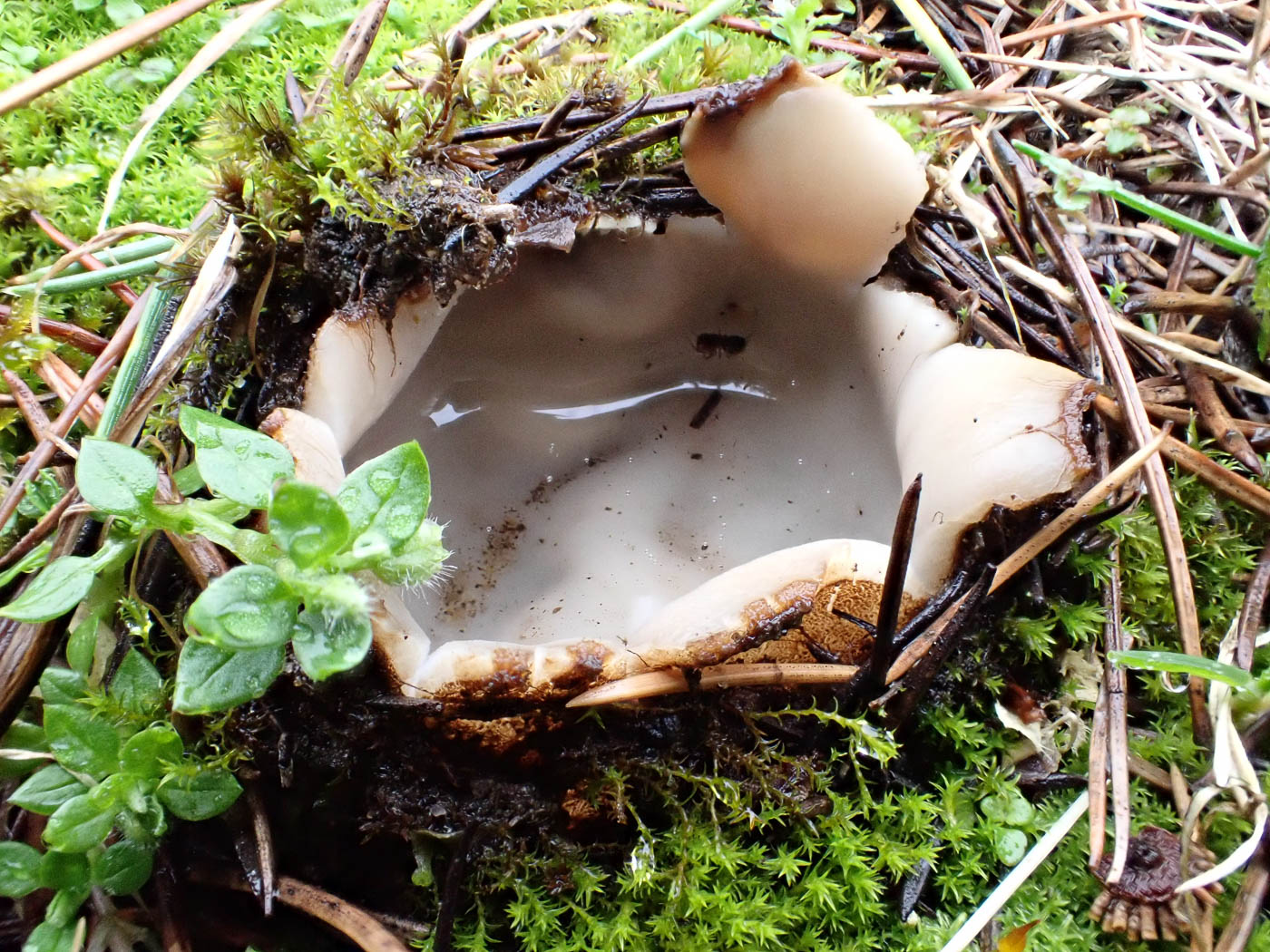 |
February 4th Geopora sumneriana (Cedar Cup) In Gerrards Cross under a Cedar tree not previously noted for hosting this unusual 'semisubmerged' species of Cup, Jesper Launder was surprised to find it fruiting so early in the year. A few days later he checked under another Cedar in Gerrards Cross where he'd found it before and sure enough there it was. We have under 10 county records though all are from mid to late March or April, so this is one to look out for now under Cedar. Previous finds |
January 26th 2024
 Stoke Common 26.01.24 JW1.jpg)
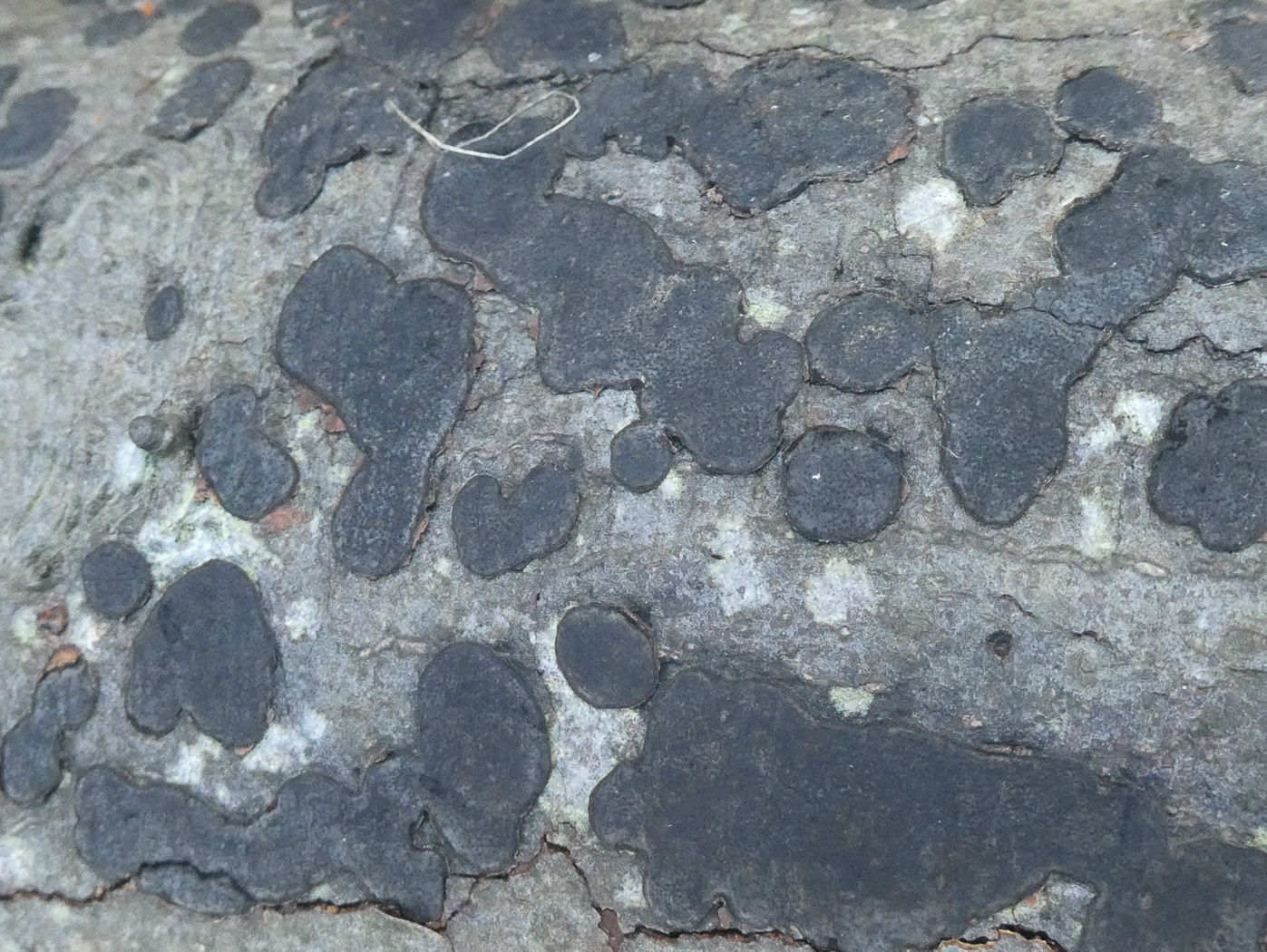
|
January 26th Biscogniauxia nummularia (Beech Tarcrust) On fallen Beech at Stoke Common Jim Wills noticed these black lozenge-shaped patches which were easily recognisable as this species - given the correct host wood. Compare his photos with those of Diatrype stigma (Common Tarcrust) - very similar and also found on fallen Beech but forming much larger patches and not lozenge-shaped as here. Both species, however, are equally common despite their common names. (Incidentally the black blobs beneath were thought to be Hypoxylon fragiforme though this determination was questioned by Penny therefore not included as a separate entry in Finds for that reason.) Previous finds |
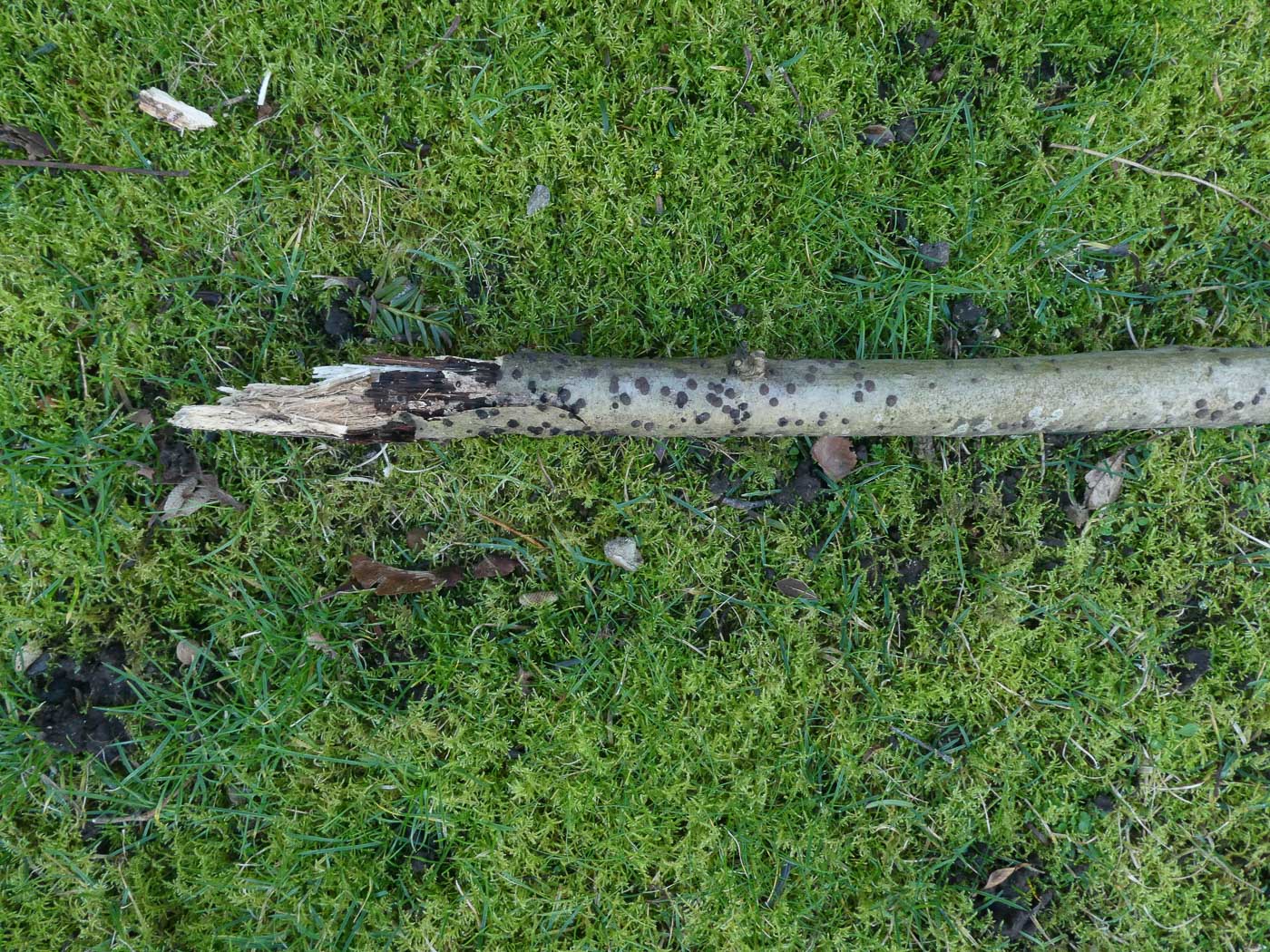
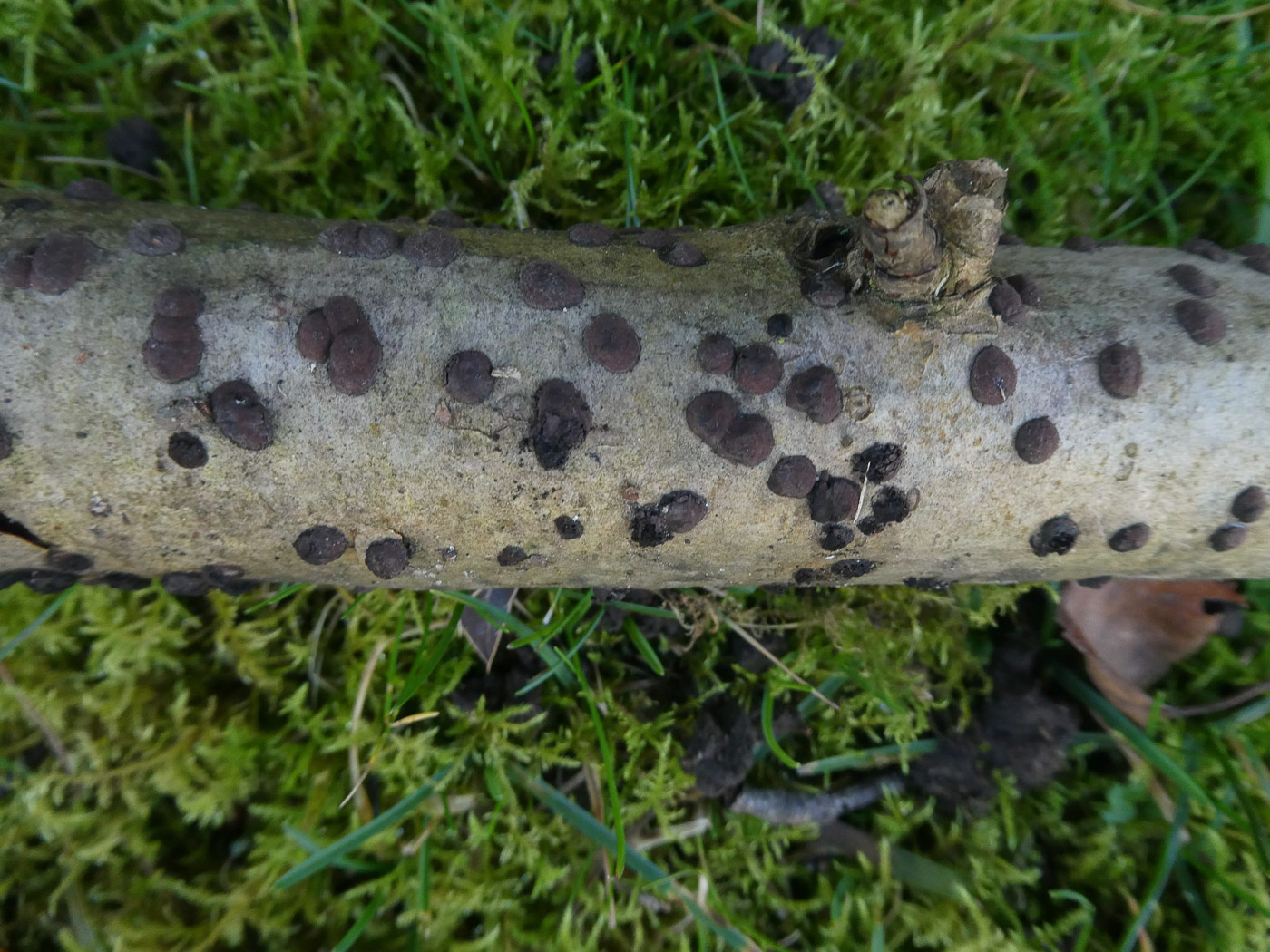 |
January 26th Hypoxylon fuscum (Hazel Woodwart) In Chalfont St. Peter Jim Wills found this stick under Hazel with a good display of this very common fungus. A typical species of Hypoxylon, it is smaller than H. fragiforme (Beech Woodwart) and only occurs on Hazel, often in large colonies on dead but still attached branches. Previous finds |
January 25th 2024
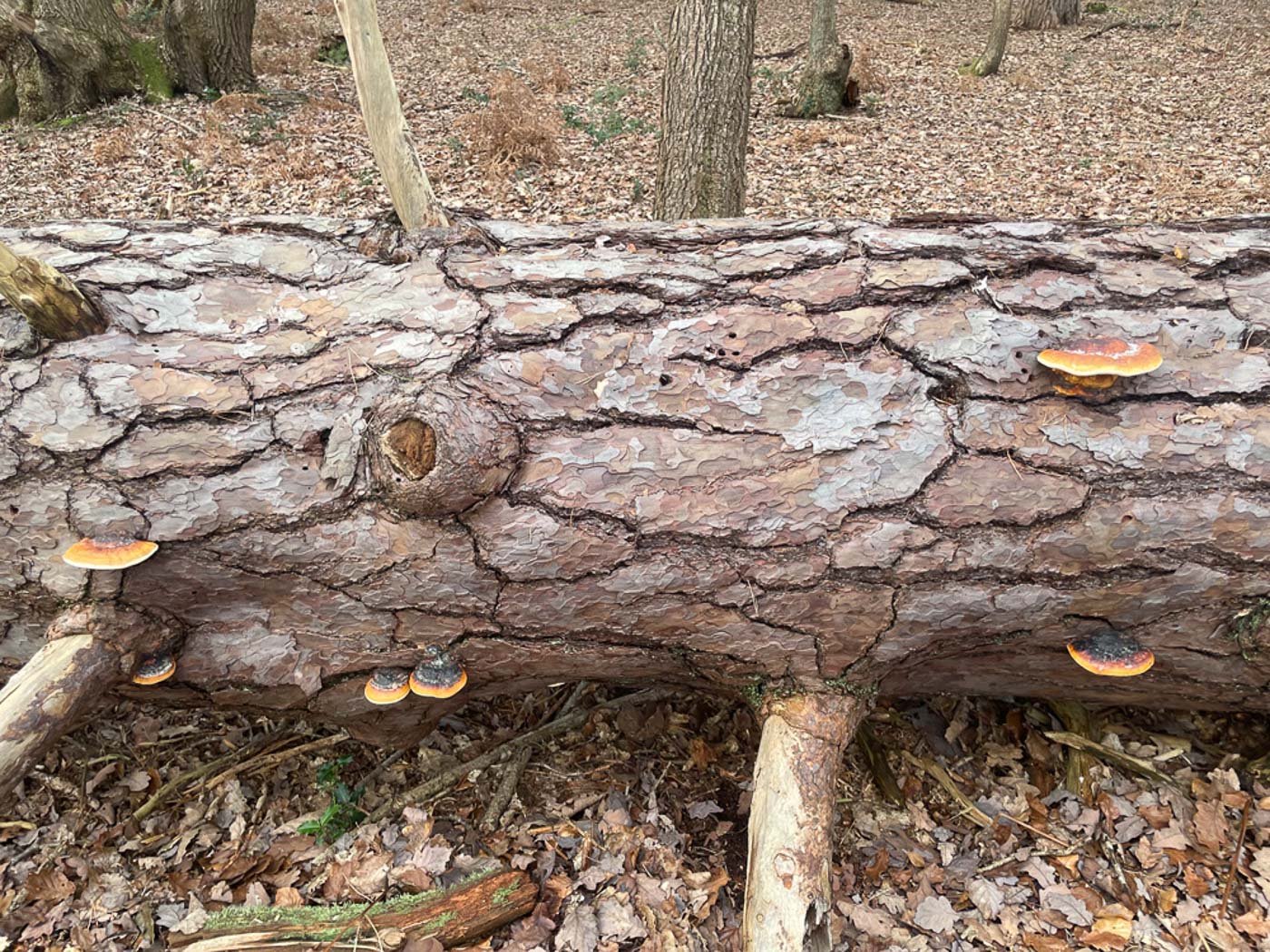
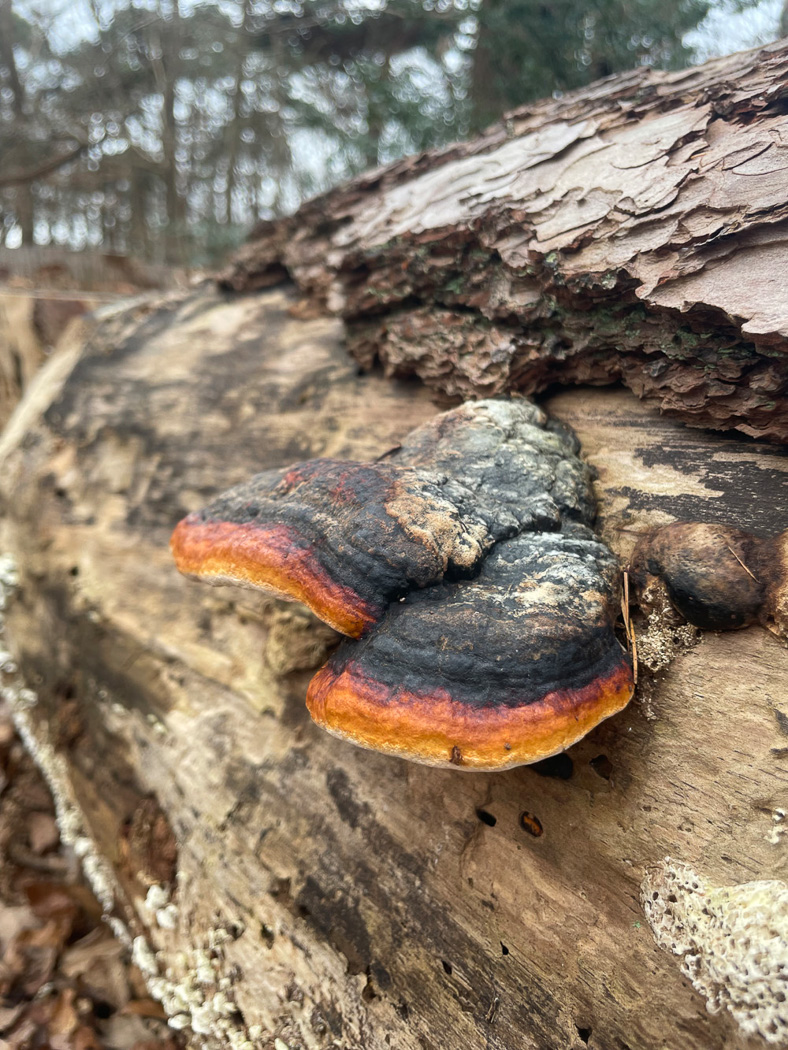
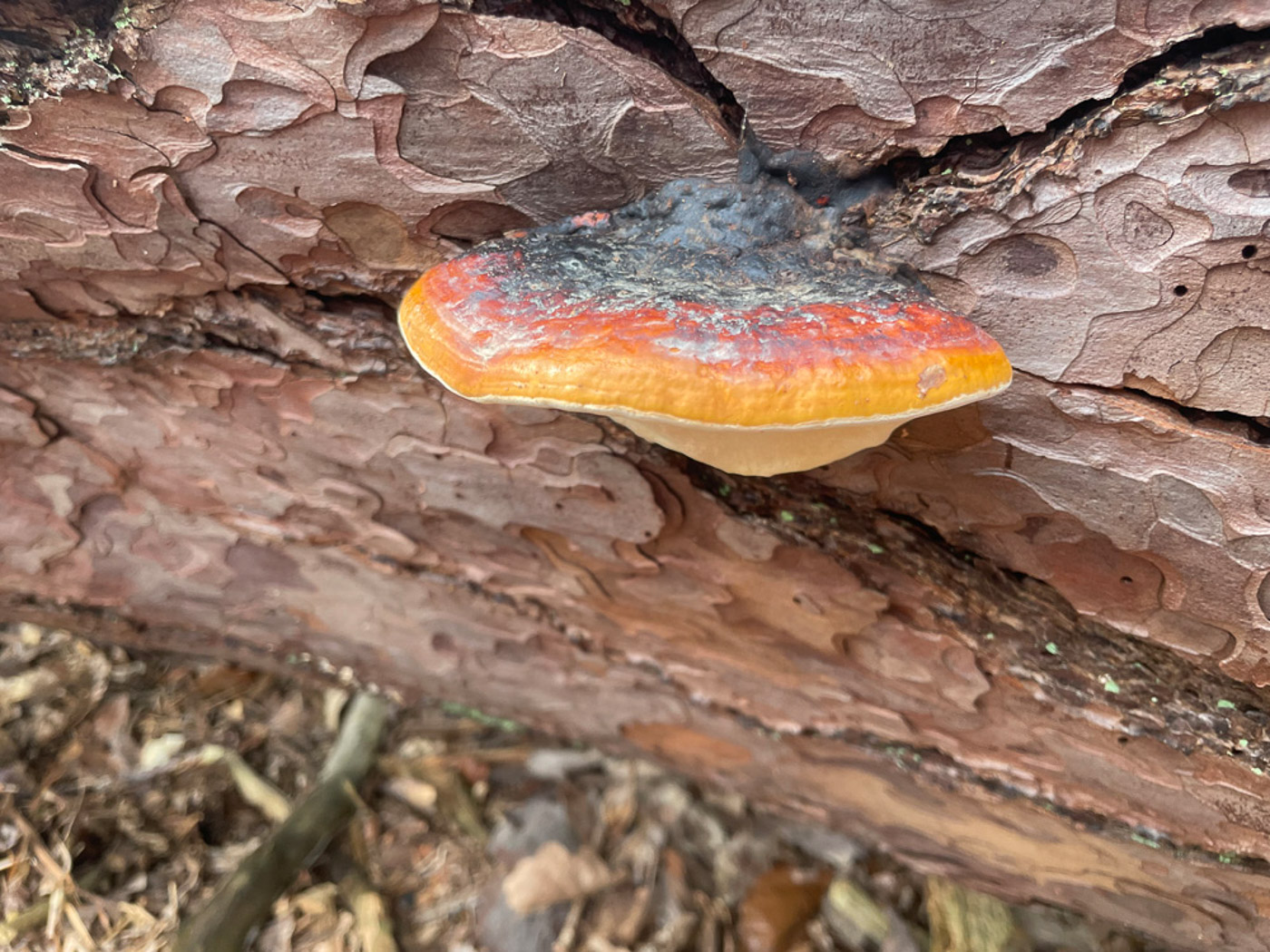 |
January 25th Fomitopsis pinicola (Red-belted Bracket) We have a growing number of examples of this interesting bracket which is becoming quite common, but despite its name all so far have been on Birch or Beech. Here, however, is an nice example found significantly on Pine at Burnham Beeches by Sarah Ebdon and Jesper Launder. (The photos are Sarah's). Previous finds |
January 24th 2024
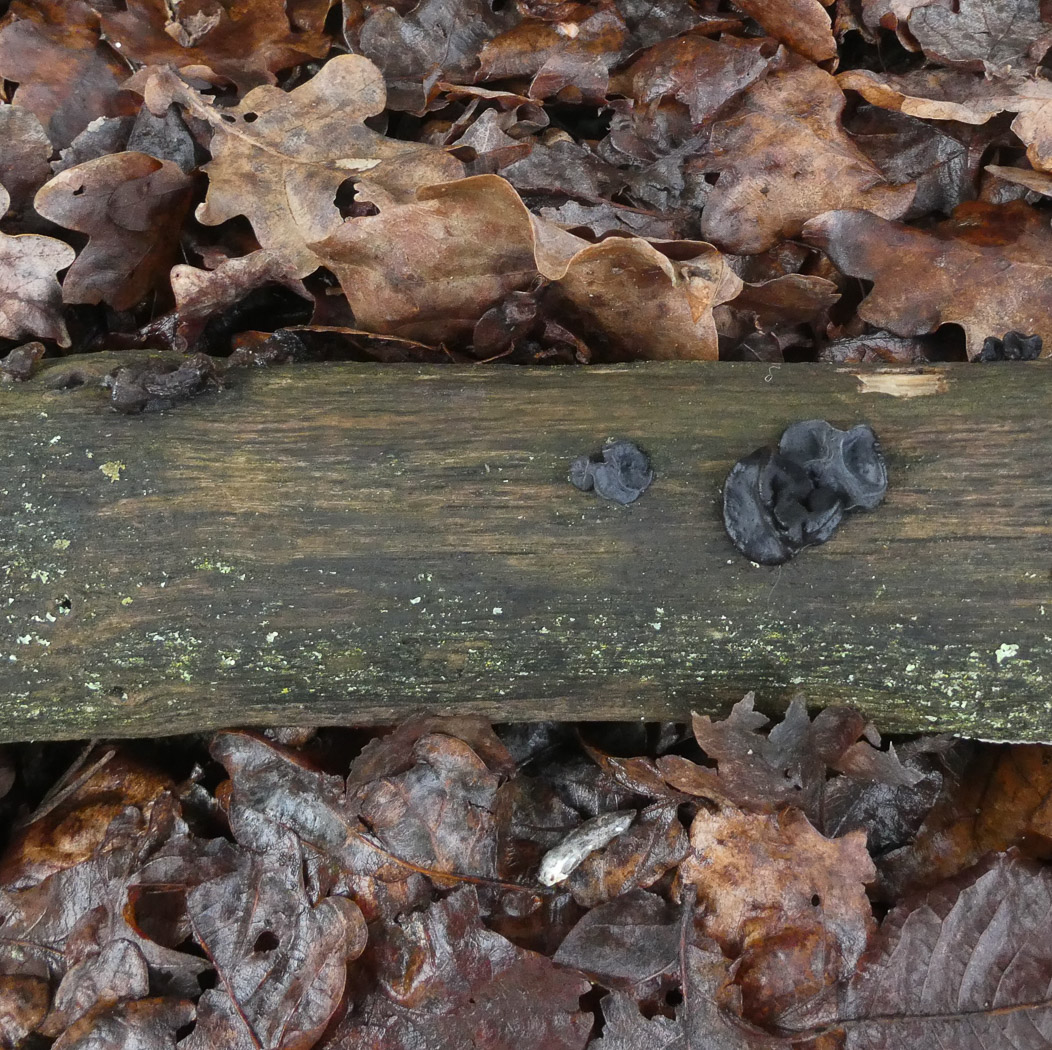
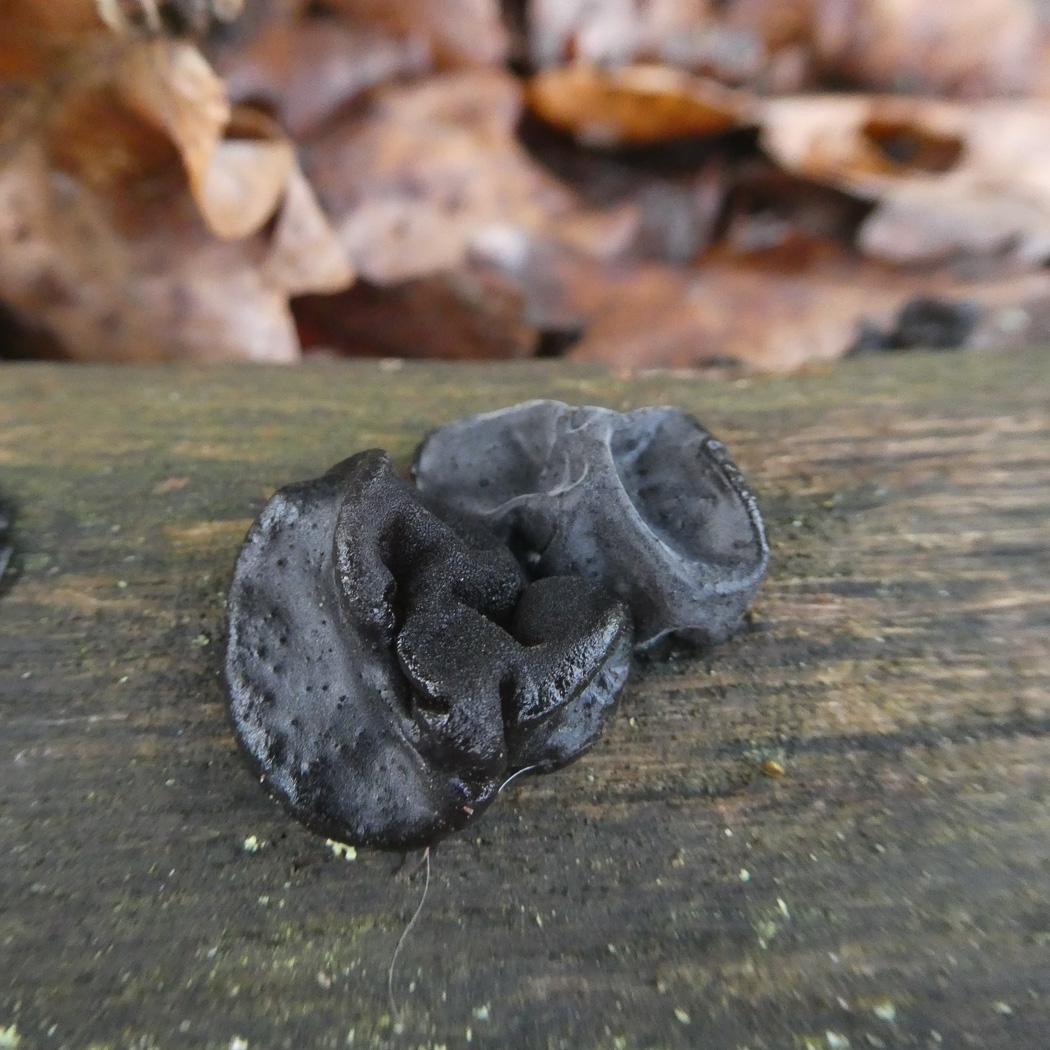
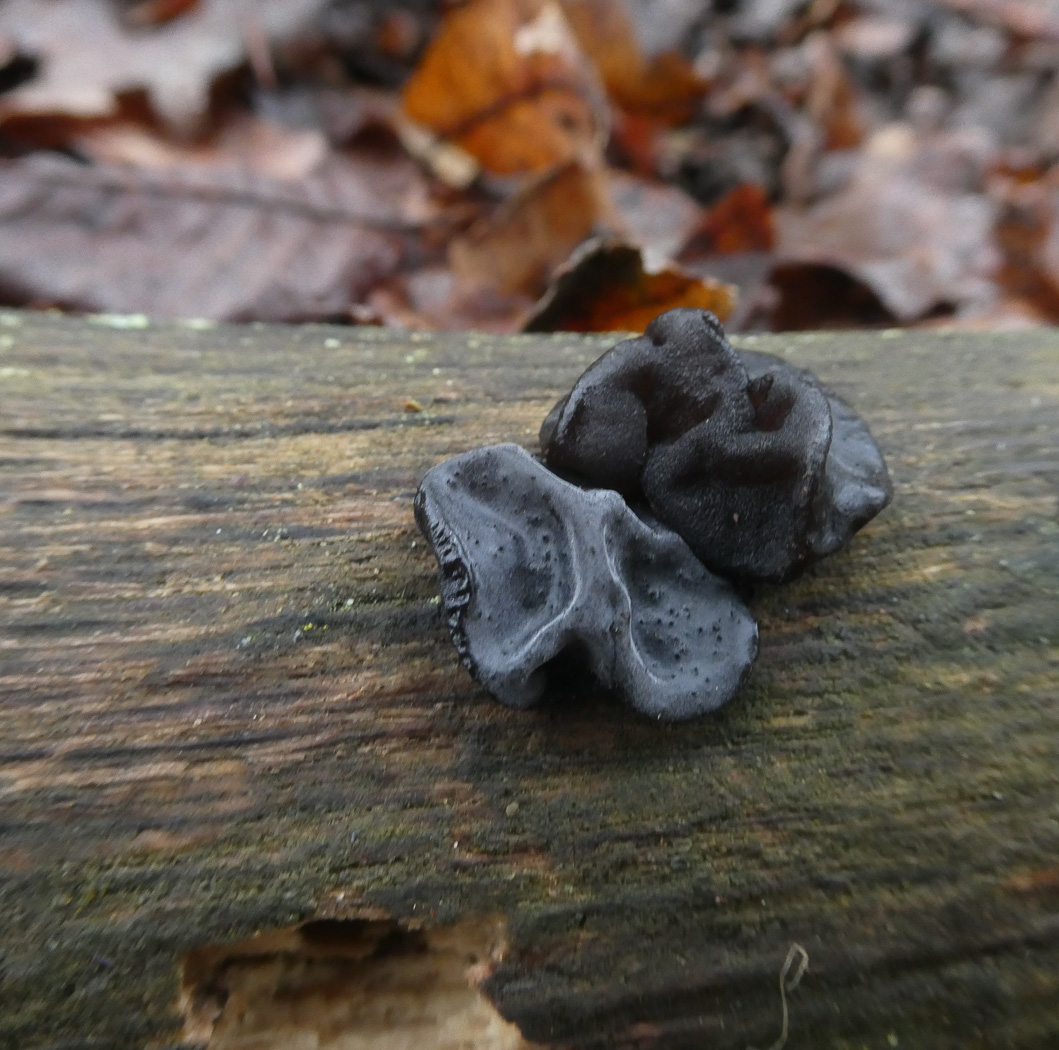 |
January 24th Exidia gladulosa (Witches' Butter) In Austenwood Common (nr Chalfont St. Peter) Jim Wills came across this Jelly Fungus on fallen bare deciduous wood. There being two very similar black species, he took it home and checked the spore size which confirmed his initial field ID. Both E. glandulosa and E. nigricans (previously plana) have the same slightly bumpy uneven 'warty' undersurface visible in places in both photos 2 and 3. E. glandulosa forms loose cushion-like structures (seen here) rather than the smaller more wrinkled 'brain-like' structures of E. plana (Warlock's Butter). NB Do not confuse either species with Bulgaria inquinans - similarly black and jelly-like but not in any way related) which leaves a black deposit on a finger when rubbed - not the case with Exidia. Previous finds |
January 15th 2024
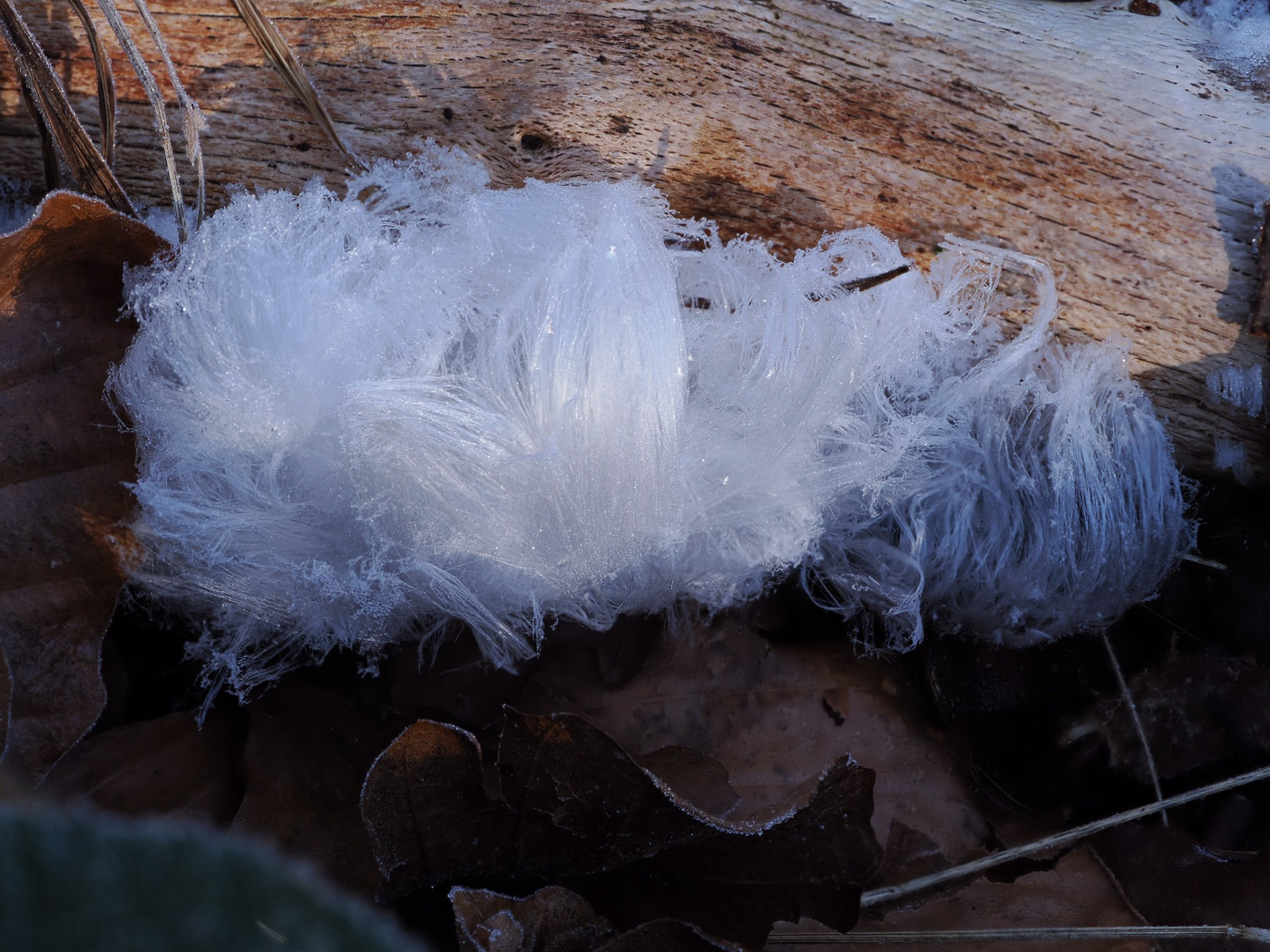
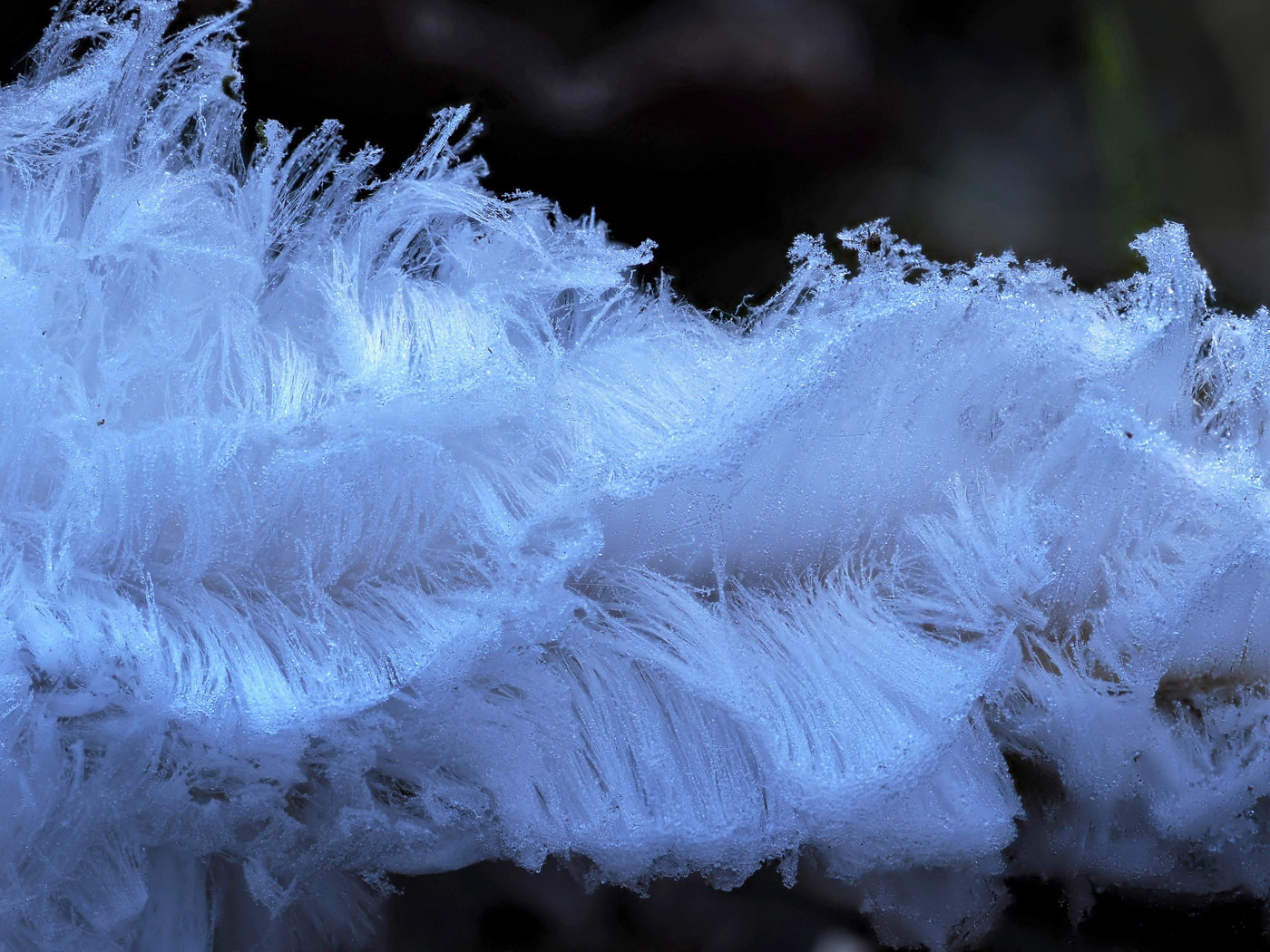 |
January 15th Exidiopsis effusa (Hair Ice) It's almost a year to the day when Claire Williams sent Penny her photos of this beautiful phenomenon found on fallen wood near Lane End. Suspecting the recent frosts would have triggered this to happen again, she and Sarah Ebdon returned to the site, finding it here again for the fourth year running. See last year's comments for further information. Previous finds |
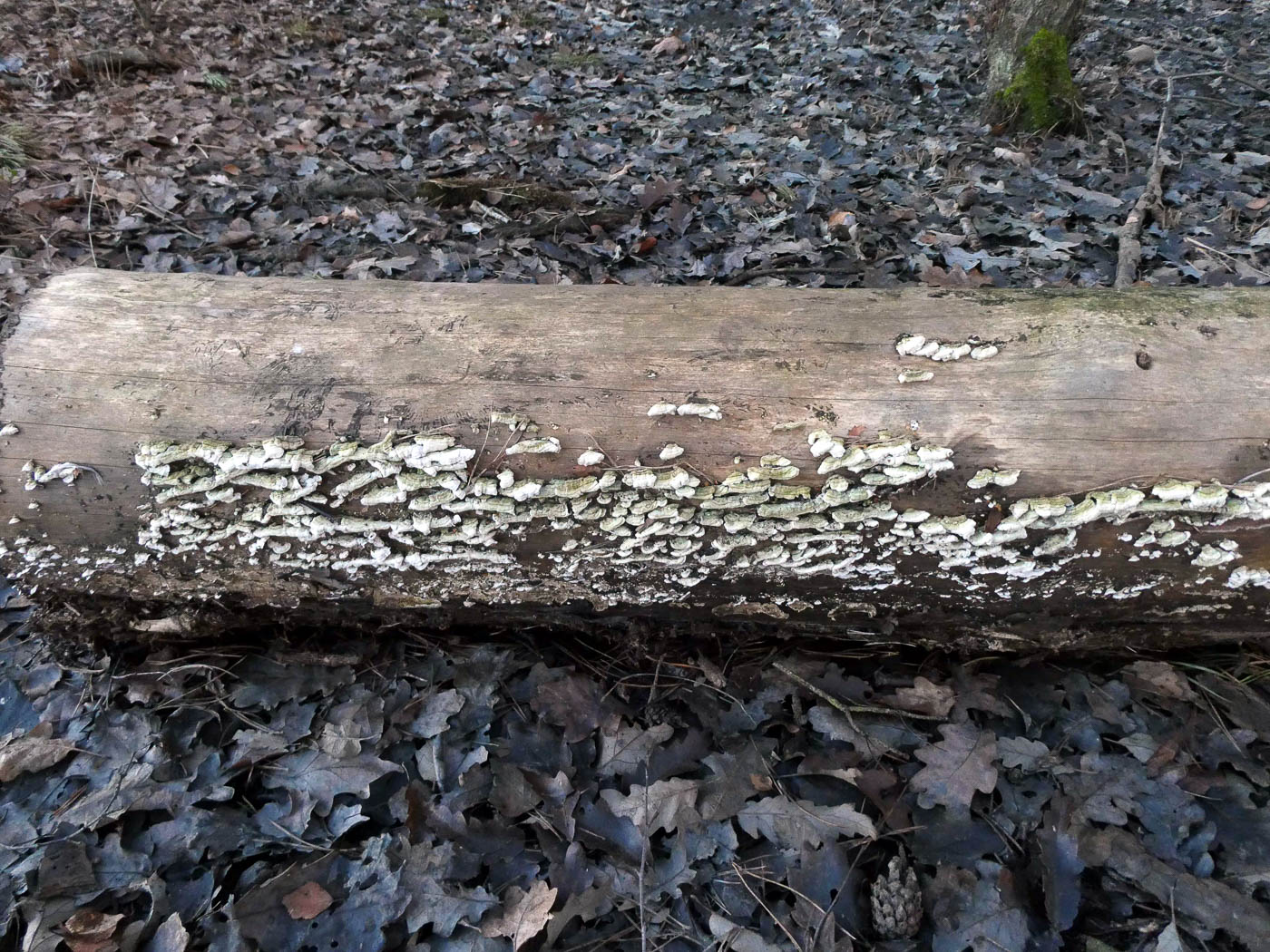
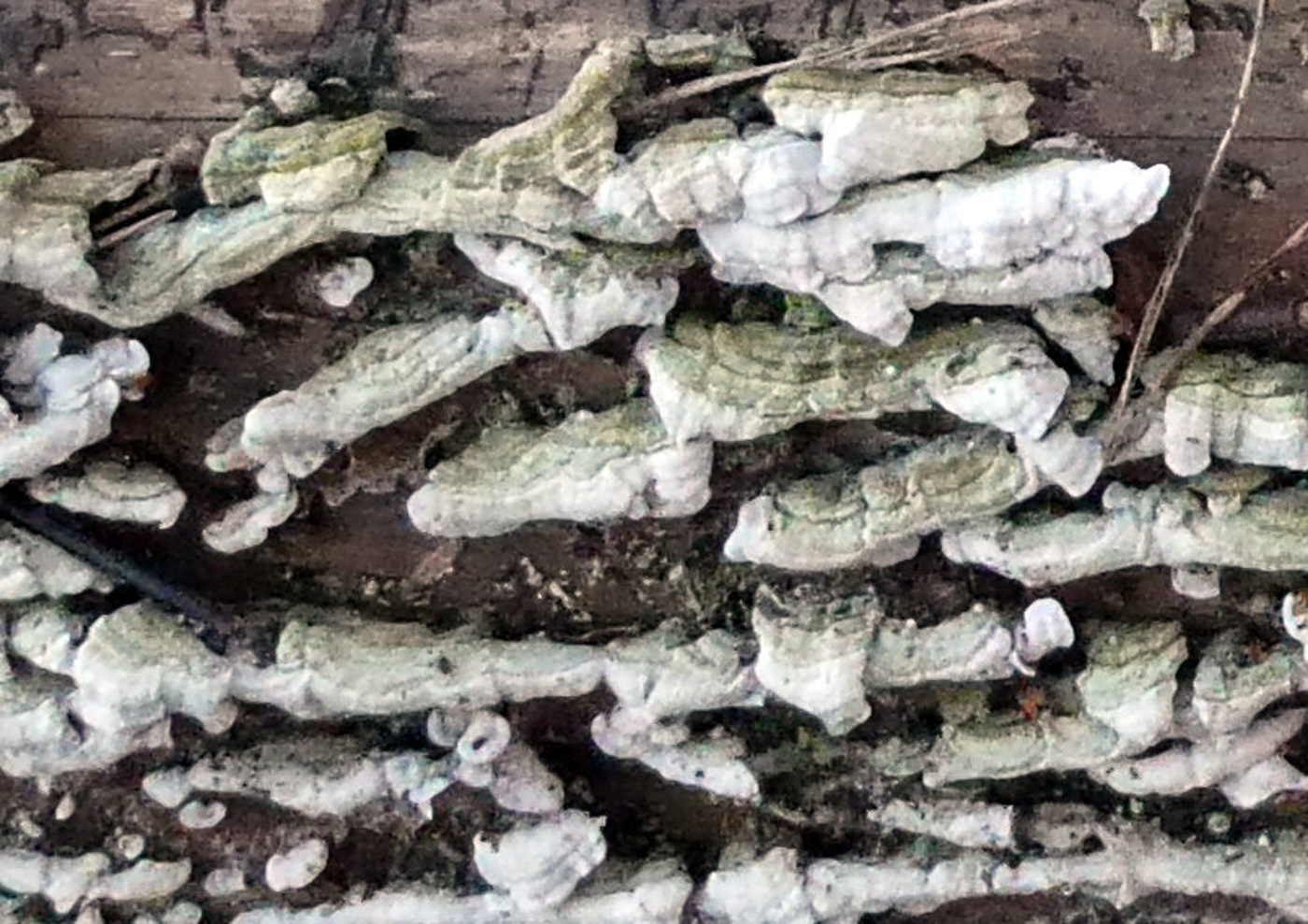
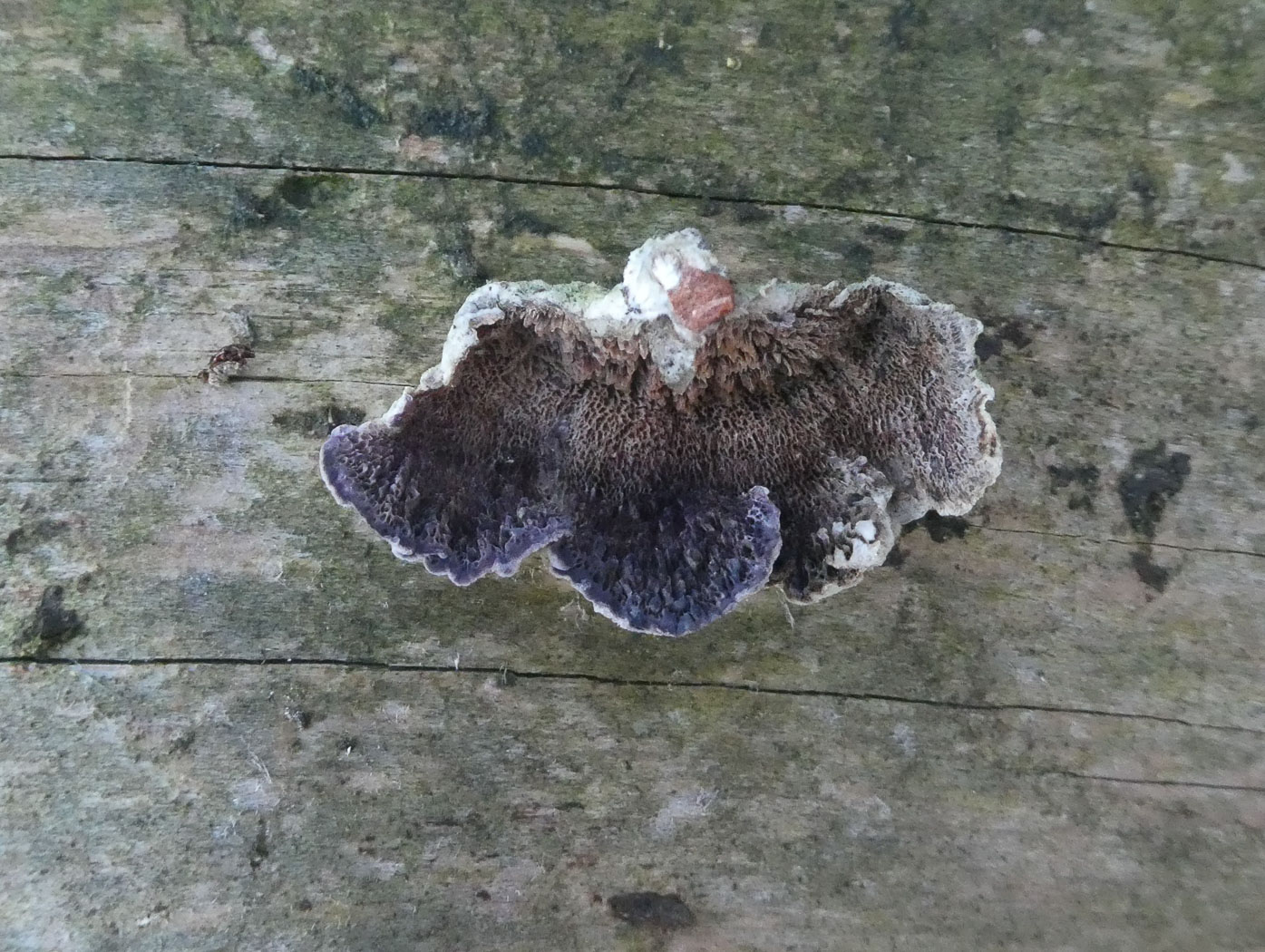 |
January 15th Trichaptum abietinum (Purplepore Bracket) At Stoke Common Jim Wills found this small and quite common bracket on bare felled Pine. It tends to form colonies of tight lines along the wood, becomes pale and washed out above but the pores beneath are rather jagged and irregular and distinctly violet, especially when fresh. It occurs only on conifer whereas the quite similar Chondrostereum purpureum (also violet underneath, inhabits deciduous wood. Previous finds |
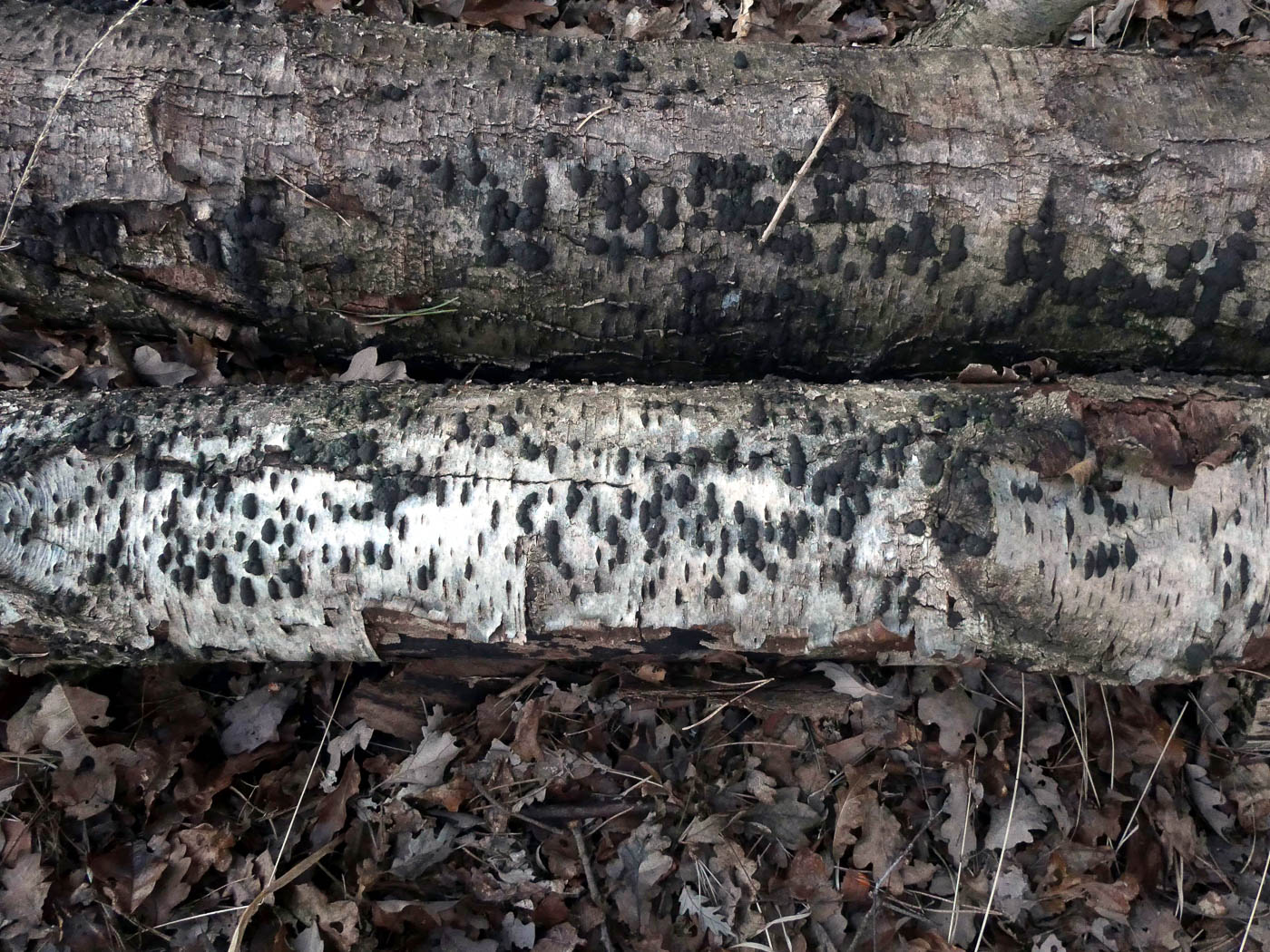
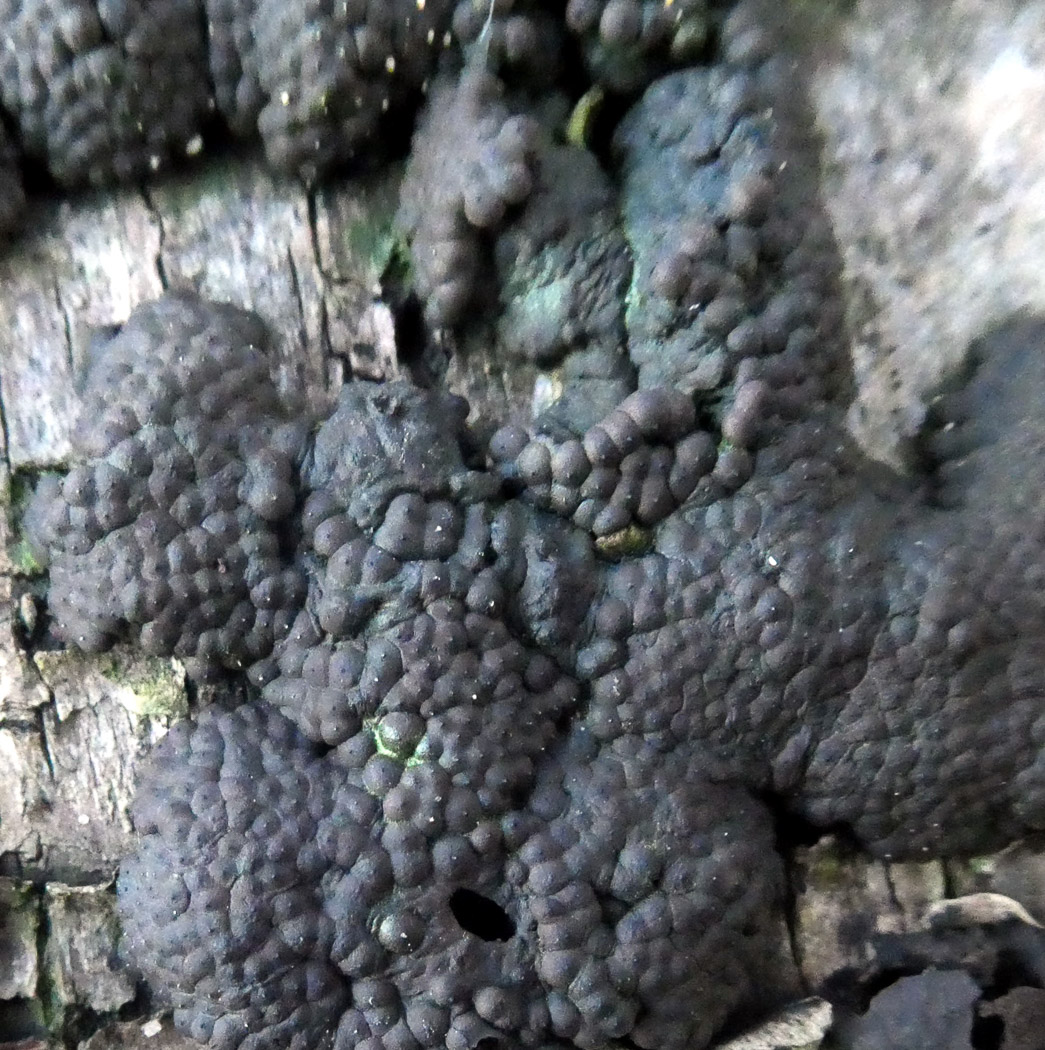 |
January 15th Jackrogersella multiformis (Birch Woodwart) At Stoke Common Jim Wills noticed this colony of Pyrenomycetes on felled Birch though was unsure of the species, suggesting it might be J. cohaerens. Penny, however, questioned this as his photos matched exactly her concept of J. multiformis (previously in genus Annulohypoxylon and before that in Hypoxylon). Checking a variety of sources confirmed that J. cohaerens occurs on Beech along with H. fragiforme whereas today's species is very common on Birch, occasionally on Alder. Typical is the somewhat elongated rather than round individual fruitbodies as seen here in photo 1. Previous finds |
January 14th 2024
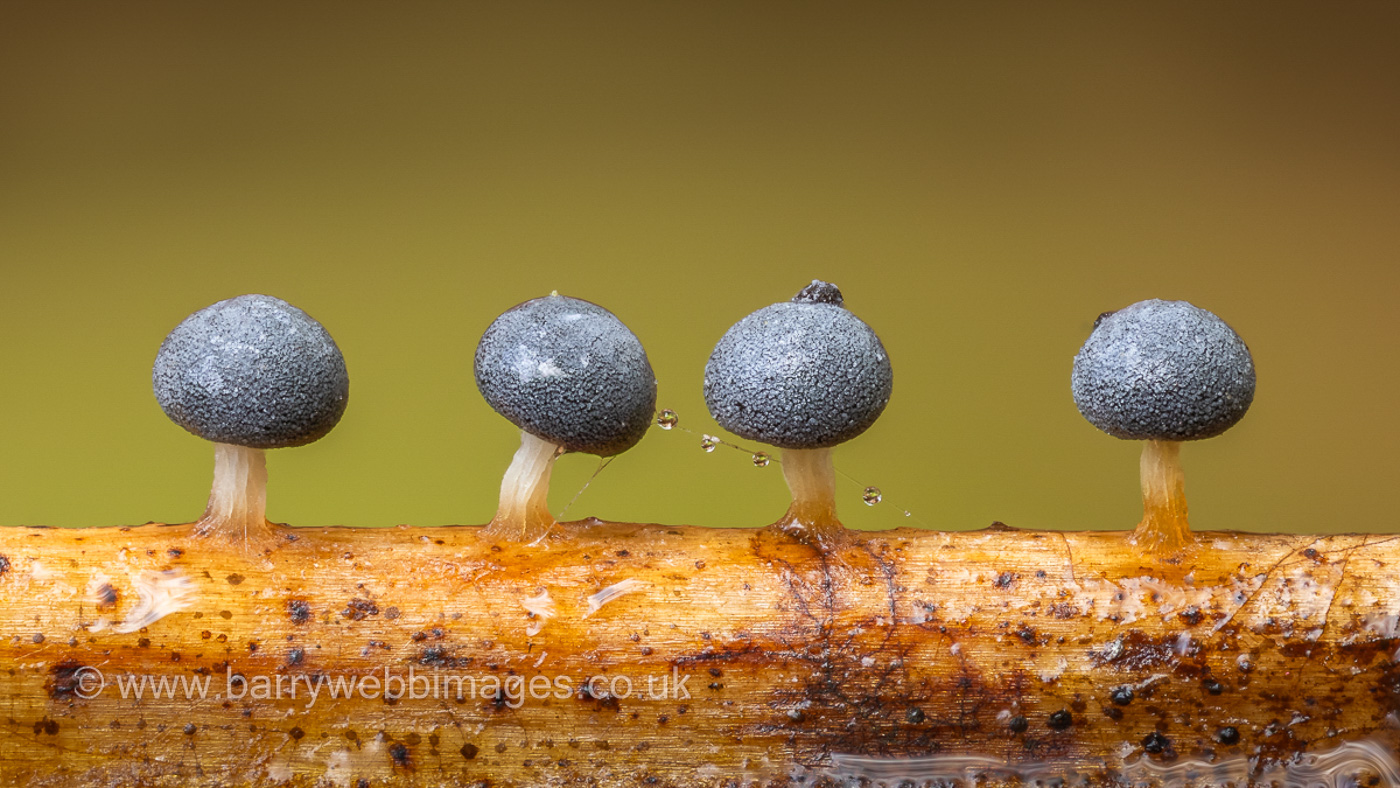 |
January 14th Didymium squamulosum (a Slime Mould with no common name) In Hodgemoor Wood Barry Webb found this attractive squat little cluster under Holly whilst searching for anything tiny and fungal etc lurking there. This is a very common species found in rotting damp leaf litter, typified by its short stout white stalk contrasting with its darker subglobose head. (Note the trail of tiny droplets adhering to the spiders web between the two central fruiting bodies!) Previous finds |
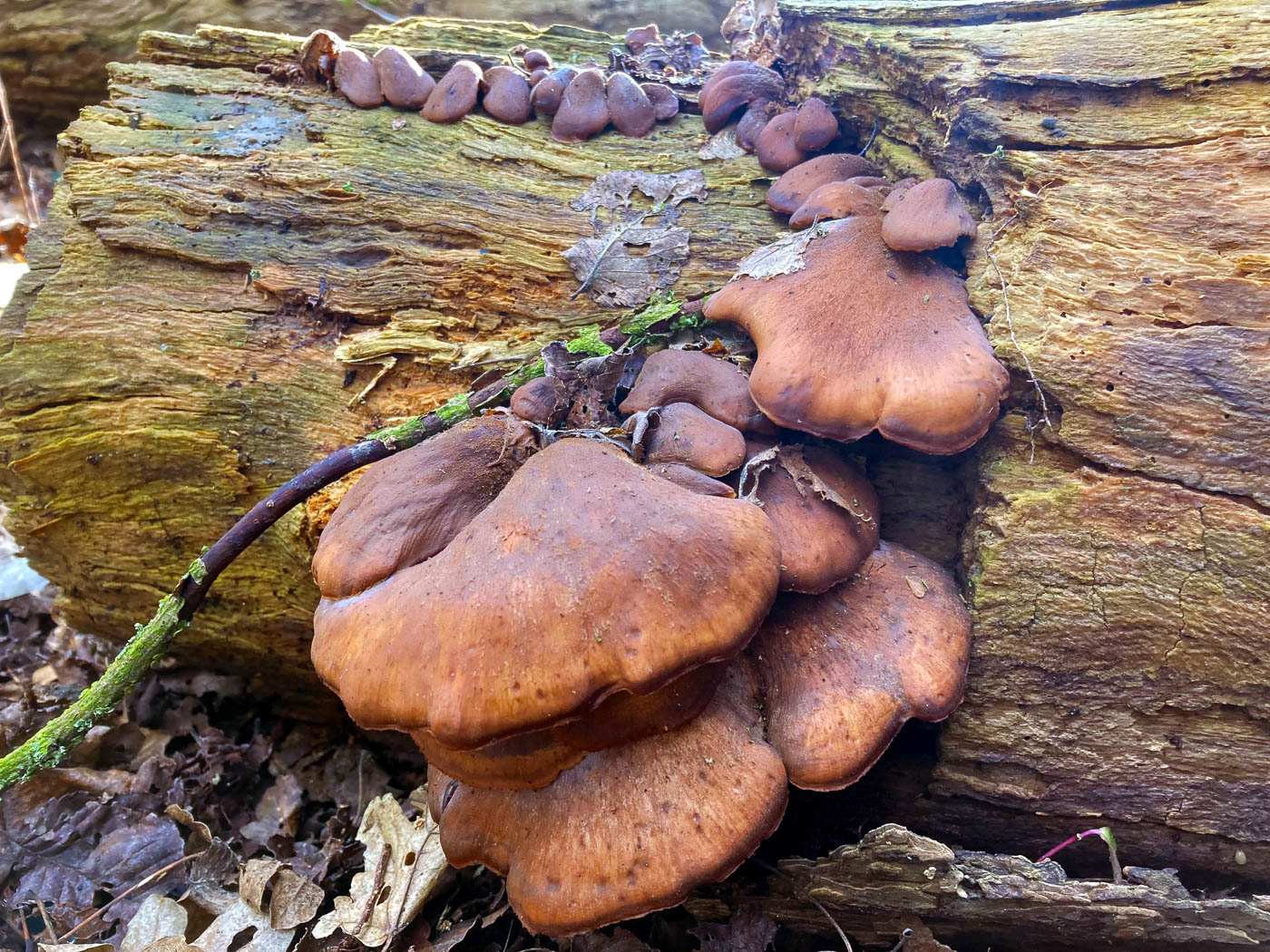
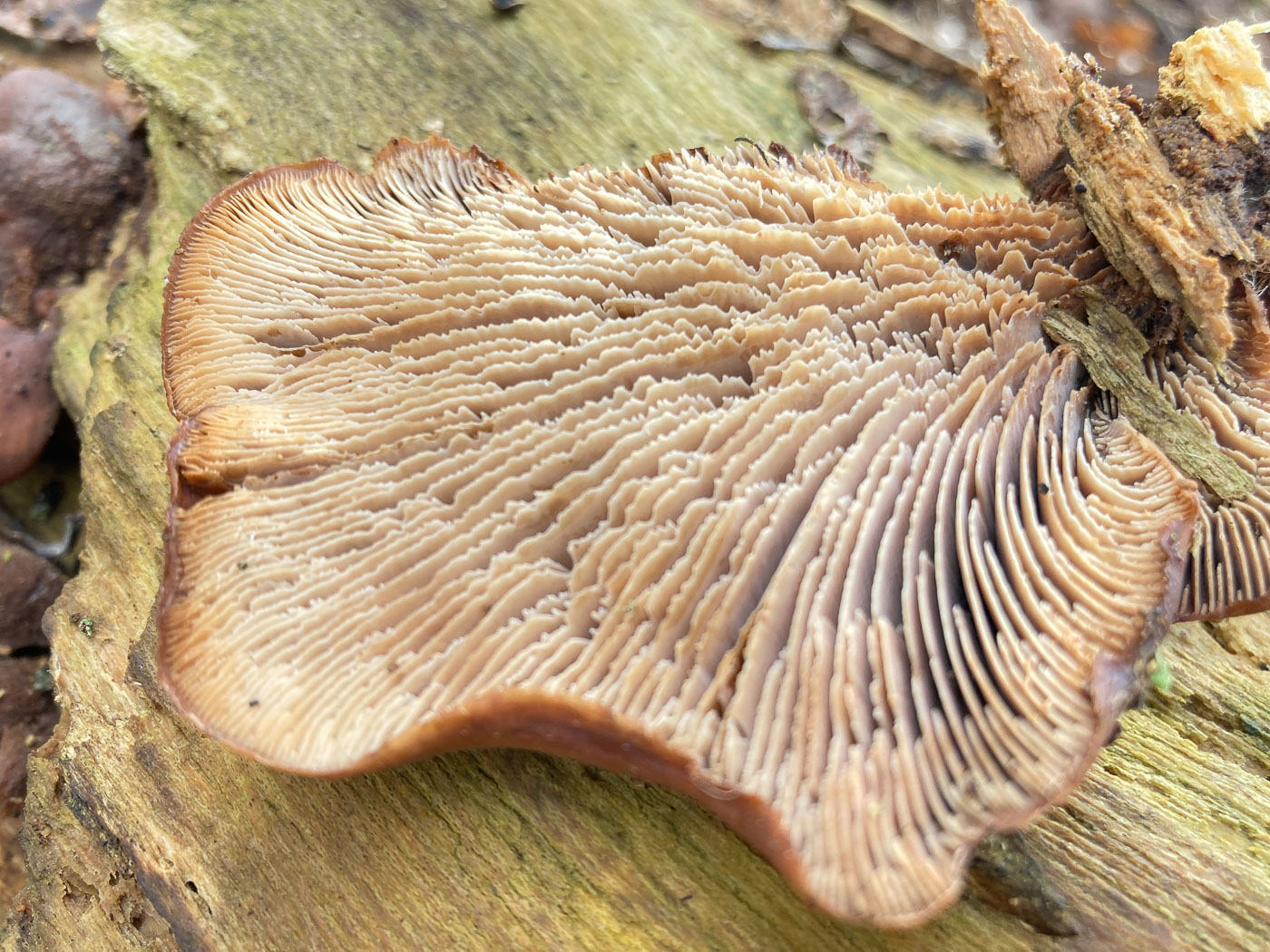
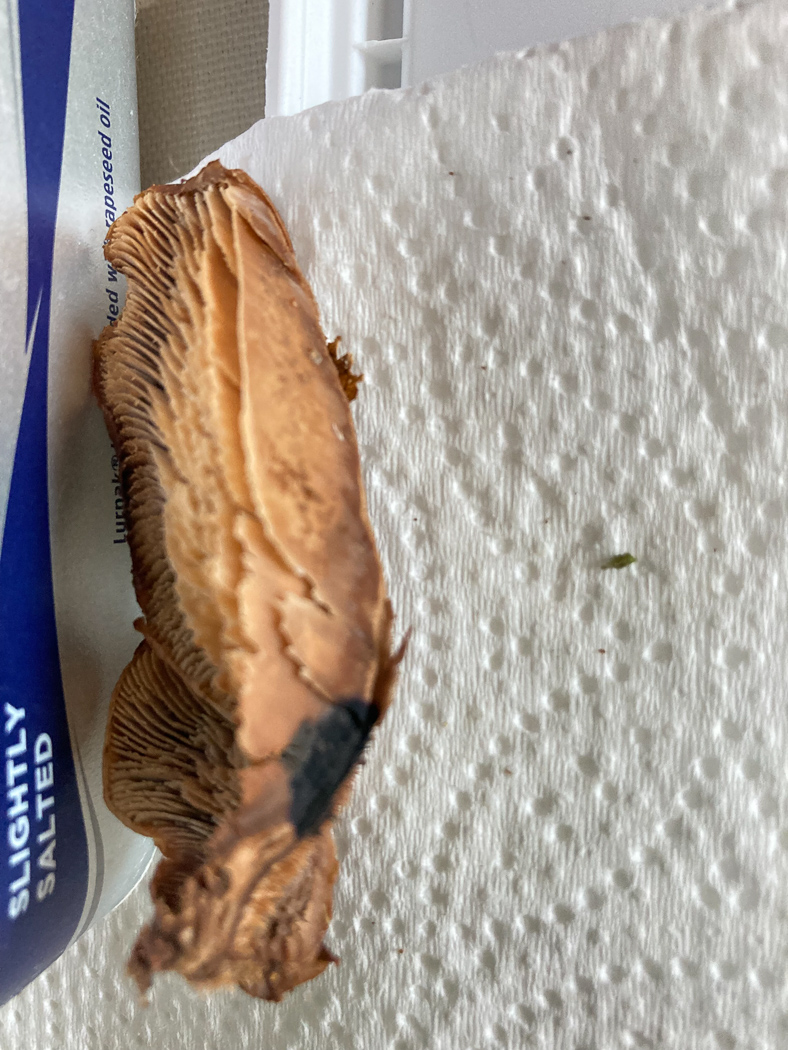 |
January 14th Lentinellus ursinus (Bear Cockleshell) In North Burnham Russell Ness found this attractive cluster on a felled dead Elm trunk and identified it using various sources which entailed checking both spores and flesh which blacken strongly with Melzers reagent (photo 3) and help to separate it from other species. This is a rare mushroom though similar at first glance to Pleurotus but the sharp saw-edged gills (photo 2) immediately single it out as belonging to genus Lentinellus. We have just 4 previous county records. Previous finds |
January 13th 2024

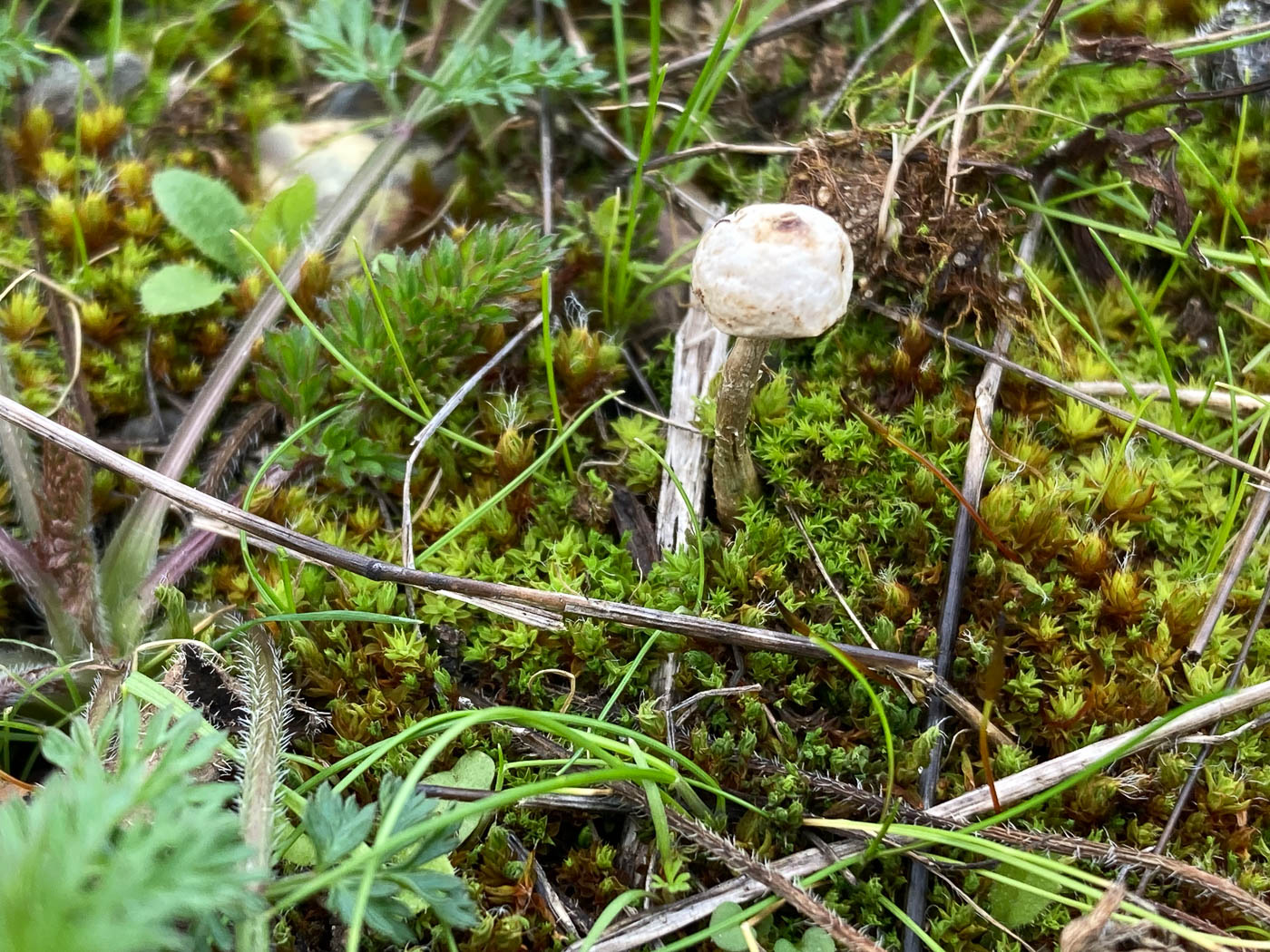
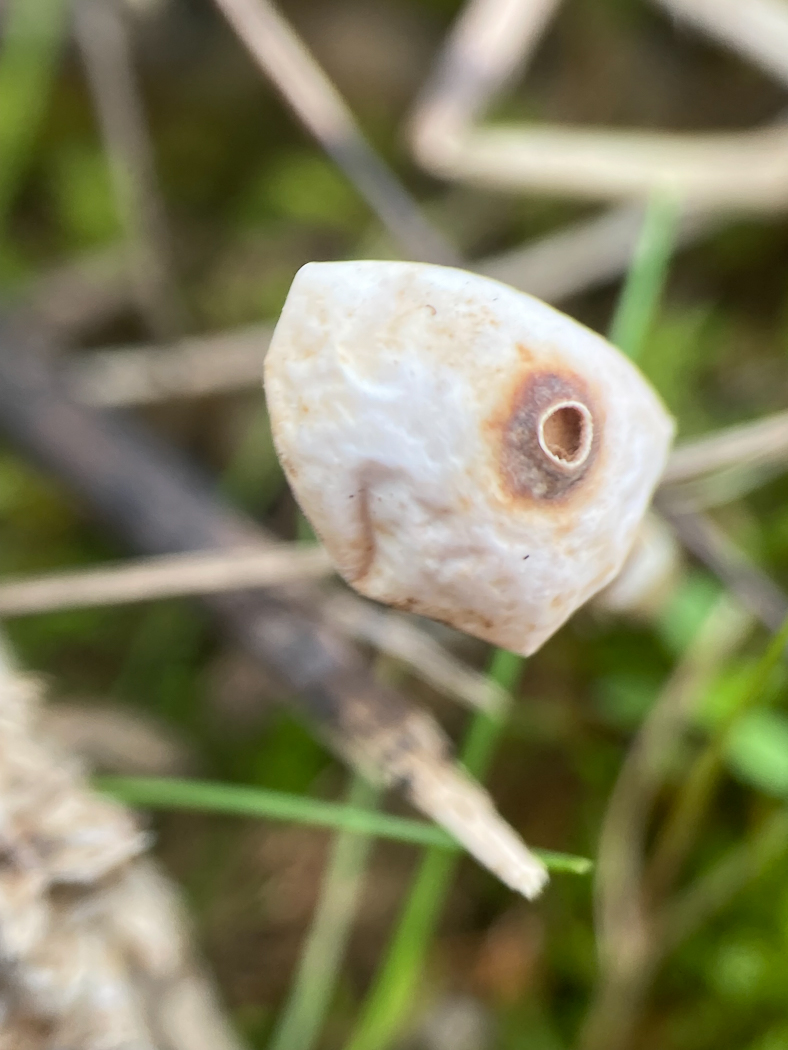 |
January 13th Tulostoma brumale (Winter Stalkball) On an arid gravel bank at Dorney Wetlands Russell Ness spotted these tiny fungi amongst moss, with 25 counted at one spot and a further 11 at another. Each 'head' is less than 1 cm across and spores are puffed out of the central opening when mature in the same way as in puffballs. The species was new to the county from Gerrards Cross in November when found by Jesper Launder, so Russell's find is our second county record. Previous finds |
January 12th 2024
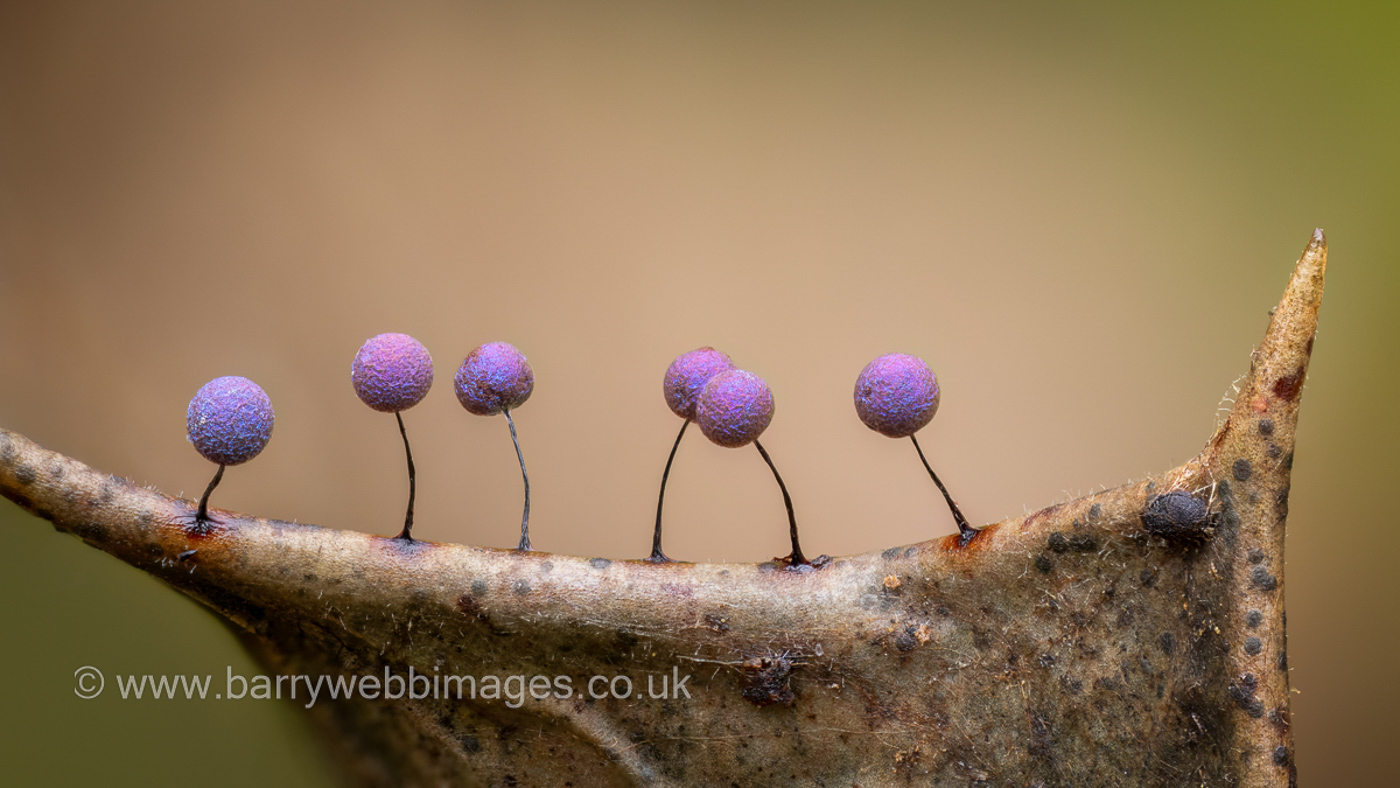 |
January 12th Lamproderma scintillans (a Slime Mould with no common name) In Hodgemoor Wood Barry Webb found this attractive little cluster whilst searching for anything tiny under Holly. The Holly leaf here clearly gives a good sense of perspective - the whole fruiting body being smaller than the two prickles visible either end! The species name describes well its iridescent metallic glint. Not rare, its miniscule size makes the species so easy to overlook unless you specialise in such tiny objects, as does Barry! We now have five county records. Previous finds |
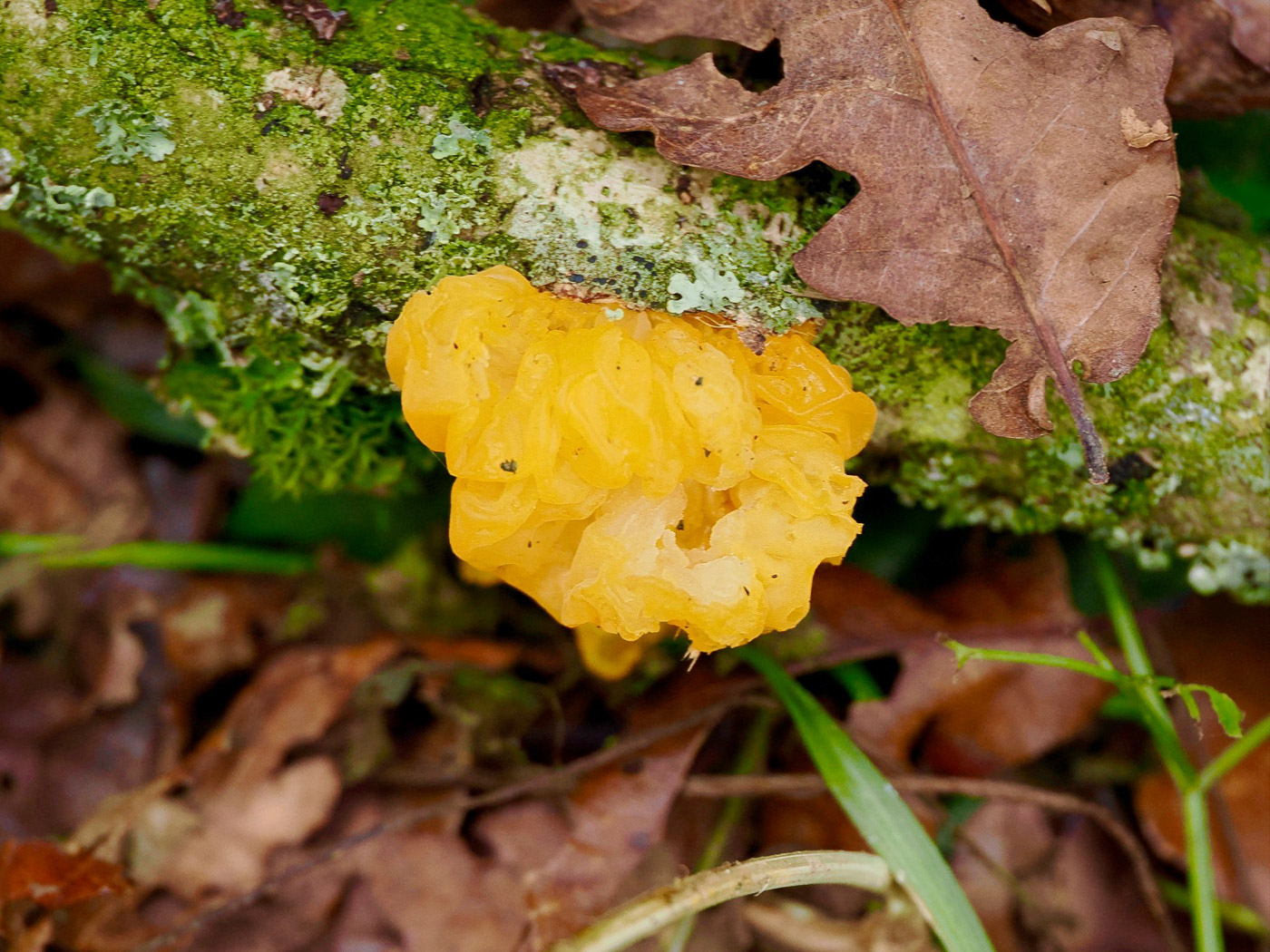 |
January 12th Tremella mesenterica (Yellow Brain) In Naphill Common on a fallen mossy stick (likely to be Oak) Claire Williams noticed this brightly colour jelly fungus. Often fruiting in winter, this is a common and distinctive species which is unlikely to be confused with anything else. Previous finds |
January 11th 2024
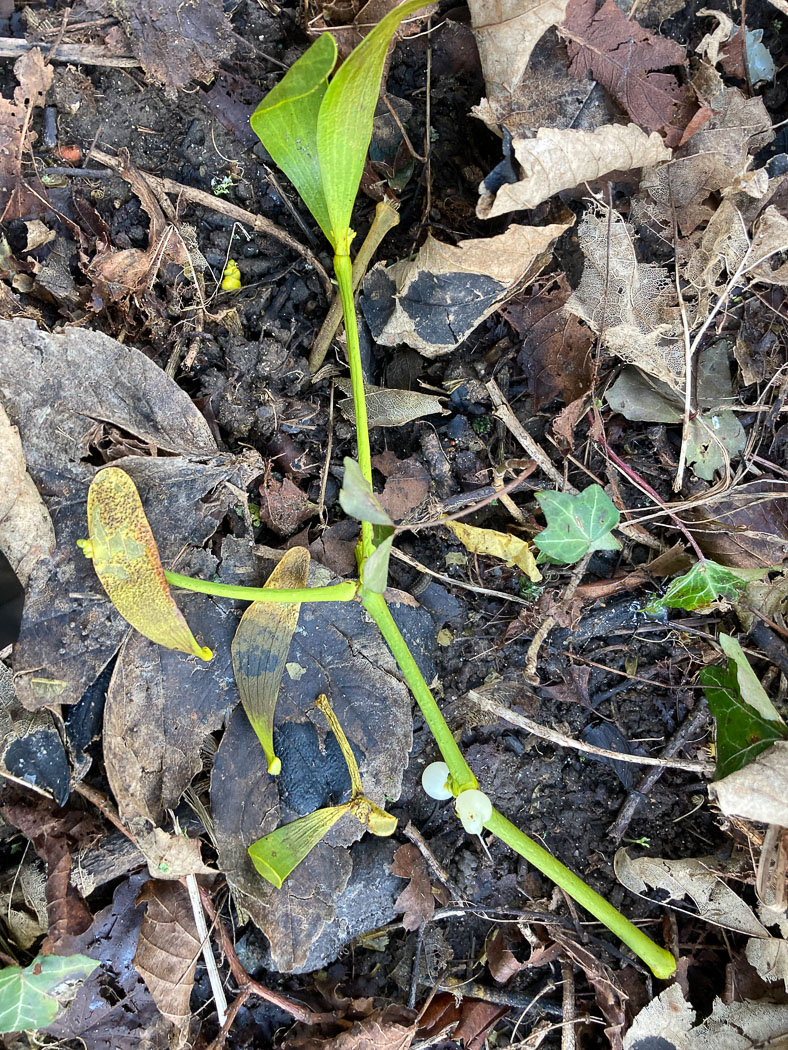
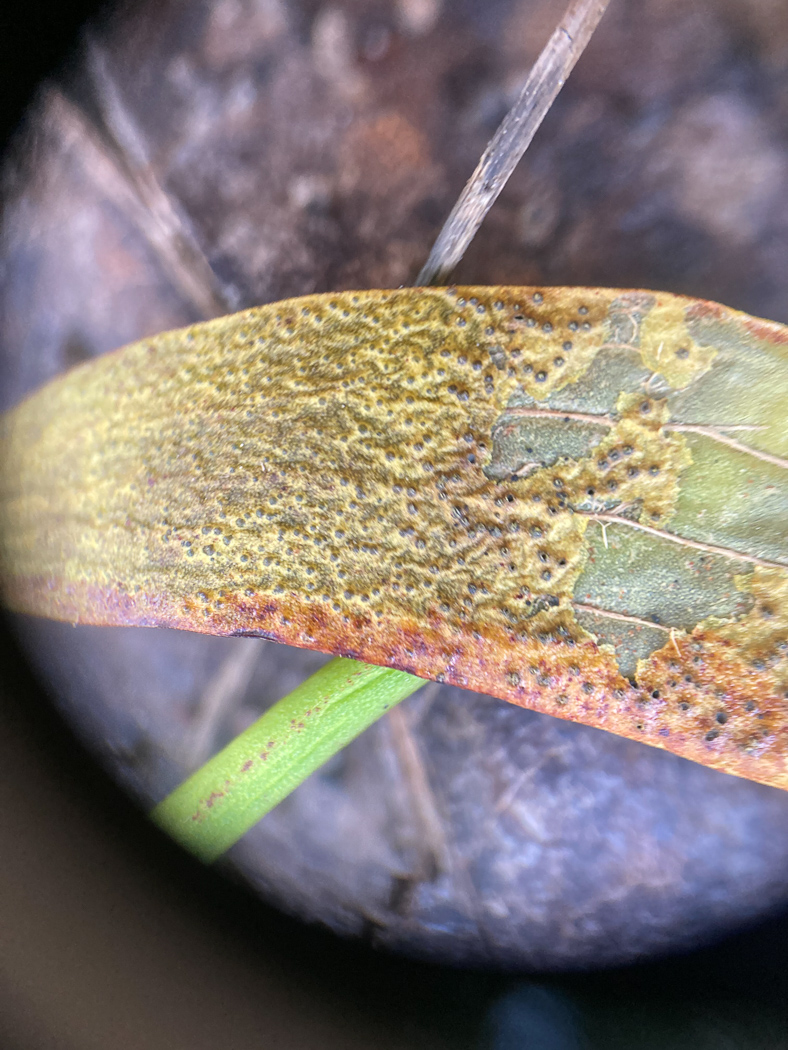
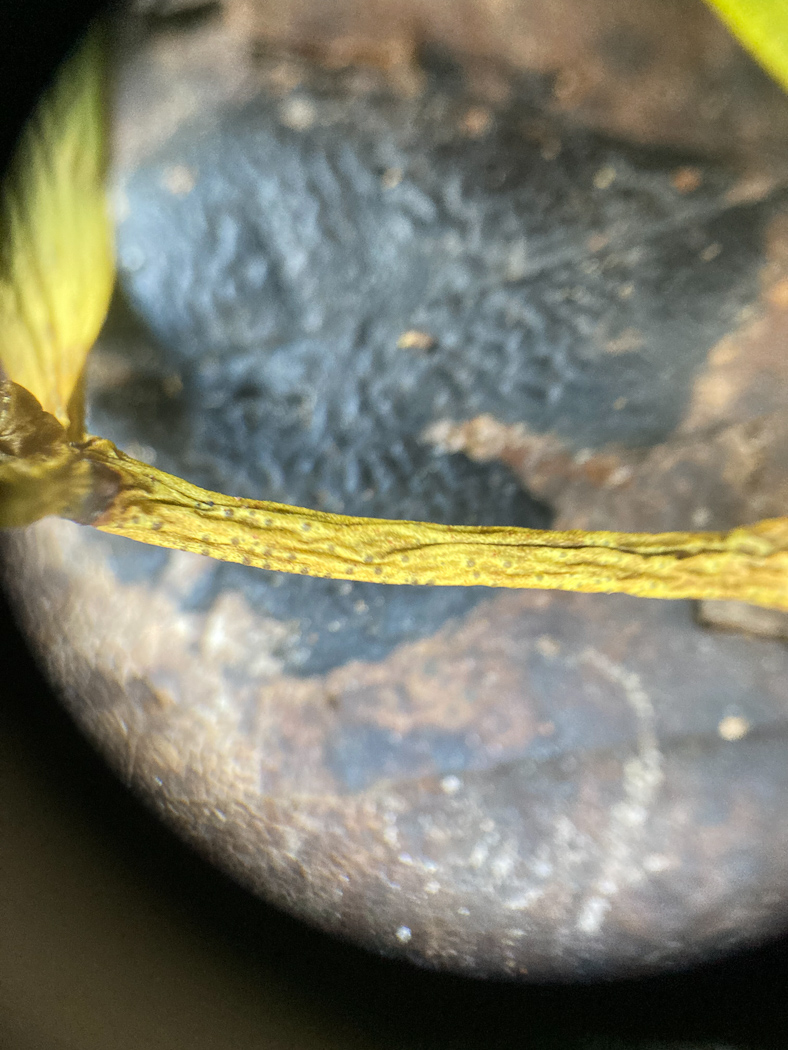 |
January 11th Botryosphaeria visci (an Ascomycete with no common name) In South Burnham Russell Ness found this seldom recorded species on fallen Mistletoe under some Limes and identified it using the website Plant Parasites of Europe - the species is not included in Ellis & Ellis. He comments on the striking speckled effect and yellowing of the host and notes that he first found it here back in February 2023, also at two other sites during December 2023, pointing to the likelihood that it is not that rare but just goes unnoticed. This is a new record for the county and for Finds. |
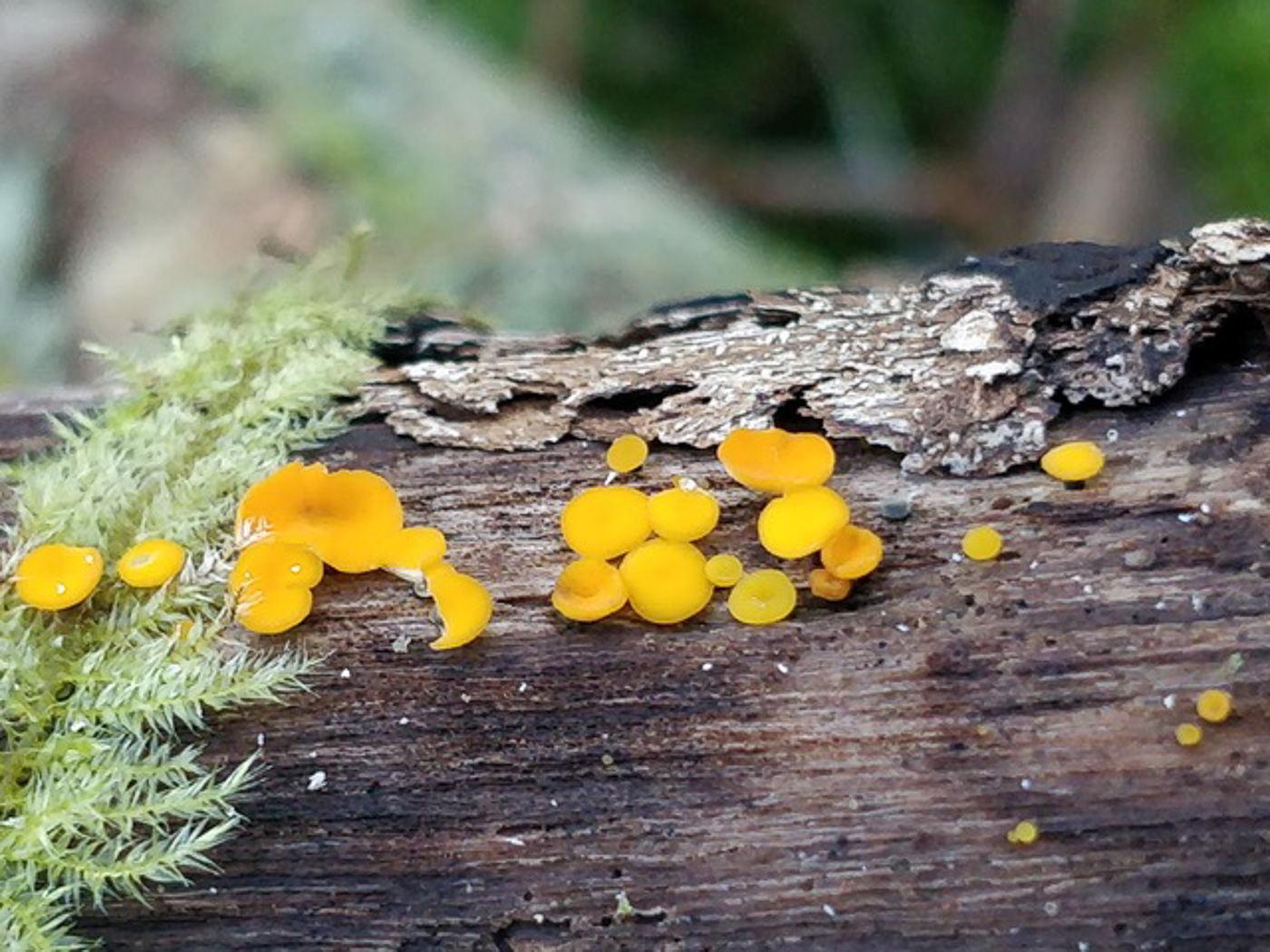
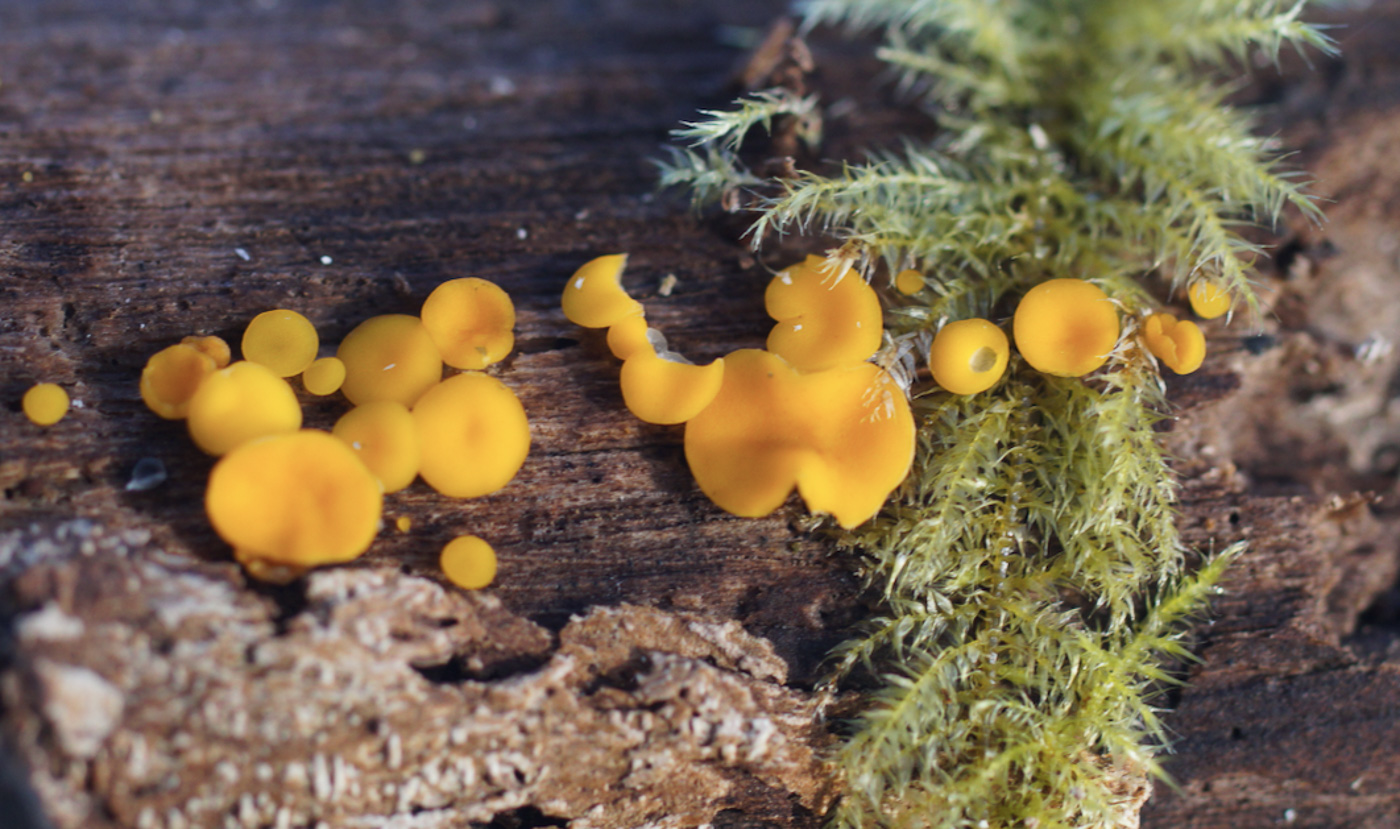
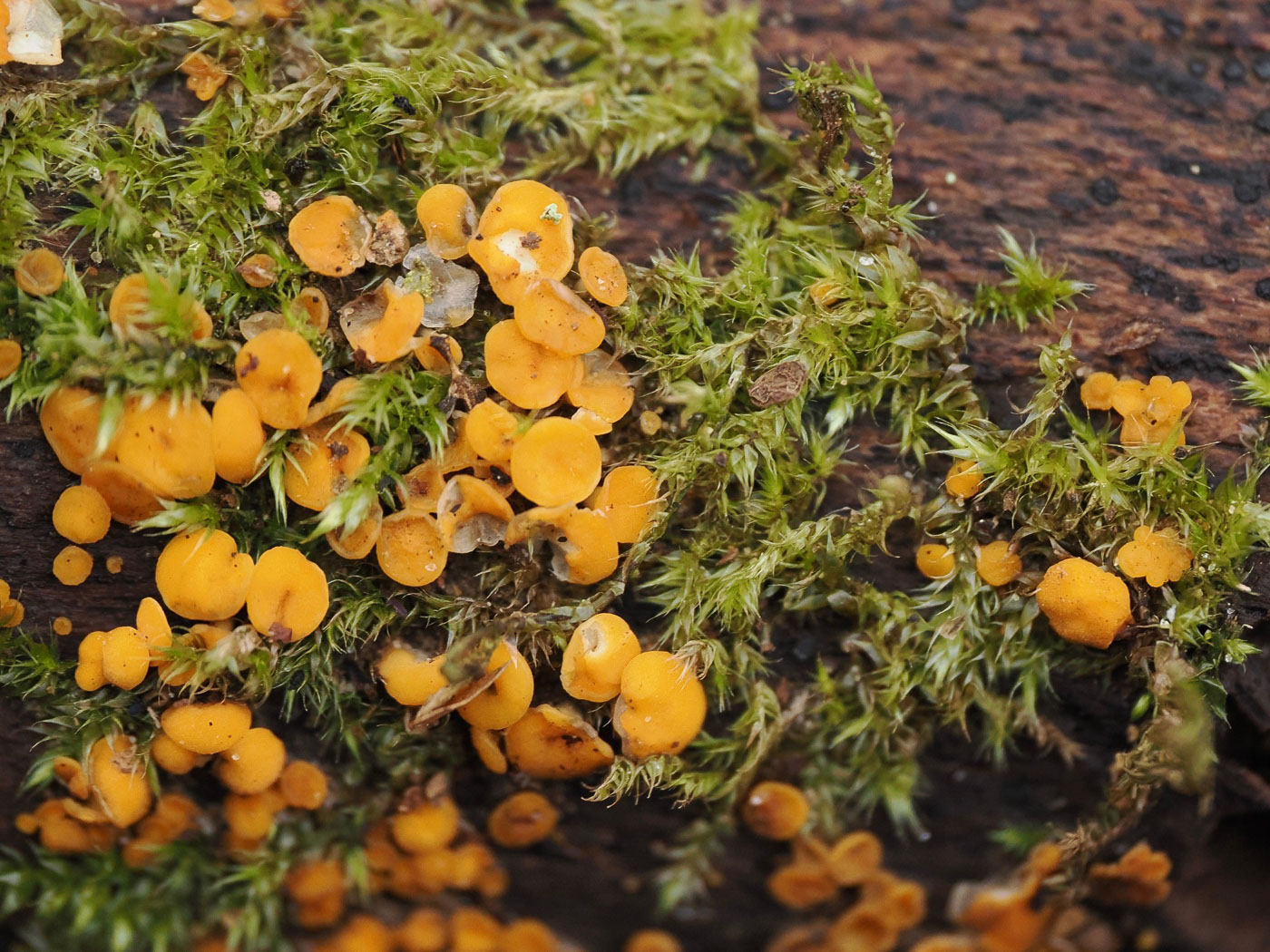 |
January 11th Calycina citrina (Lemon Disco) In Salden Wood Bob Simpson noticed this colony of tiny yellow discs on a deciduous log and sent photo 1 to Penny for identification. She emailed him a copy of the microscopic details to check but suspected it would be this very common species, better known under its previous genus name Bisporella. A day later Claire Williams found what she thought was this same species in Downley Common (photo 2 - though not checked microscopically). Two days later Bob then collected further material (photo 3) which he checked and which matched microscopically, confirming the ID. Previous finds |
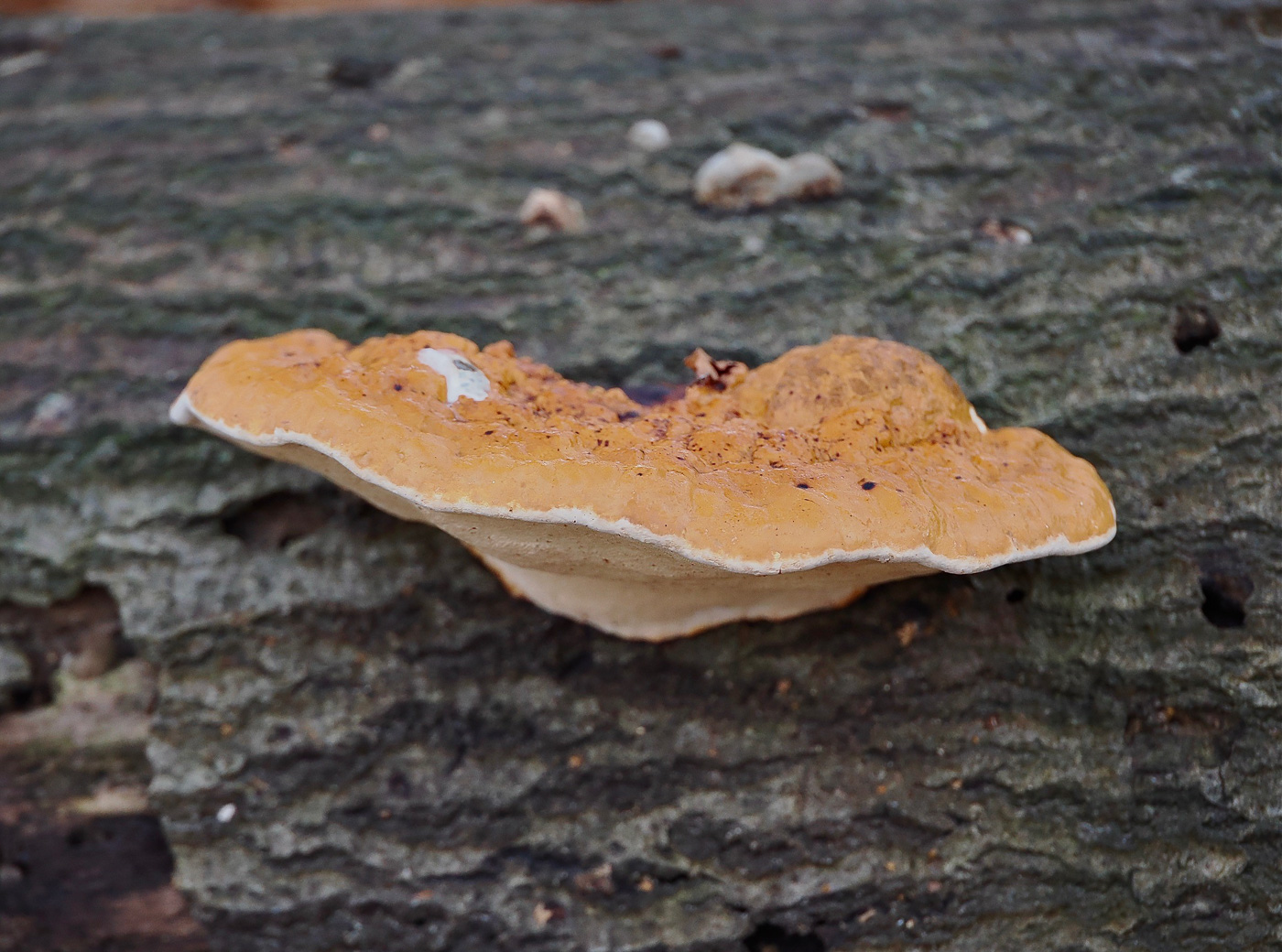
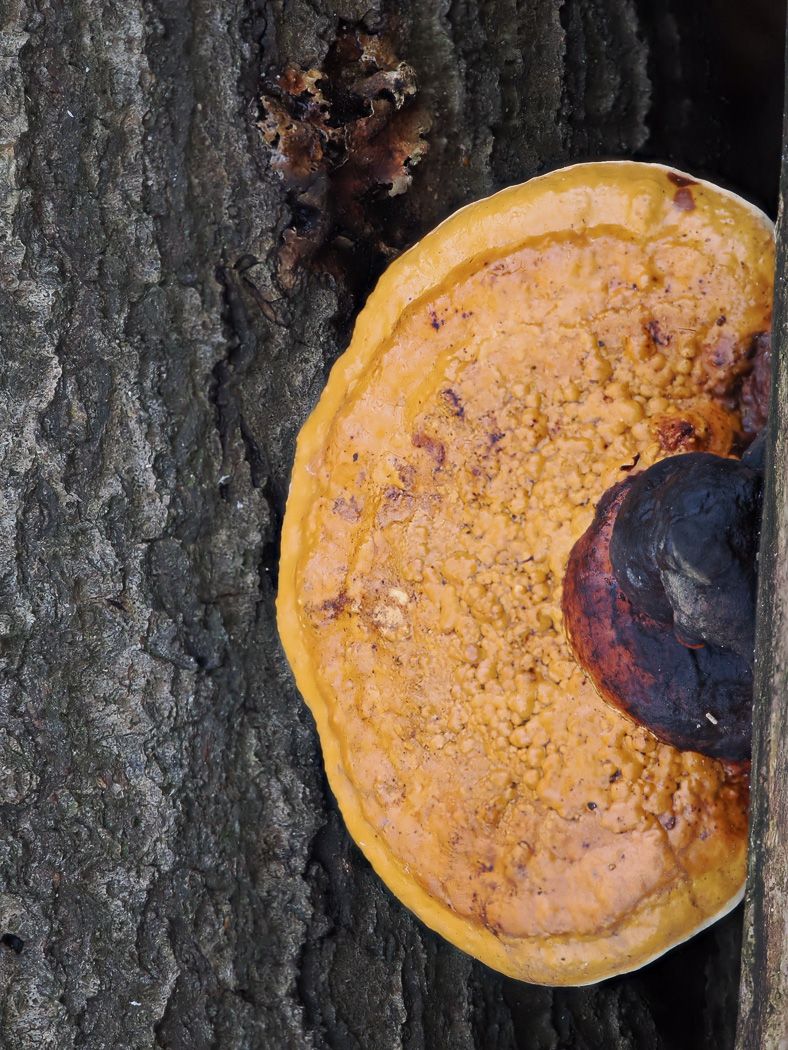 |
January 11th Fomitopsis pinicola (Red-belted Bracket) In Burnham Beeches Gill Ferguson noticed this species still fruiting prolifically on the same large fallen Beech trunk where we've observed it before. It certainly seems to be increasingly common at this site, occurring on both Beech and Birch despite its species name implying a preference for Pine. The photos here are Claire Williams's. Previous finds |
January 8th 2024
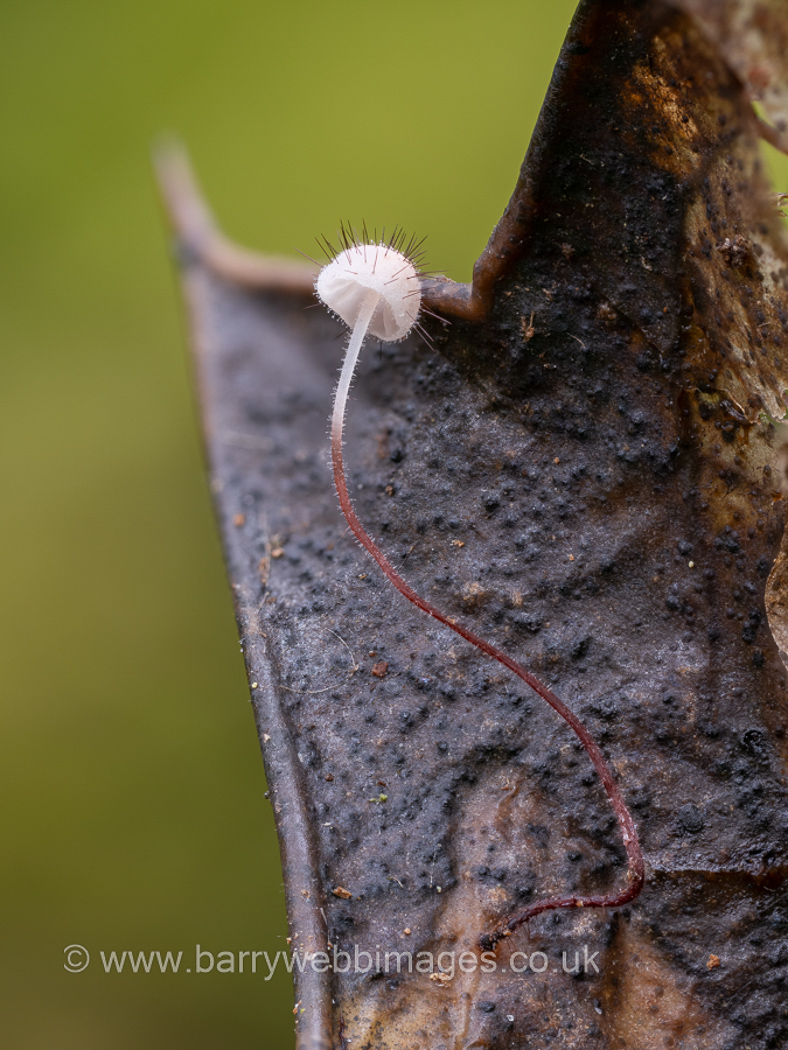 |
January 8th Marasmius hudsonii (Holly Parachute) Barry Webb and Gill Ferguson excel at finding this beautiful but tiny little mushroom, one that only occurs on dead Holly leaves and until recent years not known in the county. It is now a regular at Hodgemoor and a couple of other sites but today's find was the first for Burnham Beeches - much to Barry's delight as he, and others, have been searching for it in vain there until now! Previous finds |
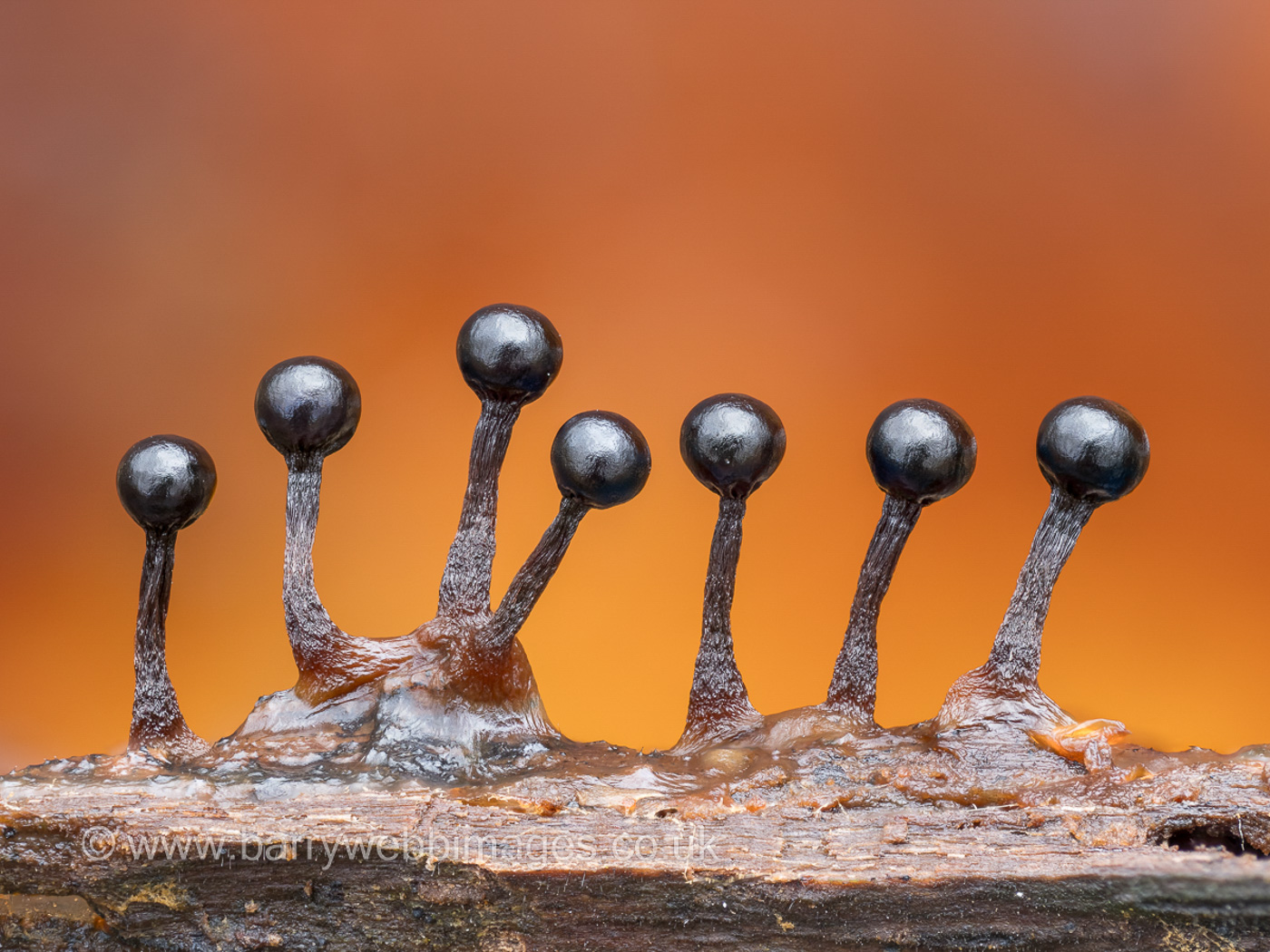 |
January 8th Metatrichia floriformis (a Slime Mould with no common name) In Hodgemoor Wood Barry Webb found this little cluster under a Holly bush. Though not yet mature enough to have opened out into its typical 'floral' shape, in this form it is already recognisable with its shiny black round top and blackish stalk (officially mushrooms have stems but slime moulds have stalks!). This is one of our commonest Slime Mould species and found (if you search carefully) on fallen rotten wood and woody debris of all sorts. Previous finds |
January 4th 2024
January 3rd 2024
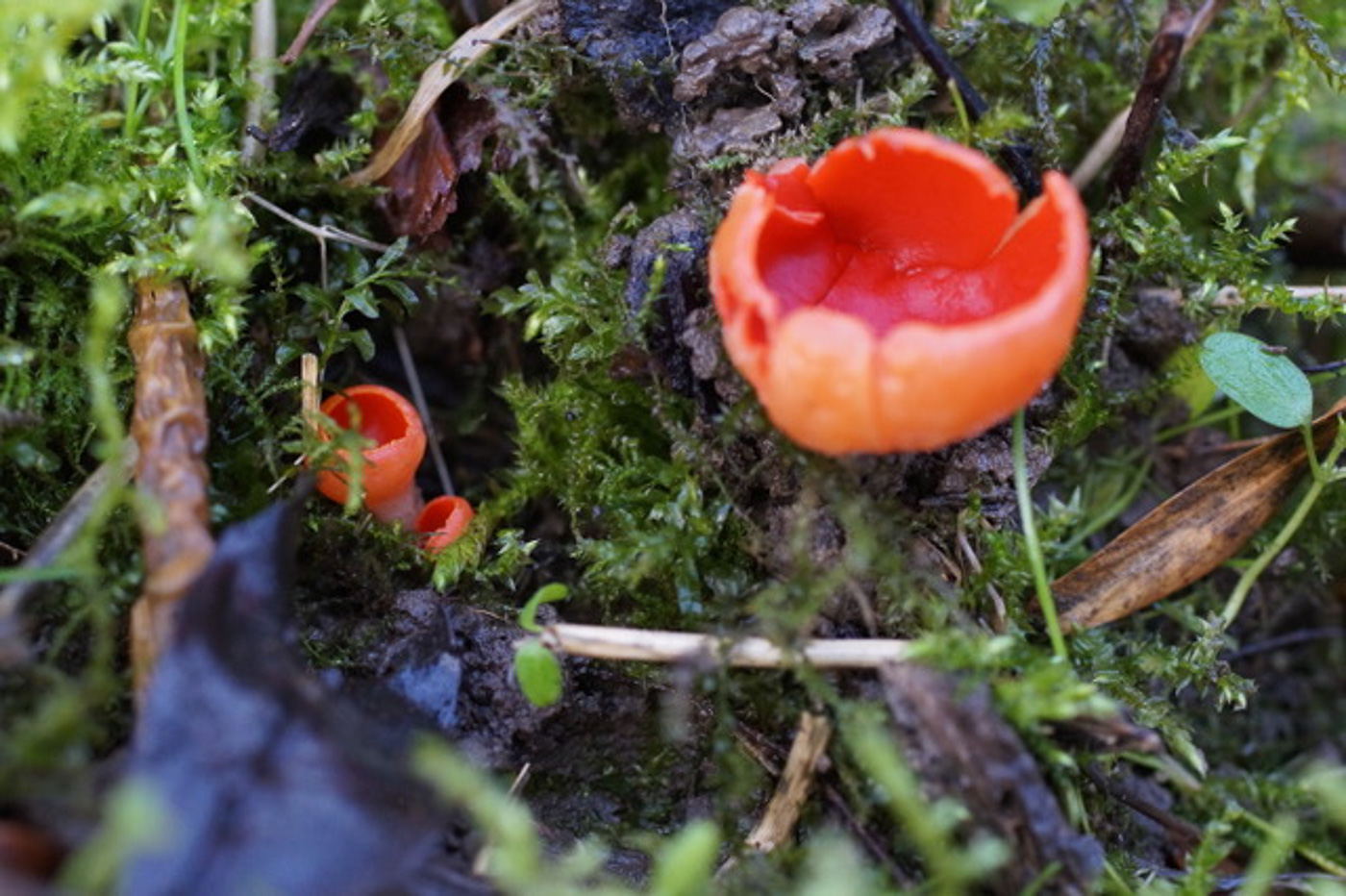 |
January 3rd Sarcoscypha austriaca (Scarlet Elfcup) An appropriate species to start off our 2024 entries! This little beauty was sent in by Bob Simpson, found in his Salden Wood in mossy woody litter, and is a species which thrives in damp conditions at this time of year. So it's no surprise it should be fruiting now, and in fact was also found a few days ago in Penn Wood (see December 29th in the previous Finds page). Previous finds |
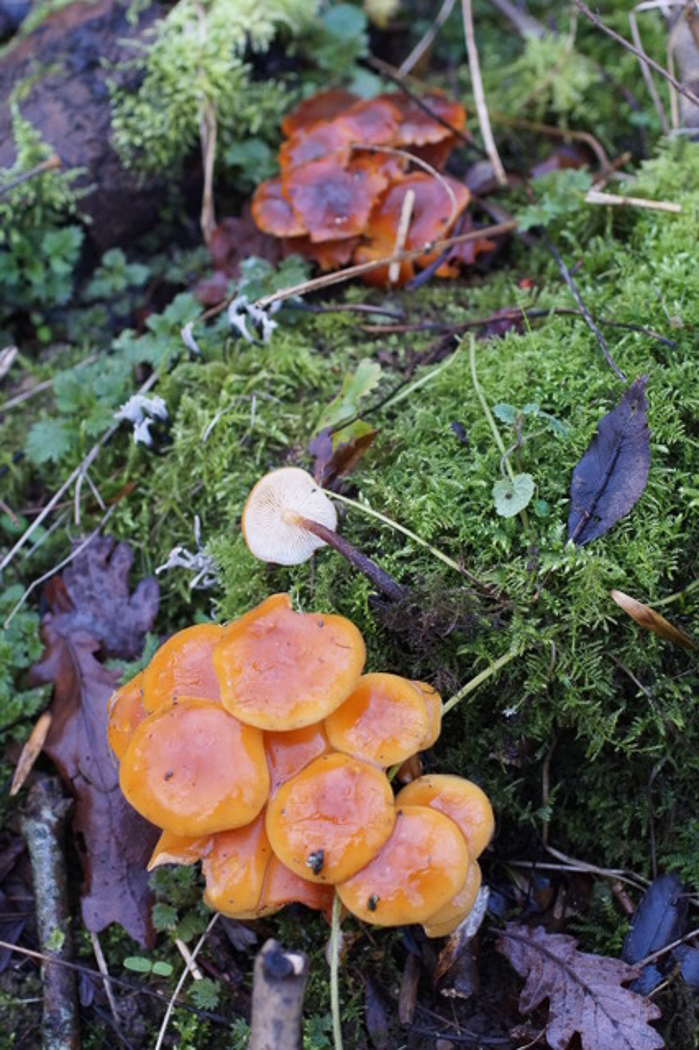
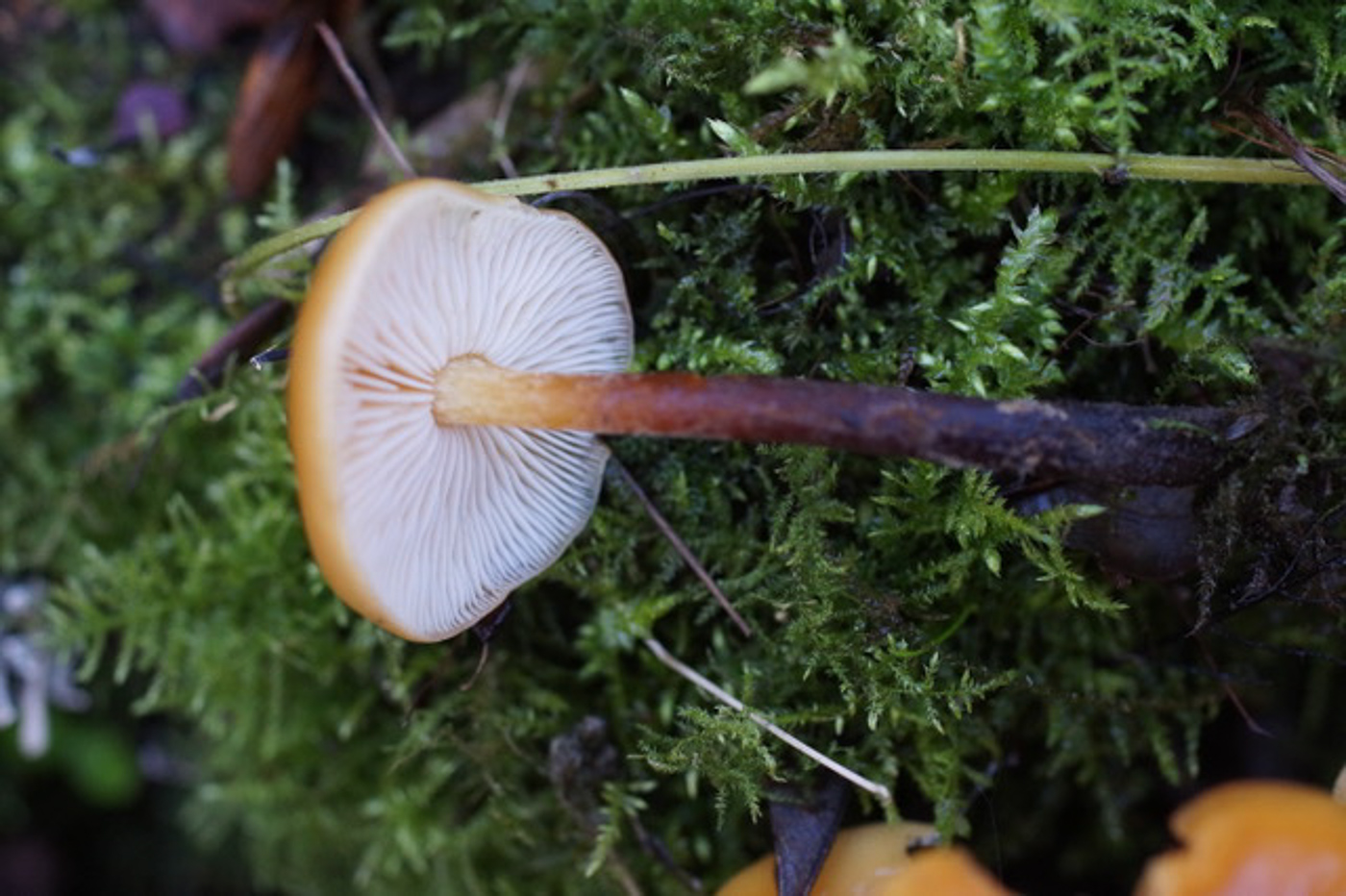 |
January 3rd Flammulina velutipes (Velvet Shank) On a moss covered broadleaf stump in Salden Wood Bob Simpson found this typically winter species. It favours deciduous wood, often tightly clustered on living trunks and flourishes in both frosty and snowy conditions. Caps are brightly coloured but the give-away feature is the dark lower stem which is finely furry. One to look out for at this time of year. Previous finds |
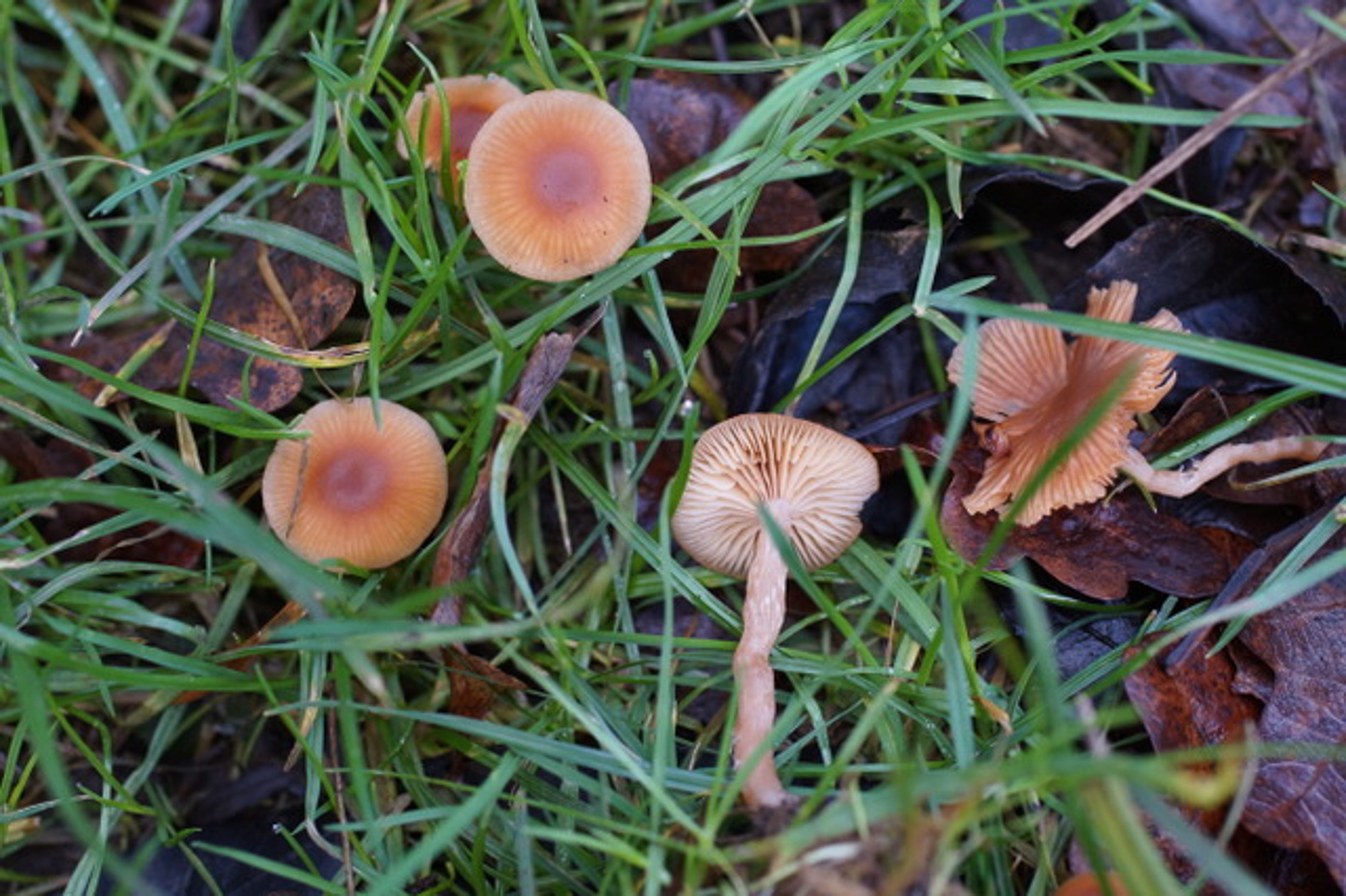
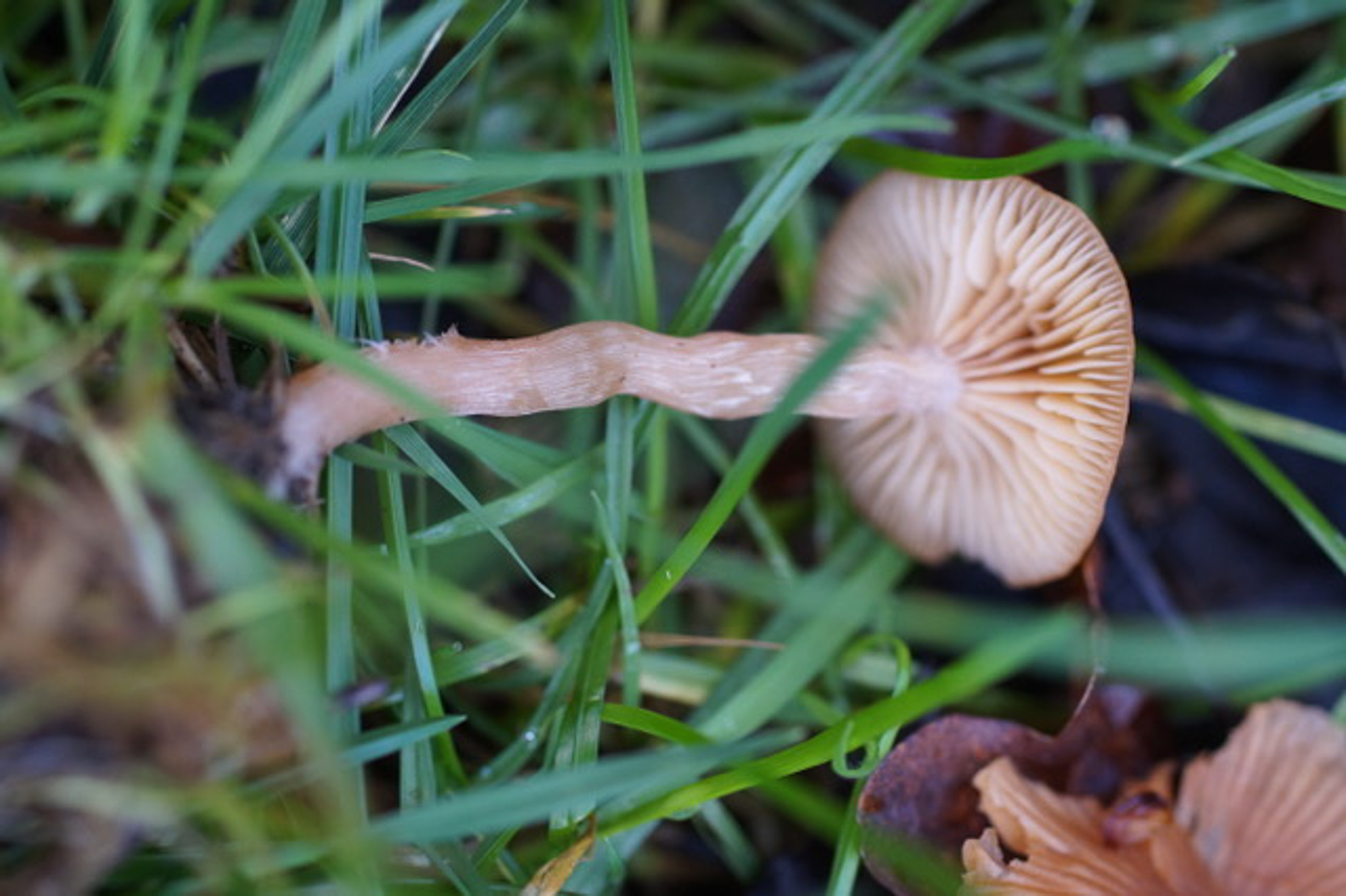 |
January 3rd Tubaria furfuracea (Scurfy Twiglet) In Salden Wood Bob Simpson found this very common mushroom in grassy soil at the woodland edge but was unsure of its identity. This is a typical LBJ which often causes doubt in the field, being initially somewhat similar to both Conocybe and Galerina in size and colour. It favours woody debris and can often be found in sheets covering a large area, but when single or in small groups it is less easy to recognise. It tends to have a duller more reddish and less yellow tinge that the two genera mentioned. The gills are possibly paler than in those genera and can quite often be slightly decurrent too. Previous finds |

